

The Cost of Travel in Japan: My 2024 Budget Breakdown
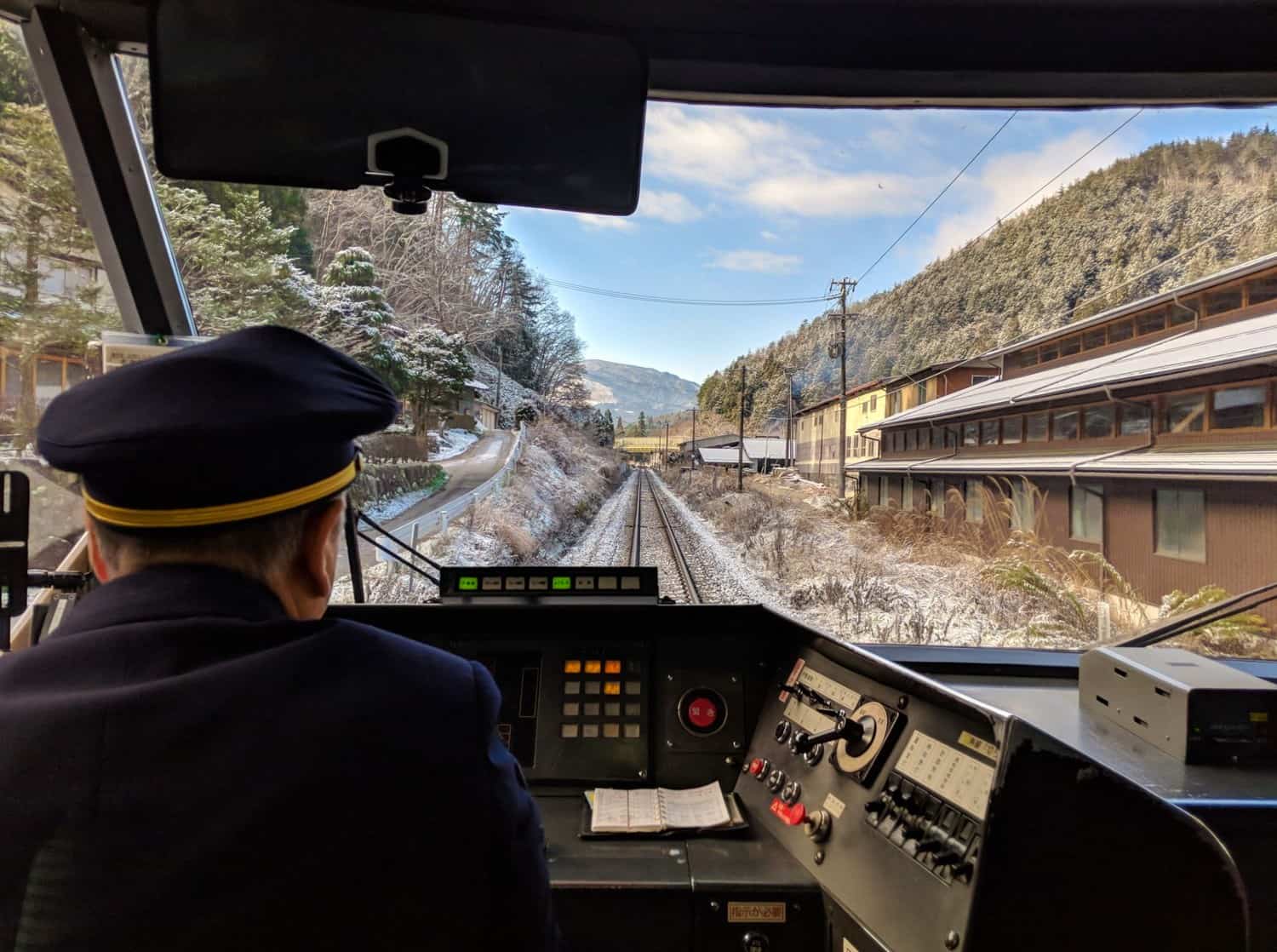
It took me six years to get to Japan.
I didn’t think I could afford it.
Every time I seriously looked into visiting, I would wince at the high cost of the train passes, read about how the hotels were super-expensive, and then fly to Vietnam instead. Or Taiwan. Or even Australia. Japan was simply too expensive for a budget traveller, so I decided to save it for when I was rich.
With that not happening any time soon, I decided to blow my money anyway, because I wanted to go and the gushing blog posts from travel writer friends had convinced me it would be worth the splurge.
Imagine my surprise, then, when I discovered that it really wasn’t that expensive.
I arrived in Japan fully expecting it to be the priciest country I’ve ever been to, but I discovered it’s more on a par with Western Europe or North America, and cheaper than Australia. It was way more affordable than Namibia , where my daily expenses came to $132, and way, way, way more affordable than the Democratic Republic of the Congo , where I averaged, um, $550 a day.
Anyway! This is about the cost of travel in Japan rather than my poor financial decisions, so let’s get started!
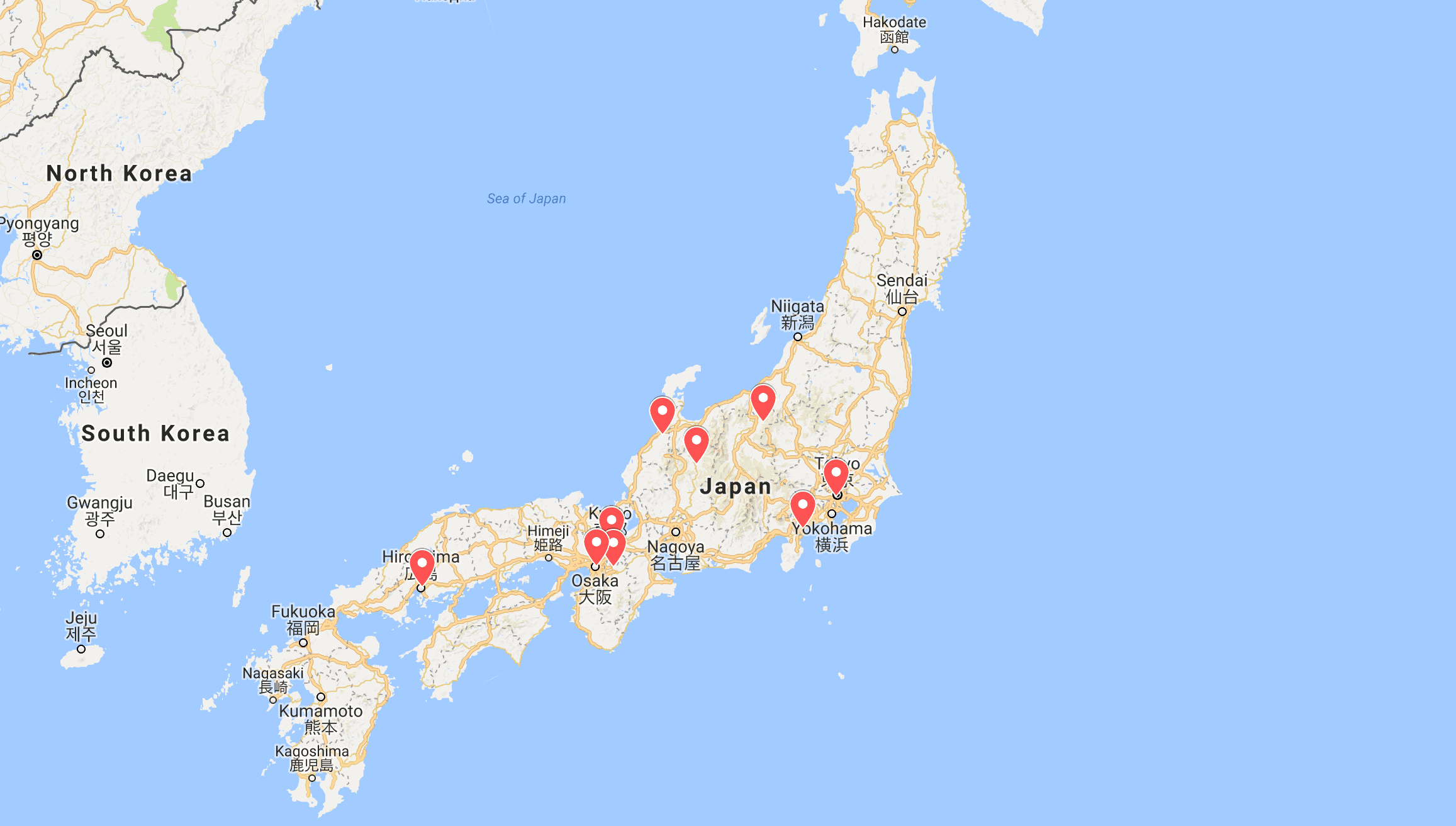
My 16-Day Japan Itinerary
Here’s a brief rundown of where I visited over my 16 days in the country — I think I managed to put together the perfect itinerary for first-time travellers to Japan .
Tokyo: 4 nights Hakone: 1 night Yudanaka: 1 night Kanazawa: 2 nights Takayama: 1 night Kyoto: 3 nights Hiroshima: 1 night Osaka: 3 nights
What’s Included in this Post
This budget breakdown covers how much I spent on accommodation, transportation, activities, food, and whichever miscellaneous items popped up while I was in country.
I’ve not included my flights into and out of Japan because this is going to vary significantly based on where you’ll be arriving from. In case you’re interested, though, I paid $320 for a return flight from Rome to Tokyo, which I scored through browsing my favourite site for flight bargains, Secret Flying .
The amounts in this guide are listed in Japanese Yen and U.S. dollars, simply because the vast majority of my readers are from the U.S. And finally, these are the three rules I always abide by on this site:
- I do not accept sponsored trips, so everything listed in this post is something I personally paid for with my own money
- I travel anonymously to ensure my experiences accurately reflect what yours will be. I don’t want special treatment!
- Every single word of this article was written by me, based on all of my own experiences. I strictly do not use AI to compose my guides.
Okay — let’s get started with my expenses.
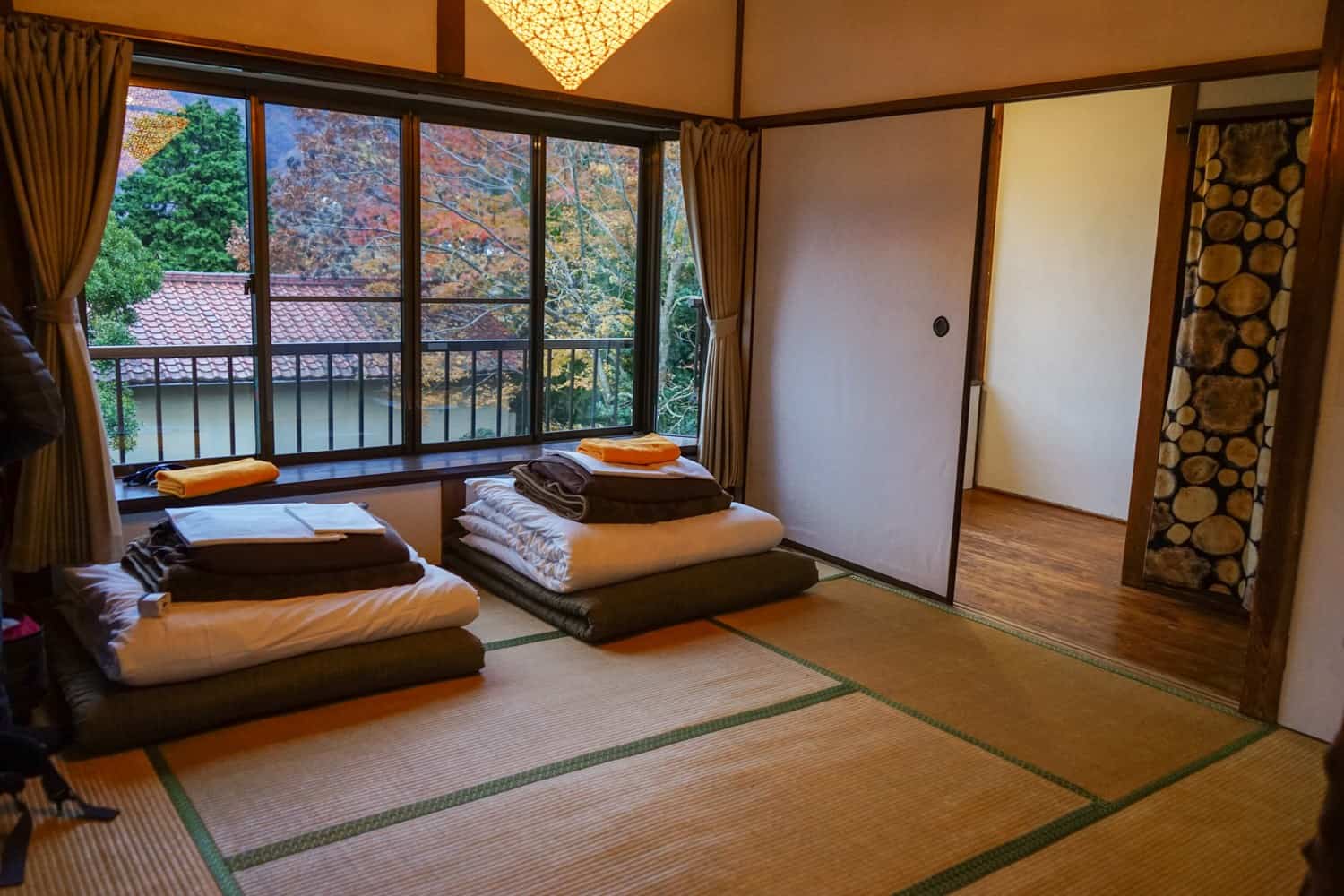
The Cheapest Accommodation Options in Japan
Like practically every country in the world, prices in Japan have increased post-pandemic.
In 2024, you’ll be paying a little more for everything than you would have done a few years ago — in fact, prices almost doubled between my first trip in 2017 and today! — however costs are still on a par with most Western countries. Travel in Japan shouldn’t be too devastating to your travel budget.
I’ll start on the lower end of the spectrum. If you’re willing to put in the time and effort, it’s possible to avoid paying for accommodation entirely.
Couchsurfing exists in Japan and allows you to stay with a local for free , usually sleeping on their sofa and enjoying a local’s insight into life in their country. Yeah, it’s not the most comfortable of living situations, but if your budget’s tight, it’s worth sending out a few requests to hosts to see if anything comes of it. You can browse through the 300,000+ Japanese hosts on the Couchsurfing site — just be sure to read the references of anybody you choose to stay with.
Housesitting is a more upmarket option, aimed at mid-range and luxury travellers. Housesitting involves taking care of somebody’s house for free while they’re away, often (but not always) looking after their pets, too. It’s best for long-term travellers or retirees, as you can’t pick and choose dates and destinations, so you’ll need to have a lot of flexibility as to where you go and at what time of year. If you do have that freedom, though, it’s a wonderful way to cut down your travel expenses, soak up some home comforts, and live like a local for a while. Trusted Housesitters is the main site for getting started with housesitting, as they have the highest number of listings.
Finally, when it comes to free accommodation, you could take a look at WorldPackers in Japan , where you’ll be able to volunteer for locals in exchange for food and board. There are some seriously cool options available on the site right now, from helping harvest honey for a bee farm in the countryside to lending a hand in the garden of a Buddhist temple. Readers of this site get a $10 discount for WorldPackers with the promo code neverendingfootsteps .
If you’re not looking to travel for free and just want a clean and comfortable room to sleep in, there are plenty of great budget options, too.
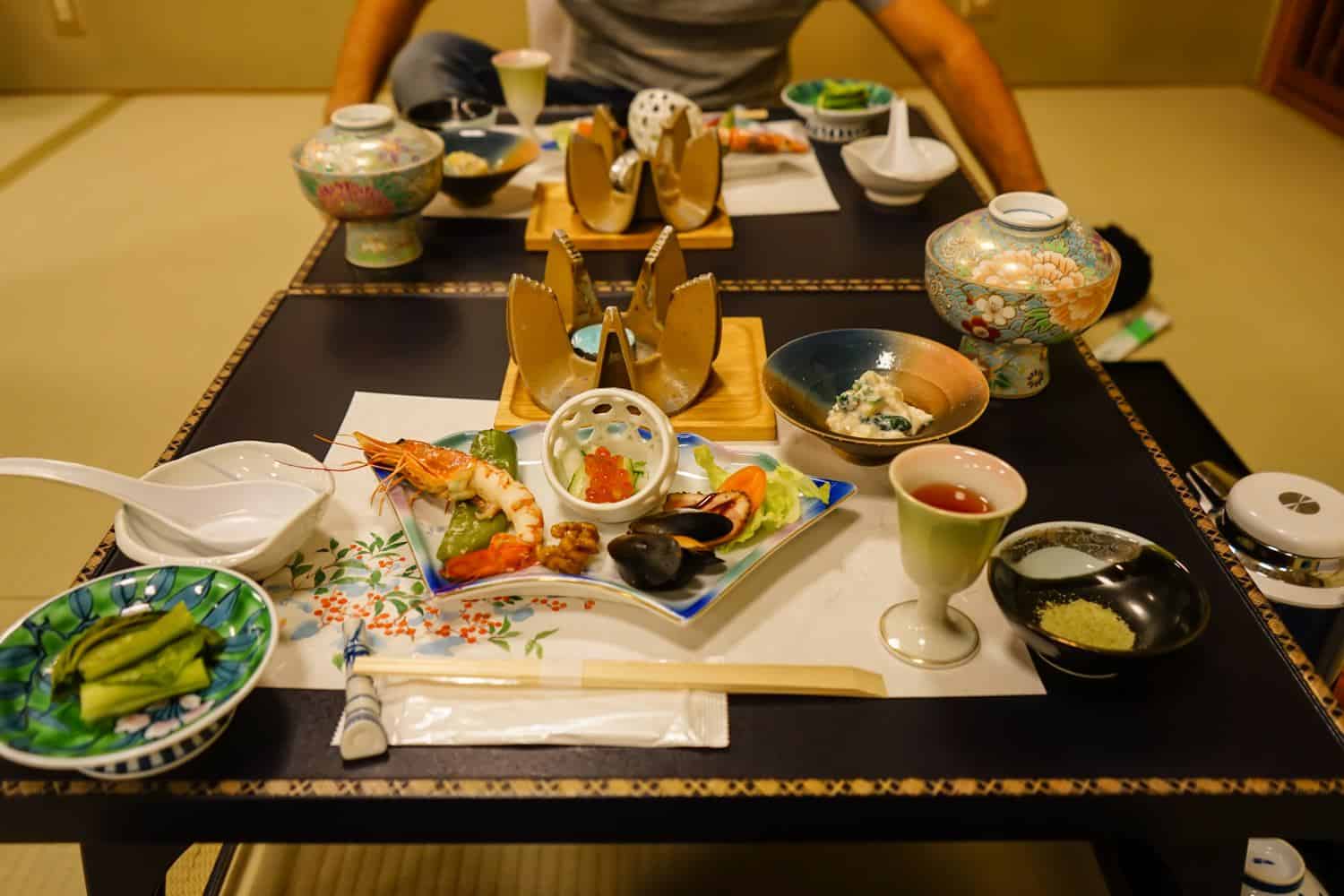
And then we have hostels . In Japan, you’ll come across hostels all over the country, finding them on tiny islands, large cities, and even within the national parks. They’re one of your best options for saving money.
Hostels in Japan are on a par with the rest of major cities in East Asia, and you can expect to spend $25 a night for a dorm bed for a well-reviewed hostel, with the price increasing slightly to around $45 a night for the absolute best of the best.
When it comes to private rooms in hostels, you’ll be looking at $50 a night for a clean, basic room in a good location, so if you’re travelling with friends or with your partner, you may find it cheaper to grab some privacy over settling for two beds in a dorm room. $90 a night will get you an exceptionally well-reviewed private room in a hostel.
I use HostelWorld to find the cheapest hostels, as they tend to have the greatest number of listings at the lowest prices.
And then there are hotels, which I’m going to jump into next.
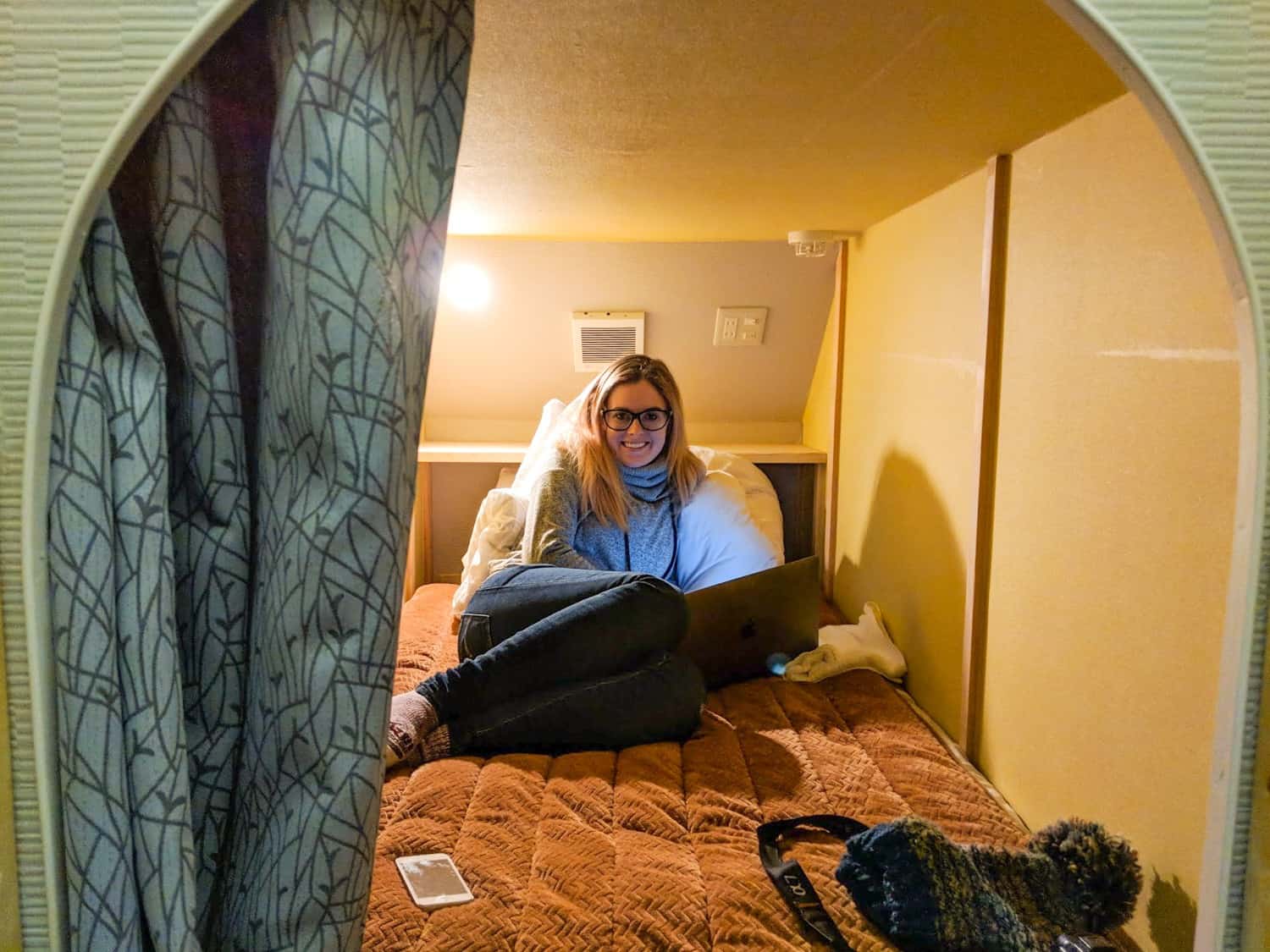
The Cost of Accommodation in Japan
There are so many different types of accommodation in Japan! I attempted to experience as many as possible while I was in the country.
I stayed in a capsule hotel, prioritised hunting down a ryokan, slept on a tatami mat floor, stayed in family-run guesthouses, and checked out some pretty cool hostels. While I did attempt to save money by staying in some cheaper places, I was also happy to splurge on extremely well-rated rooms, too.
As always with these budget breakdowns, I like to share the prices of where I personally stayed, along with a description of the property and whether I’d recommend choosing it, too — hopefully this helps make your trip planning easier!
I visited Japan with my partner, Dave, and we travelled on a mid-range budget; searching out good value accommodation that was highly-rated and in a central location. We prioritised locally-run properties that weren’t too flashy or fancy; for us, a cosy vibe, unique furnishings, and welcoming staff are far more important than the generic decor of a hotel chain.
(Oh and just a quick note: hotels do charge different prices across a range of dates, depending on how busy a certain travel period is going to be. Because of this, it’s hard to be super accurate in the costs that I list. To get to the quoted prices below, though, I looked at the rates across the next six months and took the average: it could be slightly cheaper or more expensive, depending on when you’re visiting.)
Tokyo: $135 a night Odds are, you’re probably going to kick off your Japan adventures in Tokyo, and if so, it only makes sense to really throw yourself into the local experience. That’s why we decided to stay at this lovely onsen-ryokan in Shinjuku. (Whenever readers ask me which neighbourhood to choose in Tokyo, I always recommend Shinjuku or Shibuya.) The reason why I loved this specific property, though, is because it’s a ryokan (traditional Japanese Inn) that also has an onsen (hot pool). It’s a great way to jump immediately into all things Japanese.
And it was wonderful; my favourite hotel in the country. The rooms were small and cosy and felt super-traditional and calming. The views over Tokyo at night from the window were incredible. And the rooftop onsen? With free popsicles afterwards? So good. It’s located in a quieter neighbourhood, but still only a 10-minute walk to the subway. I really recommend this one!
Hakone: $80 a night In Hakone, we opted for a private room in a lovely guesthouse , with a tatami mat floor to sleep on and a private onsen on-site. The photo of the tatami mat room above is of our room here. It ended up being another one of our favourite stays in Japan! The staff were lovely and there was a restaurant/bar that served up fantastic pizzas. It had a cosy and chilled-out atmosphere, with great food and wine, and lots of blankets to snuggle up with as we ate. It was also worth staying here just to experience the private onsen — we got to go in as a couple!
Yudanaka: $105 per night In Yudanaka, we opted for a stay in a wonderful little ryokan ; this one was even more traditional than the one in Tokyo! Often, ryokans can be super-expensive in Japan — as much as $500 a night for the experience — so I was thrilled to have stumbled across a more budget option in Yudanaka. It was run by an adorable Japanese couple and their house came with a private onsen, return transport to see the snow monkeys , and one of the most extravagant meals of my life. A kaiseki is a multi-course (like, 20 courses) meal that will see you eating roughly a week’s worth of food in a single night, sampling fresh, local-to-the-region Japanese cuisine. It was phenomenal, and I loved having no idea what anything was. It even included homemade plum wine, which was so good! I highly recommend the experience (although strongly advise you not to add breakfast to your booking — we were still so full that we couldn’t eat any of it!)
Kanazawa: $65 per night Kanazawa is home to some seriously cool accommodation! We had a hard time choosing where to stay because every property looked so cosy and inviting. In the end, we settled on this minimalist, modern set-up — it was great value for money relative to most other places we stayed in Japan, especially when you consider it’s only been open a year. It’s in a great location, right outside Omicho Market, where you’ll sample the best sushi of your life. Also within walking distance is Kanazawa Castle and Kenroku-en Garden, so you’re really staying in the heart of it all. I recommend signing up for the traditional Japanese breakfast, as you’ll likely not have had anything else like it before! There’s also an onsen and laundry facilities (always appreciated mid-trip!), and the staff were so sweet and kind.
Takayama: $76 per night In Takayama, we stayed in a small, locally-run guesthouse in the centre of town. It felt like particularly good value for Japan, as it was one of the few places we stayed that you could describe as spacious! It even had a kitchen and washing machine. The beds were comfortable and the hotel was within walking distance of everywhere, including the train station. It was quiet, the staff were lovely, and overall, it made for a comfortable stay!
Kyoto: $84 a night In Kyoto, we stayed in a cosy hotel in the heart of town — we loved this place so much in 2017 that when we returned to Japan this year, we knew we’d have to stay there again! The property was in a fantastic location for exploring Kyoto and the bathrooms were nicer than anywhere else we stayed. It’s one of the top-rated guesthouses in the city — while also being one of the cheapest — so when you take that into consideration, I’m convinced you won’t find anywhere better to stay in Kyoto.
Hiroshima: $40 per bed In Hiroshima, we opted for a capsule-style hostel because I didn’t want to leave the country without trying one — you can see a photo of the “capsule” at the top of this section. Fortunately, we found ourselves in a room with only two other people staying there, so our capsule room with 20-odd beds was light on snorers. The owner of this place was ridiculously lovely and it was within walking distance of all of the monuments and activities. Really great bathrooms, a fun common area, and a cheap price: surprisingly, I would have stayed another night!
Osaka: $108 a night I rounded off my time in Japan with a little bit of a treat, opting for this four-star hotel that offered a ton of freebies. It’s all about the onsen here — it’s open all day and is simply beautiful. After you’ve finished your daily bathe, there’s free ice cream to eat, free comics to read, massage chairs to relax in, and even free ramen to slurp on. Yes, really! It was in a great location for Osaka — just a couple of blocks from the nearest metro station. The decor was calming and traditional; the perfect way to say goodbye to Japan.
In total, I spent an average of $97 per day on accommodation over my 16 days in Japan.
The Cost of Transportation in Japan
Okay, so let’s talk about transportation now. And specifically transportation post-2024.
It used to be the case that practically every visitor to Japan would invest in a JR pass (a train pass that grants you unlimited rides over a certain time period). After all, the best way to explore this country is by train, and by buying said rail pass, you’d be saving a significant amount of money on your trip — especially if you were taking a similar route to my one. A JR Pass pre-October 2023 would have saved me a whopping $175 over buying individual train tickets.
Seems like a no brainer, right?
In October 2023, the Japan Rail Pass skyrocketed in price. No exaggeration here: prices increased by an incredible 70% .
What a baffling decision.
What that means is that it’s not such a clear-cut decision anymore. The Japan Rail Pass still holds some benefits: If you’re a first-time visitor to Japan and don’t feel too confident about buying multiple single-journey train tickets, the pass will make it a lot easier: you just show it at any station and get on a train. You won’t need to worry about any extra charges and will have the flexibility to take train-based day trips whenever you want.
For most travellers, however, the value proposition is simply no longer there. For example, my recent 16-day itinerary (Tokyo – Hakone – Tokyo – Nagano – Kanazawa – Takayama – Kyoto – Nara – Kyoto – Hiroshima – Osaka) cost me 50,000 Yen ( $350 ) with single tickets. However, a 14 day rail pass is priced at 80,000 Yen ( $530 )!
Alas, the Japan Rail Pass is no longer something I recommend — unless you’re going to be taking enormous, lengthy rail journeys (like across the whole country) in a short period of time. Alternatively, if you do want that added sense of security and ease by not having to juggle a dozen train ticket bookings, you may find the extra price worth it.
So with all that being said: you’re most likely going to be using the JR West website to book your single train tickets online. This covers the entirety of Japan that’s west of Tokyo (all of the places I visited were west) and allows you to book your train tickets all in one place — and then you can reserve a seat on said train one month before its departure date. Honestly, it’s pretty easy to use, book, and reserve — and being able to do it all online means you can get everything sorted before you step foot in the country.
Let’s take a look at the some of the prices that a typical train journey in Japan costs — in this case I’ll use my itinerary mentioned above to plot out the costs:
Tokyo – Hakone: 2,500 Yen ( $17 ) Hakone – Tokyo: 2,500 Yen ( $17 ) Tokyo – Nagano: 7,500 Yen ( $50 ) Nagano – Kanazawa: 8,500 Yen ( $57 ) Kanazawa – Takayama: 5,000 Yen ( $33 ) Takayama – Kyoto: 9,000 Yen ( $60 ) Kyoto – Nara: 700 Yen ( $5 ) Nara – Kyoto: 700 Yen ( $5 ) Kyoto – Hiroshima: 10,500 Yen ( $70 ) Hiroshima – Osaka: 10,000 Yen ( $67 )
So if you were to replicate my Japan route exactly, you would end up spending $381 on rail tickets. It sounds like a lot of money but I do want to stress that the trains in Japan are some of the best in the world. They’re spotless, comfortable, modern, and lightning-fast. You will feel like you’re travelling in luxury.
If you’re not down to spend hundreds of dollars on trains, then the buses are going to be your best option. They’re cheaper, slower, less comfortable, often run overnight, and are complicated to book. The best sites I’ve found for booking long-distance buses is Willer Express and Japan Bus Online — but even they don’t run buses for several of the routes I took on my trip.
I thought it would be a good idea to share the cost of buses for the trip I took, so that you can compare them to the train and see how much money you could save.
Tokyo – Hakone: 2,250 Yen ( $15 ) Hakone – Tokyo: 1,800 Yen ( $12 ) Tokyo – Nagano: 2,200 Yen ( $15 ) Nagano – Kanazawa: No bus for this route Kanazawa – Takayama: 3,300 Yen ( $22 ) Takayama – Kyoto: 3,800 Yen ( $25 ) Kyoto – Nara: No bus for this route Nara – Kyoto: No bus for this route Kyoto – Hiroshima: 4,300 Yen ( $29 ) Hiroshima – Osaka: 4,000 Yen ( $27 )
As you can, see prices are generally around half what they are for the trains. You’d be looking at paying $212 in total for taking the bus, with three trains replacing the routes where I couldn’t find any existing buses.
We’ve covered the main ways to get in between the destinations, so now it’s time to take a look at how much you could spend on transportation within the cities.
Fortunately, this was where I found Japan to be really affordable. I love to explore cities on foot and I found many of the places I visited to be surprisingly walkable. In total, I spent $6 on the metro in Tokyo, $7 on the metro in Osaka, and $2 on the metro in Kyoto! Everywhere else, I just walked.
A reasonably big expense was our Hakone Free Pass (spoiler: not free), although this was more of a combined transportation and activity cost. At a cost of 6,100 Yen, or $41 , It provides you with unlimited transport around Hakone (where you’ll find Mount Fuji), and discounted entrance to all the attractions in town. If you’re going to Hakone, this will save you money because it covers everything you’ll definitely do there.
The Cost of Food in Japan
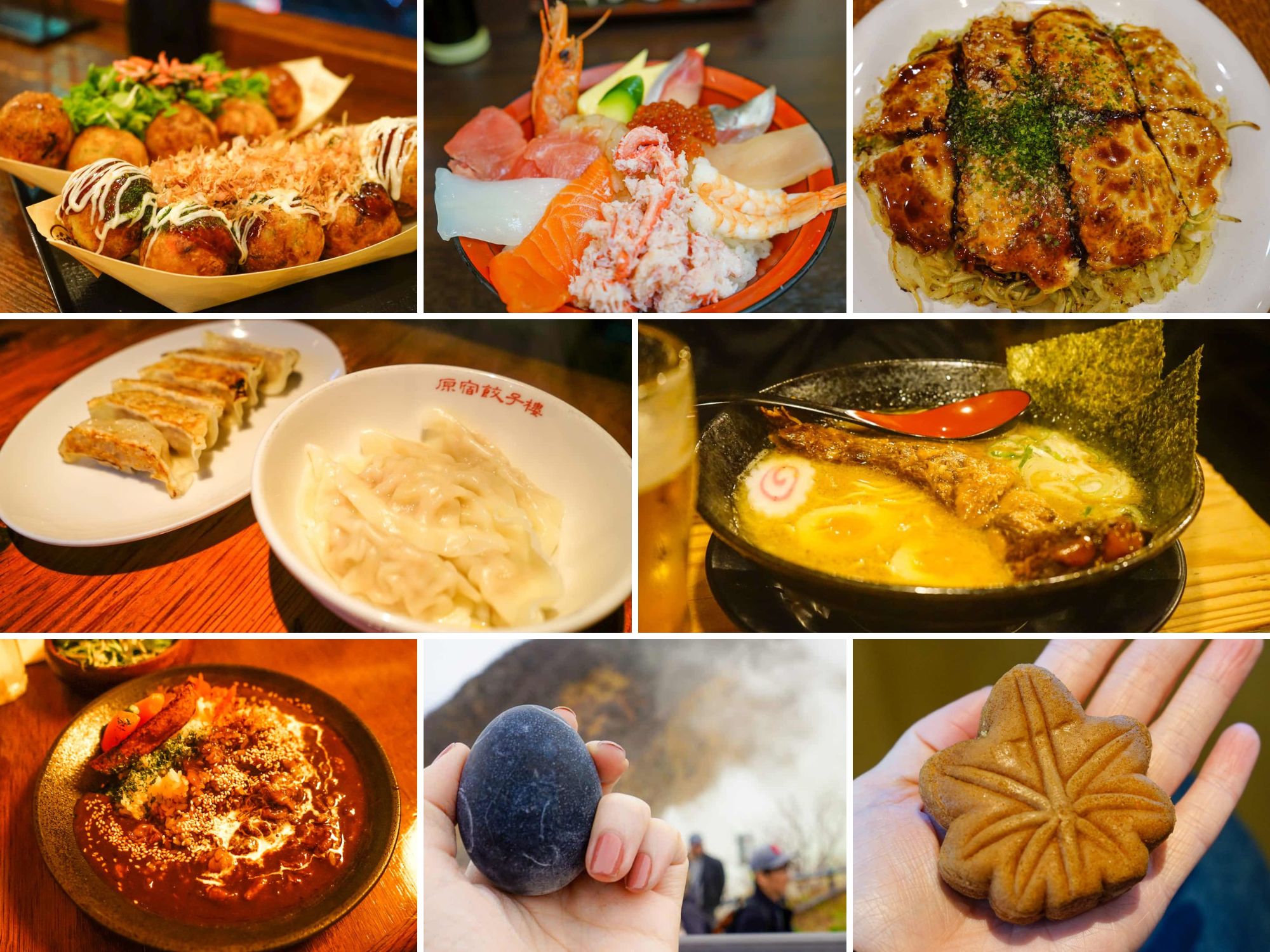
If you love Japanese food but have yet to travel to its homeland, you have such a treat in store for you. The food in this country is phenomenal; packed full of flavour and surprisingly inexpensive. It’s true: eating out is the easiest way for you to cut costs in Japan.
In fact, the vast majority of my meals in this country came to less than ¥1000 ($6.50) .
I’ll start first by breaking down the typical costs that you can expect to spend on the most well-known of Japanese dishes. Then, I’ll cover what you’ll be likely to eat for breakfast, lunch, and dinner, along with the costs associated with each of these meals. Finally, I’ll round out the section off by sharing some of my favourite food experiences in the country and describe which options are worth a splurge and which ones you can happily skip.
You can’t think of Japan without picturing sushi, so that feels like the most logical place to start. If you eat fish, this is going to be such a revelation for you! The sushi and sashimi in Japan is better than any I’ve had in the world and it was here that I finally understood how raw fish could ever be described as buttery.
To combine your sushi/sashimi-eating with a cultural experience, head to Tsukiji Outer Market in Tokyo or Omicho Market in Kanazawa. For a bowl filled with a selection of sashimi, like in my photo above, you’ll pay between ¥1,800 and ¥4,000 , depending on the size and quality of the fish. That’s the equivalent of $12-$25 .
Slurping on a steaming bowl of ramen is my personal definition of a true travel joy, so I opted for this cheap and cheerful dish most evenings as a way to save money. Note: the ramen in Japan is incredible , so don’t interpret my frugality as a hardship. Once you’ve tried the ramen here, I’d be surprised if you didn’t immediately start planning a return visit.
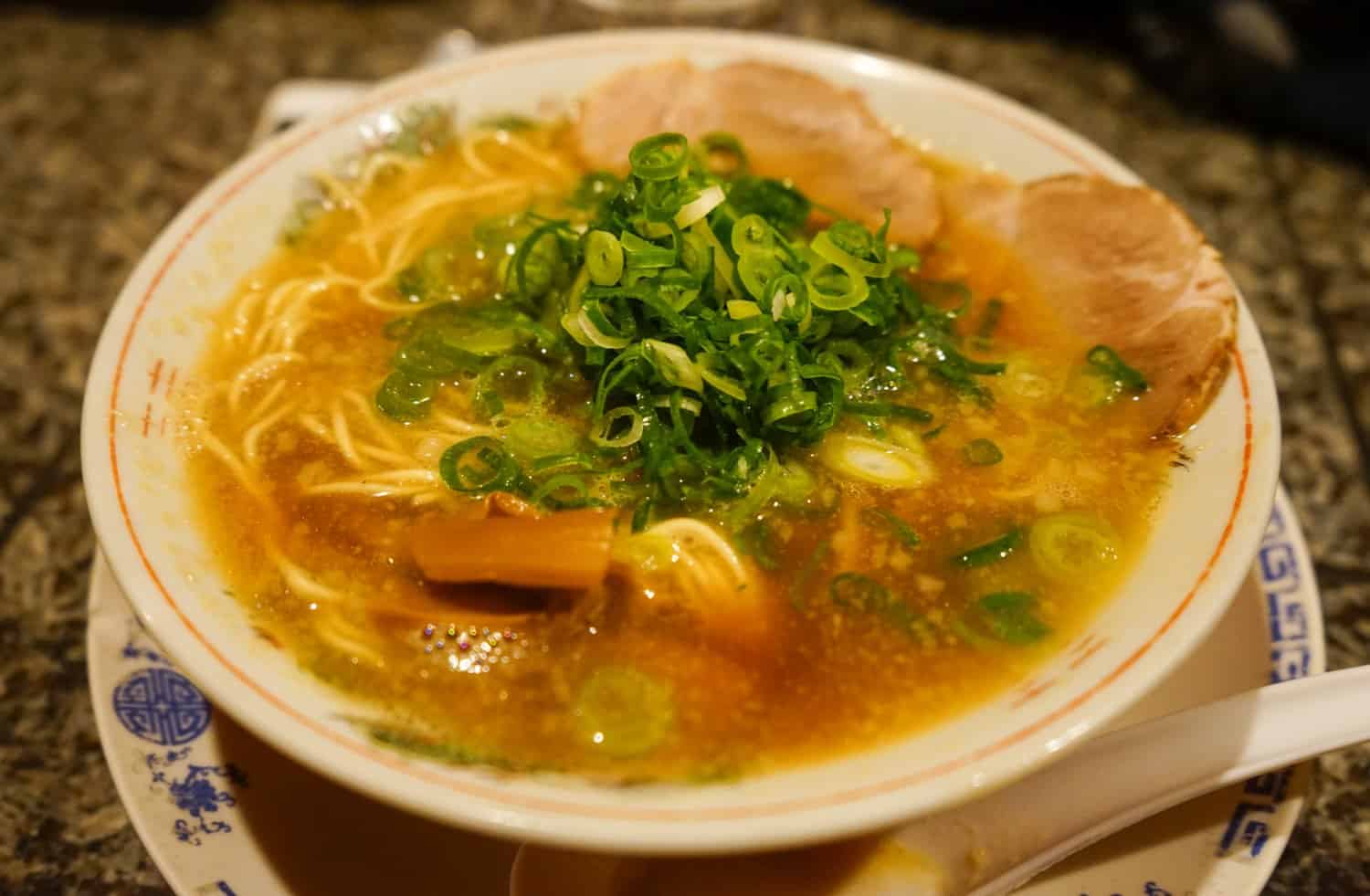
One of my favourite aspects of ordering ramen in Japan is how you’re given the option to customise the dish to your own tastes. It’s not uncommon to be handed a small slip of paper where you’ll get to mark down all of your preferences. Do you want your broth to be rich or light? Your noodles to be firm or soft? Added spiciness or none at all? Extra spring onion? A hard- or soft-boiled egg? Most options come out to ¥1000 ($6.50) for a bowl of pork ramen.
Speaking of cheap and delicious food options, I highly recommend sampling a couple of versions of okonomiyaki while you’re in town. This savoury pancake dish is so delicious, extremely filling, and inexpensive at just ¥1000 ($6.50) – ¥1500 ($10) . The cities of Osaka and Hiroshima each offer up their very own version of okonomiyaki and strong opinions are held by many over which is best! If you’ll be heading to both destinations, make sure you try one of each and let me know which is your favourite.
A dish that I tried for the first time while I was in Japan was Japanese curry and what a wonderful experience that turned out to be! In comparison to Indian curries, I found the Japanese version to be richer, sweeter, and less creamy, with plenty of umami vibes. Once more, you can expect to pay ¥1000 ($6.50) for a plate of katsu (pork cutlet) curry.
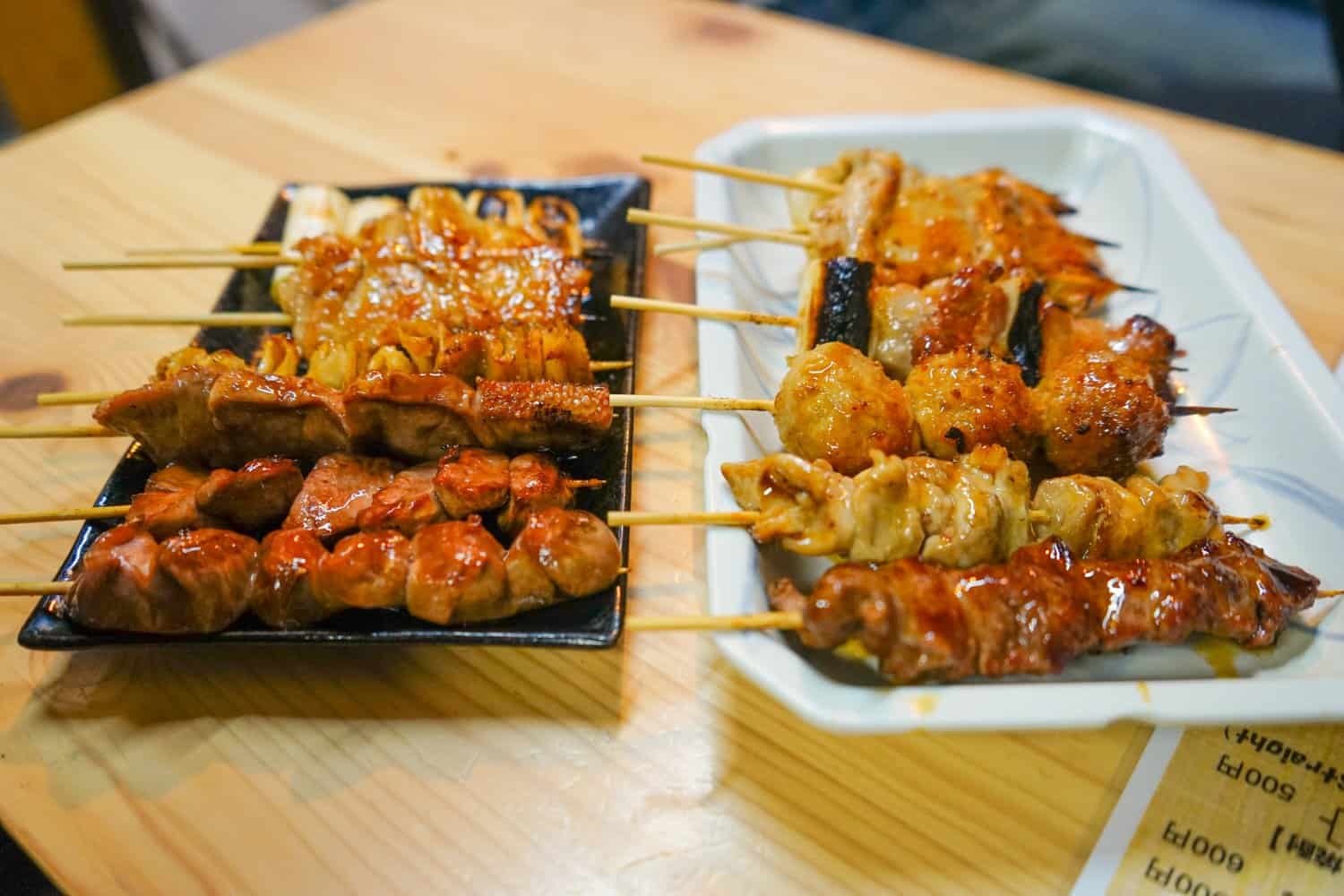
One of the most delightful aspects of my Japanese eating experiences was sampling all of the different snacks in the country.
Street snacks like takoyaki were ¥500 ($4.50) . We splurged on our kaiseki experience at our guesthouse in Yudanaka and paid ¥4000 ($36) for our food extravaganza. It’s a budget option compared to many other kaisekis, which can easily come to $100 for the experience, but still our most expensive meal. Another splurge was on sushi in Kanazawa, which I paid ¥2000 ($18) for.
Whether you’re on a budget or ready to splurge, it’s essentially impossible to eat badly in Japan. If you’re on a really tight budget, you can even get surprisingly decent food from 7-Eleven !
My total cost of food in Japan averaged out to $23.20 per day.
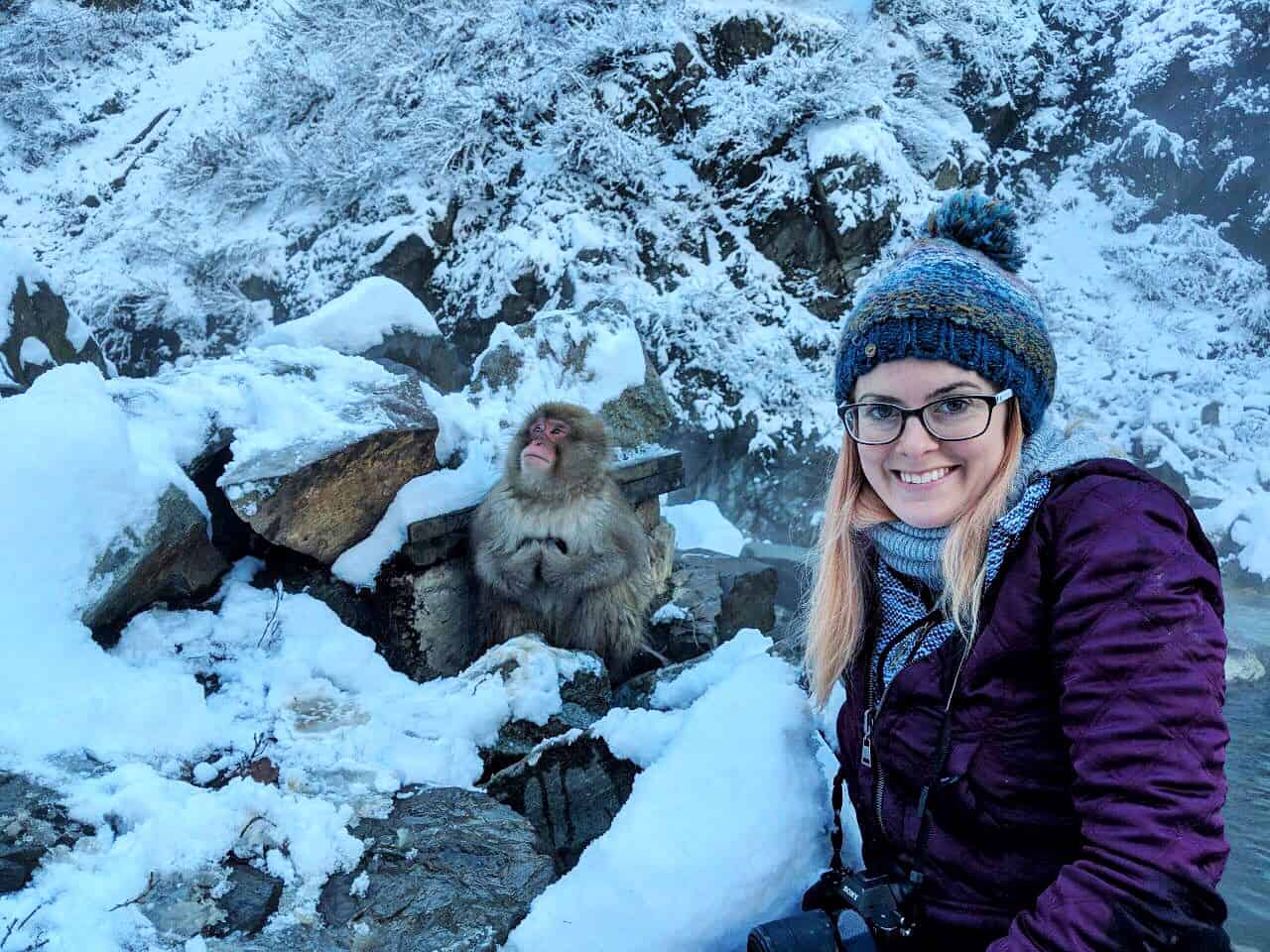
The Cost of Activities and Entrance Fees in Japan
Activities and entrance fees in Japan were very reasonably priced, and I never found myself outraged over the cost of anything. You’ll typically pay less than $5 to enter most temples, museums, and gardens.
Here’s how I spread my cash around:
Entrance fee for the hedgehog cafe in Tokyo: $13/1400¥ Entrance to the Snow Monkey Park : $7/800¥ Entrance to Kenroku-en gardens in Kanazawa: $3/310¥ Entry to the Golden Pavilion in Kyoto: $3/300¥ Entry to Ryoan-ji zen garden in Kyoto: $5/500¥ Ticket for the Hiroshima Peace Memorial: $2/200¥
My total cost of activities in Japan averaged out to $2 a day.
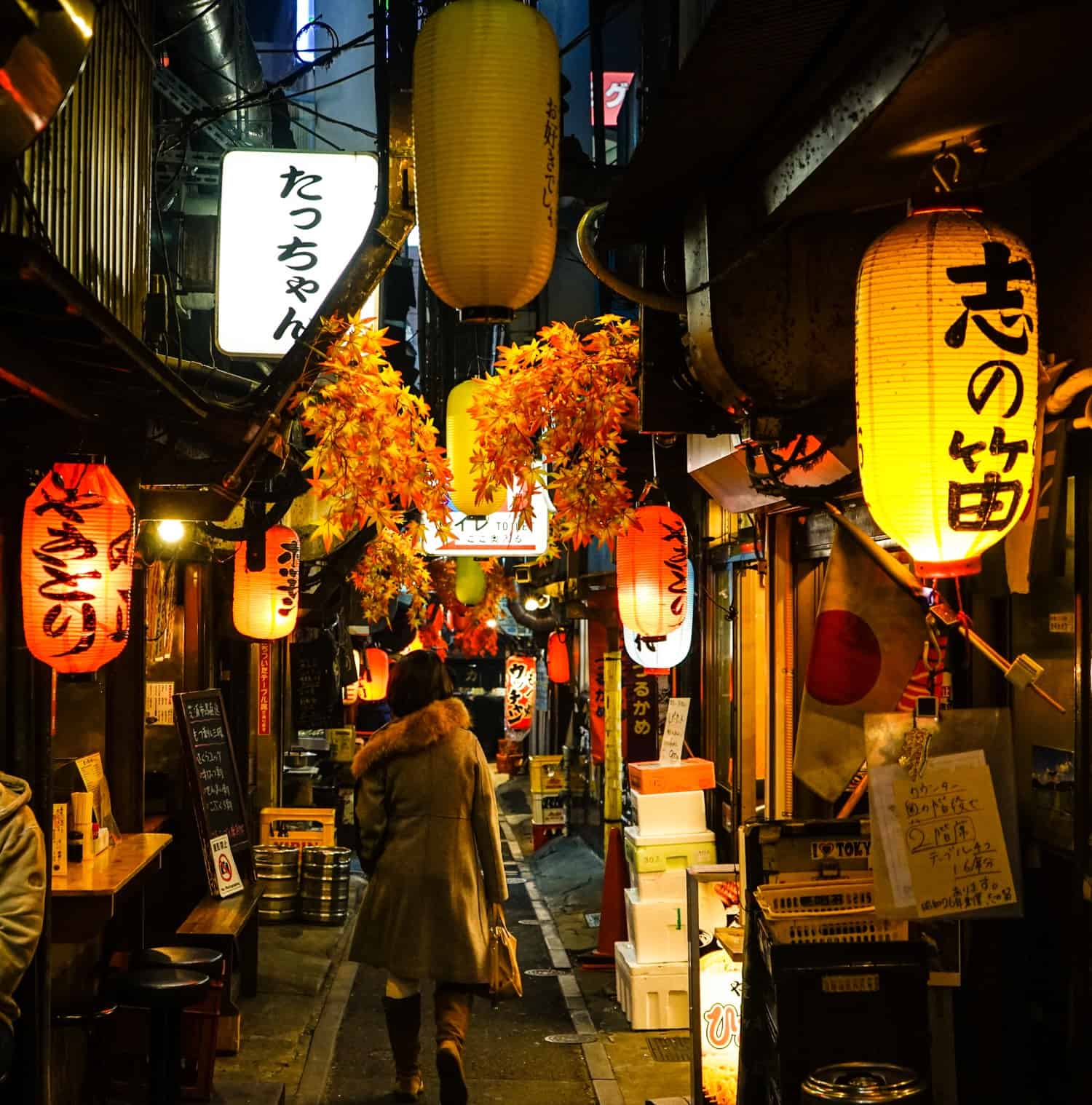
Miscellaneous Expenses in Japan
A local SIM card: $14
I mentioned above that I was able to buy a local SIM card when I purchased my rail pass. If you aren’t going to be using a rail pass in Japan, I recommend taking a look at Airalo instead. Airalo is a company that sells local e-SIM cards for travellers. What that means is that you can buy a virtual SIM card online before you arrive in Japan, and then as soon as you land in the country, can switch on your data and start using it.
It’s worked flawlessly for me and I’ll never go back to physical SIM cards. It’s just so easy! You’ll pay $6 for 1 GB of data or $14 for 3 GB for Japan and can also top-up through the Airalo app.
If you’re going down the Airalo route, just make sure your phone is e-SIM compatible first (all recent iPhones and many Androids are).
Insight Guides guidebook to Japan: $10
My sister bought me this guidebook as a gift before I left for Japan and at first I was like, Insight Guides? Meh. I wish she’d got me the Lonely Planet instead. Then when I opened it up and started reading, I swiftly discovered that Insight Guides are my new favourite guidebook company. It was so, so useful!
What I love about Insight is that their books focus heavily on the history and culture of Japan, with big, beautiful pictures, tons of information about local customs, food, and how to travel responsibly and respectfully. I recommend picking up a copy before your trip to Japan, but not taking it to the country with you — they’re big and heavy, so this is one for inspiration, planning, and education.
Luggage storage at Snow Monkey Park near Yudanaka: ¥500 ($4.50)
We had our backpacks with us when we visited the snow monkeys, so utilised the on-site storage facility while we hiked up the mountain in the snow. You can also hire snow shoes and winter gear if you’re unprepared for the climb, but I was fine in my totally impractical sneakers.
Travel insurance for 16 days in Japan: $60
If you’ve read any other posts on Never Ending Footsteps, you’ll know that I’m a great believer in travelling with travel insurance. I’ve seen far too many Go Fund Me campaigns from destitute backpackers that are unexpectedly stranded in a foreign country after a scooter accident/being attacked/breaking a leg with no way of getting home or paying for their healthcare. These costs can quickly land you with a six-figure bill to pay at the end of it.
In short, if you can’t afford travel insurance, you can’t afford to travel.
Travel insurance will cover you if your flight is cancelled and you need to book a new one, if your luggage gets lost and you need to replace your belongings, if you suddenly get struck down by appendicitis and have to be hospitalised, or discover a family member has died and you need to get home immediately. If you fall seriously ill, your insurance will cover the costs to fly you home to receive medical treatment.
I use SafetyWing as my travel insurance provider, and recommend them for trips to the Japan. Firstly, they’re one of the few companies out there who will actually cover you if you contract COVID-19. On top of that, they provide worldwide coverage, don’t require you to have a return ticket, and even allow you to buy coverage after you’ve left home. If you’re on a long-term trip, you can pay monthly instead of up-front, and can cancel at any time. Finally, they’re more affordable than the competition, and have a clear, easy-to-understand pricing structure, which is always appreciated.
With SafetyWing, you’ll pay $1.50 a day for travel insurance.
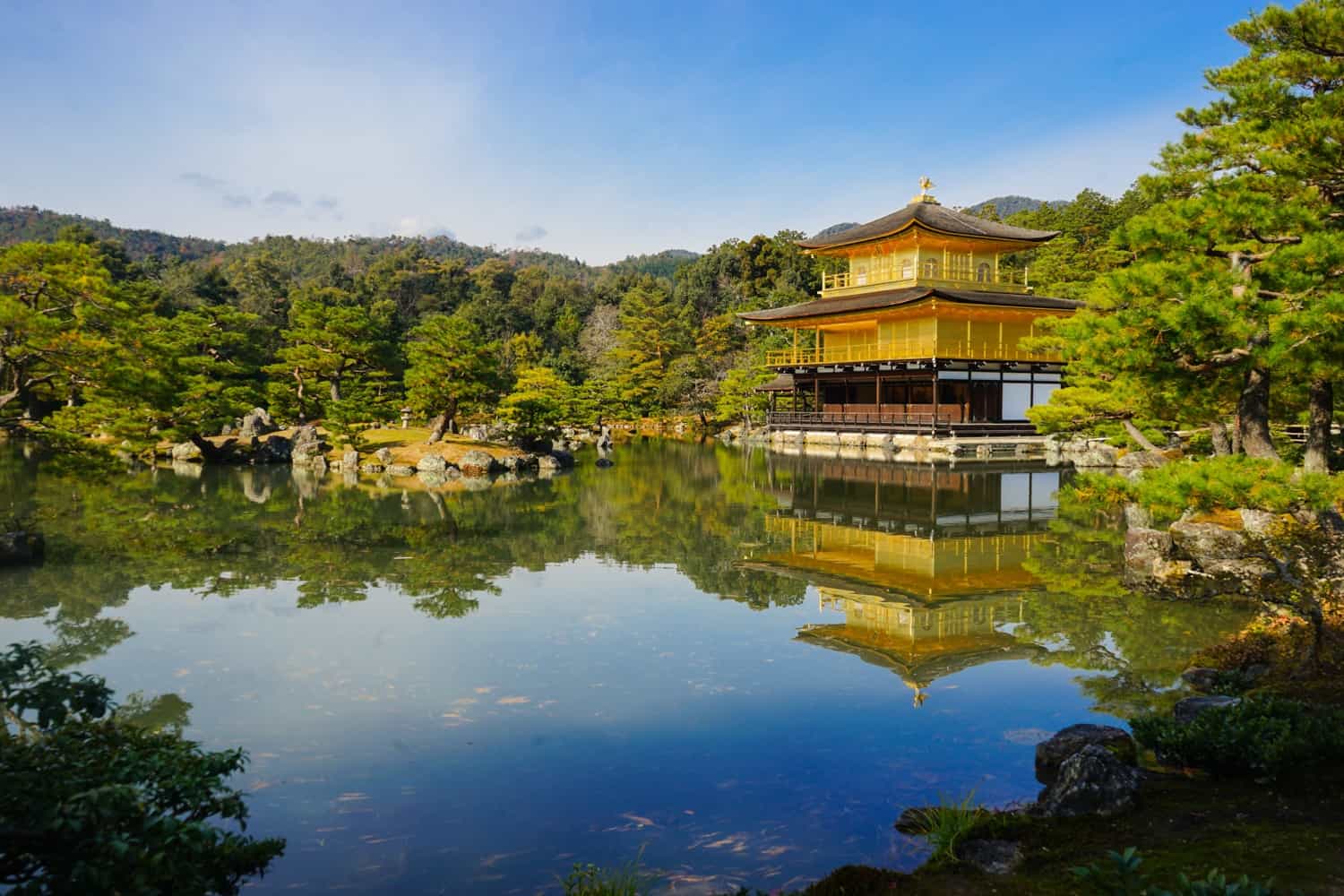
How I Track My Expenses While I Travel
Every time I share my expenses, you guys always want to know how on earth I manage to keep track of so many details from my travels!
Because Never Ending Footsteps is my company, the vast majority of my travel expenses are business expenses. I therefore studiously record everything I spend everywhere I go. I take photos of every receipt I receive and use Xero accounting software to record these expenses. In cases where I can’t get a receipt, I’ll take a photo of the price list and my ticket or food, or something as evidence.
Once a week, I then sit down and spend an hour or so uploading my receipts to Xero and making note of every penny I spent in each country I visit. It makes writing these posts super easy!
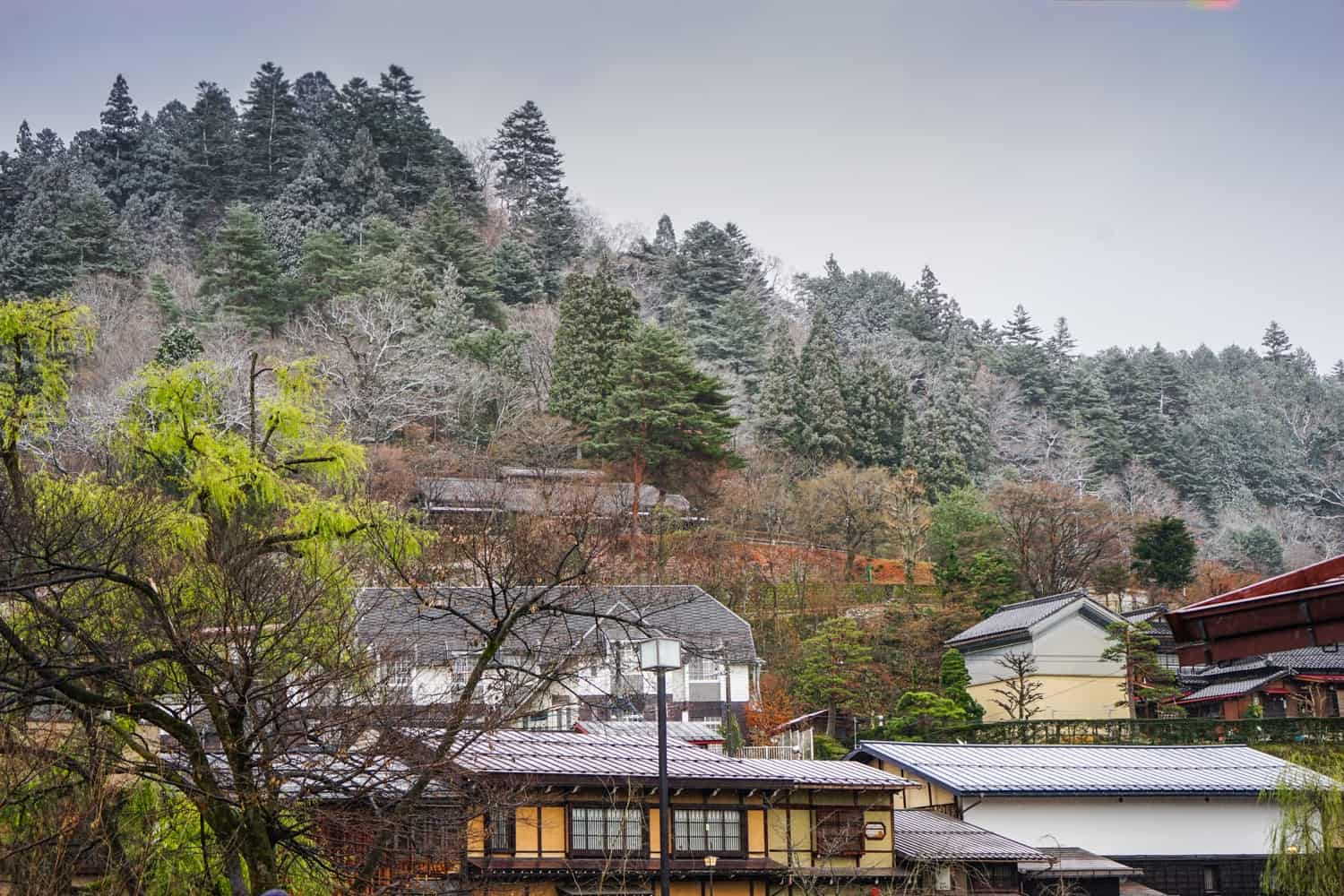
How Much Does it Cost to Travel in Japan?
It’s time to tally up all of my expenses to see my total travel costs!
Accommodation: $97 per day Transportation: $27 per day Food: $23 per day Activities/Entrance Fees: $2 per day Miscellaneous: $2 per day
Average amount spent in Japan: $151 a day!
I don’t know about you, but given Japan’s pricey reputation, I’m fairly impressed with the amount I spent in the country, especially as I included quite a few splurges in there.
How about you? How expensive were you expecting a trip to Japan to be?
Related Articles on Japan 🇯🇵 What’s it Like to Travel in Japan? 🏯 How to Spend Two Weeks in Japan: An Itinerary for First-Time Visitors 🍣 15 Weird and Wonderful Things to Eat in Japan 🎌 23 Incredible Things to Do in Osaka, Japan 🗼 21 Spectacular Things to Do in Tokyo, Japan 😎 Hipster Harajuku: The Coolest Neighbourhood in Tokyo 🦔 Should You Go to a Hedgehog Cafe? My Experience in Japan 🐒 Why Seeing the Snow Monkeys in Japan Sucked
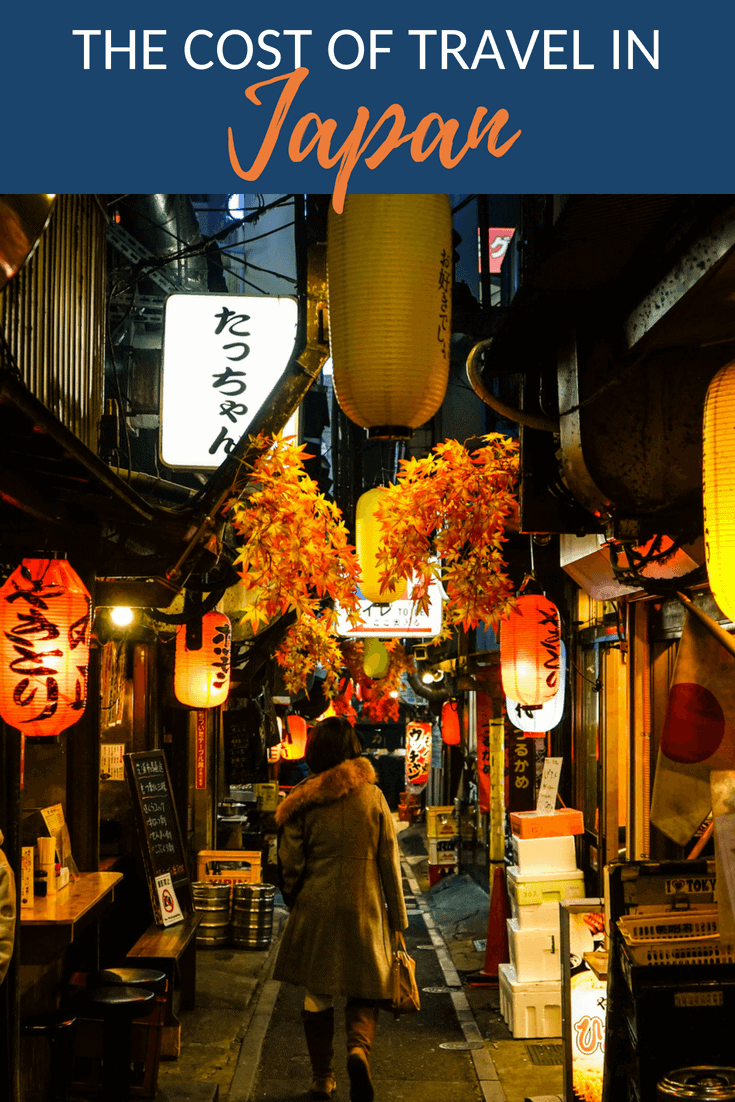
Lauren Juliff
Lauren Juliff is a published author and travel expert who founded Never Ending Footsteps in 2011. She has spent over 12 years travelling the world, sharing in-depth advice from more than 100 countries across six continents. Lauren's travel advice has been featured in publications like the BBC, Wall Street Journal, USA Today, and Cosmopolitan, and her work is read by 200,000 readers each month. Her travel memoir can be found in bookstores across the planet.
Related Posts

The Cost of Travel in Mauritius: My Detailed Budget Breakdown

The Cost of Travel in Thailand: My Detailed Budget Breakdown

2023: My Travels in Review

The Cost of Travel in South Korea: My 2024 Budget Breakdown

How to Spend Three Perfect Days in Delhi: An In-Depth Itinerary

Pushkar Travel Guide: 11 Things to Do in Pushkar
106 comments.
Wow! that’s amazing. I especially got fascinated seeing the capsule hotel…must have been a unique experience.
It was surprisingly cosy! I would totally stay in one again.
Thank you so much for your information. We will go to Japan in October 2023 for 1 month. Have paid fully for 16 days. Using your guides to budget the remaining 2 weeks. Thanks again.
This is great! Do you think it would be much more expensive in summer or any of the peak holiday seasons? I’m going over July this year and wondering if the prices change much with the seasons.
Wow! That’s quite an eye-opener! I’ve wanted to visit Japan for years, and this has certainly nudged me a little closer, as I assumed it was expensive too. The costs seem much better than I found in Amsterdam this spring! (my boyfriend still gets a thousand-yard stare when I mention how much we paid for drinks in one bar.)
Yay! Yeah, it really did feel about the same price as Western Europe, if not cheaper. The transportation is more expensive, but the food was cheaper in Japan.
This is super awesome! I, too, was under the impression that Japan was a super expensive place to visit! Good to know that you can save so much on accommodation and activities! Are you going to be posting about food in Japan? My knowledge of what to eat there is very minimal…
Yes! I published a guide to my favourite things to eat in the country last week: https://www.neverendingfootsteps.com/best-food-japan/
Ditto for here in New Zealand Lauren. All said it would be expensive. But we house sat – rent-free – and saw that food and travel are on par or cheaper than New Jersey. We also saw that virtually all things are cheaper than folks said. Methinks many labeling Japan and NZ as expensive as can be are used to paying $1 for lunch in Chiang Mai LOL. Budget folks see all Western lands as expensive. Granted I am from NJ; living by NYC makes for a high cost of living. But not bad at all, living in these lands.
Yeah, definitely true. I know that when I wrote off Japan as being too expensive, it was in the early days of my travels, when I could only afford to live in Southeast Asia!
Loving the posts about Japan so far. Do you have many more articles planned? I’ve a trip booked in November and this has been the most useful of the blogs so far for help in planning – thank you. Although I’ve had to cut the hedgehog cafe off my plans after reading your article as I hadn’t quite considered the ethics enough!
Yes! So many. I’ll probably post another half a dozen or more over the next few weeks :-)
I always assumed Japan to be very expensive. Thanks to your blog I don’t anymore. Cheers!
This is all very useful info! I’m impressed with your budgeting skills. Awesome, Thanks for sharing this!
Ha! Thank you :-) It comes naturally (finally) after seven years of doing this.
Great article. I’m planning a visit for early 2025 to go with my grandson … was the budget breakdown for one person or a couple … because you mentioned going with your partner?
The accommodation prices are the total cost of the room (rather than just my share), while the transportation, food, and activities are all my share of the costs.
Fantastic article. Love your budget posts because you never leave anything out.
I try not to! Thanks so much :-)
Beautiful photos, Japan look amazing and thank you for sharing your budget tips as well. :)
No problem! :-)
Thank you so much for this! I’m going to Japan in September and I’ve been worrying about my budget. This has definitely put my mind at rest!
Yay! Happy to hear that :-)
I’m so happy that you have posted so much lately, you’re my favourite travel blog and I check this page a lot more often now that the pace of the posts has increased :)
Thank you! :-) I’m aiming to stick to a three-times-a-week posting schedule now that I have a base and more time to dedicate to writing.
This is so much cheaper than I expected. Do you have any idea about prices for solo travellers though? Would I have to pay for a double room most of the time (apart from dorm beds of course)?
No, lots of hotels and guesthouses have single rooms, so you wouldn’t need to pay out for two people very often, if at all.
Thanks, that’s good to know!
Very useful breakdown that would be very helpful for first-timers to Japan.
Just to share, one of my own major expenditure in JP is … vending machine contribution! I simply can’t resist them and can end up buying seven times a day. “P
Yes! I couldn’t believe how many vending machines there were in the country, as well as the variety of things you could buy from them.
Hello! This is a very timely article for me to read as I’m actually going to visit Japan for a week on September. I really love Japan’s culture and their people. There are a lot of places that I want to visit and a lot of things I want to do but I am on a strict budget. Hopefully, your article would be able to help me fix my budgeting for my trip to Japan.
I hope so! I really didn’t find it horrendously expensive, so I think you’ll be surprised by how much you can do there for free.
I love your budget posts because they give me such a good idea of how much I can expect to spend in places around the world. Are you thinking of doing them for everywhere you visit?
That’s my plan! I’m slowly working my way through my records and adding more and more to the site.
Hey, thanks so much! :-)
I’ve planed to visit Japan next year, Thank you for sharing your budget, I’ll try to not exceed 100$/day, following your information on this post.
Have a fantastic trip, Ingrid! :-)
Which month you visited Japan? I am thinking for Cherry blossom (April 2019) and everything is coming up too expensive. Are those above for cherry blossom season you visited?
Ah yeah, unfortunately, the cherry blossom season is the most expensive time of year to visit Japan. I was there in December, so prices will be higher than the ones mentioned in this post. I’ll add that detail to my post now!
I was under the impression that Japan was a super expensive place to visit! Good to know that you can save so much on accommodation and activities! This article includes all the places you can visit in Japan and their expenses. It is very educative and it can be improved by providing expenses in INR. Thank you for posting this useful information.
Thank you! I usually just price these articles in the local currency and USD, which is where the vast majority of my readers are located. If I started including currencies for everyone, the post would quickly get ridiculous :-)
Seems a dumb question, but I’m assuming all the values are in USD, is it correct?
Yep! I write at the start of the post: “The amounts in this guide are listed in Japanese Yen and U.S. dollars, simply because the vast majority of my readers are from the U.S.”
That is a very good breakdown cost analysis there. i am planning to go to japan as well with my wife. and planning to stay for 10 days only. 4 in tokyo 3 in kyoto and 3 in osaka. i like to idea of 100 aud / day it’s a good target to keep but i guess the expense on buying cloths and souvenir would be uncontrollable though i heard things in japanese is not that dear if you know where to shop and avoid tourist trap. i didn’t see you mention buying internet data in advance ? or i missed it somewhere. i guess the expense for a couple will be double up. but i guess 3000 aud for 2 people is unavoidable.
amazing detailed guide
You’re welcome!
I’m so glad I found your website! I love the detail and photos. I just booked a trip to Japan with my boyfriend for this upcoming October, and your site will be very helpful. Question: do most hostels and accommodations that you experienced have you sleeping solo? I’m wondering if I should expect to sleep in a separate area than my partner for most of the trip…
Hi Lauren, Thanks for such a detailed description of your time in Japan! I’m going to Japan October this year with my wife and my major concern is how you managed to book sleeping pods for you and your boyfriend as almost all accommodations are either “male only” or “female only” from the options I’ve seen so far. Did you have to get separate beds for those nights?
Yeah, the capsule hotel-style accommodation is all single beds. You can see in my photo in this post that there’s not much room for anybody else!
My wife and I are heading to Japan in mid May and I plan to use your itinerary.
Would it be possible for you to write something about the travel logistics if you can remember them – ie to get from Tokyo to Mt Fuji we booked the following train, leaving at…from the following platform which took X hours and arrived at Mt Fuji at. We then bought our day pass from….and ……..
This would be really helpful to me and other independent travellers – from where did you buy your JR pass and how did you book your individual train rides?
Cheers Paul
Oh, man. That would take me hours and hours to put together and I’m sure times and platforms change so it would be impossible for me to keep the information up-to-date and accurate.
I recommend downloading the mobile app Hyperdia — you can plan your train travel out using that. Just enter in your destinations and it will tell you which train to take and from which platform. Super easy to use! :-)
The site I used to buy the JR Pass is this one . I booked the other train tickets in person at the stations when I arrived — there weren’t many that weren’t covered by the rail pass. Just the small regional ones to get to and from Yudanaka, I think.
Hello Lauren, I love the details in your blog. Your expenses were for 1 or 2 people?
I cover that at the start of the blog post: “And finally, these are the expenses I paid while travelling with my boyfriend. That means that accommodation prices (with the exception of the dorm bed in Hiroshima) have been halved to indicate my share.”
Great super helpful article. THANK YOU!
Hi Lauren, Thanks so much for this article, it is so helpful!!! on which dates did you fly to japan? what dates are you recommending on?
I spent the first two weeks of December in Japan. I’d recommend looking at May or September as the best months to travel there.
Hi Lauren I’d love your advice. I’m traveling with my 22yr old daughter to celebrate her graduation and my birthday. I booked the first two nights a hotel in Tokyo and then figured we would VRBO or Airbnb but after reading your post it looks like things have changed. I love the idea of the capsule hotels and the standard tatami mat rooms look enchanting. So how do I search for either? We’d like to experience both for the trip. oh by the way, I’m a traveler too, let me know where in the world are you now. Perhaps we can meet up and collaborate, I do video production, just got back from Colorado and am going to Cancun in June.looking forward to hearing back from you, Peace and Love always, “L” oh let’s connect on IG
Just book them through Booking.com — no need to go to any specific site. I’m in Bristol, in the UK. I actually don’t have an Instagram account — it wasn’t doing good things for my mental health, so I deleted it :-)
G’day Lauren,
Loved your detailed description of your travels through Japan. However; I’m not so brave as you travelling around on my own, especially with the language problem. I am a single traveler from Bangalore, India and would love to spend 7-8 days in Japan, with my journey starting and ending in Tokyo, reasonably priced hotels or local hostels, but preferably single accommodation, if possible. (willing to pay extra).
I love train travel and Japan is one of the best places to do that..your take on that would be appreciated. If you feel, I meet your requirements, would love to get an itinerary and costing for my 7-8 day stay in Japan.
Hello! I am really curious on how you got a 14 days pass JR for only 420$, from where I am from (Canada) it is 567!
If you click the link in the post, you can buy it through there. It’s currently listed for 414 USD.
$95/day seems cheaper than what I had expected – is that a tight budget? What can you do more with $150/day? I’d prefer to spend that extra on living in nice hotels + do more activities. Does that seem possible with $150/day?
No, not really. It was a mid-range budget and all of the hotels we stayed in were nice — I made zero effort to stick to a tight budget.
Hope you’re well. I’m wondering if you still advise from not booking Airbnb for Tokyo? Thanks.
Until moments ago, I had always assumed Japan to be too expensive to even consider. Never thought the cost of activities and entrance fees would be so cheap. This is an encouraging article, thanks, Lauren!
Really remarkable post, Lauren. Extremely thorough and helpful. I’m looking to plan a trip to Japan soon and stumbled across your blog. As you clearly hoped from city-to-city, (this may be a silly question) what did you do with your luggage on a day-to-day basis?
Thanks for any insight.
Oh, just left it in my hotels. If I spent less than a full day somewhere, it was visited as a day trip, so I didn’t take my luggage with me. And then whenever I arrived somewhere, I’d time my arrival with the check-in time of the hotel, drop my bags first, then head out exploring.
great article! As I have said in the past you always put out great stuff that’s very valuable information.
I just came across your website when searching for trips for Japan for my son. I have to say I am really so happy and want to thank you so much for the information. My eldest son has been taking Japan as a language course for the last 3 years and was looking forward to trying to get into the high school Japan trip in end of july beginning of August 2020. He also wanted to go to TUJ(Temple University Japan).
However, because of the olympics the high school Japan trip has been canceled for 2020. Unfortunately, he will be a senior next year so the 2021 high school program will not be available for him. Plus going to olympics are so expensive. If you can give me any advice, I would greatly appreciate. Thank you so much in advance for your time!!!
What advice do you need? About what?
Hi Lauren, I really liked you post and I think is really helpful. When exactly did you go in Japan? We have to change our plans for next February (previous planned for Philippines but to risky for my wife pregnancy) and we consider to go in Japan instead. So, do you think it is good idea travelling in Japan in February? Thank you and advance.
I went during the first half of December. As long as you keep in mind that it’ll be pretty cold (5-10 celsius), I think it’s a great time of year, as it won’t be as crowded as peak season.
is it favorable to use credit card or cash is much preferred? thanks
Hi. Thank you for the information! I am so inspired to go to Japan now. My mom who was from Japan, always told me it’s too expensive to go back and visit. I am now 56 and it has been my lifelong dream to go. My husband and I will go with backpacks like we did when we were younger and before having kids. Is October a good time to go? I read September can be humid. I want to follow your itinerary for the most part. My mom lived in Kanazawa. My heart is full right now and my eyes are misty. Thank you for making my dream a little bit closer.
Hey Lauren!
Thank you so much for the information. I actually got invited on a delegation to go to Japan this evening and am trying to get the average cost to travel in the country. Obviously, your trip was on a very impressive budget. I have two questions, 1. Based on the $95/day over the course of your 16-day trip, would it be right to say that (flight included) you only paid ~$1,600 for your entire trip? 2. Would you say for a trip including cultural experiences, transportation and stays in nice hotels for a week, a grand total of $3,700 is reasonable?
In advance, I appreciate your advice on this!
Hi Lauren, Are you able to name all the accomodations you stayed with? I would like to visit Japan next year on a very tight budget. Thanks.
Yes, they’re already linked in the post along with the reviews of them under the accommodation section.
Hi Lauren. I’m debating spending 5 nights in Osaka and doing day trips to kyoto, nara and himeji castle. (I have hotel points where i can stay at osaka). Based on your experience – is that ok? or is better to stay 2 nights in Osaka and 3 nights in kyoto. There is a lot of different opinions online, thought id ask you if you think i’d be missing out on anything if staying in osaka. The one plus is i can save some money if using points and also staying in 1 location for 5 nights vs packing and moving to another location. Thanks so much for your posts!
Hey i found this really helpful but I’ve been planning to visit japan for a while and have hopes of going after i graduate high school. With some research i found that the JR pass isn’t needed if you’re just staying in one city. How much do you think i would spend on transportation for 2 weeks in Tokyo? Will it come out to more than what you spent or less?
Definitely less! You can walk to a lot of places, but otherwise the metro won’t cost much at all — a dollar or two per trip.
Would you be able to give recommendations for food places in Kyoto that are affordable.
Hi Lauren. Came across your site on a Google search for budget travel. It convinced e that a trip to Japan is affordable. Never have done international travel and would like your advice on a couple of things. 1. What is the best way to pack? Do I have to just use a back pack? 2. Can I use a credit card or should cash be used? 3. Can I get cell phone coverage in Japan.
Thanks, you site is great!
1) I prefer to travel with a backpack, but you’ll do okay with a suitcase, too. I personally find backpacks easier for navigating train stations, as you don’t have to drag it up and down stairs, etc. It doesn’t really matter either way, though. Depending on how long you’ll be staying there, I usually pack for a week no matter how long my trip is, then do laundry once a week.
2) Japan is mostly cash-based, so plan for lots of trips to the ATM. I didn’t find many places that accepted cards, although I also wasn’t looking very hard either.
3) Yep, you can pick up a local SIM card at the airport when you arrive. I bought mine through the rail pass company I link to in this blog post, but you can also just buy one when you arrive. Super easy to do and they’ll get it set up for you in the shop, too.
Love your posts! have been browsing but when I stumbled upon your page found it really helpful! Planning for Japan and Singapore so finding both blogs is perfect timing :) We are still not sure if the JRpass will help us- when we did calculation for the main routes we are going it resulted not worth it, however then not sure if we will require any additional rails/trains in between these. Tokyo>Hakone>Kyoto> Osaka without returning back… your input will be appreciated :) P.S. Feel free to visit the island of Malta, my home country
Wooow !! This is amazing , My wife and I have been planning to visit japan and we always had a misconception that Japan is expensive to visit .. This is a great blog .. So the overall cost including your flight tickets and local travel in japan would cost around 2500 $ per person ?
This was so incredibly helpful! Normally I don’t find myself reading entire articles but yours was so informational and in depth. Thank you so much for helping me get an idea of how much I would roughly spend!
Ah, no problem! Thanks for reading, and I’m glad you found it useful :-)
I super love this article Lauren! I thoroughly enjoyed it. When all is well and my country allows us to travel again, this is going to be on my top 3 places to visit (the 1st 2 will be diving spots as I’m a freediver). I made sure to bookmark this page for reference. Again, thank you for writing this. One question though, when you say $ do you mean USD?
Yep, USD! “The amounts in this guide are listed in Japanese Yen and U.S. dollars, simply because the vast majority of my readers are from the U.S.”
How much did you spend on transportation in Tokyo? I mean if you hadn’t had the JR Pass? How much did you save in Tokyo by having the pass?
Oh, I didn’t activate the pass when I was in Tokyo — I activated it on the day I left — so that was my total expenses without using it.
Hi Lauren! I just read your post. My boyfriend and I are backpackers and we are planning our next trip to Japan. I wanted to ask you when did you go there? (what time of the year). Because we can only take time off during winter time (dec-jan) and I don’t know if that’s a good time of year to go. We are from Denver and snow doesn’t bother us but we also want to enjoy it.
Thanks in advance! Love your blog
I was there in December! There’s fewer crowds then, which makes it a great time to go! As an added bonus you get to enjoy all of the cosy onsens in the snow :-)
Even in these unprecedented times, I feel as if I have already traveled to Japan! I loved every minute of the information you gave me. This place is definitely next on my list, of course! It can be months or a year from now.
It appears you’re still getting traffic in the comments here (excellent) so I thought I would ask a broad question. Wife and I are thinking to take our 6 and 9 year old to Japan for about 11 days. Any destinations you might leave off your itinerary given a bit less time and traveling with kids?
Fantastic! I’ve never seen any article about travelling to japan so specific and detailed before!! It sure will help me prepare for my own first&solo trip! thank you so much
Great post, but the prices are wildly outdated now. Your $30/night hotels in 2018 are going for around $220/night in 2023. Insane!
Hi CS, what time of year are you looking to visit? I’ve had a quick check and every hotel I link to still displays roughly the correct prices (a couple were out by about $10-20 a night, but nothing like $190!). If you’re looking at going in May, for example, Hakone Tent prices their rooms at $176 a night, but then offers rooms at a price of $73 a night a month later in June, so the time of year can affect the pricing. I’ll make a note to mention this in a future update to the post.
I visited in the low season, in December, so the prices I paid were lower than they might be at a more popular time of year.
This is amazing on every level. Thank you! only issue is prices for accomodations double during sakura season so what can I do
Thank you Lauren, for this insightful and complete post.
Out of curiosity, do you know what was the average USD/YEN exchange rate when this trip took place?
Kind Regards,
I update the prices in this article every two months so the exchange rate used in the post is recent
How recent was your travel to Japan and what exact dates were you there? I’m planning to take my family of 4 there in 2025 and would like to schedule it during cherry blossom season. I heard prices usually go up during this time so I was wondering if your trip happened during peak or off-peak season.
I was there in December. Prices do increase a lot during cherry blossom season, unfortunately — that’s the most expensive time to visit.
very good post for budget travellers. thanks for sharing.
Leave a reply Cancel reply
Your email address will not be published. Required fields are marked *
Meet Lauren Juliff
Cost of a Trip to Japan & the Cheapest Time to Visit Japan
The average price of a 7-day trip to Japan is $1,659 for a solo traveler, $2,690 for a couple, and $1,913 for a family of 4 . Japan hotels range from $62 to $304 per night with an average of $105, while most vacation rentals will cost $140 to $520 per night for the entire home. Average worldwide flight costs to Japan (from all airports) are between $948 and $1,696 per person for economy flights and $2,977 to $5,325 for first class. Depending on activities, we recommend budgeting $48 to $99 per person per day for transportation and enjoying local restaurants.
See below for average , budget , and luxury trip costs. You can also look up flight costs from your airport for more tailored flight pricing.
The Cheapest Times to Visit Japan
On average, these will be the cheapest dates to fly to Japan and stay in a Japan hotel:
- January 8th to March 18th
- August 27th to December 9th
The absolute cheapest time to take a vacation in Japan is usually late September .
Average Japan Trip Costs
Average solo traveler.
The average cost for one person to visit Japan for a week is $1,380-$2,771 ($197-$396 per day)
Food, Travel, and Sightseeing : $48 to $99 per day for one person’s daily expenses
Flights : $564 to $1,394 for economy
Lodging : $80 to $114 per night for one 2 or 3-star hotel room
or $86 to $105 per night for a 1-bed vacation rental
Average Couple’s Trip
The average cost for a couple to visit Japan for a week is $2,279-$4,865 ($326-$695 per day)
Food, Travel, and Sightseeing : $96 to $199 per day for two people’s daily expenses
Flights : $1,127 to $2,788 for economy
Average Family Vacation
The average cost for 4 people to visit Japan for a week is $4,360-$9,723 ($623-$1,389 per day)
Food, Travel, and Sightseeing : $191 to $397 per day for four people’s daily expenses
Flights : $2,255 to $5,576 for economy
Lodging : $161 to $228 per night for two 2 or 3-star hotel rooms
or $128 to $157 per night for a 2-bed vacation rental
Traveling Cheap to Japan
How cheap can you make a vacation to Japan? The cheapest trip to Japan is about $150 per person per day for travelers willing to take standby flights, deal with inconvenience, and otherwise limit travel expenses. About 3% of rentals are available in the $0 to $100 range for an entire place, and vacation rentals can be booked for as low as $16 per night. These inexpensive rentals must be booked as early as possible and may not be in the most desirable areas. 1-star hotels are more likely to be available, with rooms starting at around $53.
Even cheaper trips are possible depending on where you live and whether you can drive. Check the cheapest times to fly for more saving ideas.
Budget Solo Traveler
The lowest cost for one person to visit Japan for a week is $1,050-$2,576 ($150-$368 per day)
Food, Travel, and Sightseeing : $24 to $48 per day for one person’s daily expenses
Lodging : $53 to $62 per night for one 1-star hotel room
or $110 to $141 per night for a 1-bed vacation rental
Budget Couple’s Trip
The lowest cost for a couple to visit Japan for a week is $1,781-$4,306 ($254-$615 per day)
Food, Travel, and Sightseeing : $48 to $96 per day for two people’s daily expenses
Budget Family Vacation
The lowest cost for 4 people to visit Japan for a week is $3,557-$8,186 ($508-$1,169 per day)
Food, Travel, and Sightseeing : $96 to $192 per day for four people’s daily expenses
Lodging : $105 to $124 per night for two 1-star hotel rooms
or $165 to $211 per night for a 2-bed vacation rental
Overall it is very difficult to travel to Japan cheaply.
The Cost of a Luxury Japan Trip
There is no true ceiling on the cost of a luxury trip, so our estimates are based on what most people do in Japan.
Luxury Solo Traveler
The high-end price for one person to visit Japan for a week is $3,040-$10,904 ($434-$1,558 per day)
Food, Travel, and Sightseeing : $96 to $198 per day for one person’s daily expenses
Flights : $1,408 to $3,470 for first class
Lodging : $160 to $304 per night for one 4 or 5-star hotel room
or $504 to $1,008 per night for a preferred vacation rental
Luxury Couple’s Trip
The high-end price for a couple to visit Japan for a week is $5,121-$15,768 ($732-$2,253 per day)
Food, Travel, and Sightseeing : $192 to $397 per day for two people’s daily expenses
Flights : $2,817 to $6,941 for first class
Luxury Family Vacation
The high-end price for 4 people to visit Japan for a week is $10,241-$28,542 ($1,463-$4,077 per day)
Food, Travel, and Sightseeing : $384 to $794 per day for four people’s daily expenses
Flights : $5,633 to $13,882 for first class
Lodging : $320 to $609 per night for two 4 or 5-star hotel rooms
or $753 to $1,517 per night for a preferred vacation rental
Japan Hotel Prices
The cost of staying in Japan is much higher than the average city. On average hotels are less expensive than vacation rentals. Luxury vacation rentals are more expensive in Japan due to very high property costs. The graphs below show how much cost can vary depending on the type of experience you’re looking for.
Japan Lodging Cost by Star Status
The average price for the class of hotel is on the (y) axis. The hotel class (out of 5 stars) is on the (x) axis.
Prices are based on Japan hotel averages and may not reflect current prices. In some cases, we extrapolate prices to estimate costs, and hotels with your desired star rating may not be available.
Vacation Rental Prices
The percent of vacation rentals in the price range is on the left (y) axis. Price range is on the bottom (x) axis.
There are a healthy amount of vacation rentals serving all budgets in Japan.
Flight Costs to Japan
Averaging flights around the world, prices go from a high of $1,696 average in early to mid July to a low of $948 in late September. Median flight price is $1,031. These prices are based on millions of flights. For Japan our data includes thousands of originating airports, and hundreds of airlines. The area has more variance in price compared with other locations.
Average Flight Cost by Season
Average flight cost by day of week.
The cheapest day to fly in is typically Tuesday, and the cheapest day to fly back is usually Tuesday. Click here to see data for the cost of flights from your airport. In Japan, the difference between the cheapest and the most expensive week is about $748, so you can easily save about 79% simply by using our free flight guides and booking in advance.
Daily Expenses Budget
Daily vacation expenses vary more based on what you’re interested in doing. A fine dining restaurant with drinks around Japan can easily cost $361 per person or more, while a standard nice meal might be about $24 per person. Private tours can cost $722 per day, but self-guided tours to see the outdoor sights can be free. Costs vary wildly, so recommendations are made based on the cost of living and averages we see for this type of vacation.
Other Japan Guides
Travel costs nearby.
- Nagahama, Japan
- Maibara, Japan
- Tsuruga, Japan
- Echizen, Japan
- Sabae, Japan
- Ogaki, Japan
- Yoro, Japan
- Hikone, Japan
- Fukui, Japan
- Gifu, Japan
Travel Costs in Popular Places
- Chicago, IL, US
- Vienna, Austria
- Nairobi, Kenya

How Affordable Is Japan for U.S. Travelers Right Now, Really?
From hotel upgrades to first-class bullet train rides and multicourse meals, now is the time for u.s. travelers to splurge in japan, while the yen is the weakest it has been in more than three decades..
- Copy Link copied

Go ahead, get an extra pack of sushi.
Nedikusnedi/Shutterstock
Japan is on sale, and there is no better time to visit to take advantage of the value offered than now. The yen is the weakest it has been in 34 years; it’s weakened by about 50 percent against the U.S. dollar since the pre-pandemic era. Not surprisingly, tourism is booming. In March 2024, more than 3 million inbound tourists arrived in Japan, breaking a record.
As of press time, one U.S. dollar is equivalent to about 156 Japanese yen; five years ago, it was hovering closer to 100 Japanese yen. (It’s worth noting that currency exchange rates fluctuate frequently, so all conversions in this story were accurate as of the publication date but may be different at the time of reading.) Why is the yen so weak? Among the reasons is that “the interest-rate difference between cash money in Japan [zero percent] and the U.S. [around 5 percent with the best mutual funds or deposits] is … causing the yen to trade low,” explains Frederick Gundlach, a U.S. CPA and tax preparer currently in Narita, Japan.
So, how can you make the most of your travels in Japan? Now is the time to upgrade your hotel room, travel on the first-class green car on the country’s famed bullet train, and splurge on expensive meals. For instance, if you splash out for an elaborate sushi dinner with a 30,000-yen price tag, that is the equivalent of just under $200. In the past, the same $200 would have been worth only about 20,000 yen.
Shop till you drop
The deals are so good that travelers are purchasing suitcases in Japan to carry back all of their shopping, including knives, clothing, and accessories from fashion labels such as Issey Miyake and Yohji Yamamoto. Many larger department stores like Isetan and Takashimaya and electronics shops like Bic Camera are duty-free, which means you can shop without taxes while traveling around Japan, not just at the airport before your return flight. Be sure to bring your passport with you, and look for the white-and-red “Japan. Tax-free shop” signs. Additionally, many department stores or electronics shops will give foreign passport holders a discount card at the information desk, usually for about 5 percent off, but sometimes more. After all of your shopping is completed, take your receipts to the duty-free counter in the department store and get the tax back: up to 10 percent, depending on what you are purchasing.

Look for the red tax-free shop signs to shop duty-free while out and about in Japan.
MMpai/Shutterstock
Hotel rates
Hotel rates for Japanese-owned hotels have not fluctuated much recently—and that’s a good thing. The Tokyo Station Hotel and Imperial Hotel Tokyo currently are in the 60,000 to 80,000 yen per night ($380 to $500) range, which is comparable to their rates before the yen weakened considerably, but the dollar equivalent is, of course, lower. But some other properties, namely international hotel brands, have tripled their rates as tourism demand has increased at record rates. The Aman Tokyo , for instance, is currently about 300,000 yen ($1,900) per night. In 2018, it cost about 110,000 yen.
For more budget-oriented travelers, however, Japan is a total bargain right now. Basic business hotels with small rooms and private bathrooms that are conveniently near major train stations start at about 7,500 yen per night, which is less than $50.
Train upgrades
A round-trip shinkansen bullet train to Kyoto from Tokyo is currently 26,000 yen ($165) or 38,000 yen ($240) for the first-class green car. Note that the price for the JR rail pass has recently increased , but it still poses a good value depending on how far one travels. The pass allows unlimited travel on Japan Rail trains, including shinkansen bullet trains. The basic seven-day JR Pass is 50,000 yen ($320); formerly it was 30,000 yen. The seven-day Green Car Pass is 70,000 yen ($445)—not a bad deal for a week of first-class bullet train rides.

When a bowl of ramen will only set you back about $6.50, it’s hard to resist.
Photo by Volkan Kacmaz/Unsplash
Meals at a minimum
Breakfast at a kissaten coffee shop with coffee, toast, and a boiled egg is about one coin or 500 yen ($3). A bowl of ramen goes for about 1,000 yen ($6.50). Add potstickers and an ice-cold beer, and the bill will be 2,000 yen ($13). Gundlach reminds travelers that “there is no tipping in Japan.”
Attractions and skiing
Tickets for the contemporary Mori Art Museum or the fine arts institute the Nezu Museum (both located in Tokyo) are 1,600 yen ($10). Entrance into the interactive digital art experience teamLab Borderless at the new Azabudai Hills urban village is 3,800 yen ($24), to get a sense of how much it will cost to soak up some culture in Japan.
For skiers and snowboarders, the renowned Niseko Village ski resort on the northern island of Hokkaido sells daily ski passes starting at 9,500 yen, a bargain at only $60. At Hakuba Valley in Nagano, the daily passes start at 8,500 yen ($55). Note that food at ski resorts is pricier than in the city centers, as are hotel rooms. But for some of the best powder in the world, it is still a bargain compared to, say, ski resorts in the United States that charge upwards of $100 and $200 for a day pass.
How long will the weak yen last?
Gundlach said he can’t forecast how long the yen will remain weak. But even if you aren’t traveling to Japan in the immediate future, you can still head to a foreign exchange office or a bank that exchanges currencies to buy some yen now; later, you can use it for on-the-ground expenses. With the weak yen, U.S. visitors can extend their stay for a few extra days, travel further, and explore more of the country. So, there’s no better time to visit Japan than the present.


- Travel Budget Japan: How much it costs and how to save
This article may contain links to products and services we use and recommend. We may receive compensation when you click on links to those products. For more information, see our Disclosure Policy .
Download our Minimalist Travel Wardrobe and Carry-On Packing List
What is the currency of japan, travel cost assumptions.
- Japan Travel Cost Summary
Map of Accommodation, Points of Interest, Eateries and Transport
How much does accommodation cost in japan, laundromats, communications, how much to budget for experiences in japan, gifu prefecture, ishikawa prefecture, nagano prefecture, yamanashi prefecture, hiroshima prefecture.
- Hyōgo Prefecture
Kyoto Prefecture
Naha prefecture, tokyo prefecture, kanagawa prefecture, okinawa prefecture, how much to budget for dining and groceries in japan, recommended foodie experiences, how much to budget for transportation in japan, train travel, how to save on transport costs in japan, rail transportation, japan-wide rail pass, regional rail passes, without rail passes, what are ic cards, bus transportation, other expenses you may incur when travelling to japan, travel insurance, finance and bank fees, luggage transfer and storage services, haircuts and massages, donations and gifts, how much did it cost you to explore japan, author: paul ryken.
Are you planning a trip to Japan and wondering how much it will cost you? You’ve come to the right place. In this article, we outline our actual travel costs during our three-month trip to Japan in 2023. Contrary to popular belief, Japan can be an affordable travel destination, with surprisingly reasonable accommodation and dining options. Plus, with the current exchange rate working in your favour, now is the perfect time to explore the Land of the Rising Sun . We also share some useful tips on how to save money during your time in Japan .
This list for women and men was created as a result of more than seven years of full-time travel around the world in all seasons with only carry-on luggage. This is the packing list we have used as we travel around Europe in 2024.
The fine print: I agree to receive the Minimalist Journeys newsletter full of news, actionable tips and practical advice every month. I know I can unsubscribe at any time. I have read and agree to the Terms of Use and Privacy Policy .
The Japanese Yen (JPY) – the word yen meaning circle or round object – has been in existence since 1871. In circulation these days are
- Banknotes in JPY1,000, JPY 2,000, JPY5,000 and JPY10,000 denominations; and
- Coins in JPY1, JPY5, JPY10, JPY50, JPY100 and JPY500 denominations (though the latter two are most commonly used).
When reading this article, please keep the following in mind:
- Our travel costs are based upon a couple travelling together.
- We are independent travellers, researching and organising our own itinerary using our go-to travel planning tools .
- Accommodation: We usually stay in self-catered accommodation (homestays, locally owned guesthouses, hostels and short-term rentals) - in our own room with (preferably) our own bathroom, though the kitchen may be shared.
- Dining and Groceries: We have at least two meals a day at home . We like to eat out once a day to every few days (and prefer locally owned restaurants and small eateries away from the tourist hotspots).
- Transportation: We walk a lot, and wherever possible, we travel by public transport . Only occasionally do we hire a vehicle.
- Experiences: Many of the activities we do are free of charge or cost very little. When we pay for attractions or activities , we are selective as our funds are limited (just like everyone elses).
- In addition to above expense categories, we include in our total daily costs our mail scanning and forwarding service , mobile phone plans and travel insurance - though only for the period we are in the country.
- We use a multi-currency personal account with Wise to manage our currencies XE to transfer money as required.
- Not included are the costs for entry or exit transportation into/out of the country.
During our most recent visit, we spent the maximum time we could in Japan (that is, 90 days on a tourist visa ), which means we travel slower and see fewer attractions/do fewer activities each day than someone who spends two or three-week vacation in Japan and tries to see and do as much as possible each day.
Japan Travel Cost Summary
Bearing those assumptions in mind, we spent on average JPY9,205 per person per day in Japan (or USD69 using the foreign exchange rate applicable at the time).
Certainly not the cheapest country we’ve visited to date , but surprisingly more affordable than we thought.
Below is a map of the recommended accommodation, points of interest, eateries and transport terminals/stops mentioned in this article.
If you are interested in our other detailed maps containing recommended accommodations, points of interest, eateries, and transport terminals/stops, check out the following destinations:
As independent travellers, we booked almost all our accommodations ourselves via the various platforms we recommend below. We only used the help of an agent when organising accommodation for our two multi-day hikes – the Kumano Kodo ( Kumano Travel ) and the Nakasendo (the Tsumago Tourist Information Center). Most accommodations were short-term rentals – studios or one bedroom apartments with a small kitchen (where basic meals could be prepared), bathroom and laundry facilities. During our hikes , we also stayed in family-run guesthouses (minshukus), often with onsen facilities.
During our three months in Japan , our accommodation costs averaged JPY7,720 (USD58) per room per night :
Our most expensive accommodation was at Koyasan Saizenin [ Google Maps location ], a Buddhist Temple in Koyasan – at JPY14,199 per night. While not cheap compared with our other accommodations in Japan , the temple stay (shukubō) was well worth it, as it allowed us to experience a multi-course shōjin ryōri dinner and breakfast (not included in above price), bathe in the traditional onsen and attend the Buddhist early morning prayer.
At just JPY4,500 per night , our most affordable accommodation was a stay at Guest Cafe Kuchikumano [ Google Maps location ] on Day 0 of our Kumano Kodo Hike. This was a traditional Japanese guesthouse (minshuku) with a large shared kitchen and bathroom. The host was super nice, and we had a lovely evening around the fire, toasting mochi balls (the Japanese version of marshmallows) and then dipping them in zenzai, delicious sweet red bean soup .
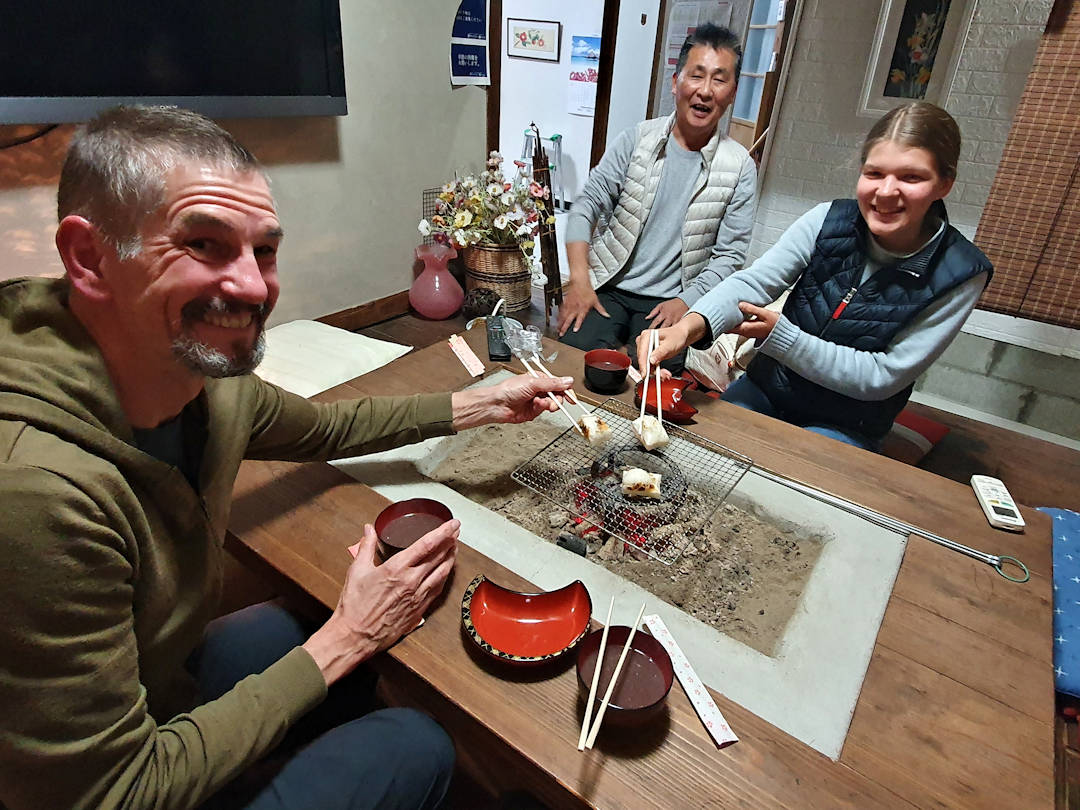
Interacting with your Japanese hosts and other guests is a wonderful experience
Although most of the accommodations we booked had a washing machine, over the three months in Japan , we did use laundromats eight times, costing us a total of JPY4,600 (or JPY575/USD4 per laundromat use ).
Prior to arriving in Japan , we purchased and received two NIPPON 4G-LTE SIM cards (one for each of our mobile phones) at a cost of JPY3,280/USD25 each – to use when we didn’t have access to Wi-Fi while travelling. Each SIM card came with 15 GB of data, valid for 180 days.
You can pack a lot into a three-month trip in Japan , and we did. All our experiences added up to JPY131,583 (USD984) between the two of us – on average, JPY756 (or just under USD6) per person per experience.
Here are some of our favourite things to see and do (including the cost per person when we visited – note that some were FREE):
- Chubu Region
- Chugoku Region
- Hokkaido Region
- Kansai Region
- Kanto Region
- Kyushu Region
Kamitakara-no-Yu Onsen , Shinhotaka [ Google Maps location ]: JPY800 Kanda House , Shirakawa-go [ Google Maps location ]: JPY400 Matsuri no Mori Museum , Takayama [ Google Maps location ]: JPY1,000 Takayama-Shinhotaka Ropeway (Bus and Cable Car) Two-Day Pass, Takayama [ Google Maps location ]: JPY6,800
Yasue Gold Leaf Museum , Kanazawa [ Google Maps location ]: JPY310
City Museum of Art , Matsumoto [ Google Maps location ]: JPY410 Miyamoto shōkai one-day bicycle rental, Nagano [ Google Maps location ]: JPY1,500 Nagano Marathon Foreign Athlete Entry Fee: JPY15,437 Obuse 3-in-1 Museum Pass (Hokusai, Kozan Takai and Obuse Museums), Nagano: JPY1,300 Togakushi Bus Day Pass , Nagano: JPY3,000
Bike ride around Kawaguchi and Saiko Lakes, Fujikawaguchiko: FREE (bicycle was provided by accommodation) Witnessing Magomi Matsuri/Chigo-no-Mai at Kawaguchi Asama Shrine and Hike to Tenku no torii, Fujikawaguchiko: FREE Kubota Itchiku Art Museum , Fujikawaguchiko [ Google Maps location ]: JPY1,300
Mt Misen Hike, Miyajima : FREE Hiroshima Castle , Hiroshima [ Google Maps location ]: JPY370 History and Folklore Museum , Miyajima [ Google Maps location ]: JPY300 Mitaki-dera Temple, Hiroshima [ Google Maps location ]: JPY200 Peace Memorial Museum , Hiroshima [ Google Maps location ]: JPY200
Hokkaido Museum , Sapporo [ Google Maps location ]: JPY1,200 Okurayama Ski Jump Stadium , Sapporo [ Google Maps location ]: JPY1,000 Sapporo Snow Festival : FREE Teine Ski Field (Day Pass and Gear Hire), Sapporo [ Google Maps location ]: JPY11,800 TV Tower , Sapporo [ Google Maps location ]: JPY1,000
Hyōgo Prefecture
Great Hanshin-Awaji Earthquake Memorial , Kobe [ Google Maps location ]: JPY600 Himeji Castle and Koko-en Garden , Himeji [ Google Maps location ]: JPY1,050 Nunobiki Herb Gardens , Kobe : JPY1,130
Botanical Gardens , Kyoto [ Google Maps location ]: JPY400 Free Walking Tour , Kyoto: FREE/Donation Hike Mt Inari , Kyoto [ Google Maps location ]: FREE Gion Corner Cultural Performance , Kyoto [ Google Maps location ]: JPY5,500 Ninomaru-Goten Palace , Kyoto [ Google Maps location ]: JPY1,050
Todai-ji , Naha [ Google Maps location ]: JPY600
teamLab Planets , Koto City [ Google Maps location ]: JPY3,500 Hokusai Museum , Sumida City [ Google Maps location ]: JPY1,000 Japan Olympic Museum , Shinjuku City [ Google Maps location ]: JPY500 Watching the sunset from Carrot Tower , Setagaya City [ Google Maps location ]: FREE Yayoi Kusama Museum , Shinjuku City [ Google Maps location ]: JPY1,100
Open-Air Museum , Hakone [ Google Maps location ]: JPY1,600
Rental Charinko Bike Ishikawa , Zamami [ Google Maps location ]: JPY2,800 Fukushuen Garden , Naha [ Google Maps location ]: JPY200 Himeyuri Peace Museum , Naha [ Google Maps location ]: JPY310 Japanese Naval Underground Headquarters , Naha [ Google Maps location ]: JPY600 Okinawa Prefectural Museum , Naha [ Google Maps location ]: JPY555 Shuri Castle Grounds, Naha [ Google Maps location ]: FREE Tsushima-maru Memorial Museum , Naha [ Google Maps location ]: JPY500
As mentioned above, during our time in Japan , we stayed mostly in accommodation that had a kitchen with basic cooking facilities, enabling us to have at least two meals a day at home . That said, it was sometimes easier and cheaper to buy ready-to-eat meals from convenience stores such as Lawsons, 7-Eleven or Family Mart – though we did try to limit those occasions to avoid adding to Japan ’s plastic waste problem .
Our daily dining costs in Japan averaged JPY1,193 (USD9) per person , with our most expensive dining experience costing us JPY2,350 per person at Steakland Kobe-kan [ Google Maps location ] – a worthwhile luxury to taste the famous beef the city is renowned for.
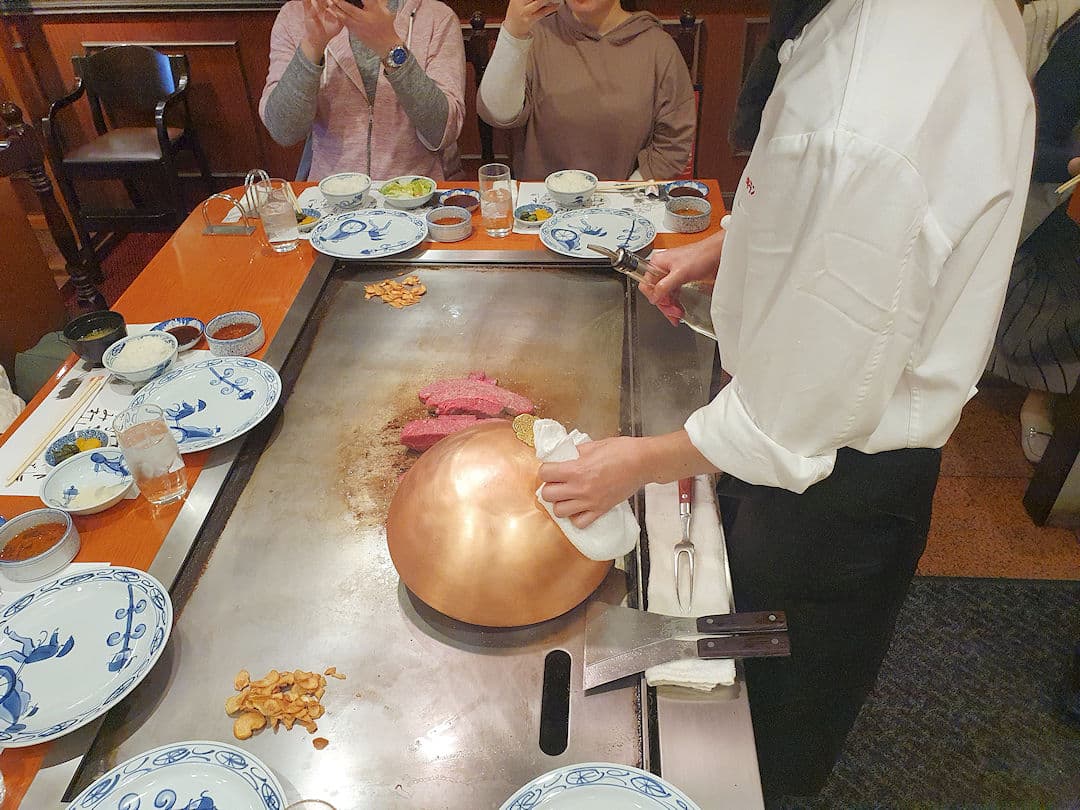
Our most expensive meal was at Steakland Kobe - but it was well worth it
Our daily groceries expenses in Japan averaged JPY1,043 (USD8) per person . We found Aeon supermarkets offered some of the best value for money, and between the major convenience store brands of 7-Eleven, Lawson and FamilyMart, we found Lawson offered the best range at the most affordable prices.
If you happen to visit Sapporo, make sure to pop into a Bostonbake branch [ Google Maps location ]. They have delicious pastries and buns daily (which are super affordable) – great to stock up on some items when you’re out and about during the Snow Festival . Sadly, Bostonbake only exists in Hokkaido.
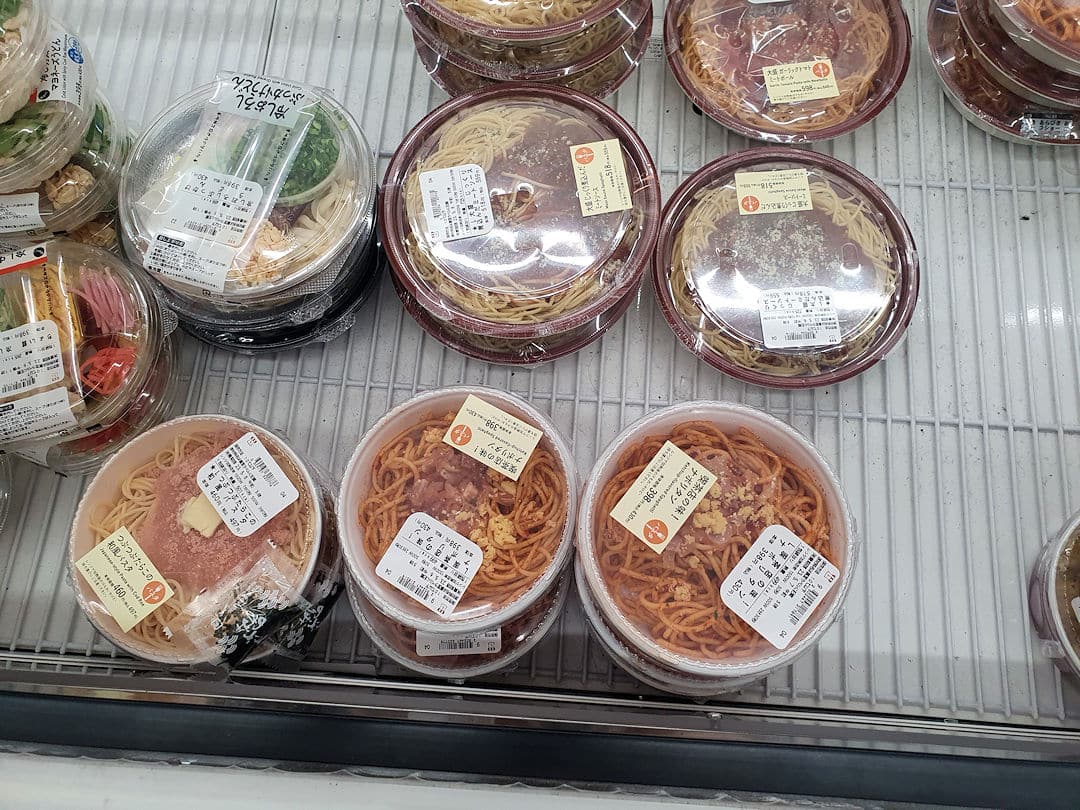
In Japan , ready-made meals are always available at supermarkets and convenience stores
As Anthony Bourdain is famously quoted as saying: You learn a lot about someone when you share a meal together. And the best way to learn about a destination is by spending it with locals, in their homes and in local markets. If you're a foodie and would like to join some incredible cooking classes and food tours, here are our recommended EatWith offers in Japan :
- Food and Sake Pairings in a Traditional Kyoto House
- Home style Ramen and Gyoza cooking class in a Japanese home
- Tokyo West-Side Walking and Street Food Tour
- Izakaya Food Tour in Shinjuku
How to save money on dining and groceries?
Dining out all the time can quickly get expensive. We always try and book accommodation where we have access to a kitchen - either our own little kitchenette or the kitchen of our host. That way, we can store food in the fridge and make our own meals. We usually have breakfast and one other meal at our accommodation, and one meal when we're out and about.
Restaurants (even in tourist hotspots) often have special lunch offers (for example, a three-course meal for EUR10). Portion sizes in many parts of the world are usually quite substantial, so we often share a three-course meal. The same applies if you go out for dinner: Order a starter or salad and a main, and that's usually enough for two people. An added benefit: there is less food waste.
As for groceries: every country has more expensive and cheaper supermarkets. Ask your host what the cheaper options are (for example, Aldi or Lidl in many European countries) and avoid convenience stores as much as possible.
Experiencing the local cuisine is one of the reasons why WE travel… Paul and I tend to only eat out once a day (sometimes only once a week), usually at lunchtime. This allows us to try local dishes while taking advantage of awesome lunch deals. It also means we don’t have to roam around unknown parts of town every night in search of a restaurant.
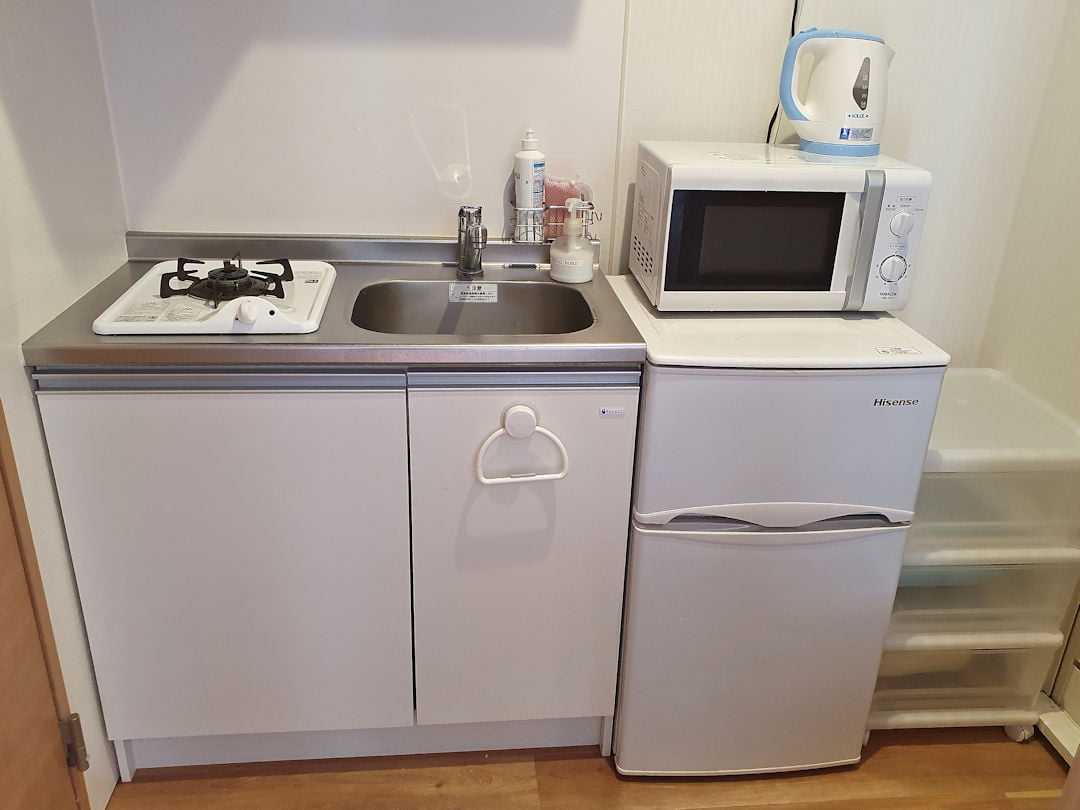
A Japanese apartment kitchen is not big but allows you to prepare your own meals (and save on dining out)
Our transport costs over the three months we explored Japan averaged at JPY1,569 (just under USD12) per person per day .
Given Japan is an island country, we ended up taking two internal flights: The flight from Sapporo, Hokkaido to Nara, Okinawa cost us JPY16,580 each (with Peach Aviation ); while the flight from Nara, Okinawa to Hiroshima on Honshu cost JPY14,460 per person (with ANA ). In both cases unfortunately, we had to check in our travel packs as the strict carry-on limit was seven kilograms.
As we were keen to see the country and had more time to explore Japan than most foreign tourists, we always considered taking slower (and thus cheaper) train options over the Shinkansen. That said, we did want to ride the Shinkansen (and in some cases, there was just no feasible alternative). In the end, we took the bullet train three times: Our Hiroshima to Himeji trip cost JPY8,040 per person ; the Kanazawa to Nagano journey JPY8,590 each and the train ride from Odawara to Tokyo JPY3,280 per person .
The Shinkansen was always markedly more expensive than slower train options. As an example, the distance from Hiroshima to Himeji was 239 kilometres, with a per kilometre cost of JPY33.64 on the Shinkansen, whereas the (slower) Rapid Express train from Himeji to Kyoto – a distance of 127 kilometres – cost JPY2,310 per person or JPY18.19 per kilometre. So if you have time, take the slow train and save money.
And speaking of travelling slowly: If you’re in the Hakone area, make sure to ride the Hakone Tozan Train [ Google Maps location ] between Gora and Odawara. The scenery is stunning, and the train does a number of switchbacks as it journeys down the mountain (or up if you do the trip in reverse) – a very unique experience.
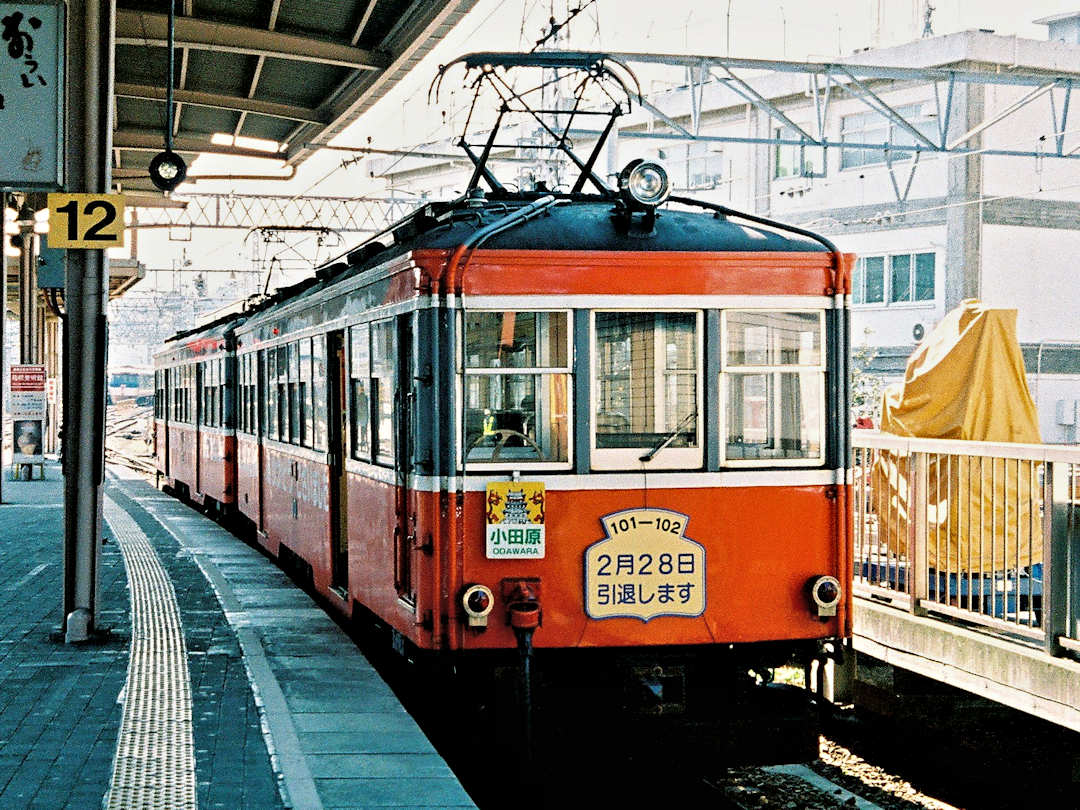
Take the Hakone Tozan Railway for its unique switchbacks down (and up) the mountains | Photo on Wikimedia Commons
Japan boasts an efficient transportation system. But, as we found out, transportation costs add up quickly, especially if you’re travelling a lot around the country.
The Japan-wide JR Rail Pass is a cost-effective option for visitors who plan to move around a lot during their stay. It’s available for 7, 14 and 21 day periods and valid on consecutive days within the chosen timeframe. The pass allows unlimited travel on JR-operated services, including JR trains – even the Shinkansen (just NOT the Nozomi and Mizuho) – and JR-operated city buses. Seat reservations are included with the JR Rail Pass but need to be obtained (free of charge) prior to travel.
The Japan-wide JR Rail Pass can only be purchased by foreigners outside of Japan and must be exchanged for the actual pass upon arrival.
Although the JR ( Japan Rail) Pass is a popular option for foreign tourists visiting Japan , it’s not the only way to save, and it may not even be worthwhile pending your itinerary. To determine if the Rail Pass is worthwhile, use an online route calculator to compare the costs of individual ticket purchases against the price of the pass.
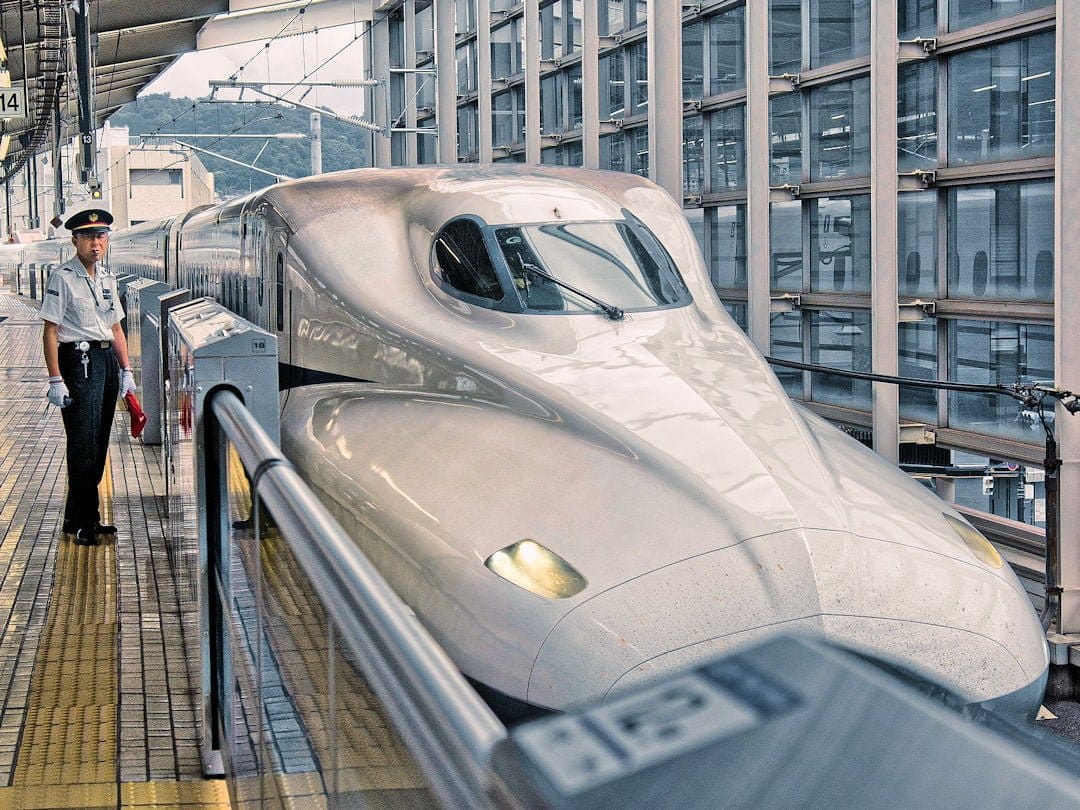
Trains in Japan are (almost) always on time, making train travel easy and convenient | Photo by Armin Forster on Pixabay
If the Japan-wide JR Rail Pass is of no use to you, one (or several) of the many Regional Rail Passes might be worthwhile. A big difference to the Japan -wide Rail Pass: you can buy these passes while already in Japan (though they are slightly more expensive than if you bought them from overseas). Worthwhile options to check out include:
- JR East: the JR Tokyo Wide Pass
- JR West: the Kintetsu Rail Pass, JR West Kansai Area Pass, JR West Kansai Wide Area Pass or the JR Kansai-Hiroshima Area Pass
- JR Central: the JR Takayama-Hokuriku Area Tourist Pass or JR Alpine-Takayama-Matsumoto Area Pass.
Even without any of the rail passes, there are still ways to save on train travel in Japan :
- Shinkansen – Buy a non-reserved seat ticket (where available): This also offers greater flexibility as you’re not bound to a specific train. Which carriages are non-reserved varies from train to train (most often it’s carriages 1-3 or 1-5). Arrive at the platform early to check out where the non-reserved carriages are located and position yourself/queue at the door marker of one of those carriages to increase your chances of getting a seat as you board.
- Alternatives – Opt for Limited Express trains: You may need to change trains along the way, but the trains in Japan are usually on time, and changing trains in Japan is not really stressful, especially if you travel light. Unless you’re travelling during rush hour, Limited Express trains are often less crowded than the Shinkansen, which also means you can save the seat reservation cost (where possible).
Extra tip: In many areas in Japan , you can use an IC card to tap on/off rather than having to purchase individual paper tickets for each journey. This saves time and makes train travel more convenient.
In Japan , you will come across the term IC card a lot (IC stands for Integrated Circuit ). IC cards are essentially plastic cards that can be topped up and the amount stored on the card is used for transportation - simply by tapping on/off at the card reader - and more and more at convenience stores and other places.
Each region issues their own version of the IC card, for example
- If you enter via Tokyo Narita or Haneda Airports, you would buy the Suica Card or PASMO card.
- If you enter via Osaka Kansai Airport, you will find the ICOCA card for sale.
Fortunately, 10 of the most common IC cards (including the two above) can be used across regions (and likely more will be added over time). Some regions (including Nagano and Okinawa prefectures) only allow their own IC card (at this stage) or cash.
Also, note:
- Cards (including any stored funds) will expire after 10 years of non-use, which means you can reuse the card if you return to Japan within that timeframe.
- You can return it (and get a refund of the money on the card plus the deposit you paid for the card itself) - as long as it's in the region you bought it.
- You can load the IC card onto your smartphone - via Apple Pay or Google Pay - but you won't be able to get a refund of your deposit or any funds stored when you leave the country.
Buses can be a good alternative to trains (especially for medium to long-distance travel and on competitive routes). Do note though that while train timetables are (mostly) reliable, buses can be stuck in traffic just like any other road transport (and delays of 30 minutes and more are not unusual).
One way to save on transport costs in Japan is by purchasing a Willer Express Bus Pass . This pass allows you to travel for 3, 5 or 7 days within a period specified by you.
- Advantages: The days of travel do not need to be consecutive, giving you flexibility in your itinerary. Willer Express has a number of night buses which can save on accommodation costs. Additionally, you can easily book your seats in advance online through the user-friendly Willer Express website.
- Disadvantages: The pass can only be used on Willer Express buses and only on the least comfortable 4 seats per row bus types.
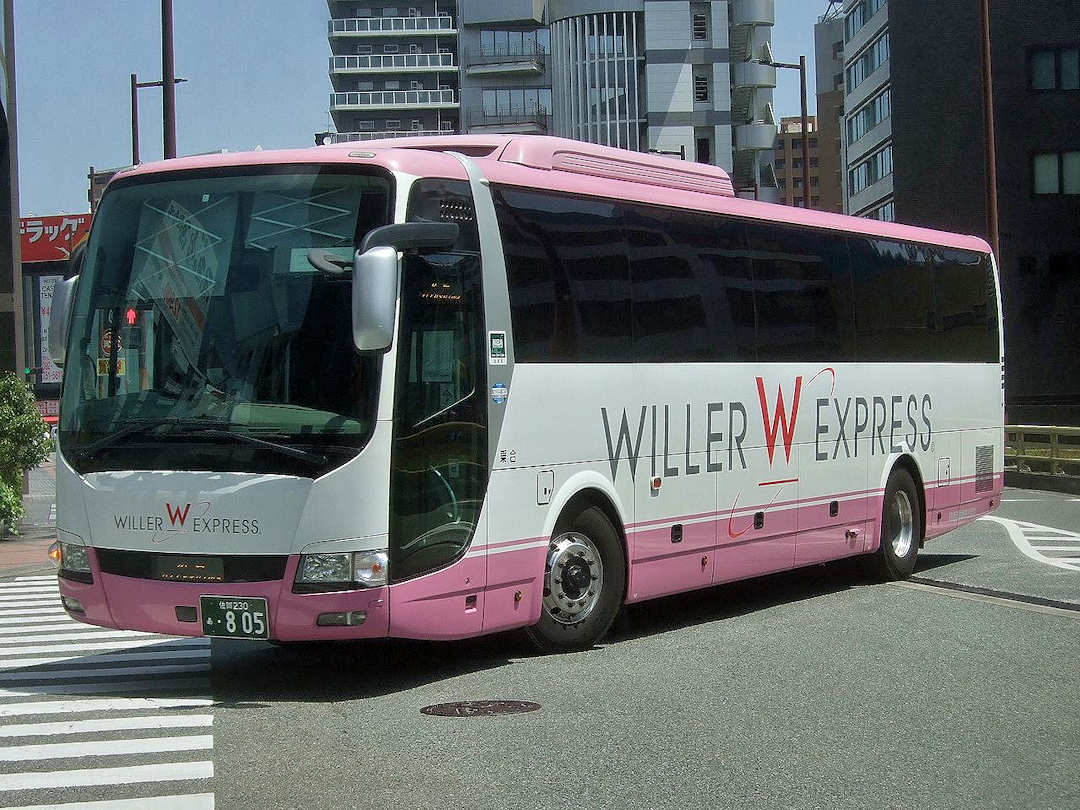
Travellers to Japan may also be able to save on transport costs by using intercity bus services like those provided by Willer Express | Photo on Wikimedia Commons
Even without a bus pass, you can save money when travelling by bus in Japan :
- Avoid backtracking and travel point to point instead – For example, stop in Shirakawa-go on the way from Takayama to Kanazawa (or vice versa) rather than visiting the UNESCO World Heritage site on a day trip – this also reduces carbon emissions.
- Make use of specials – Just ask at the local tourist office at your destination or check the websites of the bus companies operating at your destination, for example Alpico and Nohi Bus in the Japanese Alps. Do make sure though they are worthwhile by comparing individual fares (via Google Maps ) against the special fare.
We always buy travel insurance – because medical expenses overseas can add up quickly and because our carry-on backpacks are pretty much everything we own.
Whenever we buy travel insurance , we make sure we thoroughly read the fine print. It’s tedious, we know. But if you’re planning certain activities (for example, hiring a motorbike or hiking above 3000 metres), it’s crucial to know whether your insurance pays if the worst happens. Otherwise, you may have paid all that insurance premium and are still left to foot a (potentially) massive bill.
For this trip, we used Cover-More. For our three months in Japan , our joint Cover-More Travel Insurance Single Trip International Comprehensive+ Policy cost us AUD1,519/USD1,022 (or just under AUD9/USD6 per person per day) . Although we didn’t need to submit a claim and therefore don’t have first-hand experience of their claims process,we won’t be buying another policy from Cover-More again,

To our surprise, cash is still King in Japan , thus ATM withdrawals are a regular occurence. To avoid unnecessary ATM withdrawal fees we always research before our trips to figure out which overseas bank/s offer/s the best exchange rate and charge/s the lowest fees for ATM withdrawals.
In the case of Japan , we had done all our research. We knew our Bankwest Debit Card charged no foreign transaction fees, and that 7Bank ATMs charged no ATM withdrawal fees. What we didn’t know was that you had to press “Credit” when trying to withdraw with the debit card overseas (Bankwest only told us about that small fact when queried afterwards). After our debit card was declined multiple times, we ran out of time and had to use our credit card. While we had topped up the card with some money beforehand (to avoid nasty cash advance fees), the credit card provider still charged us AUD4 (or JPY382) for the ATM withdrawal. You live and learn.
Unless you’re planning to hike the Kumano Kodo or Nakasendo , you are likely not going to need luggage transfer service. We ended up using luggage transfer twice (both times with Yamato Transport):
- on our final day on the Kumano Kodo , paying JPY2,500 for the same-day transfer of one travel pack from Koguchi to Nachikatsuura; and
- during our Nakasendo hike , paying JPY1,620 for the standard transfer of one travel pack from Osaka to Matsumoto.
We also used luggage storage facilities on occasion to store our travel packs for a few hours or excess luggage during our Kumano Kodo hike for a whole week. Those storage costs added up to JPY3,640 in total ( an average of JPY607 per storage use ).
If you need to store excess baggage in Osaka, we recommend Daikoku Locker . Alternatively, you can try Radical Storage who have agencies all over Japan .
When you explore a country for three months, you will likely need a hair cut (in that country). I had mine at a barber in Osaka about half-way through our trip for JPY2,200 (a bit over USD16) .
We both also took the opportunity to get a 90 and 60 minute massage, respectively, just before the Nagano Marathon at Relaxation Salon Lovina [ Official website , Google Maps location ] for a total cost of JPY13,200 (or JPY6,600/around USD49 per massage ). It was well worth it, and we both would recommend it to anyone visiting Nagano.
Withdrawing cash overseas can be expensive but it doesn’t have to be. We can show you how to avoid unnecessary fees and make your travel budget stretch further.
How do you determine which card is best for your overseas trip? Using the right one can save bank fees and make your travel budget stretch further.
Ever been caught out by the bad FX rates and exorbitant commissions charged by FX bureaus? These tips allow you to minimise these charges in future . We also recommend XE Money Transfer to keep more of your money when you complete a transfer.
When visiting a Shinto shrine, it is traditional and appropriate to make a donation. It doesn’t have to be a lot, especially when you are throwing loose change into the large container before you bow your head and clap your hands. All our donations added up to JPY1,511 .
I wrote this Japan Travel Costs article based on our own unique experience. If you have been to Japan recently as well and you have something to add to the costs for exploring Japan , please feel free to contact us. If you liked my Japan Travel cost tips and found them helpful, I would appreciate it if you could share them with your friends and family via the Share buttons below. Even better, link to the page from your personal blog or social media platforms.
- Travel Planning Guide
How much does a trip to Japan Cost?

How much money should you budget for your trip to Japan?
- How much does a one-week trip to Japan cost?
- How much does a two-week trip to Japan cost?
- How much does a one-month trip to Japan cost?
- Hostel Prices
- Hotel Prices
The Cost of a Trip to Japan
For a trip to Japan, you should plan for daily costs anywhere between $47 to $304. If there's two of you traveling, your daily expenses could range from $94 to $609. These price ranges are based on the average daily spending of $119 (¥18,714) per person which comes from the travel expenses of other visitors. These costs include food, accommodation, sightseeing activities, and getting around locally. Keep in mind, though, these figures can vary somewhat based on your individual travel style, level of luxury, and chosen activities. Destinations across the country, such as Tokyo, Osaka, and Kyoto, might might vary somewhat from the overall average price, but they usually stick close to this range. Read on for a breakdown of travel typical expenses as well as a comparison of tour prices versus Independent travel.
If you're planning an Independent trip to Japan, budget travelers should plan to spend around $47 (¥7,364) per day for their trip. This average includes hostels and budget hotels, affordable meal options, local transportation, and activities. If you're on a mid-range budget, plan for around $119 (¥18,714) a day which covers the cost of typical hotels, normal restaurants, and a variety of popular attractions. Luxury travelers should allow for $304 (¥47,763) a day, which would cover higher-end hotels, nicer restaurants, and more private tour options. All of these price ranges are based on our extensive travel cost data for Japan from other travelers, along with hotel and tour data from travel companies.
How much does a one week trip to Japan cost?
On average, visitors to Japan spend between $328 and $2,130 for their week-long adventure, with the average being $835. This covers sightseeing, local transportation, food, and accommodations. With a duration of one week, you'll have the opportunity to explore one, two, or even three locations within Japan, depending on the level of depth you desire for your visit. Some of the most popular places to consider exploring are Tokyo , Osaka , and Kyoto . It's important to note that these figures are averages and can vary based on personal preferences and choices. Ultimately, the goal is to create a memorable and enjoyable experience tailored to your specific interests.
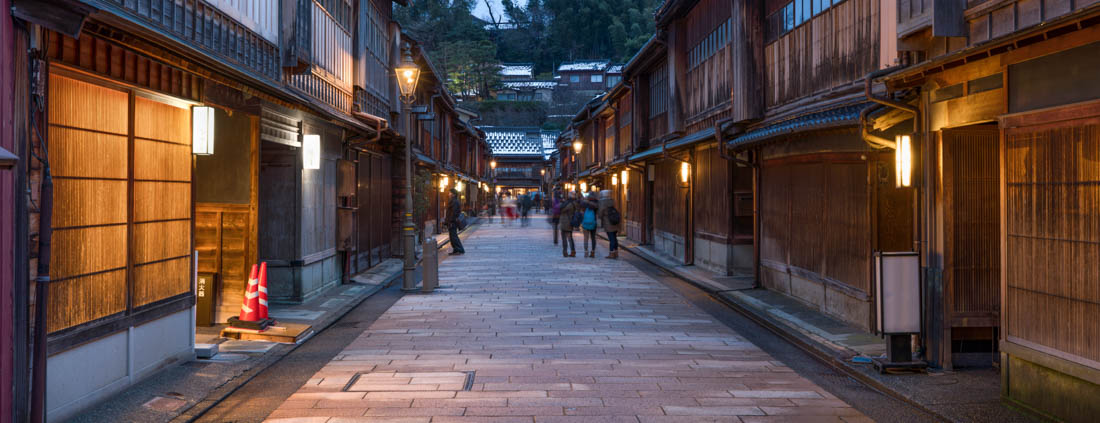
How much does a two week trip to Japan cost?
With two weeks, you should budget between $657 and $4,260 for your trip to Japan. The average price for a two week trip is $1,669. Two weeks will allow you enough time to visit between three and five places. If you're on a budget, you might want to consider some of the more affordable places such as Sado, Dewa Sanzan, and Mashiko.
How much does a one month trip to Japan cost?
When embarking on a month-long trip to Japan, expenses can range from $1,407 to $9,129, with an average cost falling around $3,577. For those fortunate enough to have a full month, considering a vacation rental with a kitchen for at least a portion of your stay can help save money with meals. Backpackers often opt for hostels due to their affordability and the added benefit of a social vibe.
Hostel Prices in Japan
With more than 220 hostels in Japan, the average price is $23 per night for a dorm bed. Hostels are a terrific option for younger independent travelers looking to save money while staying social during their trip. With many types of hostels, it can be overwhelming to sort out the best places, though. Our analysis of the hostels in Japan not only found the average price, but also uncovered some surprises about the overall quality, amenities, and atmosphere of hostels in the region. You can see more details from our analysis about typical hostel prices in Japan here .
Here are a few sample prices from popular hostels in Japan.
- $26 for a dorm bed at Sakura Hostel Asakusa in Tokyo more details
- $22 for a dorm bed at Guesthouse U-En in Osaka more details
- $25 for a dorm bed at Backpackers Hostel K's House Kyoto in Kyoto more details
Hotel Prices in Japan
You'll find a wide range of hotel options across Japan. Below are prices for some of the destinations, and for more details see our analysis of hotel costs in Japan .
Disney Ambassador Hotel
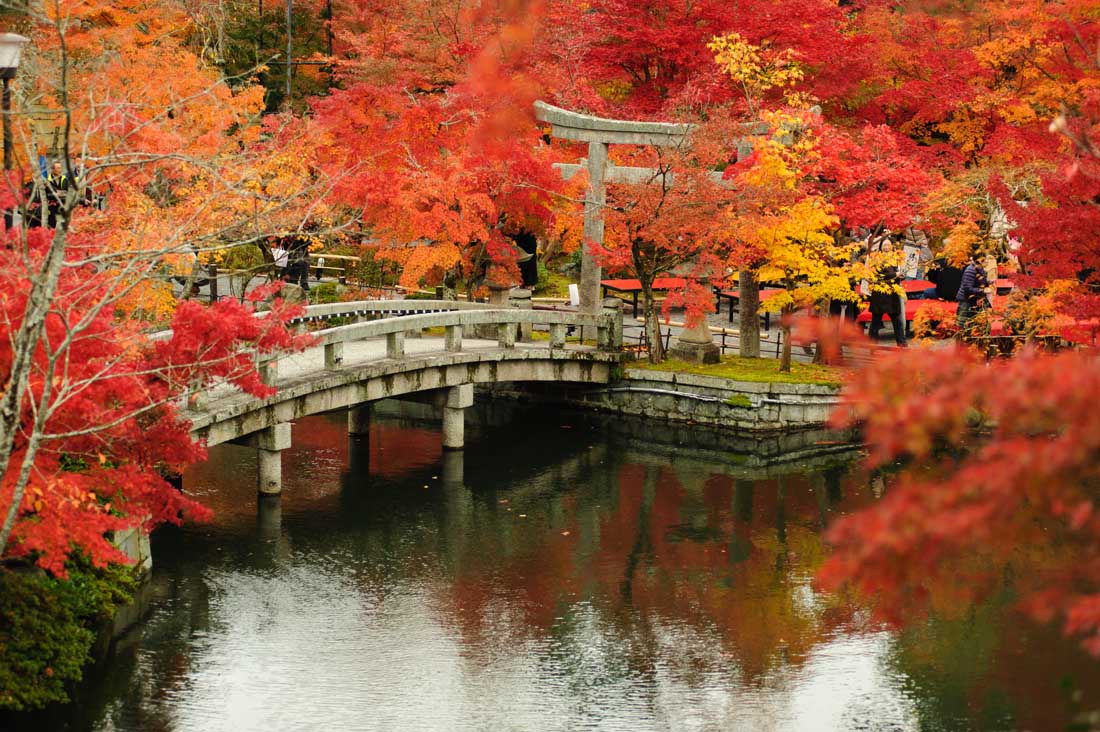
Should you do an organized tour or travel independently in Japan?
Organized tours and independent travel are essentially the two main ways to plan a trip to Japan. Organized tours offer a convenient and hassle-free experience, with travel experts handling all the logistical details and the added benefit of an expert guide imparting valuable insights. This option is favored by those who appreciate the convenience and ease provided by tours that often include transportation and expert guides.
On the other hand, independent travel provides a different set of advantages, allowing for greater freedom and flexibility in customizing itineraries and exploring at one's own pace. This option appeals to individuals who value spontaneity and control, enabling them to immerse themselves in local culture on a deeper level.
Ultimately, the choice between organized tours and independent travel depends on personal preferences and travel style, considering factors such as convenience, guidance, and flexibility.
Comparing Trip Costs in Japan
When we compare the prices of organized tours to the average costs of independent travelers, we can see that sometimes the prices are fairly even.
Tours vs. independent Travel: Pros & Cons
Organized tours.
- An expert guide familiar with the culture
- Convenient transportation
- Fellow travelers to socialize with
- Well researched activities
- Efficient and thought out itinerary
- The security of have a trip leader if something goes wrong
- Limited options
- Usually not customizable
- The fast pace often means you can’t visit one place in depth
- Usually more expensive than independent travel
- There may be limited time to interact with the local culture and community
Independent Travel
- Completely customizable
- Opportunity to visit off-the-beaten-path destinations
- Can fully immerse yourself in the local culture
- Freedom to move at your own pace
- Flexibility to change your itinerary at any time
- More affordable
- Challenging to plan an efficient itinerary
- Transportation may be challenging or inefficient
- Booking and trip planning can be a hassle
- Popular sights may sell out well in advance
- If something goes wrong, you're on your own
Are organized tours more expensive than independent travel in Japan?
Organized tours typically average around $419 per day and provide the convenience of an all-inclusive package with one comprehensive payment. On the other hand, independent trips usually average around $119 (¥18,714) per day and involve individual payments for accommodations, local transportation, meals, and sightseeing. Both organized tours and independent trips have their own unique challenges and benefits, so it's crucial to thoroughly understand the aspects of each to make a fair comparison. For a detailed analysis of tour prices in Japan, check out our comprehensive guide on tour prices in Japan here .
Here are a few sample tours in Japan:
- Environmental Conservation Volunteering, Cultural Immersion and Temple Stay on Sado Island ($759) 8 days, 1 destinations more details
- Japan´s Landscapes ($4,547) 13 days, 21 destinations more details
- Essential Japan and Hakone end Tokyo ($3,676) 10 days, 16 destinations more details
- Japan's Kumano Kodo ($9,148) 14 days, 8 destinations more details
- 【Japan】12 Days Japan Grand Luxury Tour ($6,138) 12 days, 8 destinations more details
More for Japan
If you're planning a trip to Japan, check out these other informative travel guides.
We've been gathering travel costs from tens of thousands of actual travelers since 2010, and we use the data to calculate average daily travel costs for destinations around the world. We also systematically analyze the prices of hotels, hostels, and tours from travel providers such as Kayak, HostelWorld, TourRadar, Viator, and others. This combination of expenses from actual travelers, combined with pricing data from major travel companies, gives us a uniqe insight into the overall cost of travel for thousands of cities in countries around the world. You can see more here: How it Works .
Subscribe to our Newsletter
Coupons and discounts! Travel tips!
1 Categories averaged on a per-item basis. 2 Categories averaged on a per-day basis. For example, the Food 2 daily average is for all meals for an entire day, while Entertainment 1 is for each individual purchase. Thus, the overall daily average cost is not a summation of the individual categories.
- You are welcome to reference or display our travel costs on your website as long as you provide a link back to this page .
- For a basic link, you can copy and paste the HTML link code, or this page's address. Address Link HTML Japan Travel Costs " disabled />

Some of the links on this website are sponsored or affiliate links which help to financially support this site. By clicking the link and making a purchase, we may receive a small commission, but this does not affect the price of your purchase.
- Privacy / Terms of Use
- Activities, Day Trips, Things To Do, and Excursions

Is Japan Expensive? My EXACT Japan Trip Cost Breakdown Revealed
I spent an unforgettable month in Japan during the cherry blossom season in April 2023. This was my fifth trip to Japan in the last decade, however, most of those previous trips were snow trips, with not as much time spent exploring the cities.
As the first stop on our big 5-month world adventure, my husband and I made it a mission to track everything we spent in Japan over 4 weeks. While most people may have a perception that Japan is an expensive country to visit, I think the cost of travel to Japan is not as expensive as you might think.
In this article I reveal our exact Japan trip cost, breaking it down by categories along with tips for how to plan your own Japan travel budget and ways you can save money.
Let’s get into the numbers!
Table of Contents
How Much is a Trip to Japan? Summary Japan Trip Cost Breakdown
Crunching the numbers, in short, my month-long trip to Japan in April 2023 cost around ¥850,000 total for two adults.
At today’s exchange rates, that’s just shy of AUD $8.5k total or AUD $315 per day for two people.
However, at the time of writing this article in May 2024, the Yen is at a record decade high relative to the Australian dollar. Unfortunately for me, my trip actually cost me closer to AUD $10k total at the time.
I think this is my sign to book another trip?!
The majority of my readers are based in Australia, so I’ll refer to the Australian dollar as my primary currency, but for reference here are the equivalent costs (for two people) at today’s exchange rates:
- AUD $315 per day
- USD $210 per day
- EUR €195 per day
Let’s break that down by category:
Note that I have excluded the costs of flights for two reasons.
- We flew one way from Australia to Japan and then flew from Japan to Europe so the costs aren’t a good benchmark for a return trip.
- Flight prices are very dependent on the time of year, and location you are flying from. Generally speaking, expect flight prices to be the highest during the cherry blossom season (March-April) and over the Christmas period.
Traditionally, I’ve been able to get return flights around the $800 – 1,200 from Perth, Western Australia for previous trips.
I’ve also excluded the cost of our travel insurance, as we had purchased a 5-month policy from Covermore (my go-to travel insurance provider in Australia) to cover our entire trip.
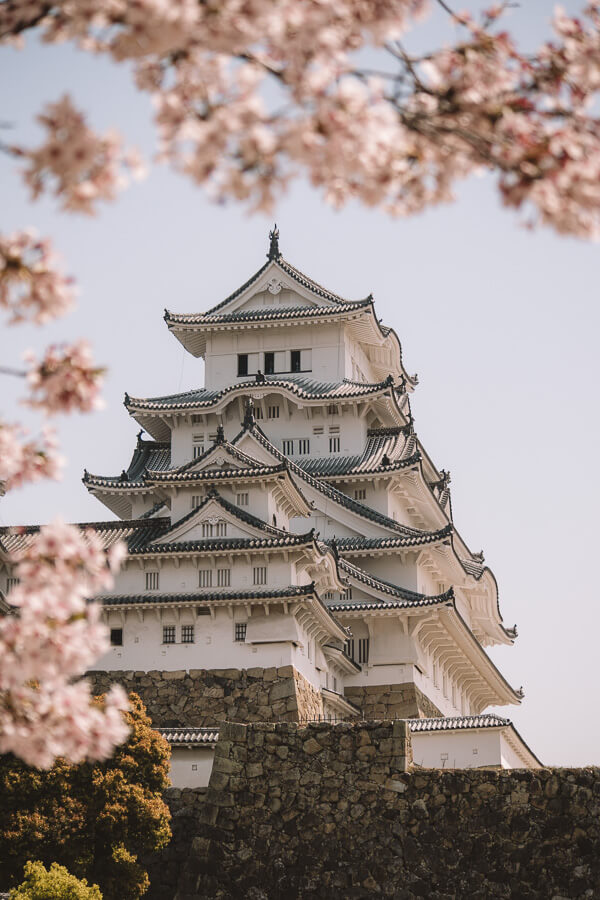
Accommodation
Accommodation will likely be your biggest expense for your trip to Japan.
Hotels are fairly expensive for the size of the rooms. I’ve stayed in many cheap Japanese business hotels which were clean and comfortable, but basically were just slightly larger than a shoebox!
Accommodation accounted for about 40% of our budget for our 4-week trip at an average cost of $120 per night for the two of us. We stayed in a mixture of hostels (private rooms), guesthouses, boutique hotels, and business hotels and had one splurge night at a ryokan (which cost $600 for one night!).
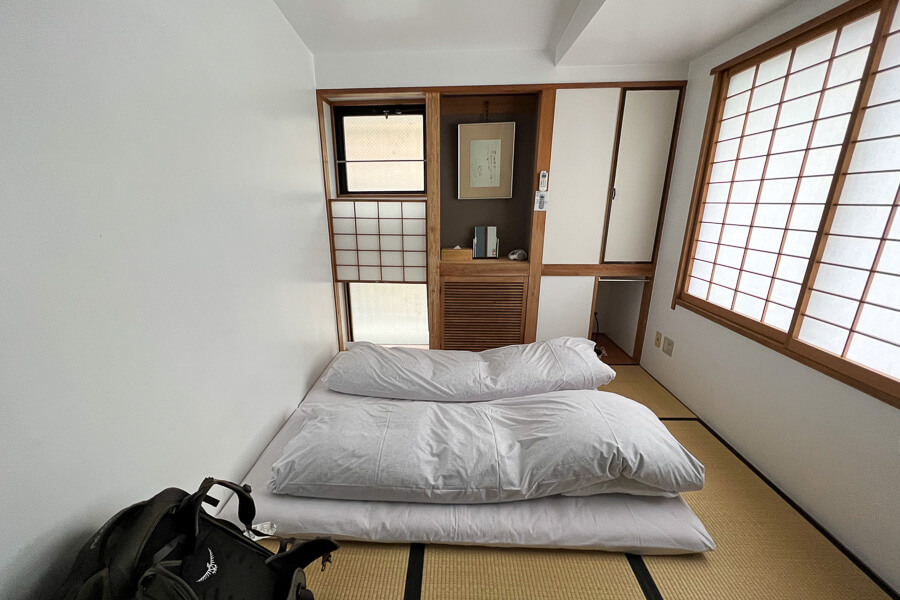
To save on accommodation , we often stay at guesthouses or private rooms in hostels that come with shared bathroom facilities as they tend to be spotlessly clean in Japan.
Some of my favourite budget accommodation from our recent trip included:
- Kimi Ryokan Guesthouse in Tokyo (I’ve stayed here 3 times now!)
- Hotel Sobial Namba in Osaka
- Hotel Pacific in Kanazawa
- Hostel Michikusa-ya in Kawaguchiko (which came with a view of Mt Fuji!)
The most expensive accommodation (in terms of value for money) I’ve found is Kyoto – and that was staying in TINY rooms, albeit in convenient locations.
To save money on accommodation in Japan, consider staying at business hotel chains .
You’ll find these across the country. They offer good value accommodation if you’re looking for a clean, comfortable and affordable place to sleep at night, but also have extra facilities like coin-operated laundry machines and even provide pyjamas at some of them!
Common chains to look out for include APA Hotel, Daiwa Roynet Hotel, Dormy Inn, Tokyo Inn and my new favourite, Via Inn. We stayed at three different Via Inn properties on my last trip alone! (Two in Osaka, and one in Tokyo).
I use booking.com to book all my accommodation in Japan, filtering for properties with a rating score of over 8.0 and making sure to find accommodation that is close to a subway station (in cities like Osaka and Tokyo).
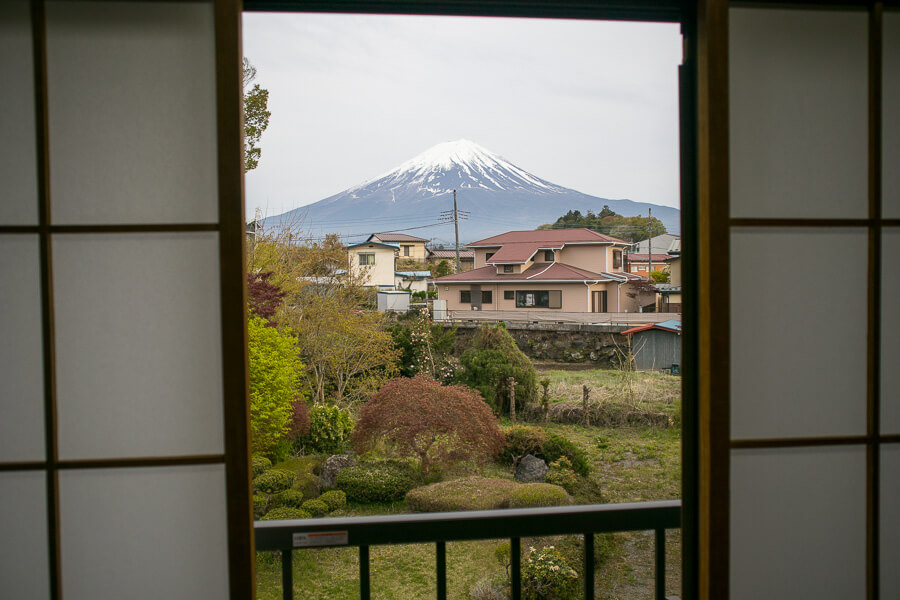
I haven’t stayed in a capsule hotel in Japan, simply because I’ve always been travelling with my husband who is 196 cm tall and doesn’t fit in them! But they look like a fun and unique way to save on accommodation, especially if you’re travelling solo.
Tip: When booking accommodation in Japan, it’s common to find that many properties only take bookings from 6 months out. So if you’re searching quite far in advance, you may not see any availability.
Food & Drink
Food and drink were the next biggest expense of our trip. however, I don’t think eating out in Japan is expensive – for what you pay the food is of high quality. The reason for our “high” spend in this category is that when I travel Japan, I do NOT hold back on eating and drinking.
Now I’m not paying hundreds of dollars for fancy dinners, but I do eat a lot, and eat very well. It’s one of my favourite things about Japan. From fresh sashimi, melt in your mouth wagyu beef to rich bowls of ramen – the food in Japan is next level.
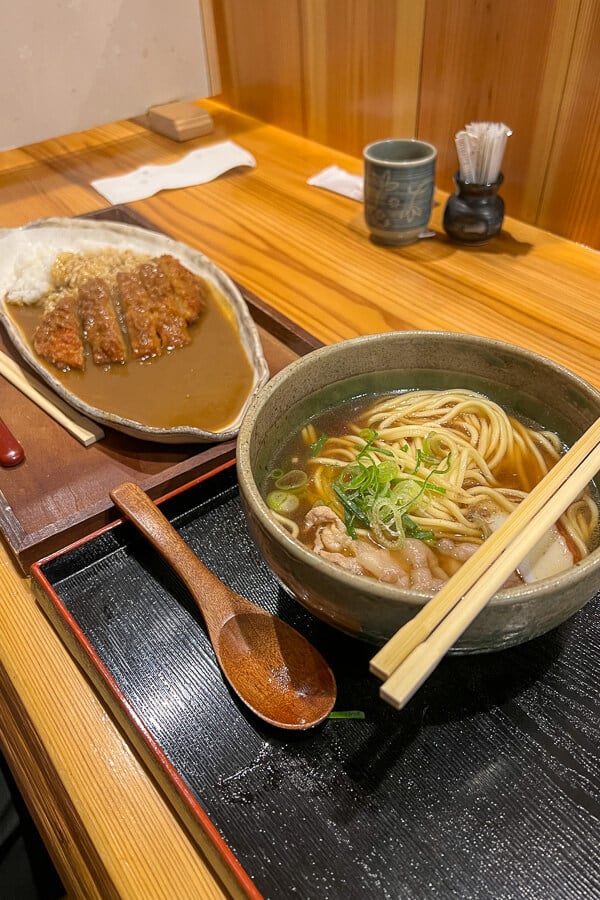
We averaged $109 per day for two people or 35% of our budget on eating and drinking. This might be higher than the normal traveller, given our tastes and the fact that eating out in Japan is as much an activity for us as visiting a castle or temple.
However, there were also many nights when after getting over 20,000 steps in, or after our MASSIVE day at Universal Studios Japan in Osaka, we couldn’t bring ourselves to head out for a proper dinner.
This is where the amazing Japanese Konbini comes in – we love grabbing a cheap and cheerful dinner from the nearest 7/11 or Lawsons, which you can heat and take back to your nearby hotel.
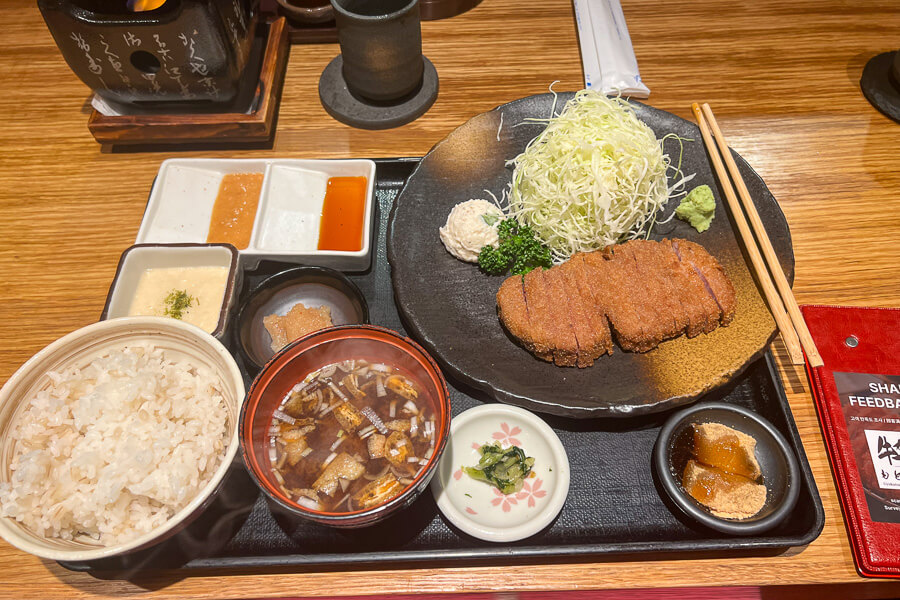
As self-proclaimed coffee snobs, we also tend to treat ourselves to at least one or two single-origin filter coffees in Japan per day. I’m almost embarrassed to say it, but on our most recent trip, we spent nearly $50 on a VERY special coffee at Glitch in Osaka.
We’re also avid sake lovers, and went all-in on the sake tastings and visiting quite a few sake bars. Some personal favourites that I’ve shared in my Osaka itinerary and Tokyo itinerary were Sake Bar Shiki in Osaka and Yata Yata in Shinjuku, Tokyo.
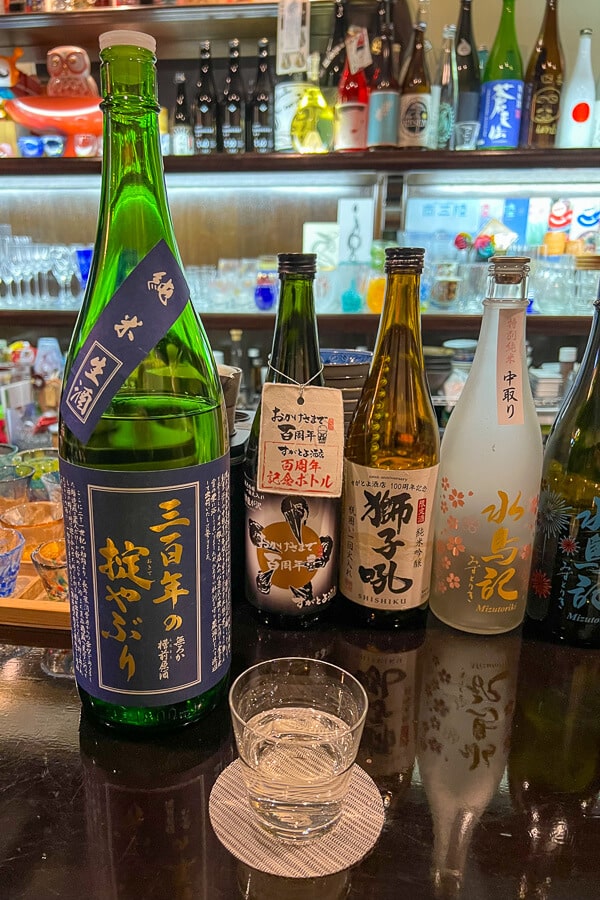
Comparing our spend on alcohol vs coffee, I can confirm we spent more on coffee than alcoholic drinks… Which I think says enough about us – ha!
Your next biggest expense is likely to be transport, which cost us $43 per day and made up 14% of our total spend.
This was made up of a combination of using the subway within cities like Tokyo and Osaka, long-distance Shinkansen train rides between cities, the airport train from Narita and highway buses between towns like Kanazawa and Takayama .
You’ll be heavily reliant on the efficient public transport system in Japan, but it isn’t necessarily cheap.
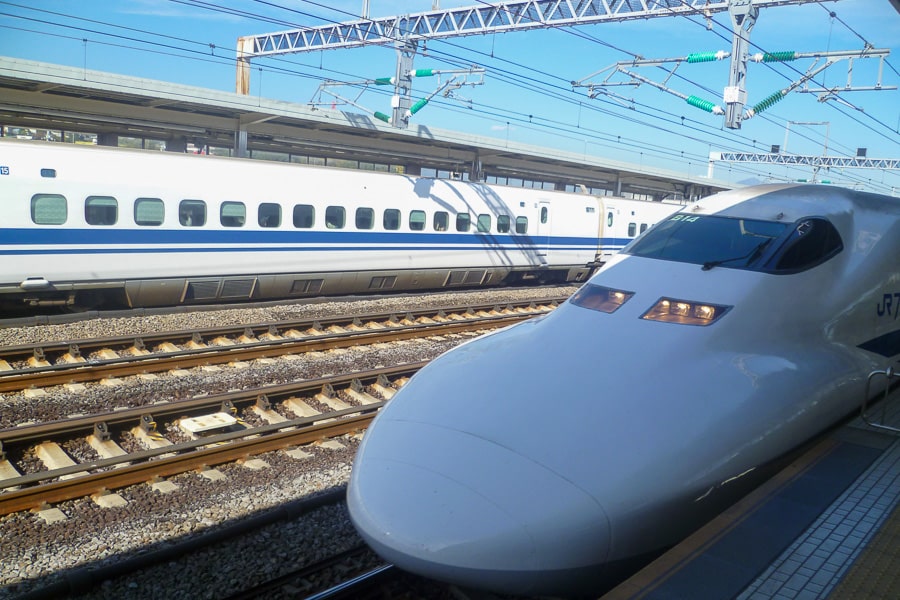
If you’ve read my Things to Know Before Visiting Japan guide, you’ll know I don’t recommend getting a JR Pass anymore after a significant price rise in October 2023.
Simply buy individual tickets for the Shinkansen. You can do this:
- In person at the station on the day (or a few days beforehand) using the ticket machines (in English) or at the ticket office; or
- on the SmartEx app (certain routes only); or
- purchasing in advance online through Klook (although prices may be slightly higher than buying them in person, but you are paying for the convenience)
Activities and Attractions
Next up are activities and attractions, which averaged out at $14 per day for the two of us, or 5% of our budget which I think is fairly low,
Our big ticket item was our tickets to Universal Studios Japan, but other than that most of our other ticket costs were in the $10 – $20 range.
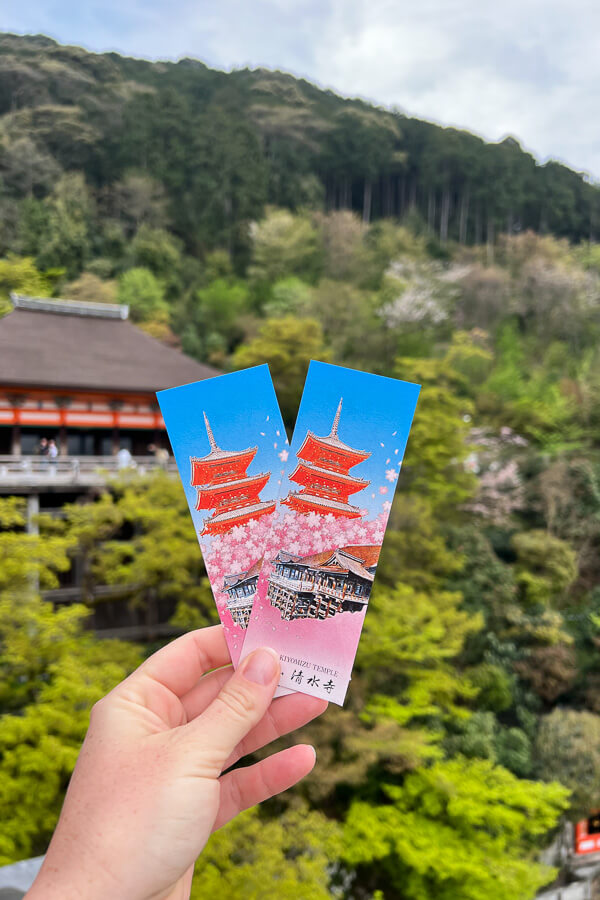
This included entrance fees to the many castles, temples and gardens we visited, as well as our tickets to the Fuji Shibazakura Festival and Shibuya Sky.
There are lots of free things to do in Japan and many ways to fill your days that don’t cost the earth.
Whether it’s wandering the buzzing electric town of Akihabara in Tokyo or hiking under the thousand torii gates at Fushimi Inari in Kyoto, there’s lots of fun activities you can do at zero or low cost in Japan.
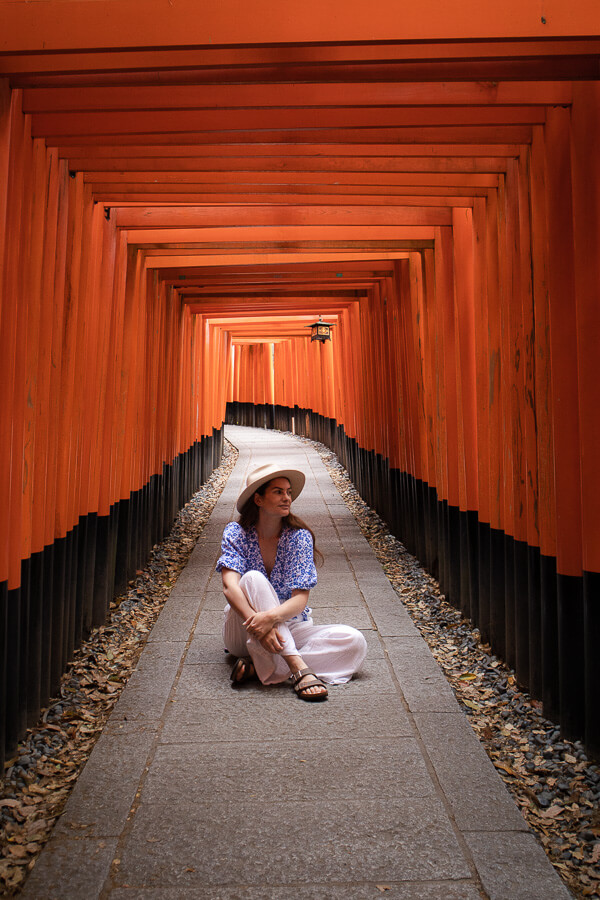
Ahh, shopping in Japan. It’s probably a good thing Japan was the first stop on our 5-month world adventure, which meant we couldn’t physically buy too much otherwise we’d spend the next 4 months lugging it around in our backpacks!
Even then, we had to mail a small package home of some of our favourite Japanese souvenirs that we picked up on this trip (which included this beautiful sake set that we picked up at a sake brewery in Fuji Five Lakes!).
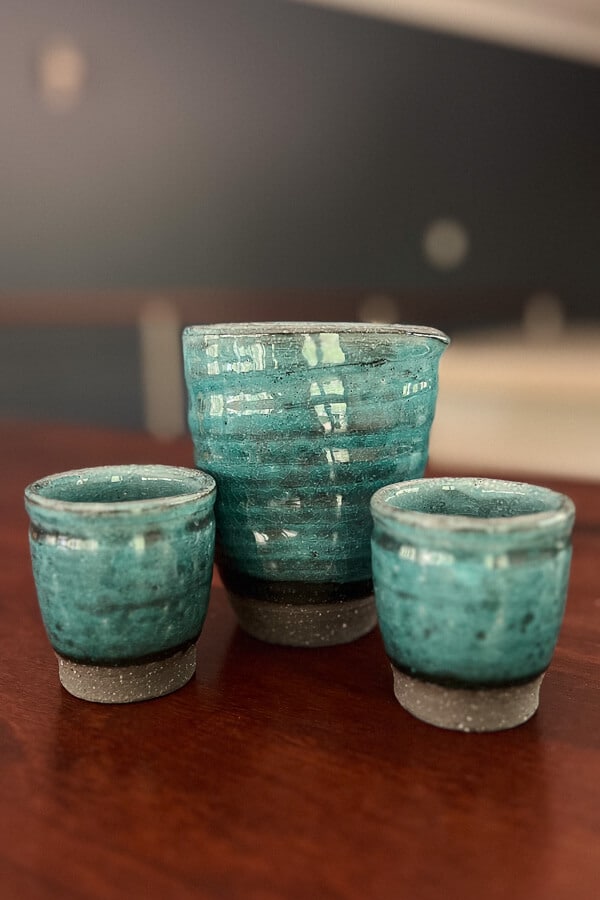
The shopping is awesome in Japan, full stop.
Whether it’s colourful anime figurines, unusual flavours of Kit Kats, Japanese skincare or vintage clothes, I’d recommend making sure you leave some room for the inevitable purchases you will make during your time in Japan.
We spent $12 per day (averaged over a month though, keep in mind), which was 4% of our total spend.
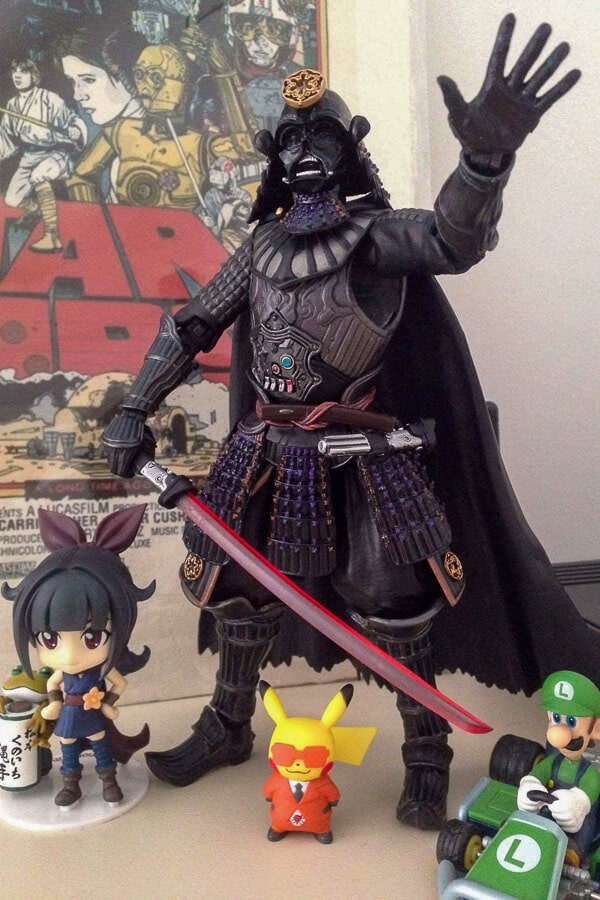
For me, staying connected in Japan is essential.
I rely on Google Maps religiously to get around and to find the best restaurants and places to eat on the go. On this trip, this was our first time trying eSIMS (we’d previously used pocket WiFi and physical tourist SIMs), and I’m now an eSIM convert.
It’s a no-brainer to use eSIMs if you have an unlocked phone, as you can have internet access from the minute you step out of the plane and don’t have to fiddle around with changing physical SIM cards in your phone.

I used AirAlo and it was a seamless process to set up the eSIM for first-time use, and then to recharge it once I used all my data up very quickly (ha). I now use AirAlo for all my trips, but my husband used Ubigi in Japan and had no issues with them either.
You can check out AirAlo Japan plans here for comparison.
Between us, we spent $3 a day on data (just 1% of our spending).
Miscellaneous
This consists of small things like baggage storage at train station lockers, coin-operated laundry and luggage forwarding services between cities (another great hack when travelling in Japan).
This averaged out to $3 a day .
Wrapping things up, the last expense on our 4-week trip to Japan was a rental car in Kawaguchiko .
This was my first time renting a car in Japan, and I have never needed a rental before nor do I think it’s strictly necessary for you, even if you’re visiting Kawaguchiko.
However, as we had planned to go to the Fuji Shibazakura Festival and a few other sites out of town, we decided it was easier to hire a car than to catch infrequent buses.
Car rentals are fairly expensive – we paid $250 for a 3-day hire.
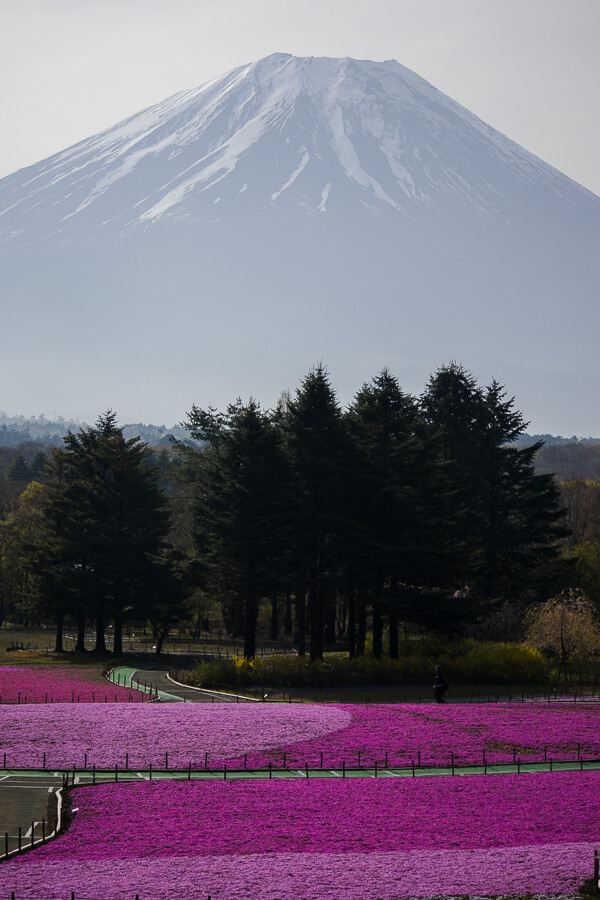
So, Is Japan Expensive?
In summary, I don’t think Japan is expensive to visit – I would consider it on par with a holiday in Australia or places in Europe like Italy or Germany.
In fact, as an Australian, I would consider a week in Tokyo to be much cheaper than a week in London or Paris.
Accommodation and dining will likely be your biggest expenses, and these are things that are fairly easy to manage and find good-value alternatives if you are travelling on a strict budget.
As a 30-something married couple, we don’t do the typical shared dorm room hostel thing these days. We still managed to find great, clean, comfortable and cheap lodging in guesthouses, private hostel rooms and business hotels for $80 – 90 a night, even in cities like Tokyo and Osaka during peak tourist season in April.
There are also so many free and low-cost activities in Japan that balance out against bigger ticket attractions like the incredible theme parks.

How Much Does a Trip to Japan Cost for 2 Weeks
Whilst we spent a month in Japan, most travellers will spend around 2 weeks in Japan. For this length of trip, I would budget $4 – 5k for a couple of mid-range travellers looking to spend 2 weeks in Japan (excluding flights and travel insurance).
Here’s the average cost of a trip to Japan for a typical mid-range traveller:
- Accommodation: $100 – 200 per day
- Food & Drinks: $70 – 120 per day
- Transport : $20 – 40 per day
- Activities & Attractions: $10 – 40 per day
- Total: $200 – $400 per day
Don’t forget to budget for the inevitable shopping you’ll do too!
If you’re heading to the slopes during ski season, expect to pay more as accommodation prices will be higher in the snow and lift tickets are fairly expensive.

Final Thoughts – Cost to Travel Japan
That wraps up this detailed analysis of our EXACT Japan trip cost (can you tell I used to be a data analyst in my former corporate life ?!).
I find it really interesting to look back and see all the costs broken down, and I hope this has been helpful to give you an idea of how much to budget for your own trip.
Let me know in the comments below if you have any questions, and don’t forget to check out my other Japan travel guides to help you plan your trip. Happy adventuring!
Japan Itineraries:
- A Fun 7 Day Tokyo Itinerary: Complete 1 Week in Tokyo Guide
- A Perfect 4 Weeks in Japan Itinerary: Ultimate Travel Guide
- An Exciting 4 Days in Osaka Itinerary for First-Timers
- Exploring Fuji Five Lakes: 3 Days in Kawaguchiko Guide
- Takayama Itinerary: 2 Days Discovering Traditional Japan
More Japan Guides:
- How to Plan a Trip to Japan: Ultimate Japan Travel Guide
- 15 Things to Know Before Visiting Japan for the First Time
- 30 Unmissable Experiences for Your Japan Bucket List
- Koyasan Temple Stay: Essential Travel Guide & Tips
- Guide to Visiting the Fuji Shibazakura Festival in 2024
- 10 Best Tokyo Cherry Blossom Spots for Incredible Photos
- Cool Stuff to Buy in Japan: 20 Souvenirs Actually Worth Buying
- How to Easily Visit the Chureito Pagoda from Tokyo
- 10 Most Mesmerising Views of Mt Fuji from Kawaguchiko
TRAVEL PLANNING RESOURCES My tried and tested recommendations to make your next trip easier
🛡️ Travel Insurance: For my fellow Aussies, I use CoverMore for domestic and overseas travel insurance and they've been great to deal with. Travel with peace of mind knowing you're covered for unexpected events, ensuring a worry-free journey.
🌐 Stay Connected: After trying an eSim for the first time when travelling Japan & Europe for over 4 months in 2023, I'm officially converted! Thanks to Airalo , gone are the days of needing to physically swap plastic sim cards every time you enter a new country. Stay connected wherever you go by easily and affordably purchasing an eSim for all your travel destinations.
🚗 Easy Car Rental : Enjoy hassle-free car rentals on DiscoverCars with a wide range of options, competitive prices, and excellent customer service. I often find it's cheaper than booking direct, and I can compare a large range of suppliers to make sure I'm getting the best price.
💱 Access Local Currency: I've been using Wise in my business and on my travels to save on currency exchange and it's been a game changer! Wise provide a transparent and cost-effective way to access and manage local currency, with minimal fees and the best exchange rates compared to the traditional travel cards which sneakily charge extra fees and usually give you a poor exchange rate. Find out more here .
🏨 Accommodation: I book all my accommodation through booking.com . Discover their vast selection of accommodations worldwide, with great deals and flexible booking options. Plus, if you join their Genius Loyalty program, you get special benefits and discounts on selected stays.
🌟 Attractions & Tours: GetYourGuide is my preferred platform as they make it super easy to compare different tours, book experiences and get the best prices for tours across the world. I've downloaded their mobile app to have all my bookings in one place to easily pull up details when I've got multiple tours booked.
📸If you're wondering what I've used to capture the photos in this article, you can see what's in my camera bag here .
☕ Finally, if you found this free guide useful, you can buy me a coffee to say thanks :)
Just a quick note to let you know this post may contain affiliate links . At no extra cost to you, I receive a small commission on purchases made through these links. By doing so, you are supporting this blog and allowing me to continue providing you with free high-quality travel guides. Thank you!
Leave a Comment Cancel reply
Save my name, email, and website in this browser for the next time I comment.
Lists by Lukiih 🍀
Practical travel guides with less fluff
- 💰 My 2024 Japan Trip Cost: A Budget Breakdown
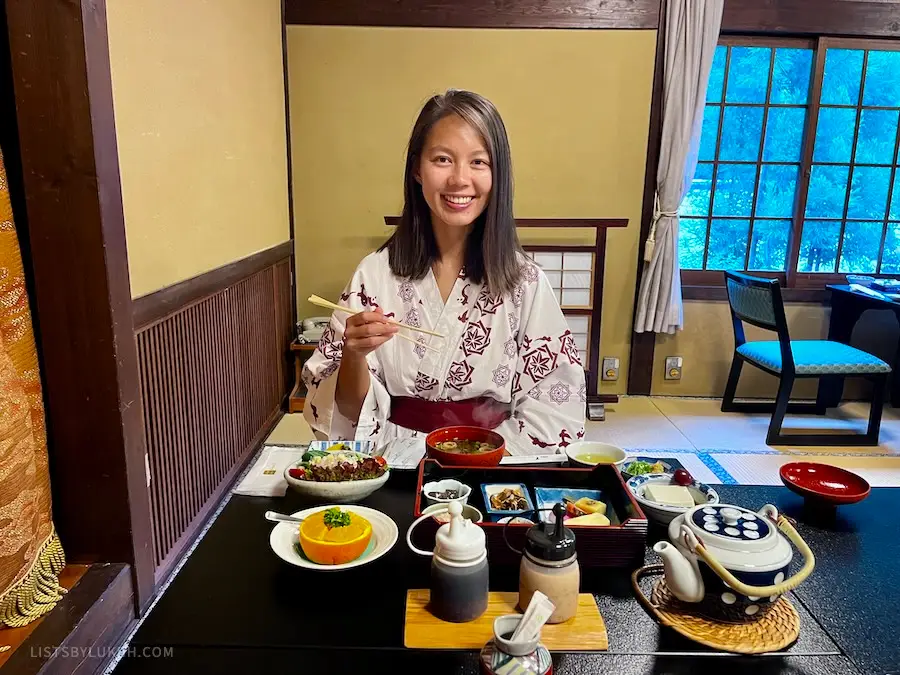
Japan, a country famous for its cherry blossoms and temples, can be visited with a budget of $60 to $120 a day.
My two-week trip to Japan cost a total of $2,829 . In this post, I share:
- 💰 Expected travel costs
- 💡 Budgeting tips
- 💵 How much cash to bring
- ✈️ My trip’s costs by category
- 📍 My trip’s costs by major cities
Planning a trip? Here’s what to know about Japan .
- Is Japan Expensive?
- How Much Is a Trip?
- About My Trip
- Cost Breakdown
- Daily Budget: $145
- Flight: $796
- 🏠 Accommodation Cost in Japan: $807
- Transportation: $374
- Entertainment: $155
- Kyoto: $616
- Withdrawing Cash
- How Much Cash To Bring
- Cash-Only Places
- Tipping Etiquette
Lists By Lukiih is readers-supported. When you buy with my affiliate link, I may earn a small commission. Thanks!
Is Japan Expensive To Travel To?
Japan ranks as one of the most expensive destinations in Asia. While it can be visited with a lower budget, Japan has pricey accommodations in major cities, the Japan Rail Pass is not cheap, and fees for attractions can add up.
Along with Singapore and Hong Kong, Japan is often considered a luxury destination in Asia.
However, with advanced planning and the willingness to forego certain experiences, Japan can be visited on a small budget .
💰 Trip Daily Budget for Destinations in Asia
For comparison, I visited these countries in Asia within a year of visiting Japan, and here’s how much I spent per day at each one:
*My Cambodia daily budget is high because I splurged on accommodation.
See all my daily budget for each destination I’ve visited .
How Much Is a Trip to Japan?
This section covers estimated trip costs depending on your travel style. I share my actual travel expenses further below.
🎒 Budget Traveler – Japan Trip Cost
Budget travelers can expect to spend approximately $60 per day or $840 for two weeks of travel in Japan, excluding flights.
Here’s what a budget traveler’s cost breakdown can look like:
To travel on a budget to Japan, below are some things you’ll need to do.
Accommodation Budgeting Tips
- Stay in a dorm-style hostel for about $30 a night in big cities like Tokyo. You can find hostels for closer to $15 a night in more remote areas.
- If you want more privacy, consider staying at a capsule hotel, where you can rent an enclosed bed for less than $40 a night.
- The average cost of a private room in a budget hotel can also be cheap, but only if you stay on the outskirts of central areas . Otherwise, budget hotels are priced like mid-range hotels in central places of major cities like Tokyo, Kyoto, and Osaka.
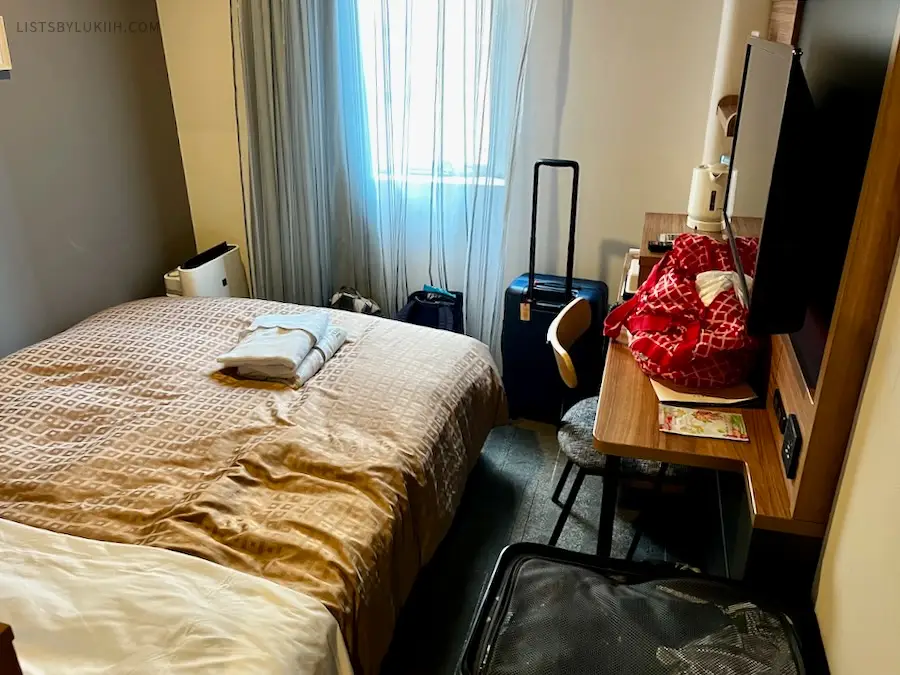
- Avoid traveling during Japan’s high season, which is the cherry blossom season in the spring (March to May). Traveling during the low season, which is summer or winter, will get you the best deals on accommodation .
See what traveling to Japan is like in December .
Transportation Budgeting Tips
Japan’s public transportation, a complex and vast network of trains, makes traveling convenient and cheap.
- If you know you’ll be taking the train a lot, consider buying a day pass, which can be as cheap as $4 per person in Tokyo.
- If you’re traveling long distances around Japan, consider getting the Japan Rail Pass , which gives you unlimited rides for a set time and includes access to high-speed bullet trains.
The JR Pass is expensive , so you should know your rough Japan itinerary before purchasing it. That way, you can evaluate whether it’s worth it.
Food Budgeting Tips
You can eat cheaply in Japan and find meals for $5, even in big tourist cities.
- A great way to save money on food is to shop at convenience stores like Family Mart, 7-Eleven, and Lawson. These stores provide decent meals for less than $5 . I had a latte and onigiri (rice ball) for breakfast several times at convenience stores, which cost only $2 per meal.
If you buy a refrigerated meal, like gyudon, ramen, or pasta, they will warm it up for you and provide utensils .
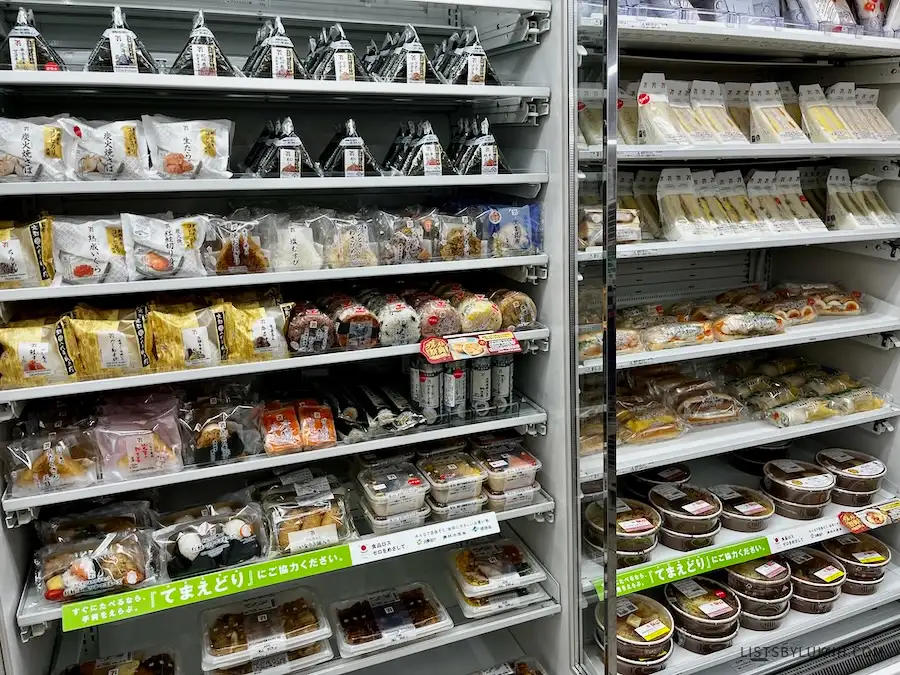
- Fast food places that typically have automatic ordering machines also provide hearty meals for $5 or less. In Kyoto, I had an udon bowl for $3; in Tokyo, I ate at a ramen restaurant for $7.
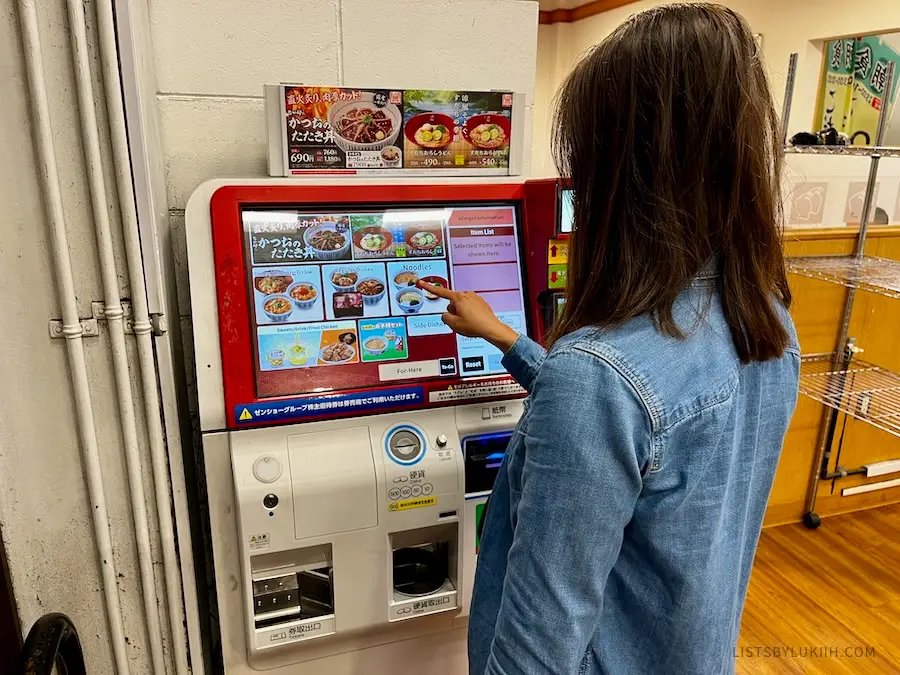
- Markets, like the popular Nishiki Market in Kyoto and the Kuromon Ichiba Market in Osaka, are cheap places to try a wide variety of good food for less than $12 , as each stall sells $1 to $3 snack-bite food.
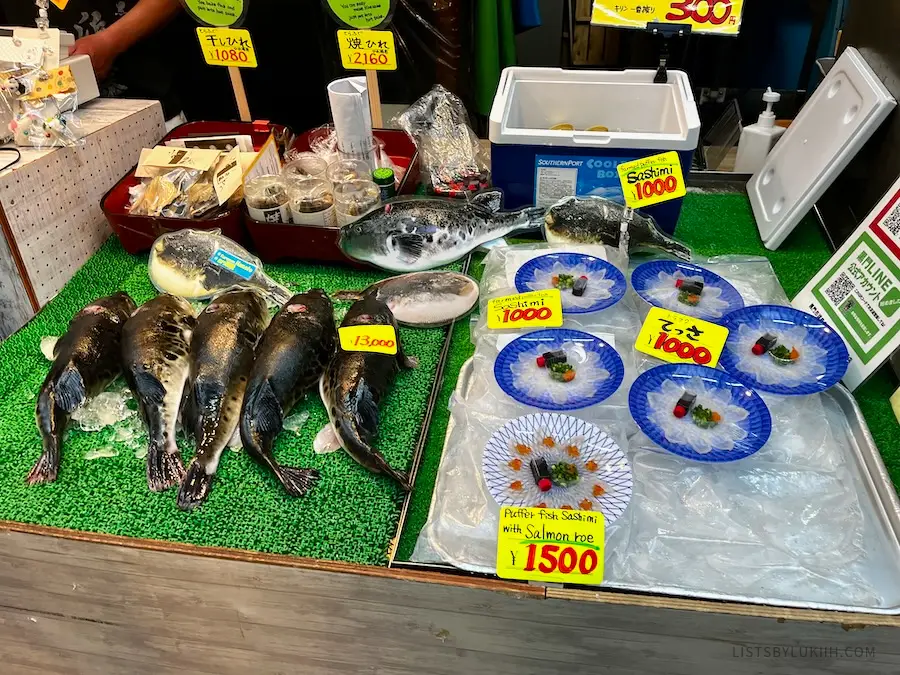
- Conveyor belt sushi restaurants are a good deal if you’re craving seafood . I ate at one in Shinjuku, a central location in Tokyo, for $13.
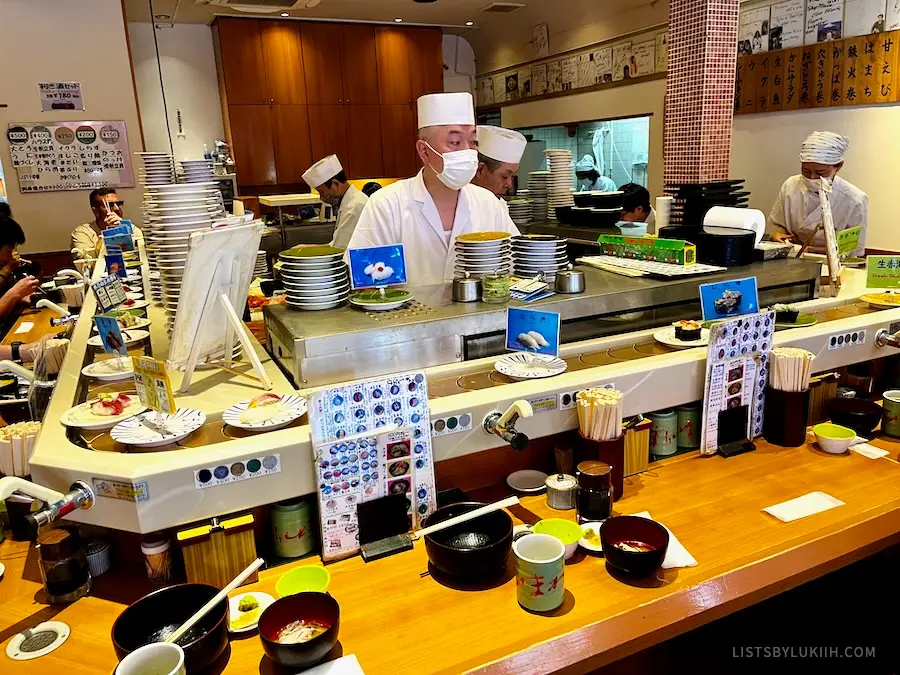
Entertainment Budgeting Tips
While many of Japan’s main attractions require an entrance fee, there are plenty of ways to enjoy the country without spending much money . Some of my best days in Japan didn’t require me to pay for any attractions.
- Many famous temples have a small entrance fee, but there is an abundance of other less well-known temples around Japan that are free .
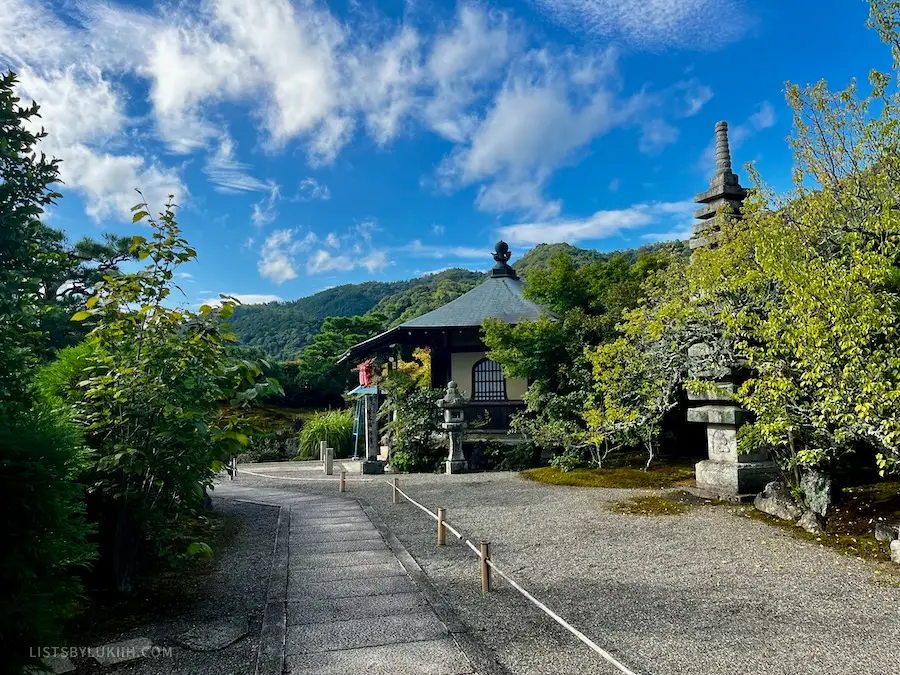
- Similarly, gardens and some bigger parks will also have entrance fees, but many urban parks have free access.
💰 Mid-Range Budget Traveler – Japan Trip Cost
A mid-range budget traveler like myself can expect to spend approximately $120 per day or $1,680 for two weeks of travel in Japan, excluding flights. I break down my trip expenses by travel category below.
About My Japan Trip
To give context to the expenses below, here’s what you need to know about my trip:
- Tokyo : 6 days
- Kyoto : 2 days
- Osaka : 1 day
- Mount Fuji hike : 2 days
- Shimanami Kaido cycle : 2 days
- ☀️ High season – I visited Japan in September, the beginning of the high season. Japan has two high seasons: one in the spring and one in the fall.
See the upsides and downsides of visiting Japan in September .
- ✌️ Group travel – I traveled with one other person, so we were able to split some costs, such as housing.
- 💰 Mid-range budget – I consider myself a mid-range budget traveler, and these expenses reflect that. I don’t aim to travel on a budget, but I’m thoughtful about how and where I spend.
- 🍀 Self-funded – My trips are self-funded, so I paid for everything listed below. None of my excursions or experiences are sponsored.
- 💵 US dollars – All costs listed in this post are per person and in US dollars, which have been converted from Japan’s local currency, the Japanese yen.
The exchange rate was $1 USD = 142 JPY at the time of writing.
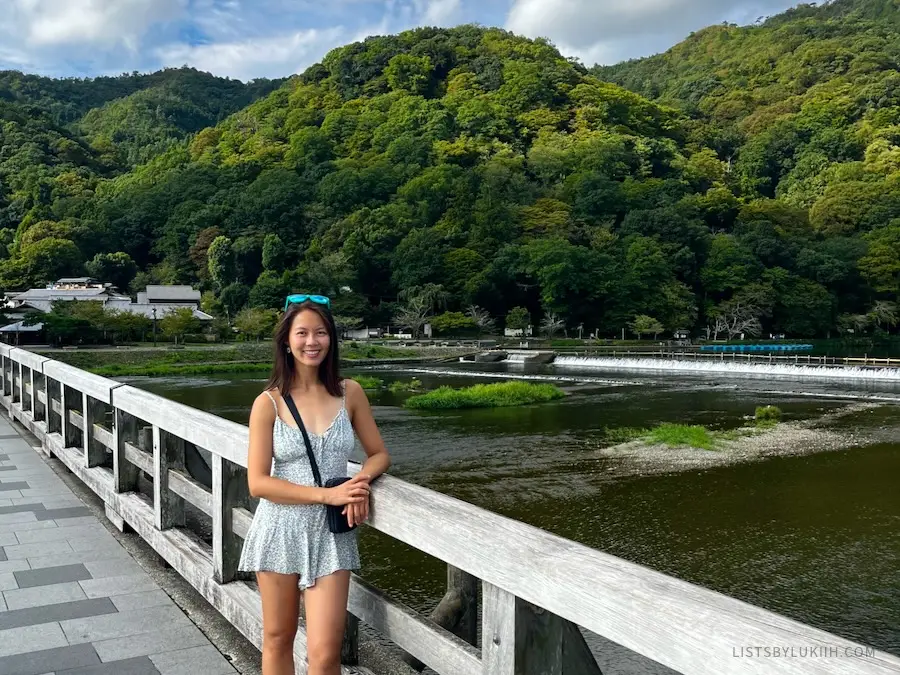
Japan Trip’s Total Cost: $2,829
My two-week trip to Japan cost a total of $2,829 , including flights.
See the highlights of my trip in this Japan itinerary .
💰 Cost Breakdown for Japan
Here’s a quick overview of my expenses by travel category:
🗓️ Daily Budget in Japan: $145
My Japan trip cost $145 per day , excluding my round-trip flights from and to the United States.
A mid-range budget traveler can expect to spend $120 per day in Japan. This generally means staying at accommodations that cost about $70 per night, eating a mix of food from convenience stores and restaurants, and visiting several of Japan’s big cities.
✈️ Flight Cost to Japan: $796
My round-trip flight from the West Coast of the United States to Haneda Airport in Tokyo was $796 .
A round-trip flight between the US and Japan that costs under $700 is considered cheap; international flights typically cost over $900.
🏠 Accommodation Cost in Japan: $807
My average cost of accommodation in Japan was $58 per day . I was able to split accommodations with one other person at all times.
Here are the accommodations I stayed at and how much I paid for each:
Budgeting Tips for Accommodations in Japan
Here are my budgeting tips and things to note regarding accommodations in Japan:
- Accommodations are pricey – While accommodations in Japan can be affordable in non-central areas, expect to pay $70 for mid-range hotel rooms in central areas of Tokyo, Kyoto, and Osaka. Luxury hotels in those major cities will be as high as $900, but I recommend staying in a ryokan if you have a larger accommodation budget.
- Be prepared to shell out for a ryokan – Ryokans, which are traditional Japanese inns, are typically more expensive than mid-range hotels; a decent one starts at around $150.
Ryokans are usually attached to onsens and serve kaiseki, a multi-course Japanese meal, for breakfast, dinner, or both. Despite their higher costs, they’re considered a unique experience that’s worth a one- or two-night stay.
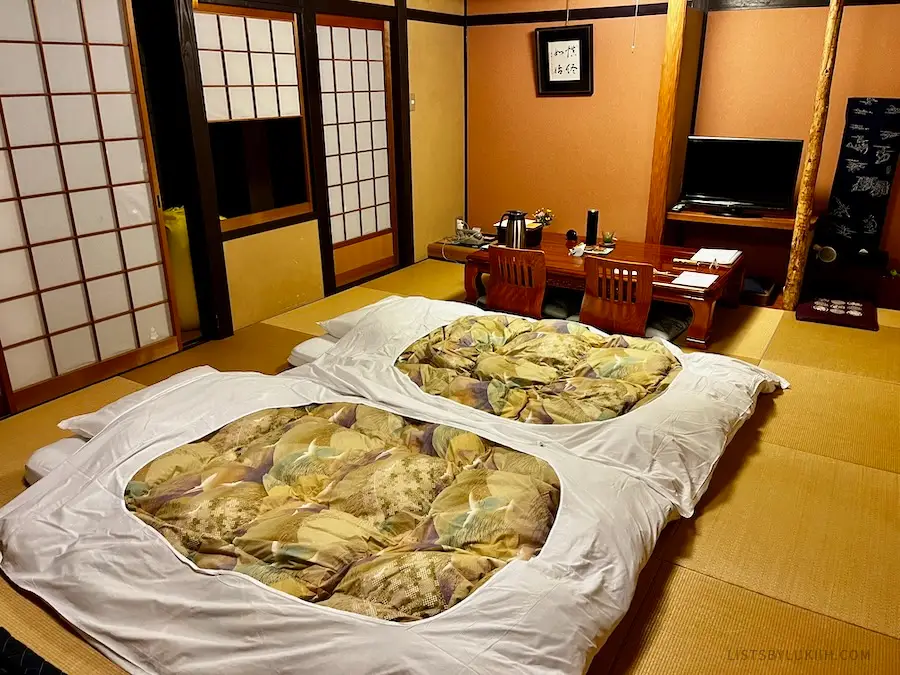
- Don’t pack toiletries (optional) – Many hotels in Japan will provide toiletries, pajamas, and breakfast sets as part of their accommodation costs. All the hotels I stayed at (with Mt. Fuji hut being the exception) provided toothbrushes, toothpaste, face lotion, etc.

🍣 Food Cost in Japan: $489
My average cost of food in Japan was $35 per day .
Food costs in Japan vary widely ; you can eat on a budget or extravagantly. For either budget, try eating at local spots for the best authentic eats.
Here’s a hack for finding local eats in Japan .
Cheapest Meals in Japan
Here are the most affordable meals I ate during my trip:
If you’re on a budget, you can eat Japanese food for $3 to $10 at convenience stores (Family Mart, 7-Eleven, and Lawson), street food markets, and fast food restaurants where you sometimes order at a machine resembling a vending machine.
Most Expensive Meals in Japan
Here are the most expensive meals I ate during my trip:
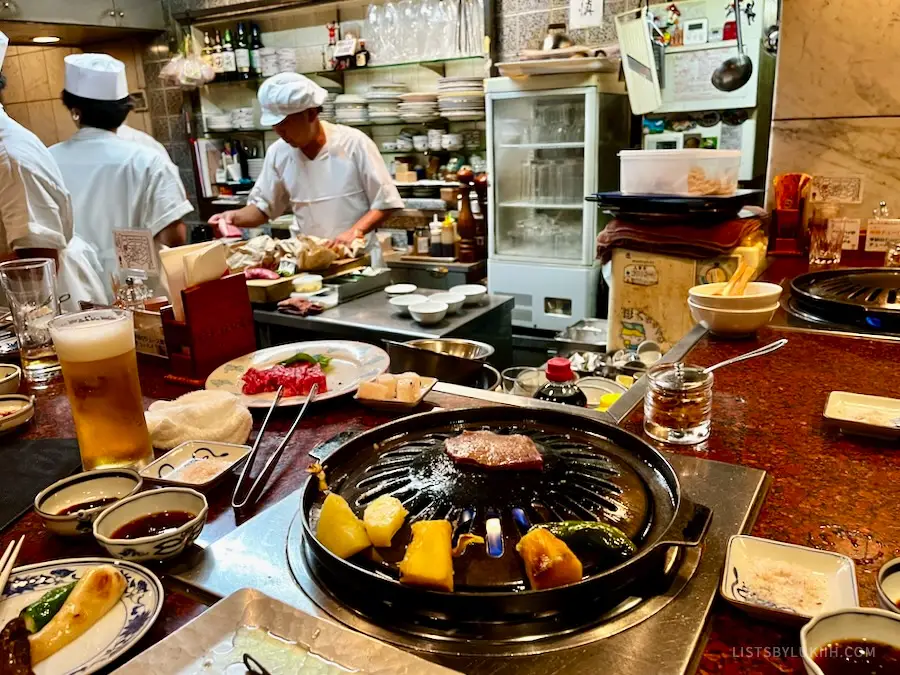
You’ll notice that fresh fruits in Japan can be very expensive (e.g., over $15 for a handful of grapes) because fruits hold more significance in Japanese culture. But if you go to local supermarkets, you can buy them for reasonable prices.
🚆 Transportation Cost in Japan: $374
My average cost of transportation in Japan was $26 per day .
Here are the transportation methods I took and how much I paid for each:
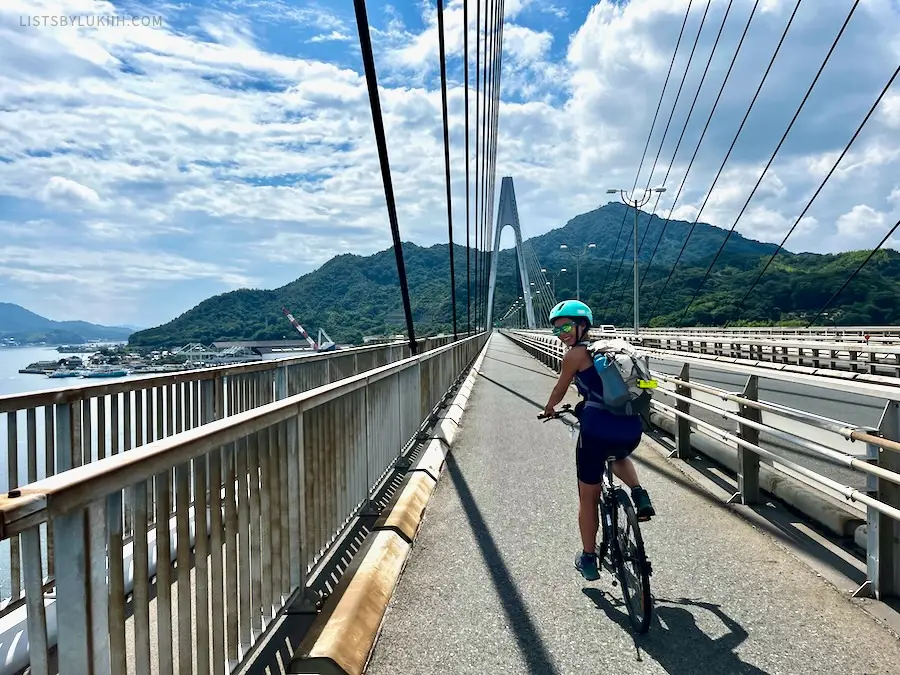
When figuring out transportation, know that many of Japan’s train stations have coin-operated luggage storage that is cheap and convenient. It typically costs less than $5 for 24-hour storage . As the name implies, they are sometimes cash-only and need exact change. Train station attendants can give you change for larger bills.
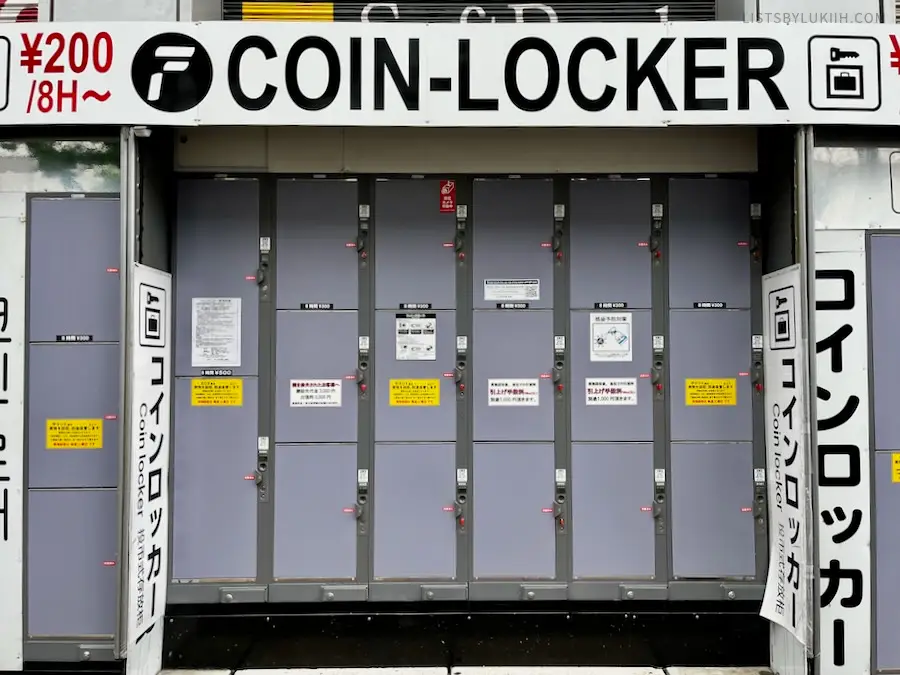
Budgeting Tips for Trains in Japan
The best way to travel around Japan is by train. Here are my budgeting tips and things to note regarding trains there:
- Consider getting the JR Pass – JR, the same group that operates all the bullet trains (called Shinkansen ), serves many of Japan’s trains. A bullet train ride can be expensive (around $100 from Tokyo to Kyoto), so you should determine whether getting a JR Pass , which gives you unlimited rides for a set time, is more economical. I got the 7-day JR Pass for my Japan itinerary because it was cheaper than buying individual rides.

- Take advantage of day passes – Some local transportation, like Tokyo’s local trains, offers a cheap day pass that is usually cost-efficient if you take the train more than three times within 24 hours.
- IC cards can make things more convenient – You’ll notice that many places in Japan, including public transportation, convenience stores, restaurants, and vending machines, will accept IC cards like PASMO and Suica. An IC card is a rechargeable travel card that you can get to make navigating Japan easier.
⛩️ Entertainment Cost in Japan: $155
My average cost of entertainment in Japan was $11 per day . My entertainment costs are on the lower end because I did many free things and took advantage of the country’s beautiful nature, which is usually low-cost.
A typical mid-range traveler in Japan will likely spend closer to at least $30 a day on entertainment.
Costs of Activities and Attractions in Japan
Here are all the activities and attractions I paid for and how much each cost:
Japan is a beautiful country where many people like to take photos. Before snapping a photo of a local, ask them for permission , as doing so without consent is considered disrespectful. Learn more about proper Japanese etiquette .
Free Things To Do in Japan
Japan is known for its natural beauty, so there are many free outdoor activities and attractions available.
Here are the attractions and activities I did in Japan that were free:
- Fushimi Inari Taisha – This famous shrine complex in Kyoto has no entrance fee.
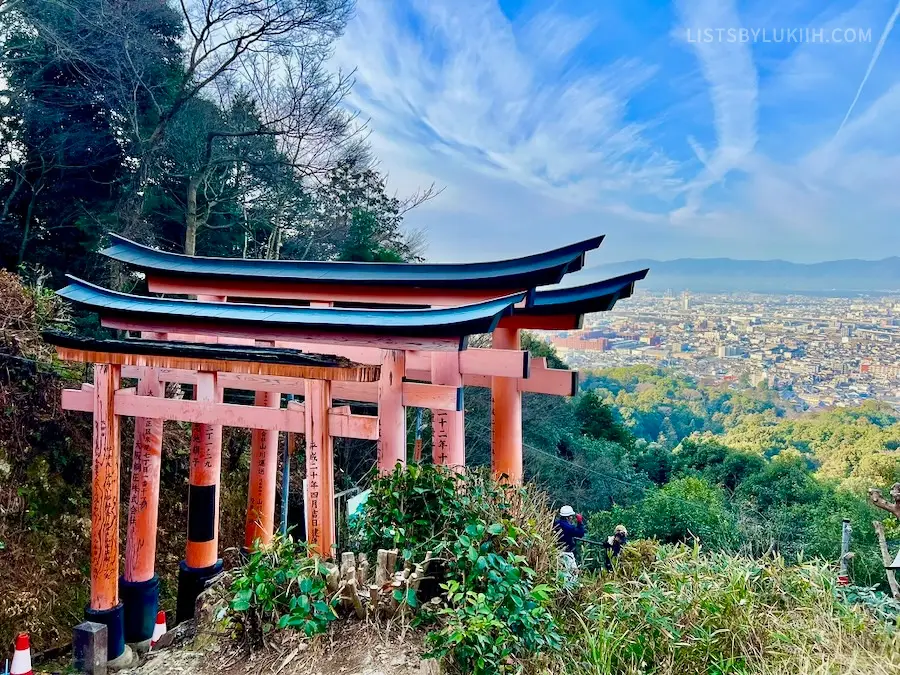
- Mount Fuji hiking – Mt. Fuji has four trails, and starting in 2024, you only need to pay for the Yoshida Trail, the most popular one. When I did the Subashiri trail, I just had the option to donate a small amount.
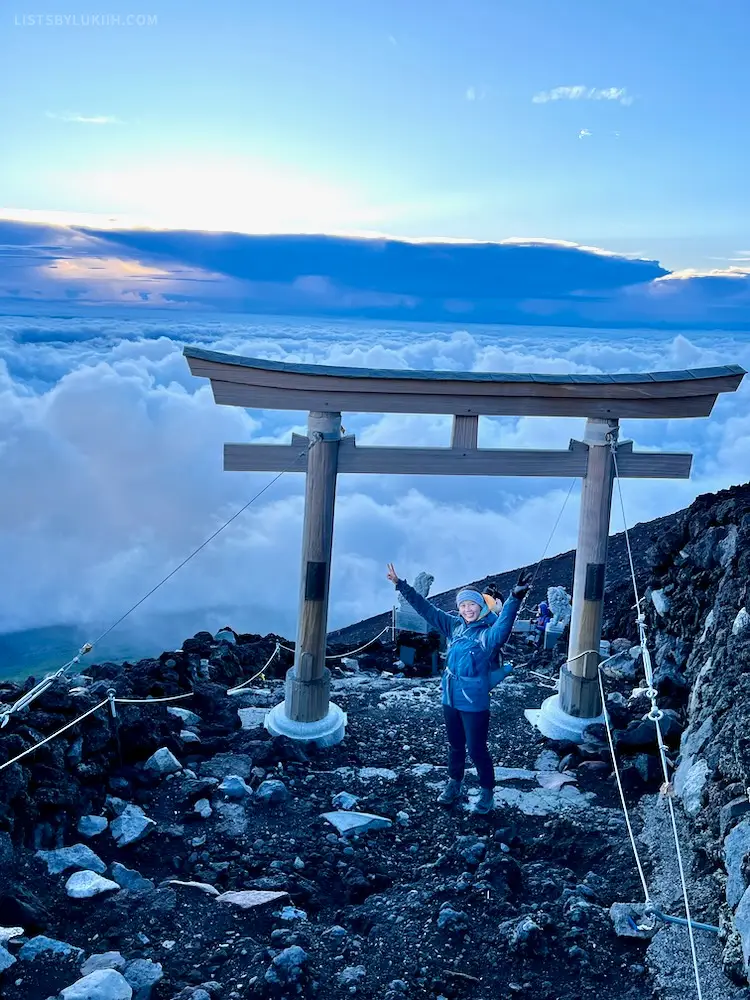
- Tokyo Metropolitan Government Building – Shibuya Sky is a popular sunset observation deck in Tokyo, but you can save $15 by going to the deck on the 45th floor of the government building instead.
- Parks – Tokyo has tranquil and beautiful urban parks, including Yoyogi Park and Shinjuku Central Park.

- Smaller temples – Many of Kyoto’s smaller and less well-known temples in the Arashiyama district and Philosopher’s Path are free.
- Bustling districts – You can spend hours walking around and window shopping in districts like Tokyo’s Akihabara and Osaka’s Dotonbori.
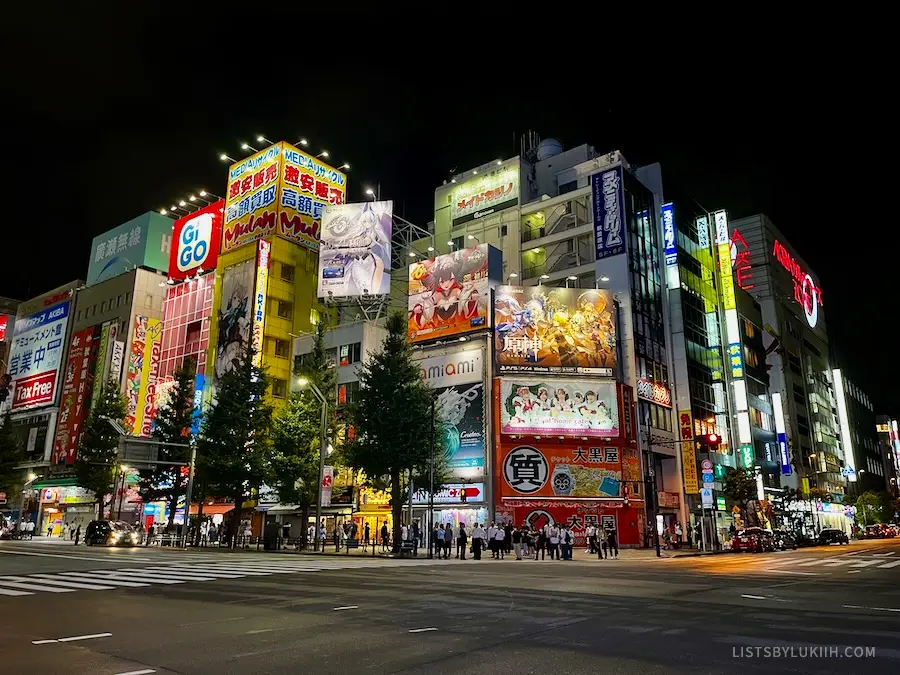
Cost Breakdown by Destination in Japan
Below are my trip expense breakdowns for Tokyo, Kyoto, and Osaka . These three major cities are often featured in first-timers’ travel itineraries.
I also spent time in the following places:
- I stayed at Gotemba , a nearby city of Mount Fuji, to hike up the iconic volcano . I spent $139 over two days while doing the hike.
- As part of the Shimanami Kaido two-day cycling activity , I stayed on Ikuchi Island and Imabari City. I spent $223 cycling the route.
🍱 Tokyo Trip’s Total Cost: $97
During my six-day trip to Tokyo, I averaged $99 in daily travel expenses.
In Tokyo, I stayed at two hotels in the Shinjuku and Nihonbashi areas to be close to major train stations. I paid to visit the Shinjuku Gyoen National Garden , watch an Olympics Qualifiers volleyball game at Yoyogi Stadium, and sing karaoke with some locals.

Tokyo is the most expensive city in Japan to live in, but it’s not the most expensive city to visit . With a plethora of restaurants and sights to see, you can explore Tokyo on your own for free or hire a local guide to optimize your time there.
⛩️ Kyoto Trip’s Total Cost: $616
During my two-day trip to Kyoto, I averaged $308 in daily travel expenses.
Kyoto is where I splurged more on accommodation as I stayed at a ryokan and a nicer hotel near the Kyoto train station. I also spent more on dining, as my two most expensive Japanese meals were here.
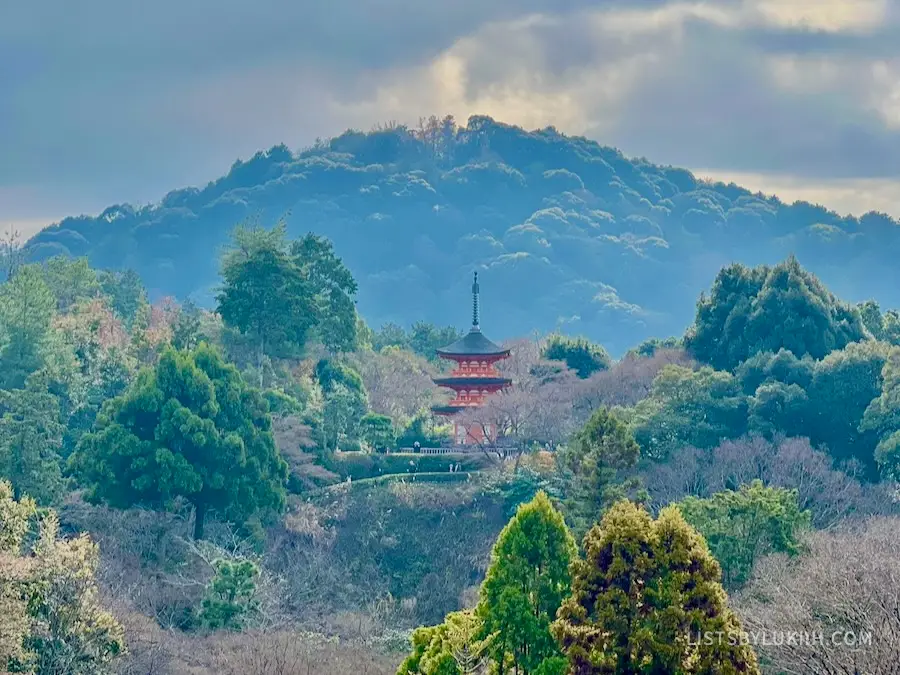
Kyoto is known for its well-preserved historical sites. It boasts over 1,600 temples, and all the major or popular ones have a small entrance fee (usually around $5). The city also has many free temples , like the ones found on the Philosopher’s Path or in the Arashiyama district.
🐙 Osaka Trip’s Total Cost: $50
I did a day trip to Osaka from Kyoto. During my short trip, I visited the Kuromon Ichiba Market , walked around the popular and bustling Dotonbori area, and visited the Osaka Aquarium , which I found to be unique and well-designed.
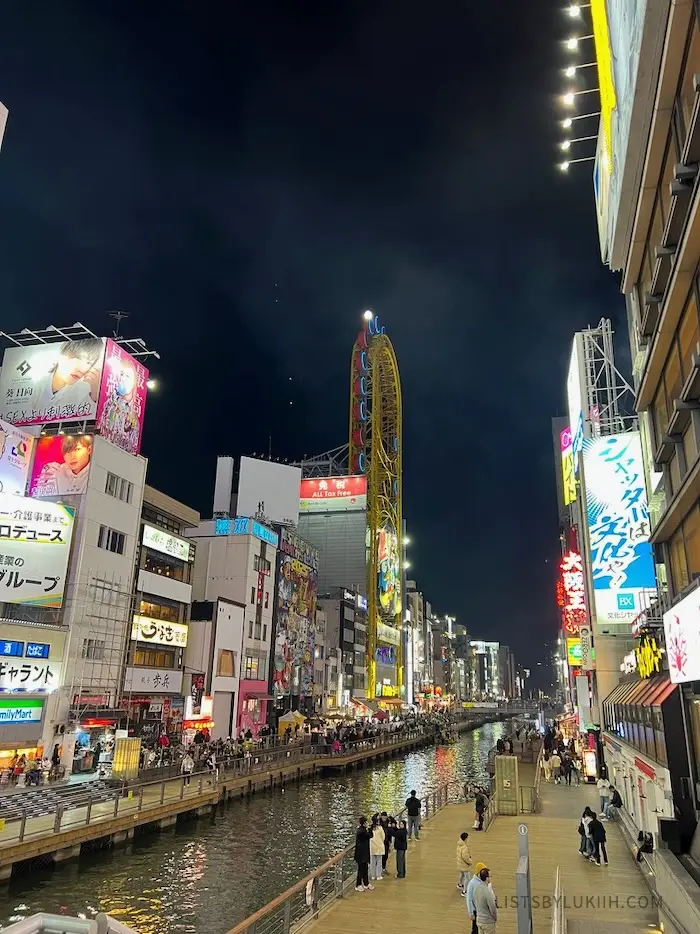
Osaka is called “Japan’s Kitchen” and a foodie’s paradise. It’s well-known for its street food, nightlife, and numerous Michelin-starred places, so expect to spend a bit on dining . If you like some guidance, plenty of English-speaking guides offer street food tours .
Do You Need Cash in Japan?
Although Japan has a good credit card infrastructure, a significant part of its economy is based on cash transactions . This is especially true once you wander outside its major cities, so make sure to bring some cash.
Below are tips on bringing and using cash in Japan.
💴 1. Withdraw cash in Japanese yen.
Japan’s currency is the Japanese yen (JPY), and the US dollar is not widely accepted.
ATMs are readily available in many central areas of Japan, but you might have trouble finding them elsewhere. For example, during my ryokan stay, I had trouble finding an ATM on the outskirts of Japan.
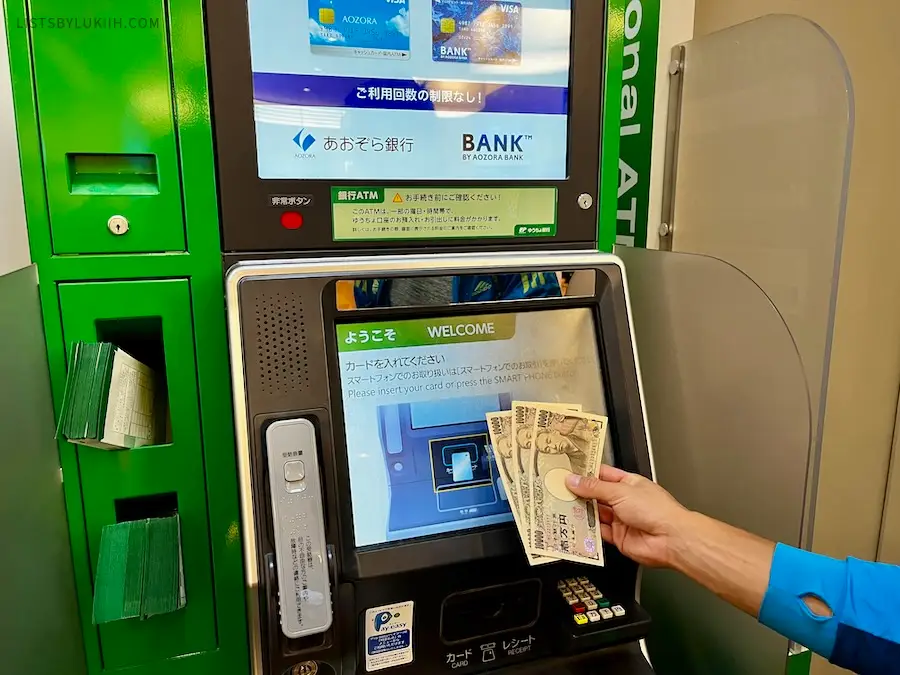
💵 2. Carry about $40 worth of cash per day in Japan.
On a typical day, a mid-range budget traveler in Japan will need at least $40 in cash to cover food, transportation, and attractions. A daily cash expense breakdown can look like this:
- $15 at restaurants and cafes
- $10 on shopping
- $5 on attractions
- $5 on taking the trains
- $5 on miscellaneous spending like vending machines, coin-lockers, etc.
Japan’s trains have a fixed price based on the distance traveled, so you must calculate the price every time you ride and buy a disposable ticket. However, you can buy a PASMO card to avoid calculating the price every time and minimize the amount of cash you need to carry.
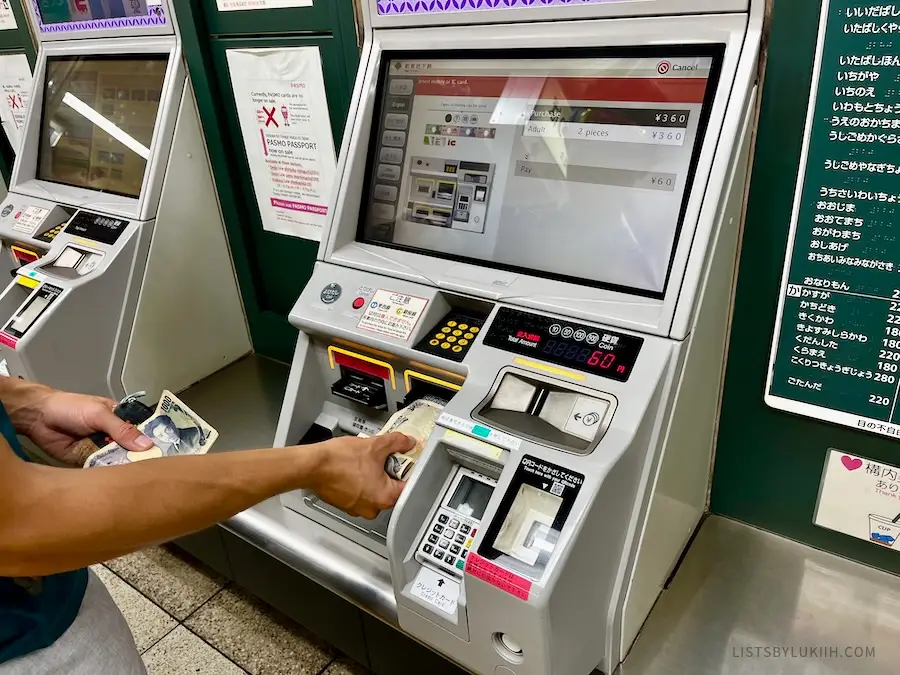
On my Japan trip, I spent a total of roughly $200 (about $15 per day) in cash. Here’s a breakdown of how I used my cash:
I keep my cash in my crossbody bag , but if you want extra protection against pickpocketing , carry it in a hidden money belt instead.
🏧 3. Many places in Japan are cash-only.
While credit cards are commonly used in Japan, I still had to use cash more than 30 times during my two-week trip. Here are some of the places that were cash-only in Japan:
- Markets – Kyoto’s Nishiki Market and Osaka’s Kuromon Ichiba Market are both cash-only.
- Restaurants – This includes places in major cities and smaller towns. I had to use cash in restaurants specializing in tofu, fluffy pancakes, ramen, and conveyor belt sushi.
- Cafes and bakeries – This includes a popular matcha place in Kyoto and an ice cream stand in Onomichi.
- Smaller shops – Shops tend to be cash-only in less accessible areas (e.g., at the top of the Fushimi Inari in Kyoto).
- Train stations kiosks – None of the kiosks took my Chase travel credit card, so I used cash for all my train rides.
- Coin-operated lockers – As the name implies, these lockers only accept coins.
- Smaller temples – Some less well-known temples in Kyoto had small entrance fees.
- Vending machines – Most vending machines in Japan are cash-only.
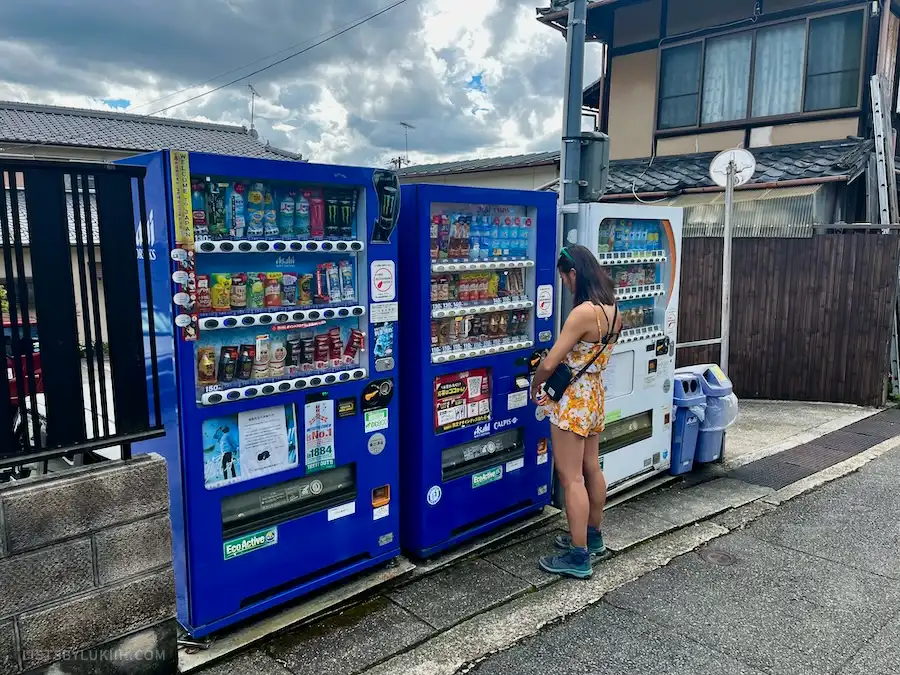
💰 4. Tipping is not customary in Japan.
Japan does not have a tipping culture, and you’ll find that locals will refuse tips even if you offer or insist. This is because they feel you’re already sufficiently paying for their service.
I offered a tip out of habit twice while in Japan, and my tips were refused both times.
See other essential travel tips for Japan before visiting.
Japan Trip Planner 2024
To make your travel preparation easier, download the trip planner below. It has destination-specific travel information, itinerary, map, and packing list.
My trip planners are built on Notion, which I use for all my travel planning. I genuinely love this tool and creating an account is free .

Thoughts? Questions? Leave a comment below .
Japan Travel Guides
- 🇯🇵 Planning a Trip to Japan: 11 Practical Things To Know
- ⛩️ 10 Epic Days in Japan: A Unique & Active Itinerary
- 🌋 Hiking Mt. Fuji: Firsthand Review & Tips
- 🚲 Cycling the Shimanami Kaido: Firsthand Review & Tips
- ⛩️ Fushimi Inari Taisha: Firsthand Review & Tips
- 🙅🏻♀️ Etiquette in Japan: 13 Things Tourists Should Not Do
- ☀️ Visiting Japan in September: Tips & What To Know
- ❄️ Visiting Japan in December: Tips & What To Know
🧋 Support Lukiih
Lists by Lukiih is a humble website that I fund with my own savings. If you find my tips helpful, I appreciate you saying thanks with a bubble tea !
Leave a Reply Cancel reply
Your email address will not be published. Required fields are marked *
Save my name, email, and website in this browser for the next time I comment.

- Thailand Lantern Festival
- Indonesia(Bali)
- South Korea
- China (HK, Taiwan)
- Itinerary Ideas
- Asia Highlights Travel Reviews
- Thailand Travel Reviews
- Vietnam Travel Reviews
- Cambodia Travel Reviews
- Japan Travel Reviews
- Myanmar Travel Reviews
- China Travel Reviews

How Much Is a Trip to Japan
When considering a trip to Japan, you probably want to know how much it would cost. Is Japan expensive? Well, travel costs in Japan are cheaper than in most Western countries with similar service standards and living costs, but they are about twice as expensive as other Asian countries'.
Different experiences, modes of transportation and classes of hotels meals in Japan can make a big difference to costs. In this article, we'll explore the travel costs for Japan and share how to make the most of your money.
How Much Is a Private Japan Tour Package?
- Cost of International Flights to Japan
- Cost of Accommodation in Japan
- Cost of Transportation in Japan
- Cost of Food in Japan
- Cost of Attractions/Activities in Japan
Discover real reviews of Highlights Travel Family 's best-rated service across trusted platforms.
In general, a private Japan tour costs US$350–500 per person per day (with 2–4 people) , including private car, private guides, local 4-star hotels, tickets for attractions, and full-day itineraries. Thus, the total cost is around US$2,500–3,500 for a week and around US$5,000–7,000 for 2 weeks.
Riding a private car offers a more comfortable and efficient experience with less physical exertion. In contrast, public transportation, while cheaper, often entails walking around 20,000 steps per day. This can be challenging for older individuals or those with limited mobility. Opting for private car, which typically cost around US$150–200 per day, allows you to save time and conserve energy, enabling you to dedicate more time to exploring sights rather than waiting for connections or navigating unfamiliar routes.
Having a private guide provides an opportunity to experience excellent service, receive outstanding explanations, and gain a deeper insight into Japan's culture. With a knowledgeable guide by your side, you can learn fascinating details and anecdotes about the places you visit, ensuring a deeper understanding and appreciation of Japan's unique traditions and customs.
March to May (cherry blossom season) and October to November (red maple season) are peak seasons in Japan. We suggest that you book a Japan tour at least 3 months in advance to reserve the perfect hotels and professional guides for these times.
The Cost of International Flights to Japan
The cheapest period to buy flight tickets is mid-January to February , costing about US$900–1,500 from the U.S. The most expensive month to buy flight tickets is April , when the cost from the U.S. is around US$1,600–1,800. From June to July the airfare is US$1,000–1,500, and in December the cost is US$1,000–1,600.
The cost of flights from the U.S. to Japan varies depending on when you fly and the airline you choose. For example, round-trip economy tickets from New York or Los Angeles to Tokyo cost anything from around $800 to $1,800 on average for 2024.
Direct flights from Europe to Japan are fewer and most require at least one stopover. A round trip from London to Tokyo is in the range US$1,500–2,000 on average for 2024.
To buy the cheapest flights to Japan, we recommend you book at least 3–6 months in advance , especially if you are going to Japan during the busiest times, such as cherry blossom season from March to May, the red maple season from October to November, and around New Year.
Suggested reading: 2-Week Japan Itineraries >>>
The Cost of Accommodation in Japan
Japan hotel prices vary widely between low season and high season. A standard room in a 4-star hotel costs from US$200–280, and a 4-star ryokan (traditional inn) costs around US$300–450 per room per night for most of the year. However, the price may double or even triple in March and April when the cherry blossom blooms.
Staying at a ryokan allows you to experience the most authentic Japanese accommodation. You can sleep on a tatami, try on yukata (traditional Japanese robes), and even relax in onsens (hot spring baths) at some ryokans. If you are traveling with kids, some ryokans can provide enough tatamis for your family to stay together in one room.
Tip for saving money: Early reservations to ensure your preferred hotel choices (at least 3-6 months in advance) are suggested and to minimize hotel changes.
The Cost of Transportation in Japan
Public transportation is very convenient in Japan, especially the subway. Taking Tokyo as an example, regular Tokyo subway fares are US$1–3, depending on the distance. Taxis are the most expensive option, as the starting fare is from US$5 for the first two kilometers. Most destinations in Japan are connected by trains , and their prices are not affected by the peak travel seasons. Shinkansen (bullet train) is the fastest and most popular way to travel between cities: a ride from Tokyo to Kyoto costs about US$100.
We recommend utilizing a private car service for airport pick-ups and drop-offs in Japan. The transport routes in Japan can be complex, and navigating the right tram or train can consume a significant amount of time. By opting for a private car, you can avoid this issue and be transported directly to your hotel or the airport without any hassles or confusion.
Tip for saving money: Consider utilizing public transportation for some city tours like Hakone or Hiroshima, where you can enjoy the sights at your pace and experience the efficiency of Japan's impeccable transportation system.
Suggested reading: How to Plan Your Trip to Japan >>>
The Cost of Food in Japan
Japanese cuisine is one of the main attractions for travelers who visit Japan, and it is often not expensive , such as sushi, ramen, rice balls, etc. A meal at a sushi restaurant usually costs US$15–50, and a bottle of Japanese wine costs US$3–7. A bowl of ramen costs just US$5–7. On average, a day eating at mid-range restaurants costs US$30–45 per person.
Luxury meals such as wagyu beef or kaiseki can cost around US$70–110 per person or more. These exquisite and delicious cuisines showcase the meticulous and delicious nature of Japanese culinary traditions. Indulging in these high-end Japanese dishes would not only treat your eyes but also amaze your taste buds with their exquisite flavors.
The Cost of Attractions/Activities in Japan
Tickets for most attractions in Japan range from US$3–7. World Heritage sites like Kinkaku Temple and Kiyomizu Temple in Kyoto cost just US$3. There are also many shrines, temples, and parks in Japan that are free of charge , like Meiji Shrine and Sensoji Temple in Tokyo and Fushimi Inari Shrine in Kyoto.
Theme-park tickets, such as for Disneyland in Tokyo and Universal Studios in Osaka, are significantly higher in cost at about US$60–70 per person.
Authentic Japanese activities like watch geisha's performance, traditional tea ceremonies, or ninja experiences can cost more compared to simply visiting attractions. The prices for these experiences vary depending on the specific activity, but usually involve the service costs of an expert in a field. However, these immersive experiences are well worth it, allowing you to deeply immerse yourself in the local culture and gain insights into Japanese traditions, making your trip more enriching and complete.
Tip for saving money: Consider a mix of having a private guide for certain locations and exploring "self-explanatory" attractions on your own. Having a private guide can enhance your experience and enrich your knowledge, particularly when visiting historic places in Tokyo and Kyoto. On the other hand, cities with natural beauty like Lake Kawaguchi or Hakone can be explored independently, allowing you the freedom to appreciate the sights at your own pace.
Why Asia Highlights (10,000+ reviews & 98.8% 5-star rating)
- Save Your Time:
- Less research, more enjoyment!
- Real-time 1V1 expert planning
- Maximize Your Flexibility:
- Personal local guide and ride
- Explore at your own pace
- Celebrate Your Journeys:
- Specially-crafted family adventures
- Celebrate milestones with style!
- 10-Day Japan Cherry Blossom Spring 2025 Mini-Group Tour
- 2-Week Japan Private Family Vacation
- 12-Day Classic Japan Tour
- 9-Day Japan Highlights Tour
- Plan a Family Trip to Japan 2024/2025: Experiences and Itineraries
- Plan a Japan Cherry Blossom Trip 2025, Dates and Avoid Crowds
- 12 Days in Japan: Top 4 Itineraries for First Visit 2024/2025
- 1 Week in Japan: Top 5 Itineraries for First Visit 2024/2025
- Japan Weather in January: Travel Tips for First-Timers
- Japan Weather in February 2024: Travel Tips for First-Timers
- Japan Weather in March 2024: Travel Tips for First-Timers
- Japan Weather in April 2024, Travel Tips (for First-Timers)
- Japan Weather in May 2024: Travel Tips for a First Visit
- Japan Weather in June 2024: Coolest Summer Month, Travel Tips for First Visit
- Japan Weather in July 2024: Full of Festivals, Travel Tips for First Visit
- Japan Weather in August 2024: Travel Tips for First Visit
- Japan Weather in September 2024, Travel Tips (for First-Timers)
- Japan Weather in October 2024: Travel Tips for First-Timers
- Japan Weather in November 2024: Best Autumn Month, Travel Tips
- Japan Weather in December 2024: Travel Tips for First-Timers
Get Inspired with Some Popular Itineraries
At Asia Highlights, we create your kind of journey — your dates, your destinations, at your pace. You can have any trip tailor made for your travel.
More Travel Ideas and Inspiration
Sign up to our newsletter.
Be the first to receive exciting updates, exclusive promotions, and valuable travel tips from our team of experts.
Why Asia Highlights
Where can we take you today.
- Middle East
- African Safari
- Travel Agents
- Loyalty Program
- Privacy Policy
Address: Building 6, Chuangyi Business Park, 70 Qilidian Road, Guilin, Guangxi, 541004, China
Japan Trip Cost: Pricing for Flights, Food & Accommodation
Plan your Japan trip with ease! Get the latest costs for flights, food, & accommodation. Perfect for travelers on any budget. Click for budget tips & more.

There are plenty of reasons to visit Japan, as the nation has a lot to offer tourists. Because it provides visitors with so many wonderful experiences, most people think of it as a tourist's paradise. Before you leave for Japan, you should create a thorough budget outlining the general budget of your vacation.
The average cost of a 7-day trip to Japan is $1,659 for a solo traveler. That leaves us at about $237 per day per person. This includes travel expenses, local transportation, food, accommodation, and sightseeing. It is calculated based on the expenses of previous visitors and can go slightly up or down depending on your spending habits.
There's so much to calculate on the cost of a Japanese trip. Read on to find everything you need to know, including how to cut costs and travel to Japan on a budget!
Average Cost Of A Trip To Japan

It's important to note that the average cost of a Japanese trip differs from the average daily expenses. While calculating average cost, you'll need to include flight tickets, accommodations, car rentals, etc.
That said, the average price of a 7-day trip to Japan will range between $1558 to $2100 per person. You can expect to spend up to $2750 as a couple and $5,124 for a family of four. These amounts can go slightly up or down depending on your spending habits.
Japanese hotels will typically charge between $62 and $312 per night. Vacation rentals will charge between $144 and $553 per night. International flights to Japan would cost between $952 to $1,673 per person for economy tickets, depending on where you're flying from.
Intra-city transportation, food, sightseeing, and other miscellaneous expenses will eat up a significant part of what's left in your budget.
Also, don't forget to think about setting up an emergency fund , just in case you run out of money on your trip.
Average Daily Expenses in Japan

While in Japan, your daily expenses will significantly depend on how you choose to leave. After reviewing the daily expenses of many visitors to Japan, we've concluded that the average daily expenses on a trip to Japan are between $26 to $72 if you decide to live on a budget.
Mid-range spenders can expect to spend between $73 to $143 per day, while high spenders will spend anything above these figures. Now, while preparing your budget, you must decide what spending level you'd want to maintain throughout your plan. Pick a number and multiply it by the number of days you'd like to stay to determine how much your daily expenses will cost.
Remember that these figures do not include flight tickets, transportation, or other significant spending. So, you must include provisions for all those in your budget. It also makes sense to have some money kept aside in an emergency.
Finally, the prices listed here are the average costs of traveling and living in Japan. The prices may increase or decrease depending on the types of activities you choose to do in Japan.
Factors That Determine The Cost Of A Trip To Japan
Now that we've discussed the average costs of a Japanese trip, you're probably wondering how we arrived at the amounts. These are compilations of small amounts for different expenses. That said, here's a detailed review of factors that'll make up an average Japanese trip cost.
1. Flight Tickets

This is perhaps the most crucial item on the list because you must get to Japan to experience Japan. Fortunately, flight tickets are not as expensive as some people usually predict unless you intend to fly first class.
Japan's location and popularity mean it's a favorite destination for most international airlines. Most of these airlines won't mind offering cheaper flights and other promotions once in a while. You can jump on these promotions and discount packages to travel to Japan. You just have to be on the lookout for them and plan your trip to fall within promotion time.
Notwithstanding, other factors like airline choice, packing fees, and flight snacks can also affect your overall flight cost. The average cost for international flights to Japan includes:
- $952 to $1,673 per person (Economy class)
- $2,241 to $4,052 per person (Business class).
Remember that these prices are strongly affected by airline choice, where you're traveling from, and seasons. Tickets are the first thing you should purchase when planning your trip to Japan. Purchasing your tickets early allows you to get significant discounts on your ticket prices.
2. Accommodations

After transportation, the next important thing to think about is accommodation (where to stay). Hostels, dormitories, and inexpensive hotels are the ideal choices if you're traveling on a budget. You can get these options for as little as $14 per night.
On the other hand, top-quality hotels and all-inclusive traditional Japanese inns demand premium prices. So, you can expect to pay about the same prices you'll pay for luxury hotels back home.
You don't have to spend beyond your budget on accommodation. If you can afford a premium space, you can opt for cheaper options. After all, it doesn't stop you from enjoying the beauty that Japan has to offer.
But if you can afford premium accommodations, by all means, go for it. We recommend comparing prices of hotels and resorts online to find one that best suits your budget before choosing.

Here's the best news - Japanese foods are not only delicious but affordable. In fact, the price is fascinating when compared to the costs of average meals in other top cities. Options are abundant at affordable prices as far as food is concerned.
You'll find a range of affordable options in convenience stores for launch. Convenience stores are popular in Japan, and they offer tasty and healthy foods compared to other cities.
An average meal in these locations will cost between $2 to $4. You can also choose to eat in. There are tons of quick restaurants scattered around the streets of Japan where you can get food for as low as $5.
Again, the cost of food depends on what you want to eat and how you want to eat them. But local Japanese foods are reputed for being affordable, so you shouldn't have too much of a problem with what to eat.
4. Local Transportation

This area may take a significant part of your budget because you'll need to move around to see more places. Japan is so big with lots of exciting things to do around the city. So you must be prepared to move from city to city to enjoy the full experience of a Japanese vacation.
However, there are still cheap transportation options that you can use without going above your budget. An obvious choice for tourists is the JR pass which gives you access to unlimited trips on the JR rail network.
The pass typically costs about $600 for two weeks. This may sound like a lot to the ear, but when you break it down to $40 a day, you'd realize it's a budget option worth trying. Please note that you'll need to get your JR pass in advance or risk paying normal train fares when you need to move around.
Local train fares are also reasonable and only cost an average of $5 per hour of travel. Bus transportation is also popular, so you can just book a bus wherever you go.
5. Sightseeing

You can indeed access many tourist attractions in Japan for free. Particularly, the shrines, museums, temples, parks, and gardens are available for free. But you'll still need to pay to access many other tourist sights.
Entrance fees into shrines, temples, and castles generally cost between $0.75 to $8, usually giving you free sights access. Entry into museums and other central parks ranges from $4 to $20, depending on the displayed exhibition and the time of the year.
Other tourist centers and privately owned parks cost more than these. You can inquire about the price before going to any of them to be sure it can fit into your budget.
6. Money Conversion

Although this factor doesn't always come up in conversations about Japan trip costs, it's still worth including in your budget. We've estimated all the costs in this article in US dollars.
However, the local currency in Japan is the Japanese yen, and you'll need to convert your money to this currency to be able to spend. When you exchange currencies, expect the exchanger to deduct a small fee.
Always ask your bank for their conversion rates and include them in your budget if you're using a credit or debit card. This way, you won't have unexpected costs flying out of anywhere after you've finalized your travel budget.
Is It Possible To Travel To Japan On A Budget?

Sure, traveling to Japan costs money, especially considering that it involves international flights. However, it's possible to control your travel budget.
First, you're booking your flights and planning your activities in Japan by yourself. This lets you control how much or how little you'll spend throughout your trip. We can't overemphasize the importance of prior planning, especially as it helps to eliminate unexpected expenses.
Before planning your budget for a Japan trip, you must start by deciding your budget limits. Your budget preparation should begin with two numbers ; Your preferred budget, and the highest amount you can spend.
These limits do not only help you know what you can spend on the trip; it also enables you to keep your whole expenditure in check. Besides, it also allows you to choose your activities by order of priority so that you can eliminate unnecessary activities and all expenses attached to them.
Now that you have a rough idea of how much you can spend and how much you're willing to spend, you can go on with preparing your budget. Remember to take advantage of coupons and discounts. Traveling on a budget does not necessarily mean low-quality trips.
You can still have the best time of your life in Japan. It's just about being creative with the things you'll do in the city.
How To Reduce The Cost Of A Trip To Japan
Like every other top city worldwide, Japan is reputed for its expensive lifestyle. But despite this reputation, you can still save money and travel to Japan on a budget. You just need to know what to do and where to go.
If you don't know where to start, don't worry - we have you covered. Here are helpful tips and tricks to help you reduce costs and save money during your next visit to Japan.
1. Draft A Budget Before Your Trip

Nothing finishes your money as much as spending on impulse. The last thing you'll want to do when traveling on a budget is to spend money without planning. There are so many things to do and buy in Japan that you'll be tempted to exhaust your money.
However, if you take the time to outline your budget before your trip, you'll be able to reduce unnecessary expenditures. Depending on how long you intend to stay in Japan, draft a realistic budget that'll cover all your necessary and possible expenditures in Japan.
If you intend to stay in Japan for more than a few days, split your budget into the number of days you want to stay. Now allocate money for food, accommodation, travel, etc. It's also an excellent idea to keep emergency funds aside for the 'just in case' moments.
2. Travel in The Off-Peak Season

Another valuable tip for reducing travel costs is traveling during the off-peak season. This one requires a bit of flexibility on your part because it may have you moving your trip for weeks or months to fall into such periods.
However, if you can adjust your travel date to fall into these periods, you can expect significantly cheaper bargains for airfare. Tourist centers are also typically less crowded during these periods. You can also enter tourist centers at discounted rates during these periods.
Japan's off-peak seasons usually start around October and end in March, except for the Christmas and New year seasons.
So, we recommend leveraging the off-peak seasons, whether you're visiting Japan for the first time or you already live in Japan and are looking to explore other parts of the city.
3. Enjoy Cheap Japanese Foods

The Japanese food culture is thriving, so there's so much to eat and drink. Whether you're eating in a porch restaurant or the street food stalls, you'll find an abundance of options to choose from.
Fortunately, most Japanese local foods are not so expensive, especially when you eat in small restaurants and roadside stalls.
Tokyo is particularly known for its incredible number of restaurants and food vendors. The sheer number of food sellers helps keep the price of food relatively down.
While cheap restaurants are available when you're on a budget, you can also cook your meals yourself. Take a quick evening stroll to the farmer's market or warehouses to get cheap foodstuffs.
4. Calculate Whether The JR Pass Is Worth It Before Purchasing Officially

Despite the popularity of the JR pass, it is still not the best way to travel on a budget. It's a great option if you plan to stay more than a few days and want to visit several places. But, you can also take slower local trains and still arrive at your destination safely.
You also don't have to visit every park or tourist location in Japan. Create a spreadsheet that you can use to plan your trip so you can have a clear view of whether the JR pass is a good option.
If you intend to stay longer and visit many places, the JR ticket may be worth it because it allows you to take unlimited trips to different locations during the time in view. But do you really have to go everywhere on a budget?
Remember, going everywhere would also mean spending more on gate passes and entertainment expenses.
5. Walk Or Bike Whenever You Can

Japan ranks among the cleanest and most organized countries in the world. The cleanliness and organization in this city make walking and riding a bicycle enjoyable.
Sometimes, you can just take a stroll instead of using public transport. The $4 and $7 you pay for public transport may not seem like a lot, but if you sum up all the times you'll need to move, you'd have a significant mark on your budget.
So, a quick stroll here and there may take off significant amounts of your spending. Besides, it's an exciting way to experience Japan and interact with locals. It's also beneficial for your health.
You can also pack a folding bicycle into your luggage before traveling. No law stops you from riding a bicycle in Japan, as long as you ride on the right lanes and don't constitute a nuisance.
6. Enjoy Free Tourist Attractions

People often get so busy rushing to pay huge amounts of money for sightseeing that they forget the best things are free. Japan is filled with lots of alluring sights you can access for free: sprawling packs, ageless Shinto shrines, contemporary architecture, etc.
With little research, you'll find enough free locations to keep you busy throughout your stay in Japan. Even the paid locations still admit people for free on some days. Look up their websites for promotions and discounts to see if you qualify for any.
Perhaps, the first thing you should do while planning your itinerary is to learn more about the attractions you want to visit. Check whether they have free alternatives that offer almost the same things as you want.
There are tons of websites dedicated to offering helpful information on this topic. You can also join tourist forums online to get suggestions from people that have been to Japan before. You can never tell how good the information from such forums will do.
7. Find A Home Away From Home

While it's okay to want the comfort of executive hotel rooms, your budget may not be able to carry that. So, it makes sense to look for alternatives, especially when traveling as a group. Hostel or short-let services can help you save in such situations.
They also offer you more space and amenities to enjoy with your traveling group. We recommend choosing government-approved services to avoid being scammed or exposed to security situations. Still, review the pros and cons of renting short-lets to hotels before deciding.
8. Book Activities Ahead Of Time

People often suggest booking activities at the last minute can nab you a deal. While that is true for some situations, it is not always the case.
Asians like to plan. This means they'll offer lower prices for you to help them plan. Say you're booking a weekend trip to Arashiyama (highly recommended!) or you'd like for you and your team to enjoy the Nagasaki Atomic Bomb Museum, you'll generally be better off booking ahead of time.
You can also find group discounts on their websites. Most of these discounts can be enjoyed even if you're traveling alone.
73 Basic Dutch Phrases for Your Next Trip to Netherlands 🇳🇱
Learn essential Dutch phrases for a smooth trip to the Netherlands. Perfect for travelers looking to connect with locals and enrich their experience.
Win a $500 Flight!
Embark on the adventure of a lifetime! Enter our Dream Journey Sweepstakes for a chance to win a $500 travel voucher, redeemable with any major US airline. Whether it's sandy beaches, bustling cities, or tranquil mountains, your dream destination is just an email away!*

Is Peach Airlines Safe? Unveiling the Truth Behind Your Flight Fears
In today's digital age, where new social platforms pop up like mushrooms after the rain, you've probably heard about Peach. It's the latest buzz in the social media sphere, promising a fresh twist on how we connect online. But with every new app that asks for our personal info, you can't help but wonder, "Is Peach safe?"

Is Japan Airlines Safe? Unveiling the Truth for Anxious Flyers
When planning your next trip, safety is likely at the top of your list, especially when it comes to choosing an airline. You might be wondering, "Is Japan Airlines safe?" Well, you're in the right place to find out. Japan Airlines, known for its impeccable service, also prides itself on its safety record.

Is ANA Safe? Discover How They Ensure Your Peace of Mind in the Skies
When you're planning a trip, especially one that involves flying, safety is likely at the top of your mind. You might be wondering about All Nippon Airways, commonly known as ANA, and its safety record. Is it a reliable choice for your next journey?

December Gems: Top Cultural Havens to Explore This Winter
December's here, and it's the perfect time to pack your bags and explore some amazing places. Whether you're into snowy landscapes or sunny beaches, there's a spot just waiting for you to discover.

November Getaways: Why Tenerife Is Your Top Pick
November's a cool month, isn't it? It's that sweet spot where fall's in full swing, and winter's just knocking. If you're itching to pack your bags for a quick getaway, you're in luck. We've got some top-notch spots that are perfect for this time of year.

October Feasts: Top Places for Food Lovers to Visit
October's the perfect time to pack your bags and hit the road. Why? Because the weather's just right—not too hot, not too cold. It's like Goldilocks weather, you know? Plus, the crowds from summer have thinned out, so you won't be bumping elbows with a bunch of strangers.

Uncover Hidden Gems: Best Places to Visit in September for a Perfect Escape
September's the sweet spot for travel. It's when the summer crowds thin out, but the weather's still nice. You get the best of both worlds: fewer people and great days to explore. Imagine walking through a city or hiking a trail without bumping into tons of tourists. Sounds awesome, right?

August Escapes: Top National Parks & Hidden Gems to Explore
August's here, and it's the perfect time to pack your bags for an adventure. Whether you're into sunny beaches or cool mountains, there's a spot just waiting for you to explore. Imagine dipping your toes in crystal-clear waters or hiking trails that lead to breathtaking views. Sounds awesome, right?

July Gems: Discover 5 Off-the-Beaten-Path Destinations
July's here, and it's the perfect time to pack your bags and set off on an adventure. With the sun shining bright and the days longer, there's no better time to explore some of the most amazing places our world has to offer.

June Jewels: Top Unexpected Destinations & Tips for Your Summer Escape
June's the perfect time to pack your bags and hit the road. Why? Well, schools are out, the weather's great, and there are tons of cool spots begging for a visit. Whether you're into sunny beaches, quiet mountains, or bustling cities, there's something out there for you.

April Wonders: Why Washington, D.C. Shines as a Must-Visit Spring Gem
April's here, and you're probably itching to pack your bags and hit the road. It's the perfect month for adventure - not too hot, not too cold, and full of surprises. From blooming flowers to sunny beaches, the world's got a lot to offer.

Top March Getaways: Explore Lake Bled, Chefchaouen, and Secret Festivals
March is a great time to shake off the winter chill and dive into some fun travels. As the snow melts and flowers start peeking out, there's a whole world out there waiting for you to explore. Whether you're into sunny beaches or cool city vibes, March has got something special for everyone.

January Gems: Uncover the Best Places to Visit for Magical Winter Wanderlust
January's a great time to shake off those holiday blues and start the year with an adventure. Whether you're into snowy landscapes or sunny beaches, there's a perfect spot out there for you.

November Nirvana: Unveil India's Best-Kept Secrets & Festive Charm
November's the perfect time to explore Asia. The weather's cool, not too hot or too cold, just right for adventure. Imagine walking through colorful streets, tasting amazing foods, and seeing places you've only dreamed of. It's all waiting for you.

Bali in October: Asia's Best Kept Secret for Beach Bliss & Festivals
October's the perfect time to explore Asia. The weather's cool, the crowds are smaller, and there's so much to see. Whether you're into stunning beaches, breathtaking mountains, or bustling cities, Asia's got it all in October.

Discover Gyeongju: Asia's Hidden Gem for September Getaways
September's here and you're itching for an adventure, right? Asia's got some cool spots that are just perfect this time of year. Imagine wandering through ancient temples, exploring lush jungles, or chilling on stunning beaches without the crazy crowds. Sounds good, doesn't it?

August Adventures: Asia's Hidden Gems Unveiled
August is a great time to explore Asia. The weather's warm, and there are so many cool places to check out. Whether you're into beaches, mountains, or big cities, Asia's got something for everyone.

July Gems: Asia's Best Hidden Spots to Explore This Summer
July's here, and it's the perfect time to pack your bags for an adventure in Asia. Why? Because Asia's got some of the coolest spots that are just right for exploring in July. From beaches to mountains, there's a little bit of everything for everyone.

June Gems: Top Asian Escapes from Kyoto to Cameron Highlands
June's the perfect time to pack your bags and explore Asia. The weather's warm, but not too hot, making it just right for adventures. From stunning beaches to cool mountains, Asia's got it all.

May Magic in Asia: Best Temples and Serene Spots to Visit
May's the perfect time to explore Asia. Why? The weather's just right - not too hot, not too rainy. It's like Goldilocks' porridge, just perfect. You're probably thinking, "But where should I go?" Don't worry, we've got you covered.

April in Asia: Explore Top Spots from Luang Prabang to Bali
April's the perfect time to explore Asia. The weather's just right—not too hot, not too cold. It's like Goldilocks finally found the perfect bowl of porridge. And let's be real, who doesn't love a good adventure without sweating buckets or freezing their toes off?

Discover Vietnam in March: Your Guide to Asia's Hidden Gem
Asia's got some cool spots you've gotta check out. Imagine walking through ancient temples or chilling on beaches that look like they're straight out of a postcard. Sounds awesome, right?

Discover February's Hidden Gem: Taiwan's Festive Charm Unveiled
February is a cool month to explore Asia. It's not too hot, and the crowds aren't too crazy yet. So, if you're thinking of a trip, you're in luck. Asia's got some awesome spots that are just perfect this time of year.

Escape the Crowds: Top Hidden Gems in Asia to Discover this January
January's the perfect time to explore Asia. It's when the weather's just right - not too hot, not too cold. You're probably thinking about where to go, right? Well, you're in luck because Asia's full of awesome spots to kick off your year.

May Magic: Top City Escapes from Rome to Kyoto
May's the perfect month to pack your bags and hit the road. Why? The weather's just right—not too hot, not too cold. It's like Goldilocks' porridge, but for travel. Plus, it's before the big summer rush, so you can enjoy places without bumping elbows with a crowd.

February Gems: Top Unspoiled Destinations for Your Winter Escape
February might seem like a sleepy month, but it's actually a great time to explore some cool spots around the world. While some folks are still shaking off the holiday buzz, you could be packing your bags for an adventure. Whether you're into sunny beaches or snowy mountains, there's a perfect February destination waiting for you.

Sunny Delight: Discover Maldives, Asia's December Paradise
December's a great time to explore Asia, with its cool weather and awesome festivals. Imagine walking through colorful streets, tasting delicious foods, and seeing sights that'll stick with you forever. It's all about finding the perfect spot to make your December unforgettable.

Ultimate Guide: Top Places to Live in Japan for Everyone - From Retirees to Families
Dreaming of living in Japan? You're not alone. This country's got a mix of bustling cities, serene countryside, and everything in between. Finding the perfect spot to call home can be a real adventure.

Best Time to Visit Japan: Seasonal Guide for Iconic Cities & Festivals
Deciding when to visit Japan can be a bit tricky. You want to catch all the cool stuff without dealing with too many crowds or bad weather. Lucky for you, there's a sweet spot for when to go.

Kyoto Safety: Am I Safe to Travel to Kyoto, Japan in 2024?
Planning a trip to Japan and concerned about safety? Kyoto, with its temples, tea houses, and history, is one of the safest cities for tourists.v

Osaka Safety: Am I Safe to Travel to Osaka, Japan in 2024?
Wondering about safety in Osaka for your trip? It's a typical traveler concern. Let's explore why Osaka is a safe and worthy adventure destination.

Sapporo Safety: Am I Safe to Travel to Sapporo, Japan in 2024?
Planning a trip to Japan and concerned about safety? Sapporo, Hokkaido's capital, is known for its excellent safety record, welcoming global visitors.

70 Basic Japanese Phrases for Your Next Trip to Japan 🍣🎎
Learn essential Japanese phrases for travelers! Ideal for dining, shopping, and navigating Japan, ensuring a smooth trip. Perfect for foodies and explorers.

Are Yamaha Boats Good? (Factors You Should Consider!)
Considering a Yamaha boat? Learn what makes them a top choice for reliability, handling, and cost-effectiveness in our latest post. Ideal for all water lovers!

Best Time to Visit Tokyo (Dazzling Festivals & Culture)
Explore Tokyo's vibrant festivals & culture to find the perfect time for your visit! From cherry blossoms in spring to festive summers, avoid crowds & enjoy the best weather. Ideal for potential travelers.
You may also like...

Best Time to Visit Lithuania for Seasonal Adventures & Local Festivals
Planning a trip to Lithuania and wondering when's the best time to go? You're in the right place. Lithuania, with its stunning landscapes and rich history, offers a unique experience no matter the season. But, if you're looking to make the most of your visit, timing is key.

Best Time to Visit Hungary: Seasonal Secrets for an Authentic Experience
Deciding when to visit Hungary can be tricky, but don't worry, we've got you covered. This beautiful country shines in every season, but knowing the best time to go can make your trip even more special.

Best Time to Visit Estonia: Discover a Winter Wonderland Like a Local
Deciding when to visit Estonia? You're in for a treat, no matter the season. But if you're looking for the best experience, timing is key. This Baltic gem offers something unique with each season, from white winters to sunny summers.


Best Time to Visit Armenia: Winter Wonderland & Cultural Fests Unveiled
Deciding when to visit Armenia? You're in for a treat! This hidden gem has got it all - from cool, snowy winters to warm, sunny summers. But to get the best out of your trip, timing is key. Let's dive into when's the perfect moment to pack your bags for Armenia.

Best Time to Visit Havana: Seasonal Guide for Cultural Festivities
Planning your dream trip to Havana? You're probably wondering when's the best time to pack your bags and go. Well, you're in luck because we've got the inside scoop to help you make the perfect choice.

Best Time to Visit Oaxaca: Uncover Seasonal Secrets & Local Celebrations
Deciding when to visit Oaxaca? It's all about finding the perfect balance. You want great weather, fewer crowds, and lots to do, right? Well, you're in luck because Oaxaca has got it all, but timing is key.
The travel site inspired by travelers and locals alike. Find amazing destinations, unique trip ideas, the best hotels, and most comfortable resorts.
Japan on a budget: 17 ways to get more for your yen

Mar 28, 2024 • 7 min read

These top tips to low-cost living can help you stretch your budget on a trip to Japan © Monzenmachi/Getty Images
Japan has a reputation as an expensive place to travel, but it’s an image that doesn’t hold up on the ground.
With a little strategy, a visit can be very reasonable – budget-friendly, even. Many of the country’s major sights, for example, cost nothing, and free festivals take place year-round.
With these top tips on finding the best-value places to stay, the right transportation tickets and places to eat that suit all tastes and wallets, you can make your yen go further on a visit to Japan .
A guide to daily costs in Japan
- Capsule hotel room: ¥4,000 (US$30)
- Basic room for two: ¥8,000 (US$60)
- Self-catering apartment: (including Airbnb) ¥6,000 (US$45)
- Coffee: ¥400 (US$3.50)
- Sandwich: ¥300 (US$2.20)
- Beer/pint at the bar: ¥600 (US$4.50)
- Dinner for two: ¥5,000 (US$38)
- Hour of karaoke for two: ¥2,000 (US$15)
1. Consider staying in a business hotel
These economical (and, to be honest, rather utilitarian) hotels offer the best prices for private rooms with en suite facilities.
It’s possible to find double rooms for as low as ¥8,000 (and single rooms for as low as ¥6,000), though these will be a little more expensive in cities like Tokyo , Kyoto and Osaka .
Look for places that include a free breakfast buffet – they can be substantial enough to keep you going for hours.
2. Book direct at a guesthouse or hostel
Japan has fantastic guesthouses and hostels all over; not only are they generally clean and well-maintained, but friendly English-speaking staff are usually on hand to offer near concierge-level service.
A double or single room is comparable to a business hotel (but usually has shared facilities); dorm beds cost around ¥3,000.
Some places do charge extra for towel rentals, so you can save a few yen by bringing your own. Note that rates are often slightly cheaper if you book directly rather than through a booking site.
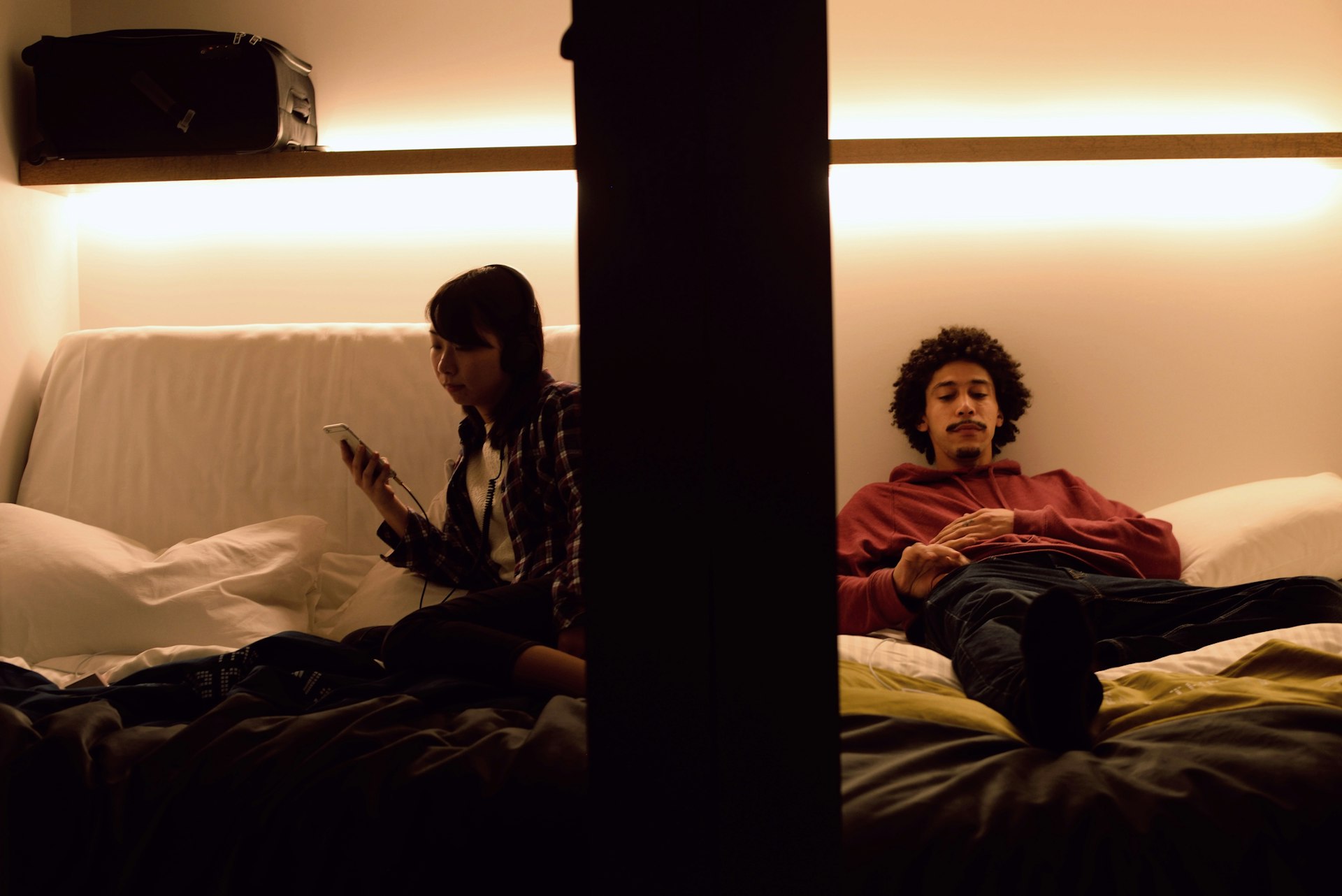
3. Sleep in a capsule hotel in the cities
Capsule hotels, which offer small rooms with enough space for just a bed, provide a budget-friendly place to spend the night.
A capsule berth costs slightly more than a dorm bed in a hostel (¥4,000 per night), but you get more privacy.
You probably wouldn’t want to stay every night in a capsule, but they’re good for saving money in cities where hotels are pricier.
4. Go camping in the summer months
If you really want to do Japan on the cheap, you can rely on its network of well-maintained campsites in rural or resort areas; prices range from ¥500 to ¥1,000 per person or tent. Note that many sites are only open in the summer.
5. Swap a night in a hotel for an overnight bus ride
Long-distance buses, like those operated by Willer Express , are the cheapest way to get around, and longer routes have night buses, which saves a night on accommodation. There are also bus passes, which can make this an even cheaper option.

6. The Japan Rail Pass is a great travel bargain
Like the famous Eurail Pass, the JR Pass is one of the world’s great travel bargains and is the best way to see a lot of Japan on a budget.
It allows unlimited travel on Japan’s brilliant nationwide rail system, including the lightning-fast shinkansen (bullet train).
There are also more regionally specific train passes that are cheaper, so examine your itinerary carefully before deciding. Purchase a pass online or from a travel agent like JTB in your home country.
7. Ride local trains for less with the Seishun 18 Ticket
The Seishun 18 is another great deal, but with very specific conditions: for ¥12,050, you get five one-day tickets good for travel on any regular Japan Railways train (meaning not the shinkansen or any high-speed limited express trains) during a limited period of a few weeks.
The Seishun 18 Ticket is only available at certain times during the year – during school holidays (the ticket is designed for students, but there’s no age cap) – and can only be purchased from JR ticket windows in Japan.
If the timing works, and you’re a fan of slow travel, this is a unique, ultra-cheap way to get around in Japan .
8. Consider renting a car to go beyond the cities
Highway tolls and petrol in Japan are expensive; however, renting a car can be economical if you’re traveling as a group or family, or are plotting an itinerary that takes you away from major rail hubs.
9. Take domestic flights with low-cost airlines
Japan has several budget carriers, like Peach , Jetstar and Air Do , that offer bus-like pricing on some routes – just be sure to factor in the time – and cost – of going to/from the airport.

10. Japan’s shrines and temples are free to visit
The vast majority of Shintō shrines in Japan cost nothing to enter. Likewise, the grounds of many temples can be toured for free (often, you only have to pay to enter the halls or a walled garden).
11. Eat cheap food and meet locals at a traditional festival
Throughout the year , festivals take place at shrines and temples and through city streets. They’re free, an excellent way to see traditional culture come alive, and are well attended by cheap food vendors.
12. Opt for hikes and walking tours
Going on a hike or a trek is free and can be the most rewarding part of your trip: explore an up-and-coming city neighborhood , walk old pilgrimage trails or rural lanes, or get up into the mountains in one of Japan’s national parks .
Japan’s cities, especially Tokyo, have some fantastic buildings designed by many of the big names in Japanese architecture. With a little bit of planning, you could chart your own architecture tour. Ask at a tourist information center or your accommodation for suggestions.
13. Spend time relaxing in the city parks
Urban parks are generally free to enter (and some gardens are, too) and are popular with locals on weekends; pack a picnic and settle in for an afternoon of people-watching. If you time your visit right, you could be bathing in the beauty of Japan's cherry blossoms .
14. Shop for cheaper goods at a local market
Many seaside towns have fish markets, some rural spots have morning markets, and some cities still have their old-fashioned open-air markets. Visits here are a great way to connect with local culture and are often a source of cheap, fresh food.
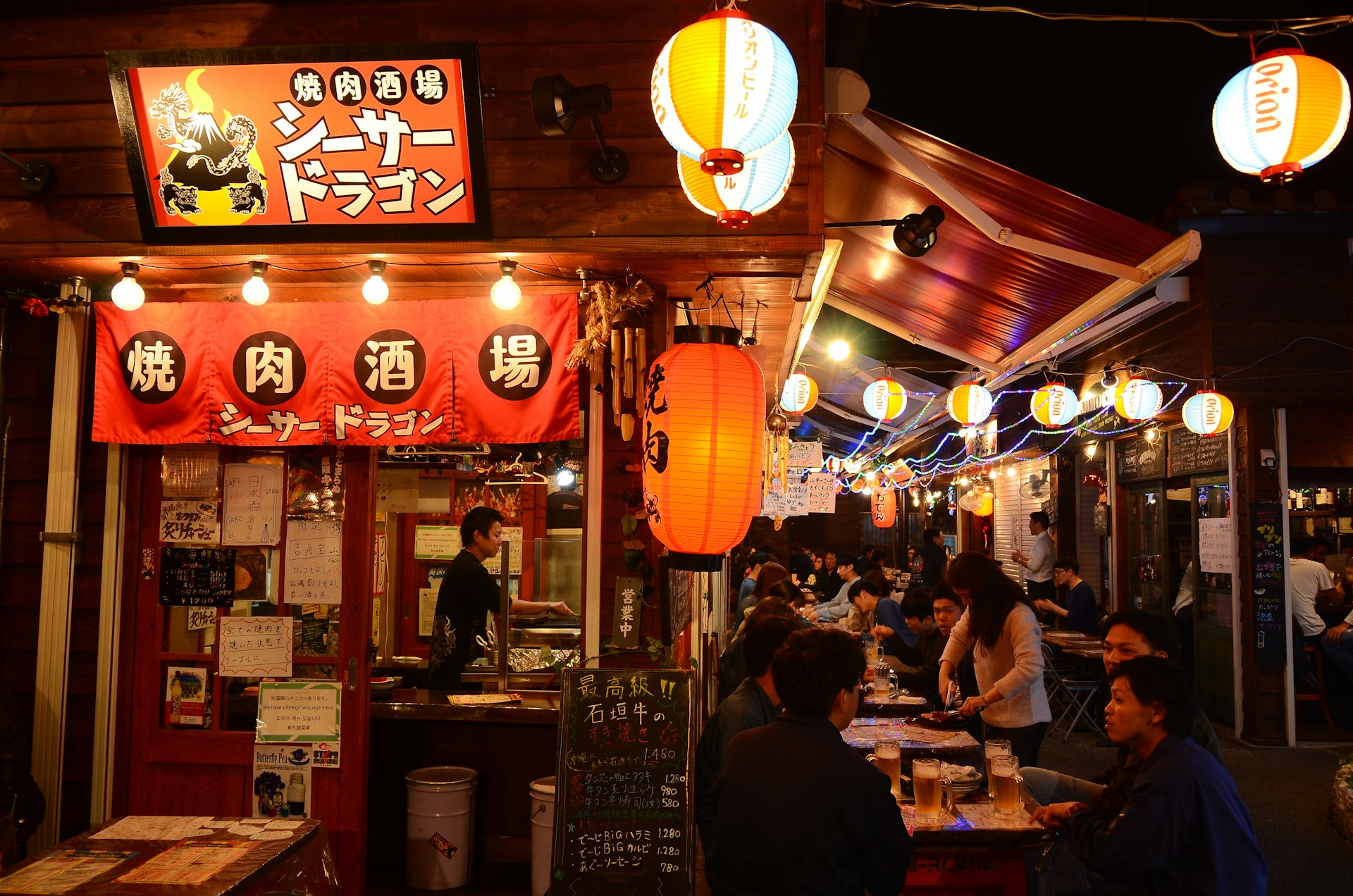
15. Choose the right dish in the right place to save money
You can get a good, filling meal in shokudō , Japan's answer to the greasy spoon, for under ¥1,000. A steaming bowl of tasty ramen can be picked up in many places for as little as ¥600.
Tachigui (stand-and-eat counter joints) sell soba (buckwheat noodles) and udon (thick white wheat noodles) for even less – starting as low as ¥350 per bowl.
Many upscale restaurants in Japan offer a smaller course at lunchtime for significantly less than they charge at dinner, so for a bargain deal have your larger meal then. In all restaurants in Japan, tea and water are complimentary, and tipping is not required.
16. Bentō are a budget alternative to a meal out
These "boxed meals," which include a variety of dishes, can be picked up for under ¥1,000 at supermarkets. Department store food halls sell gourmet ones for a little bit more; visit just before closing to buy them on markdown.
17. Get everything you need and more at the convenience store
Convenience stores are the best friend to all budget travelers. They stock sandwiches, rice balls, hot dishes and beer, all of which you can assemble into a very affordable (if not exactly healthy) meal. Accommodations always have kettles, so cup noodles are always an option.
Keep planning your trip to Japan:
Save this guide to the top things to do in Japan . Find out what to expect during every season from cherry blossoms to winter skiing . Before you book your trip, read these t op things to know before you go . Do you need a visa? Discover more here. Want to see Japan by train? Railway enthusiast John Walton shares his advice.
This article was first published May 15, 2012 and updated Mar 28, 2024.
Explore related stories
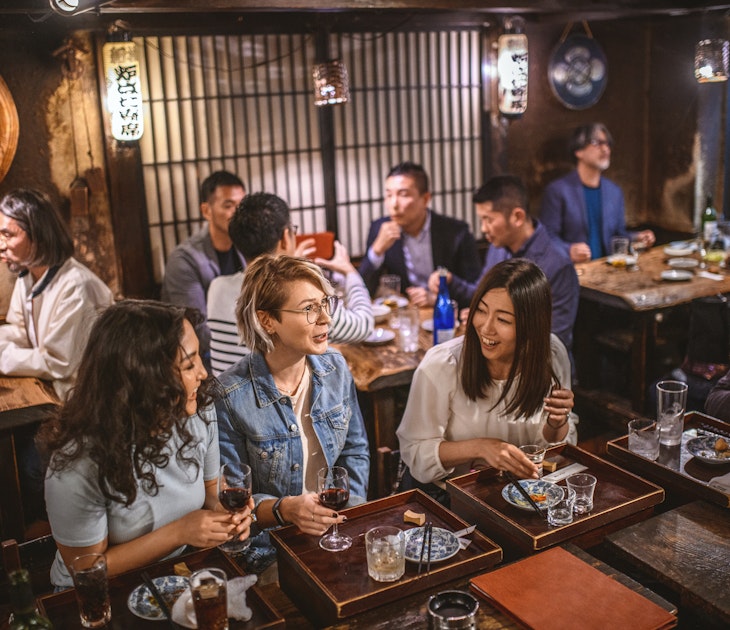
Budget Travel
Mar 23, 2024 • 7 min read
Tokyo is expensive but you don't need to max out your credit card to enjoy. Our insider tips and tricks will stretch your yen and save your bank account.
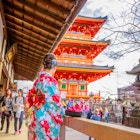
Dec 10, 2023 • 6 min read

Oct 20, 2023 • 13 min read

Jan 29, 2020 • 9 min read

Jan 12, 2020 • 5 min read

Oct 28, 2019 • 19 min read

May 23, 2024 • 12 min read

May 3, 2024 • 14 min read

May 1, 2024 • 9 min read

Apr 14, 2024 • 6 min read

Japan travel budget calculator
What will exactly cost my trip to Japan? Every prospective tourist for the archipelago wondered about the amount necessary to plan a travel in their dream country.
Kanpai’s Budget Calculator provides a precise estimate of the travel expenditures item-by-item, with numerous possible choices. As a matter of fact, a backpacker’s 10-days trip will not cost the same as a 3-weeks stay for a family looking for a very comfortable trip.
Fill in the questionnaire below to discover the expenses to expect and many advices on how to keep the cost down.
How much should I budget to go to Japan?
- Number of Travelers
- Your Travel
- Itinerary & Transportation
- Accommodation
- Outings & Shopping
April, July and August are peak touristic seasons: many services are more expensive during these periods. Consider traveling in January, February, March, May, June, September, October, November or December to keep your costs down.
- Flights and Airports
- Transportation
- Internet & Phones
- Budget and money
- Japanese Food
- Visit with Kids
- Seasons: spring / summer / autumn / winter
- Weather forecast
- Time in Japan
- Holidays & Festivals
- Natural Disasters
- Customs and Duties
- Works and Closures
- June 6 -- Beginning of the rainy season (Tsuyu) in Japan
- June 21 -- Summer starts in Japan
- From July 1 to 31 -- Gion Matsuri Festival in Kyoto with float processions on July 17 and 24
- July 1 -- Season start for climbing Mount Fuji
- July 15 -- Sea day / Umi no Hi in Japan (holiday)
- July 17 -- Tokyo Day
- Tokyo : Shinjuku , Shibuya , Harajuku , Asakusa , Akihabara , Odaiba , Ikebukuro , Ueno , Roppongi , Chiyoda , Ryogoku ...
- Around Tokyo: Kamakura , Nikko , Hakone , Mount Fuji , Mount Takao , Yokohama ...
- Kansai: Kyoto , Nara , Osaka , Mount Koya , Himeji , Kobe , Kinosaki , Kumano Kodo , Ise ...
- Japanese Alps: Kanazawa , Matsumoto , Takayama , Shirakawa-go , Nakasendo ...
- West: Hiroshima , Miyajima , Shikoku , Onomichi , Naoshima , Izumo , Kurashiki , Matsue ...
- South: Kyushu , Okinawa , Yakushima ...
- North: Hokkaido , Tohoku ...

- Temples and Shrines
- Gardens and Parks
- Hiking and Trekking
- Observation Decks
- Public Baths (Onsen and Sento)
- Festivals (Matsuri)
- Amusement Parks
- Visit on a Budget / Luxury

Keikaku is a travel agency specialist of Japan and providing different kind of services:
- Japan Rail Pass
- English speaking Guides
- Pocket Wi-fi
- Japan Nightlife
- Working in Japan
- Religion and Spirituality
- Arts and History
- Movies / Animated Movies
- Japanese Music
- Studio Ghibli
- Photos / Videos
- Weird Japan
- Translations
- Kana & Kanji
- Japanese Swear Words
- Honorific Suffixes (san, kun, chan...)
- Introducing yourself
- Thank you / Apologize
- Count / Say Your Age
- Say the Date / Tell the Time
- Happy birthday
- Enjoy Your Meal
- Writing your name

Kanas are the much-needed basic characters of written Japanese language. Memorize them at a fast pace with our method.

Ask any kind of question and share your knowledge about Japan in Kanpai’s community space, our Q&A section Kotaete.

Isshoni means "together" in Japanese: share your trip details (dates, places you would like to visit) and find companions to travel in Japan.

Create your Kanpai account to manage your profile and view your participation history (questions, answers).

Borders Of Adventure
Leading Culture and Adventure Travel Blog by Becki Enright. Looking at the world with a different angle to change perceptions of misunderstood places, for the best in travel.
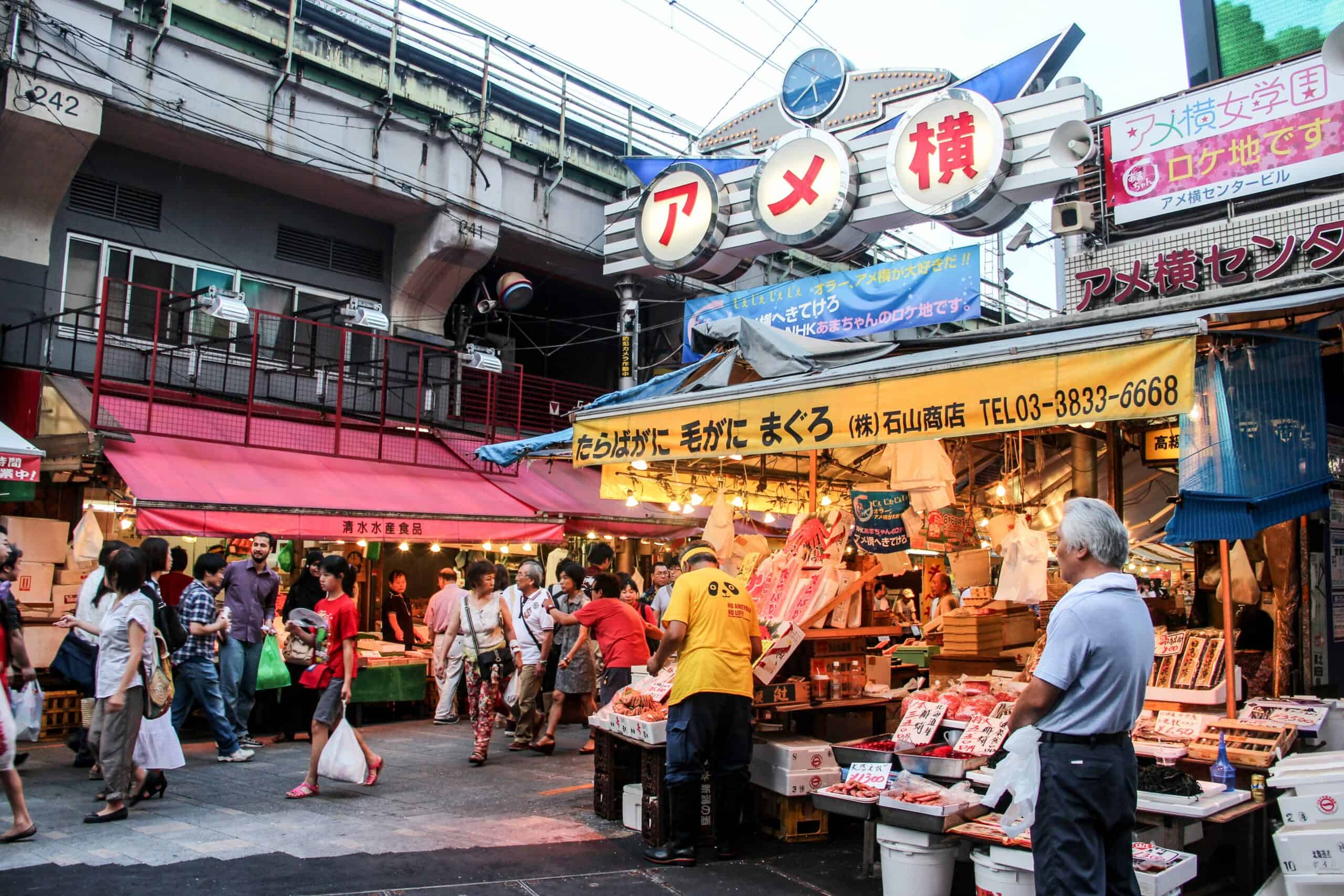
Cultural Travel , Japan
How Much Does It Cost To Travel In Japan? Budget Trip Tips and Worthwhile Expenses
Disclaimer: This post contains affiliate links to handpicked partners, including tours, gear and booking sites. If you click through or buy something via one of them, I may receive a small commission. This is at no extra cost to you and allows this site to keep running.
The cost of travelling in Japan is not as much as you think if you plan well. This guide on Japan trip costs has budget tips and breakdowns for transport, bookings, and accommodations across the country.
Knowing that Japan has a higher cost of travel can be offputting, but the expense is secondary to the experience. Whether you want to soak up the bright lights and the distinct buzz of the big cities like Tokyo and Osaka, wander the old, narrow wooden housed lined alleyways of Kyoto, stroll through the scenic smaller towns of Kobe and Nara, or relax within the beach towns and mountain ranges of the peninsulas and islands, Japan is vast and full of natural beauty and endless changing scenery.
Aside from where to go and what to do, the questions of ‘Is Japan expensive?’ and ‘How much does a trip to Japan cost?’ are always at the fore. So I will cut to the chase—travelling here is more costly than in its Asian neighbours. Yet, by pre-booking rail passes and planning your rough route and associated bookings, you’ll save yourself some money.
This Japan travel cost breakdown will help you plan your trip, calculate your estimated Japan budget and see exactly where your money goes.
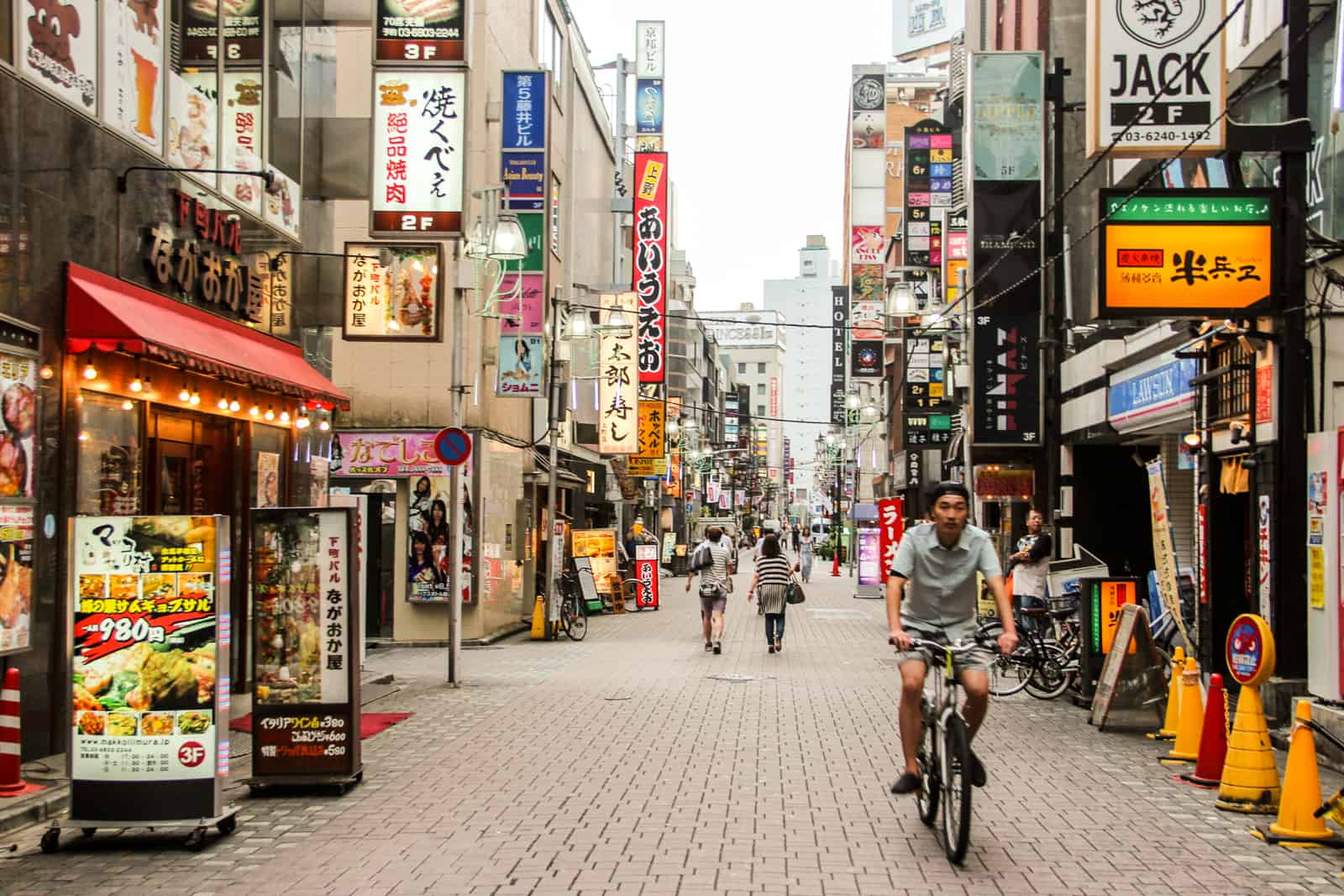
How Much Does It Cost To Travel In Japan? Save with these budget trip tips.
First, Plan How Many Days to Spend in Japan
When is the cheapest time to travel to japan, how much does a japan trip cost in comparison to the rest of asia, japan budget per day, per week, per month, cost of a two-week japan vacation, how much money do you need per day in japan, cost of travelling in japan for one month , standard train prices in japan, 7-day japan rail pass, 14-day japan rail pass, 21-day japan rail pass, buying a japan rail pass , local trains in japan, japan metro and bus system, taxis in japan, bike hire in japan, cost of food in japan, tokyo accommodation costs, mount fuji area accommodation costs, ito accommodation costs, kyoto accommodation costs, nara accommodations costs, osaka accommodation costs, kobe accommodation costs, hiroshima accommodation costs, book a hotel in japan, cost of tours in japan, how much do attractions cost in japan, planning a trip to japan and want to budget pin it.
Of course, the length of your Japan itinerary determines your budget. Typically, visitors spend two weeks in Japan on their first visit, hopping between the major cities and associated landmarks and sites.
I spent four weeks in Japan, travelling entirely via overland transportation. I wanted to immerse myself in the culture, see a range of different places, and spend a quality amount of time in areas that are both key highlights and some of the biggest areas to explore – Tokyo (one week), Kyoto (six days) and Osaka (three days), time to climb Mount Fuji, and to cross the country and get down to Hiroshima.
Yet in one month, I didn’t get to explore the far northern regions of Japan, the Alps, anywhere further south than Hiroshima, nor the outlying islands, which would have meant having to budget for an internal flight.
The country is much bigger than you think, and seeing it all on a single visit is impossible.
- What is Tokyo Like? Things to Love About Japan’s Capital City
- Climbing Mt Fuji – Summiting Japan’s Sacred Peak
- What to Do in Osaka – The Rebellious, Eccentric, and Brash City
- Things to Do in Hiroshima – A City With Unforgettable History
READ ALL: On my Destination Page for Japan .
The best times to visit Japan are March to May (for the spring season) and September to November (for autumn). Therefore, it’s a good idea to look for flights to Japan and accommodation deals during the off-season: November to March. The summer months from June to September (especially July and August) can be unbearably hot and uncomfortable for travel and sightseeing.
The official climbing season for Mount Fuji is also between July and September, which is a big factor for a lot of visitors wanting to hike.
Japan is one of the most expensive countries to travel to in the Asia region. For that reason, many people choose not to travel there in favour of the more established and budget-friendly Southeast Asian routes.
Backpackers and hardcore travellers are a minority here; most Westerners are those just visiting on business. Visitor numbers, however, are growing. Japan’s tourism industry has one of the fastest growth rates annually. Since Japan was one of the last countries to open following intense pandemic measures, exponential visitor numbers continue.
In reality, Japan isn’t going to get any cheaper; in fact, it may get even more expensive – and avoiding Japan for cost reasons alone means missing out on what is rated as an absolute must-see destination.
In the Southeast Asian countries of Cambodia, Laos, Vietnam, Thailand, and Myanmar, you can expect to spend an average of £500- £600 / $800-$950 + a month on a budget. China, Taiwan, and Nepal cost approximately the same, and South Korea is slightly higher, depending on transport options and the number of activities undertaken.
A step up from that are destinations like Mongolia, Borneo, Singapore, and Malaysia, where your budget would stretch closer to £800 / $1,300+ over a month because they are places with stronger economies, where prices are naturally higher, or where activities and attractions are harder to reach or organise on your own.
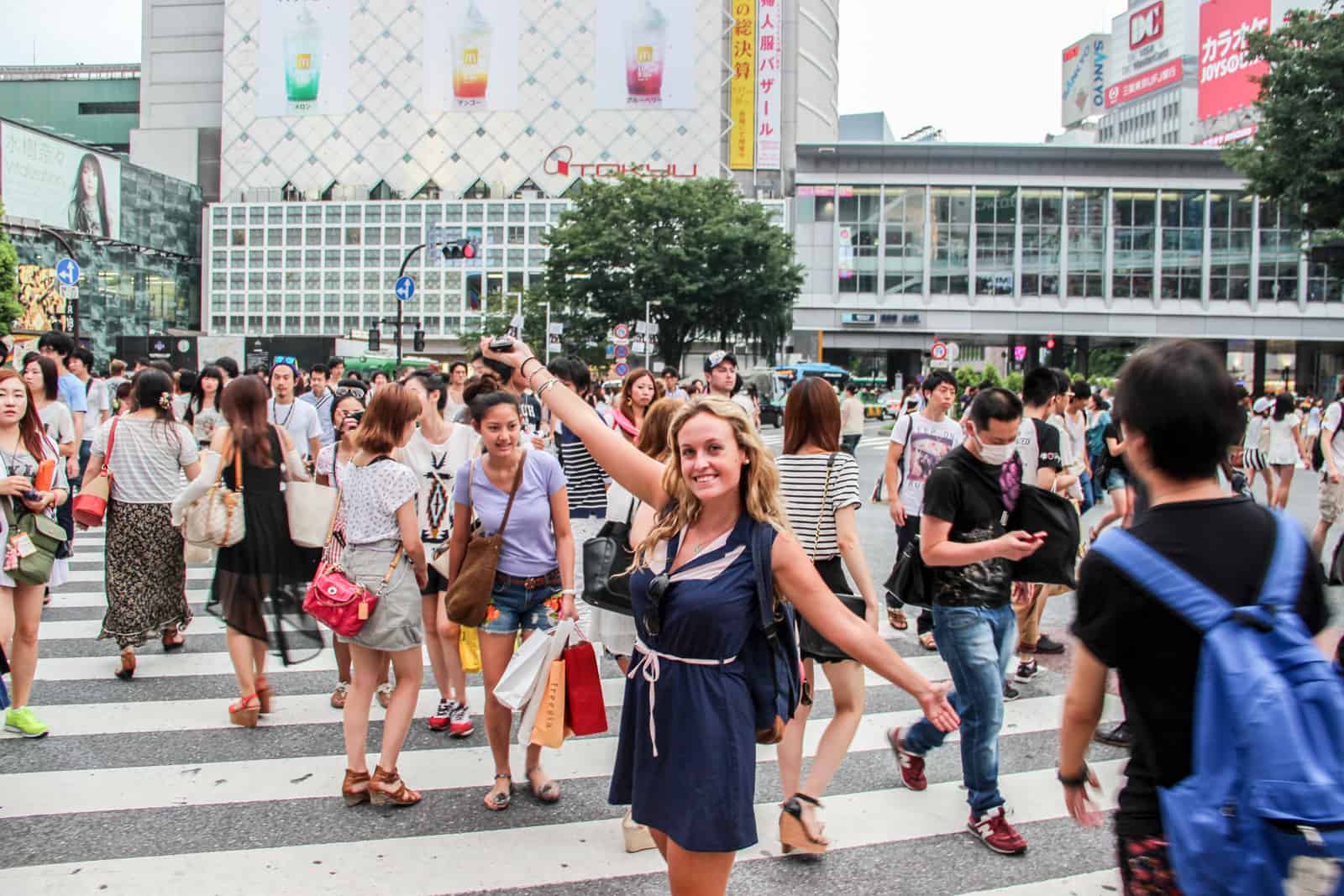
Japan is expensive when it comes to travelling in Asia. But it’s worth the cost.
Trip Cost by Length of Visit
In Japan, independent travel was much easier than I had originally thought. Hostel options were plentiful, local food outlets were cheaper than larger restaurants, and the transport was cost-effective.
But where does your money go in Japan, and what is the spending ratio?
Estimated calculations from 2024: based on transport, accommodation, and food expenses. All variations include the cost of a 7-day and 21-day Japan Rail Pass (following its recently hiked prices).
- Japan trip cost for one month
- £1,900 / $2,400
- £550 / $695
Based on the average vacation time of two weeks, you need to budget at least $1,400.
Around one-third of that will be spent on a 14-day Japan Rail Pass.
Since there’s no set amount of time to travel in the country, with some even visiting as a layover in Tokyo, it can be easier to calculate a daily budget spend in Japan.
Japan on a budget – 15,000 Yen per day (£80 / $100)
Those looking to stay in hostels, eat cheaper meals, and not frequently indulge in nightlife.
Japan on a mid-budget – 20 ,000 Yen per day (£100 / $130)
For those wanting to stay in low-cost hotels, enjoy the restaurant scene, nights on the town, and the odd activity/experience splurge.
Japan on a high-end budget – 25,000 – 40,000 Yen per day (£130-£200 / $165-$250)
For those wanting more luxury, the best cuisine in town and first-class train tickets.
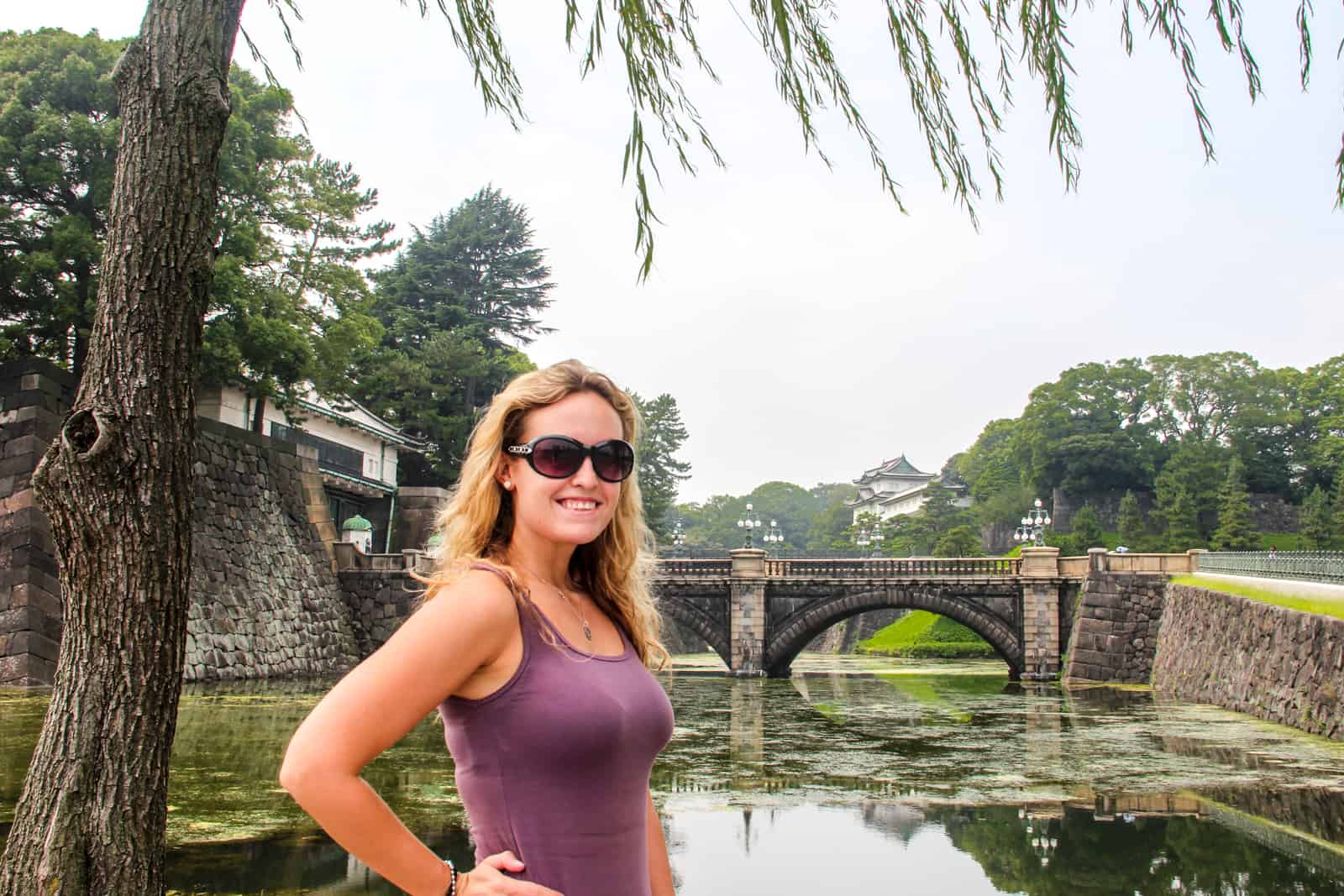
You’ll need to budget around $1,200 for a two-week backpacking trip around Japan.
21 Day Japan Rail pass
£523 / $660
Accommodation for 30 nights
£600 – £800 / $760 – $1,010
Food, drink, tourism site entry fees, other transport, and day-to-day living
£700 / $880
For a slow and budget traveller, this hit my monthly outgoings hard, but I don’t regret a single penny spent. Why? Japan is incredible.
Is it Worth Getting a Japan Rail Pass?
The Japan Rail Pass might be one of the biggest initial costs. Suppose you plan to visit more than three or four long-distance destinations in Japan. Buying one is highly advised in that case. It gives you unlimited journeys on all Japan Rail, Japan Ferry, and Japan Buses throughout the country.
Many people are put off by the high cost of the rail pass, but individual rail journeys are expensive and, when added together, can cost more than the unlimited rail pass. Since the Japan Rail Pass price hikes in October 2023 , it is worth working out planned train journeys and seeing if you can save by having the pass.
Are you thinking of paying as you go? Here are some average one-way train ticket costs in Japan without using a Japan Rail Pass.
- Tokyo – Kyoto: £94 / $118
- Tokyo – Osaka: £97 / $122
- Tokyo – Hiroshima: £128 / $161
- Kyoto – Osaka: £20 / $25
- Kyoto – Hiroshima: £77 / $97
- Osaka – Hiroshima: £70 / $88
The average cost for a Tokyo – Kyoto – Osaka – Hiroshima – Tokyo round-trip ( without using a Japan Rail Pass) = £348 / $440 .
For one week of travel, individual train tickets may be the more cost-effective option. That’s if you can find good fares at the time of travelling.
How Much is a Japan Rail Pass?
If you cover this basic route of city highlights, buying a Japan Rail Pass for two or three weeks of unlimited travel in Japan can save you a lot of money and avoid the hassle of searching for the lowest-cost ticket.
You should invest in a Japan Rail Pass only to make the cost of multiple and long-distance travel worthwhile.
The following are prices for the standard/ordinary class tickets.
£261 / $330
£418 / $528
£523 / $661
The Japan Rail Pass must be booked before you arrive in Japan.
Local travel agents can book this for you, and you will be given a receipt to be presented at the main stations in Tokyo in exchange for your pass. However, it’s quick and easy to purchase a Japan Rail Pass online, as shown below.
Japan Rail Pass From £261 / $330 / 50,000 Yen / Multiple Currencies You can purchase a rail pass from Japan travel experts, J Rail Pass. Multiple-day and regional passes can be ordered with free delivery in various countries. The website is easy to use, with quick and secure payment and with other Japan travel services to hand. Buy a Japan Rail Pass Now
Other Transportation Costs in Japan
Local trains outside the JR Rail pass inclusion can cost anywhere from £3-£10 / $4-$13 for a short half-hour journey up to £15 / $20 for a destination an hour or more away.
Ticket prices vary according to which of the five different types of train you take:
- Local trains stop at every station on the route.
- Rapid trains skip some stations
- Express trains skip even more stations
- Limited Express stop only at major designated stations
- Super Express (shinkansen ‘bullet trains’) operate separately on different lines and with their own stations
Be aware of extra costs when using Japanese trains and booking tickets. An extra fee is applied on top of the train ticket base fee for the faster trains.This applies to the Express trains upwards (in terms of speed)
What seat class do you choose? While most local trains have a standard class across all carriages, there are two classes of seats on long-distance trains, which also affects your overall costs – Ordinary (Second Class) and Green (First Class)
- Green/first-class seats can sometimes be double the price of the standard fare.
- Shinkansen (bullet) trains have reserved and non-reserved seating options, where a reservation can cost within the region of $5.
- Shinkansen (bullet) train seat reservations are free with the Japan Rail Pass.
Check here for routes and timetables for trains in Japan.
Japan has metro lines in nine cities, although you are likely to mainly use those in Tokyo, Osaka, and Kyoto. Tokyo’s subway is the largest and most tricky to navigate, although I always find myself being helped out by locals who came to my aid in helping me purchase the right ticket or even ride the line with me until my correct stop.
A single trip on a Metro and average bus journeys in all cities varies but is usually from 180 – 400 Yen – around £1 -£4 / $1.25 – $5 for a single journey.
You can purchase an unlimited Tokyo Metro Pass: 24 hours (800 Yen/€4/$5), 48 hours (1,200 Yen/£6/$8), or 72-hours (1,500/£8/$10).
A comprehensive breakdown of all metro lines, ticket prices, and tips on navigating each system can be found here .
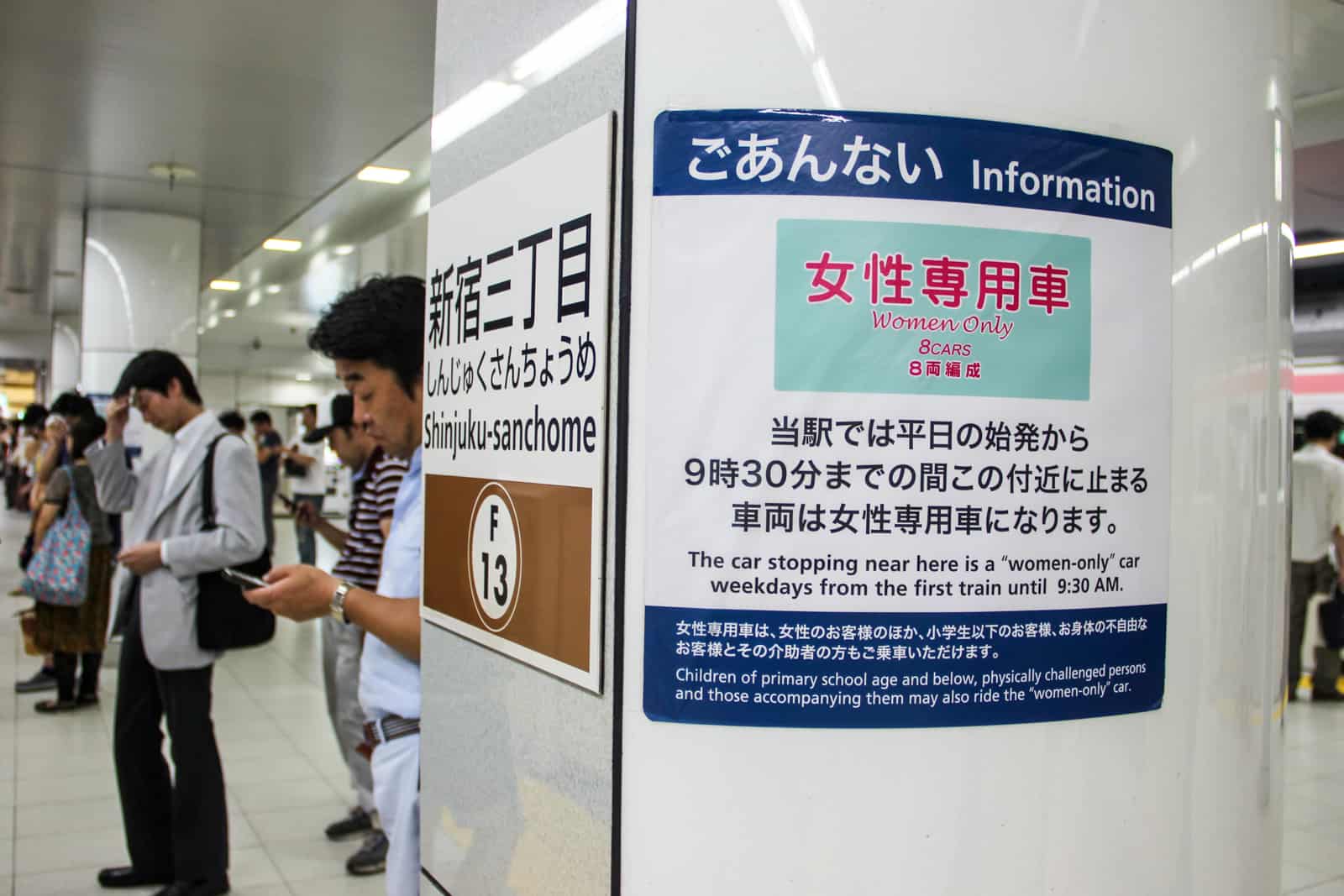
The Japan Metro is an overwhelming but cheap means of transport around the major cities.
Taxis, especially in Tokyo, are ridiculously expensive and should be avoided unless absolutely necessary or if you have no choice. As an example, a 20-minute journey home after a night out in Tokyo cost nearly £38 / $48, and that was even on the meter.
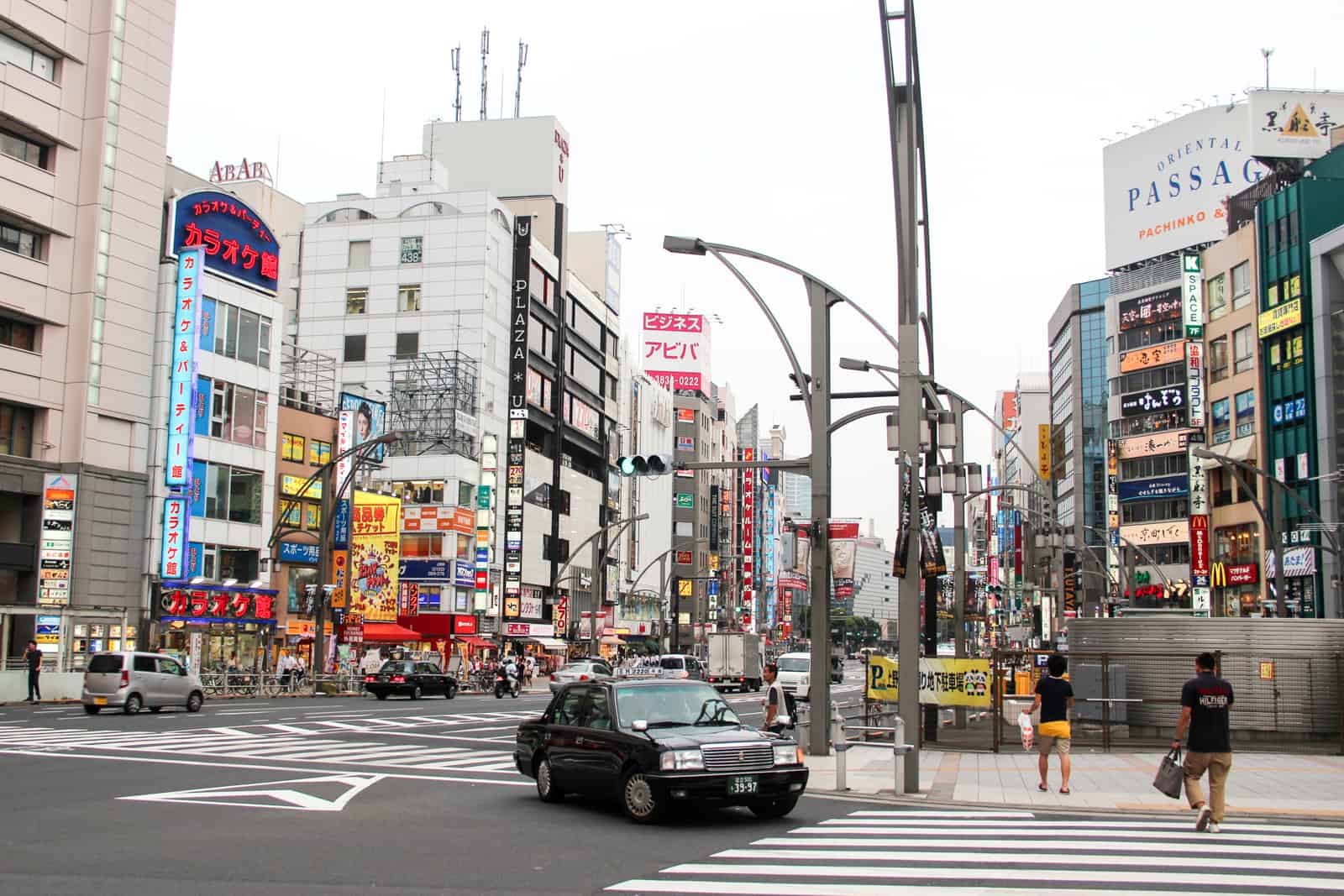
Japan black and yellow taxis are an expensive option.
Like most destinations, bike hire is common and one of the most budget-friendly ways to get around and explore an area.
Many guesthouses in Japan offer this facility for free, and if not included, the average cost I found for one-day bike hire was £3 / $4.
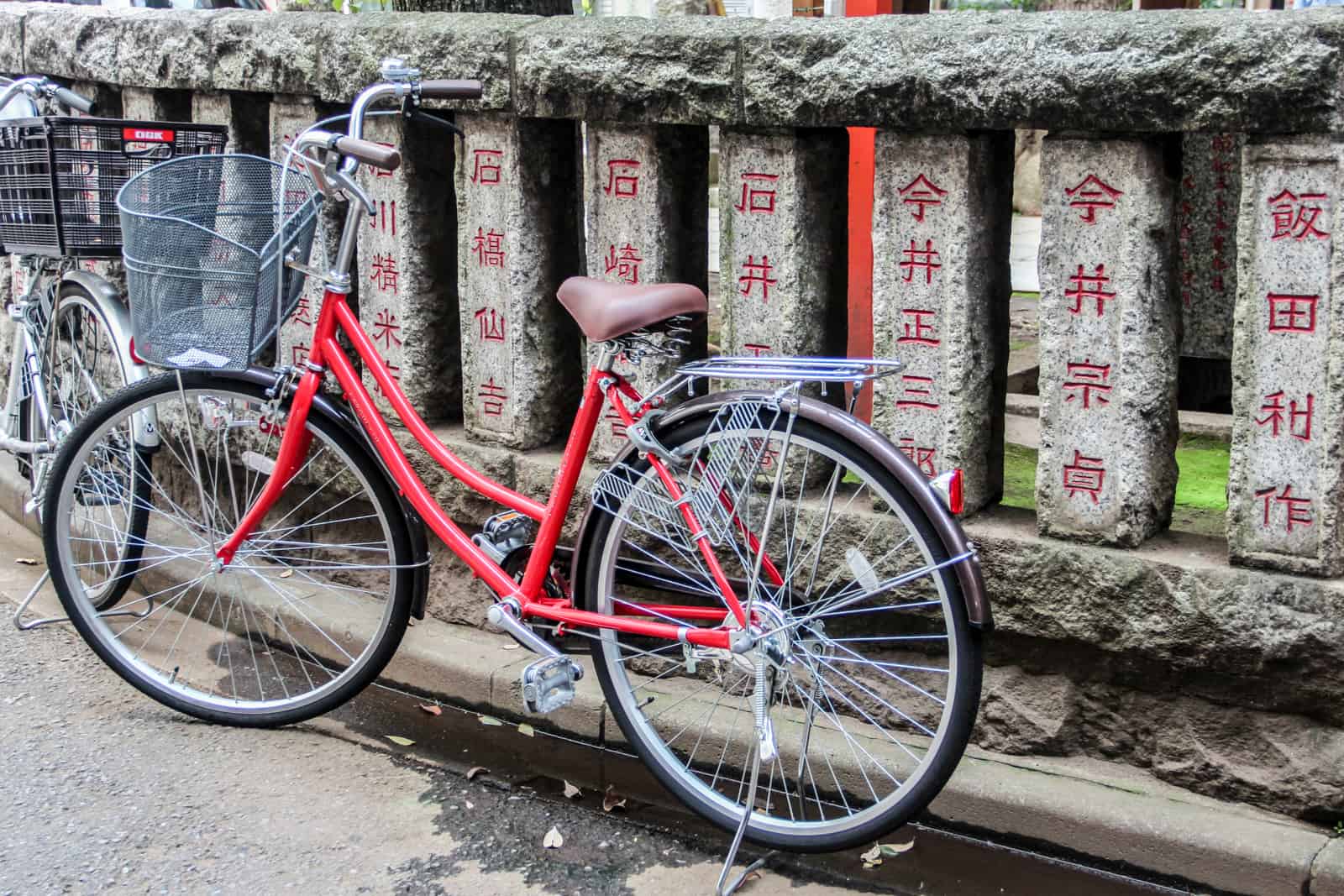
Make use of free or inexpensive bike hire from Japanese accommodations.
Food prices (and drinks) vary dramatically depending on location. You may be eating a cheap bowl of ramen noodles for a full meal at a standard restaurant or trying the delectable beef that Kobe is famous for, with a hefty price tag! Chain restaurants like the CoCo Ichibanya curry house do great deals alongside local establishments, which might throw in a free beer if you stick to a certain menu. Sushi doesn’t have to be an expensive option, as does tempura.
One budget food tip for Japan is to get breakfast, snacks, and sushi sets at a local supermarket. You can even stay within a 1,000 Yen budget (£6 / $8) for a meal.
- A meal in a local restaurant: £5-£10 / $6-$13.
- Ramen or curry: £6 / $8 (can be sought for less than 1,000 Yen).
- Kobe beef (special, must-do treat!): £17 / $22+.
- Budget sushi: £0.75 / $1 (Around 100 Yen per item on the menu)
- Sushi at Tokyo’s Tsukiji Market: £13 – £20 / $17 – $26 (2,000 – 3,000 Yen for sushi sets of around seven pieces or more).
- Cover charge at themed bar or restaurant: £6 / $8 on average.
- Bottle of beer: £3 / $4.
- Cup of coffee: £3 / $4.
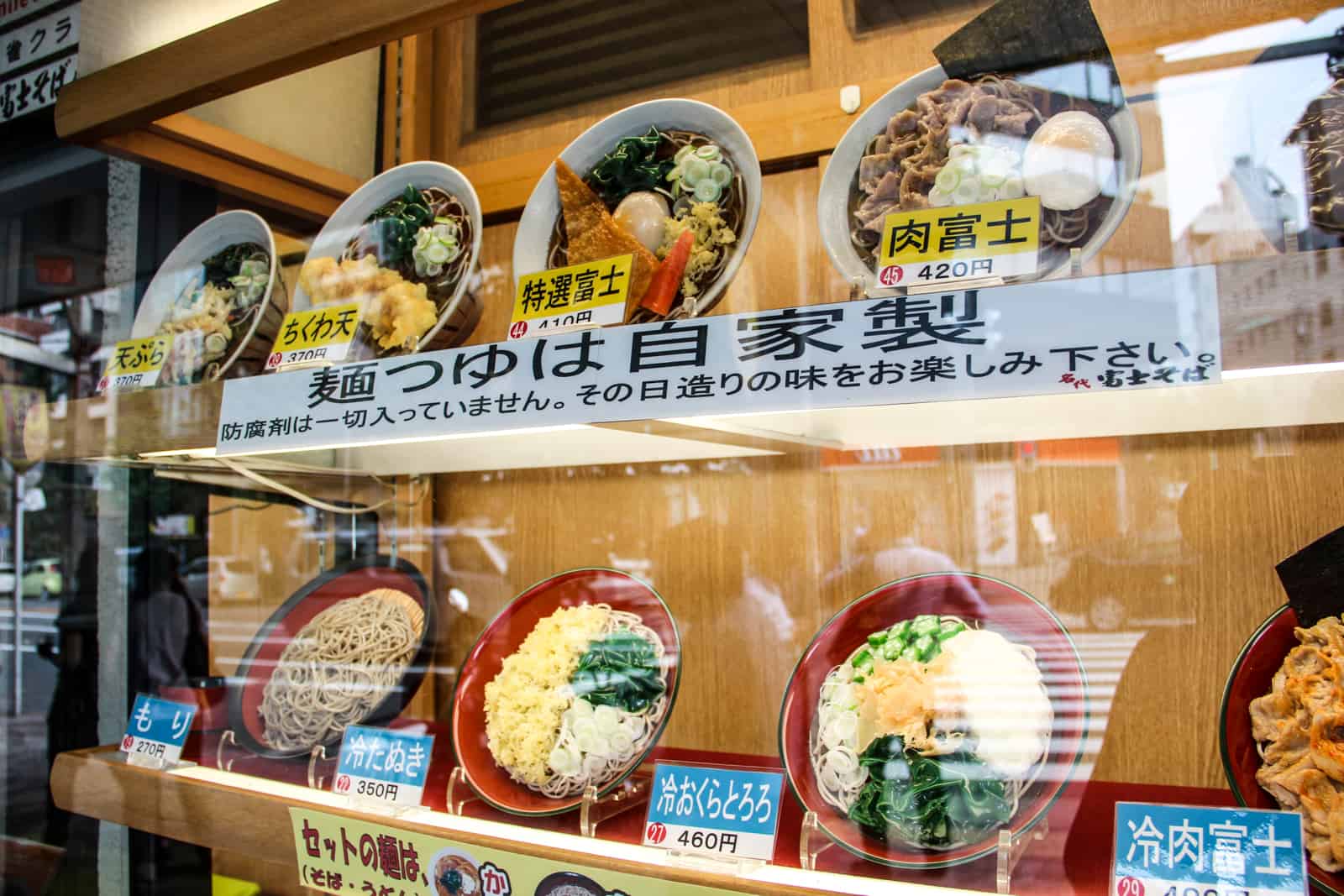
Plastic food on display at Japanese restaurants makes choosing and knowing the price easy.
Accommodation Costs in Japan
In Japan, accommodation will be your biggest cost, alongside transportation.
However, this country is quickly responding to the needs of the budget traveller, with more and more establishments becoming aware of the growth of tourism and a slow influx of more established backpackers looking for practicality over luxury.
Hostels are prevalent in big cities like Tokyo, Kyoto, and Osaka. In many areas, old houses and traditional Ryokan are being preserved and turned into homely hostels and guesthouses, meaning you can experience Japanese tradition on a budget.
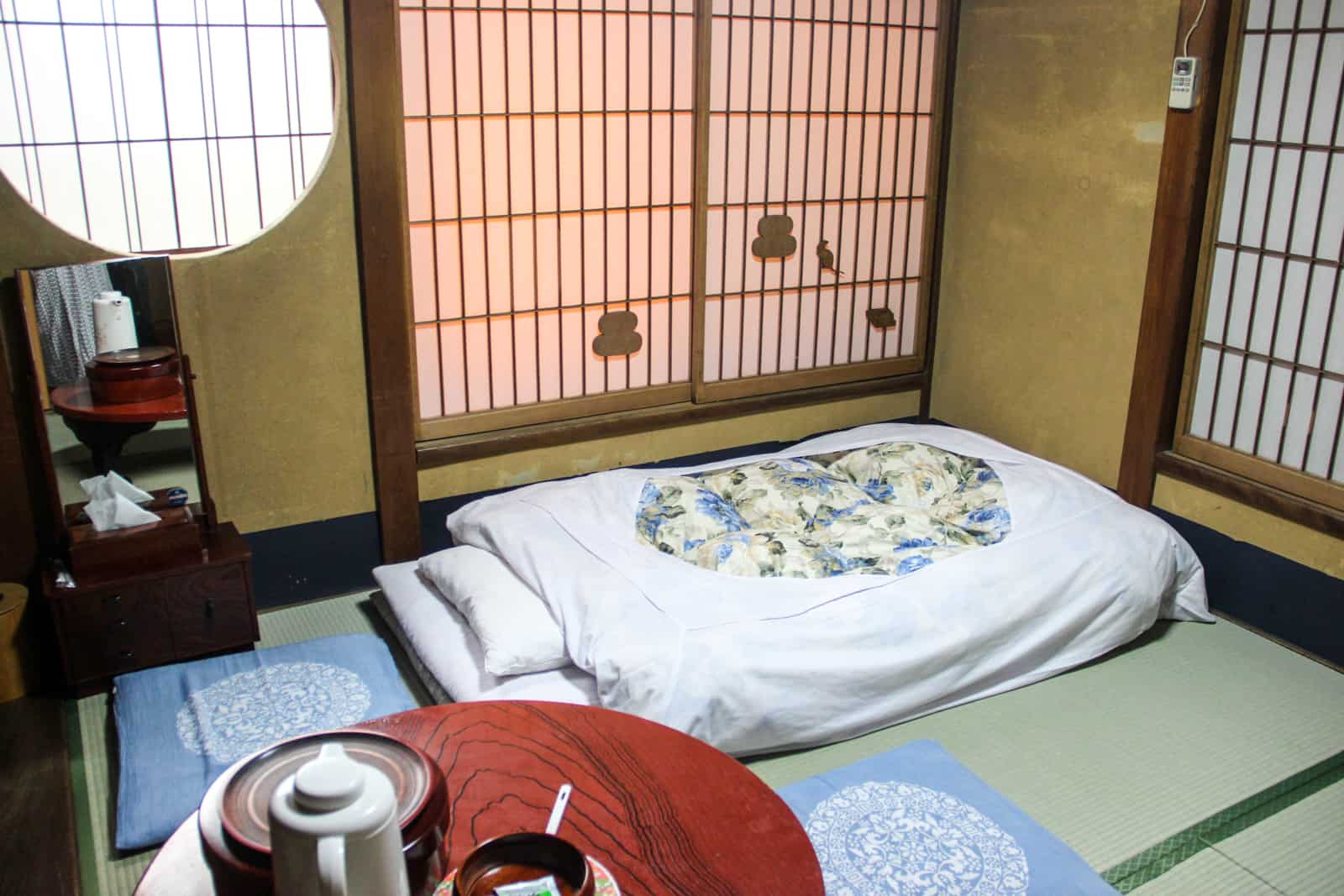
Factor in a traditional Ryokan (Japanese Inn) into your accommodation budget.
I stayed at the range of accommodations in Japan listed below to pull together a comprehensive list of options that cover all manner of budgets, from no-frills to luxury hostels, to traditional homestays and Ryokans, on a journey that started in Tokyo and which took me through various key hotspots in the country, all the way down to Hiroshima.
Below is an outline of where I stayed and the costs per night for a dorm or a single room.
Homeikan – A traditional Ryokan, said to be Tokyo’s oldest, with an onsen bath.
From £41 / $51 for a private room
K’s House Traveller’s Hostel in Kawaguchiko – In the heart of the Fuji area, with free bus transfers to the main train station.
From £58 / $73 for a dorm room
K’s House MtFuji
Private rooms from £140 /$176
Standard mountain house on Mount Fuji
From £38 / $48 for a sleeping space, sleeping bag provided
K’s House Ito Onsen – Shared and private rooms within a 100-year-old Ryokan, with an onsen bath.
From £20 / $25 for dorm room
From £58 / $73 for a private room
Santiago Guesthouse – A new hostel with its very own luxury café.
From £11 / $13 for a dorm room
Kyoto Piece Hostel – A luxury hostel with a swanky hotel vibe.
From £42 / $53 for a private
From £15 / $19 for a dorm room
Haruya Hostel – An old Japanese house converted into a homely guesthouse.
From £16 / $20 for a dorm room
Utano Youth Hostel – A traditional ‘youth hostel’ outside of the central city.
From £21 / $27 for a dorm room
Nara Backpackers – A traditional Japanese house turned into a cosy guesthouse.
J-Hoppers Osaka – Based slightly out-of-town in nearby Konohana ward (where Universal Studios is based) and main transport links.
From £17 / $22 for a dorm room
Yume Nomad – A huge local house turned guesthouse with its own in-house café.
From £13 / $17 for a capsule
Nest Hotel Hiroshima Hatchobori
From £49 / $62 for a economy double
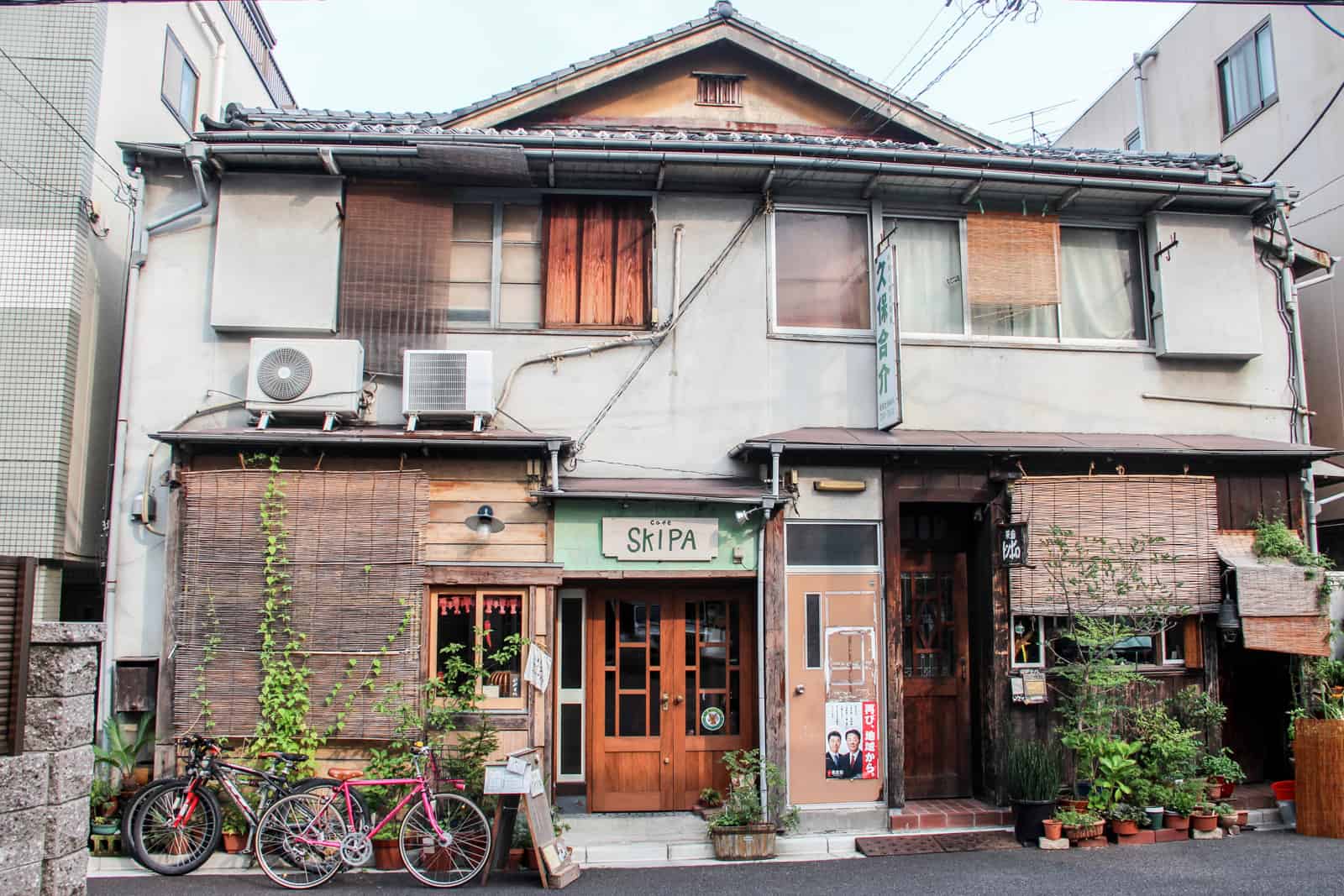
Living locally in Japan. Many traditional houses have been converted into small hostels and guesthouses.
For some, independent travel in Japan might seem overwhelming. If you embark on solo travel in Asia for the first time, Japan can feel more isolated and less trodden than the Southeast Asia hotspots. Would you rather a travel trip to Japan be taken care of and travel in a small group with other adventurers? I recommend these tours of Japan with G Adventures, which takes in many of the country’s key cities and highlights, getting you from Tokyo to Hiroshima and back again.
With a variety of trip options from five days to two weeks, including visiting the iconic Japanese sights on a National Geographic Journey trip , seeing Japan’s highlights on a budget , or travelling the backroads of Japan , you could even mix and match a small group tour with independent travel.
Eccentric shows, walking tours, cultural tours, and ceremonies also factor into your exploration budget when travelling in Japan.
Temples, castles, and palaces are mostly free to enter , although some historical monuments may have an admission fee, which contributes to the site’s protection.
For example, Tokyo is a dream on a sightseeing budget, with core sites such as the Buddist Sensoji Temple and the Imperial Palace grounds having no admission fee. However, the Kinkaku-Ji Temple of the Golden Pavilion in Kyoto is ¥400 – $2/€3.
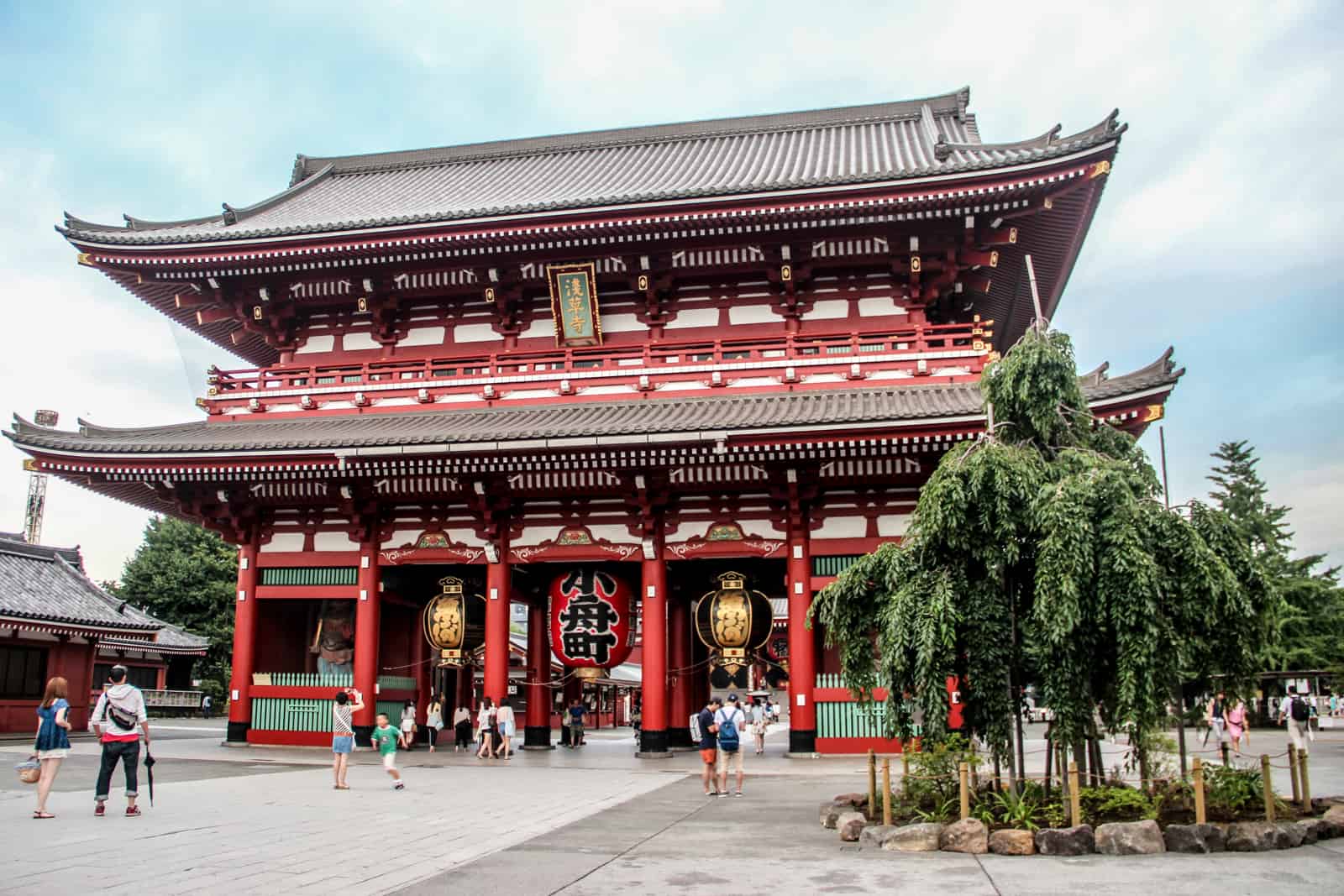
Sensoji Temple in Tokyo is free to enter. Sightseeing in Japan isn’t expensive.
Is Japan Expensive?
Yes, but the cost of travelling within Japan is relative. Before getting there, you must decide where you will go, whether to purchase the rail pass, and what kinds of accommodation you want to try out, from standard budget hostels to traditional Japanese experiences.
Everything else along the way falls into place, and if you look hard enough when it comes to food and other everyday costs, your overall Japan vacation cost might not be as overwhelming as you expect.
Japan may be more expensive than her Asian neighbours, but the incredible time you will have here will leave you saying the same thing long after you have left: “It was completely worth it”. I promise you that, and I’m already looking forward to returning, cost and all.
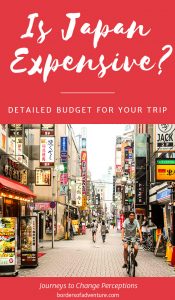
Any plagiarism of this Japan cost travel blog, or any of its calculations and descriptions used on other sites and blogs without attribution is not information authorised by myself for use.
About Becki
Becki Enright is a British Travel Press Award-winning writer whose work focuses on changing perceptions about misunderstood aspects of destinations. Her writing combines storytelling with insight into the social, historical, political and economic factors that shape the country or place in relation to tourism. Becki has appeared live on Sky News and CNN and has contributed to high profile media including National Geographic, Time.com, Guardian online, New York Times, Grazia and Buzzfeed.
29 August 2019 at 8:03 am
So quick question I guess for me would be, the rail pass does not cover local buses or trains in Tokyo? Or like smaller distances? I just want to make sure it’s worth getting since I am only making a trip from Kyoto to Tokyo and if it won’t cover other trains I don’t think it would be worth getting it. What do you think?
29 August 2019 at 1:01 pm
If you are only planning to take one train (the bullet train for that journey being no more than $20) then I don’t think buying a JR Rail Pass is worth it. It’s more intended for those taking multiple train journeys around the country.
Thanh Pham says
10 September 2016 at 2:26 pm
Could you please help me a bit? I am visiting Japan this October, from 14th–21st. I am quite confused how much I should spend beside the cost for transport & hostel.
I am visiting Hiroshima from 14–17th and Kansai area (from 17th–21st, bases in Osaka and from here go to Kyoto, Kobe..). Its 42.100 yen for transport & hostel already, how much do you think i should prepare more for the trip?
Thank you a lot for your help Thanh
12 September 2016 at 3:49 pm
Hi Thanh. I’ve done my best here to break down costs for everything in Japan. I can’t tell you how much you should bring. Some people like to splurge more on food, others like to go shopping, or day trips to neighbouring cities. It’s a case of working out roughly what you want to do, and having more to cover yourself or a bank card that can work in Japan.
Rita Saavedra says
2 June 2016 at 7:29 pm
Thank you for your helpful tips. I am planning a trip to Japan in May 2017 for a total of 10 days. Two days for flying and 8 on ground. However, I am being charged $3458 (does not include air fare). This price seems steep for me. Your tips have encouraged me to research and plan the trip on my own. I do want to ask who helped you plan your sight seeing adventures?
2 June 2016 at 11:29 pm
I planned it all myself. I got a one month rail pass and wrote a list of all the cities I wanted to visit. I also got help from a local who gave me tips on how long to stay in each place and an ideal route. The Japanese are very helpful when it comes to all that stuff 🙂
3 June 2016 at 7:26 am
I recently just got back, I stayed at friends homes so it was a little bit cheaper, however, I was pretty free using on my money and I only ended up using 1,500 dollars for 10 day airfare round trip, two week rail pass, 5 nights in hotels, and of course lots of sushi! I think I would try to find cheaper flights. I also recommend avoiding traveling from June to August. And mid November till February. The cheapest times are September and may. Also, stay 30 min outside of the big cities and there are much cheaper accpmodations.
Franklin Orosco says
16 May 2016 at 4:34 am
I lived in and around Tokyo for two years and recently returned for a holiday. As far as saving on food costs, I would strongly suggest going to one of the large department stores which feautre one or two floors of stalls which sell packaged foods that just need to be heated at home. The thing is is that just about 30 minutes before closing time, they are quite eager to sell off the dishes that they cannot sell the next day, so the price cuts are enormous I saw discounts of up to 70%, but the norm was more like 50% off for all kinds of great food. If you have a fridge to put it in, you can have it for lunch the next day. Also, during the lunch hour, I would go down to a convenience store like Lawson`s or Family Mart to get a bento for about 10,000 Y. Eating doesn`t have to cost a fortune, but it is definitely higher than Thailand.
17 May 2016 at 2:37 pm
Thanks for the great food tips!
Leave a Reply Cancel reply
Your email address will not be published. Required fields are marked *
- Article Archives
- Work with me
- Privacy Policy


How to Turn High-Cost Japan into a Cheap Place to Visit
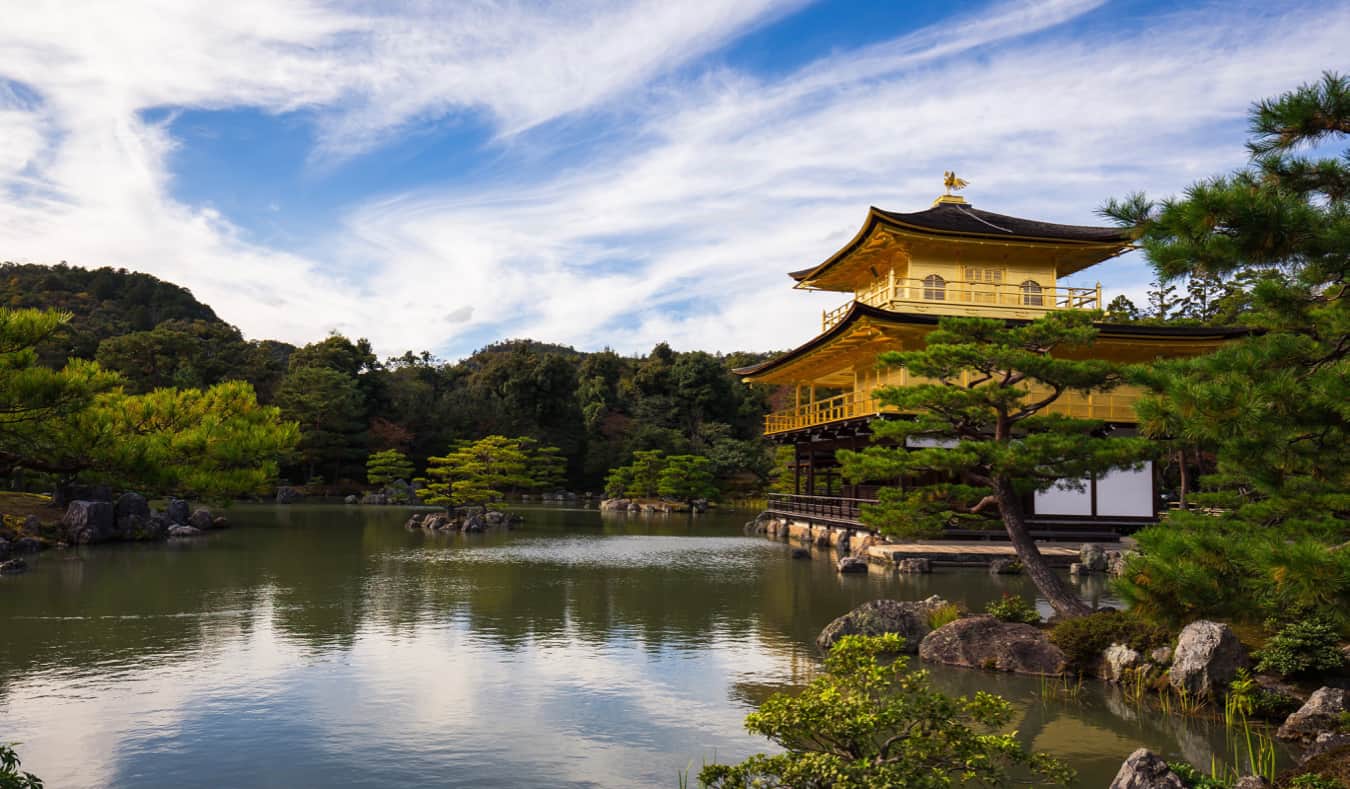
For years, I put off traveling to Japan because I was afraid of how expensive it would be. The rumors I’d heard about the country’s high prices made me hesitant to go. I’ve always loved Japanese culture, and I knew any visit would involve gorging on sushi and ramen, visits to lots of temples, and heavy train travel through the countryside.
But the thought of how much it would cost always made me think, “I’ll wait until I have more money.”
When I finally visited Japan years ago, I was shocked to discover that, while it isn’t exactly cheap, Japan isn’t the prohibitively expensive country many people think it is. In fact, I actually found Japan to be affordable and on par with (and sometimes cheaper than) countries in Western Europe .
In subsequent visits, I’ve learned to further master the country and turn high-cost Japan into an affordable place to visit.
Traveling in Japan doesn’t need to cost a lot of money. To help you plan your trip and avoid breaking the bank, here’s a detailed breakdown of how you can cut your expenses to visit Japan on a budget!
Table of Contents
How to Save on Transportation in Japan
How to save on food in japan, how to save on accommodation in japan, how to save on attractions in japan, how much money do you need to visit japan.
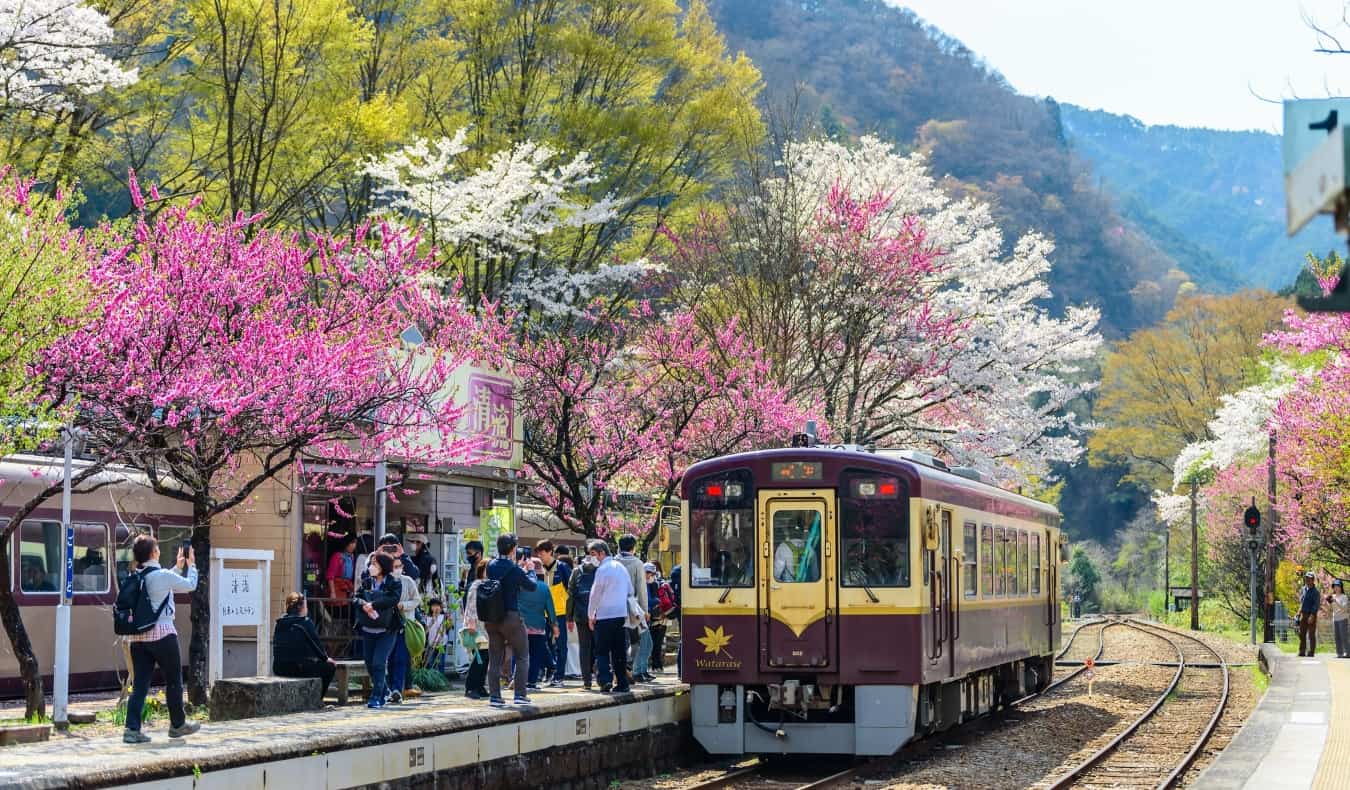
The pass has several options (each valid for consecutive days, not just travel days):
- 7 days: 50,000 JPY (70,000 JPY for a Green Pass)
- 14 days: 80,000 JPY (110,000 JPY for a Green Pass)
- 21 days: 100,000 JPY (140,000 JPY for a Green Pass)
All pass times are for consecutive travel (the Green Pass is the first-class option, though this isn’t really necessary as even standard cars are quite luxurious).
Compare that to single tickets, where the three-hour journey from Tokyo to Osaka costs around 36,000 JPY (round-trip), yet you can get a 7-day rail pass that includes unlimited travel on JR trains for 50,000 JPY. That single round-trip trip is almost the same price as the entire 7-day pass!
Moreover, these JR trains also serve local city areas and so can be used intra-city. I used my pass to get around Kyoto and Tokyo instead of buying metro tickets. So, even if you aren’t going to do much traveling around Japan, buying a pass is better than buying individual tickets. While the high price of the pass can cause sticker shock, the alternative is even worse.
While you used to be able to purchase passes in Japan, you can no longer do so. You must buy your JR pass online in advance so it can be mailed to you. Read more about how it works in my complete guide to the Japan Rail Pass .
Metro Most of the city metro tickets cost 150–300 JPY for a single journey. The price varies by distance and may often be higher. You can buy a day pass in most cities which gives you unlimited travel for 24 hours for 800-1,100 JPY.
Buses Buses are a less expensive alternative to the bullet train system in Japan, but they take more time. For example, the three-hour train ride from Tokyo to Osaka becomes a nine-hour bus ride. The price for that seat is just 4,500-8,000 JPY, but at some point, you need to think about how much your time is worth.
For me, the savings weren’t worth the extra hours of travel, since I had such limited time during my visit. If I’d had more time, I’d have taken the bus more often.
There are also bus passes available that offer unlimited travel and begin at 10,200 JPY for three non-consecutive days of travel.
Flights There are many budget carriers now serving Japan — you can find them on sites like Skyscanner . Peach and Jetstar are two of the main budget airlines available.
In general, their prices are on par with bullet train tickets. If you book well in advance, they may even be cheaper than the train. However, more often than not, they’ll be a bit more expensive and not really any faster if you’re going a short distance.
ANA also offers special last-minute fares via a hidden page on their website . It’s only available to foreigners and can sometimes be cheaper than the flights you find on Skyscanner, especially for longer routes around the country.
Just keep in mind that, by the time you get to and from the airport (and go through security), you might not be saving much time.
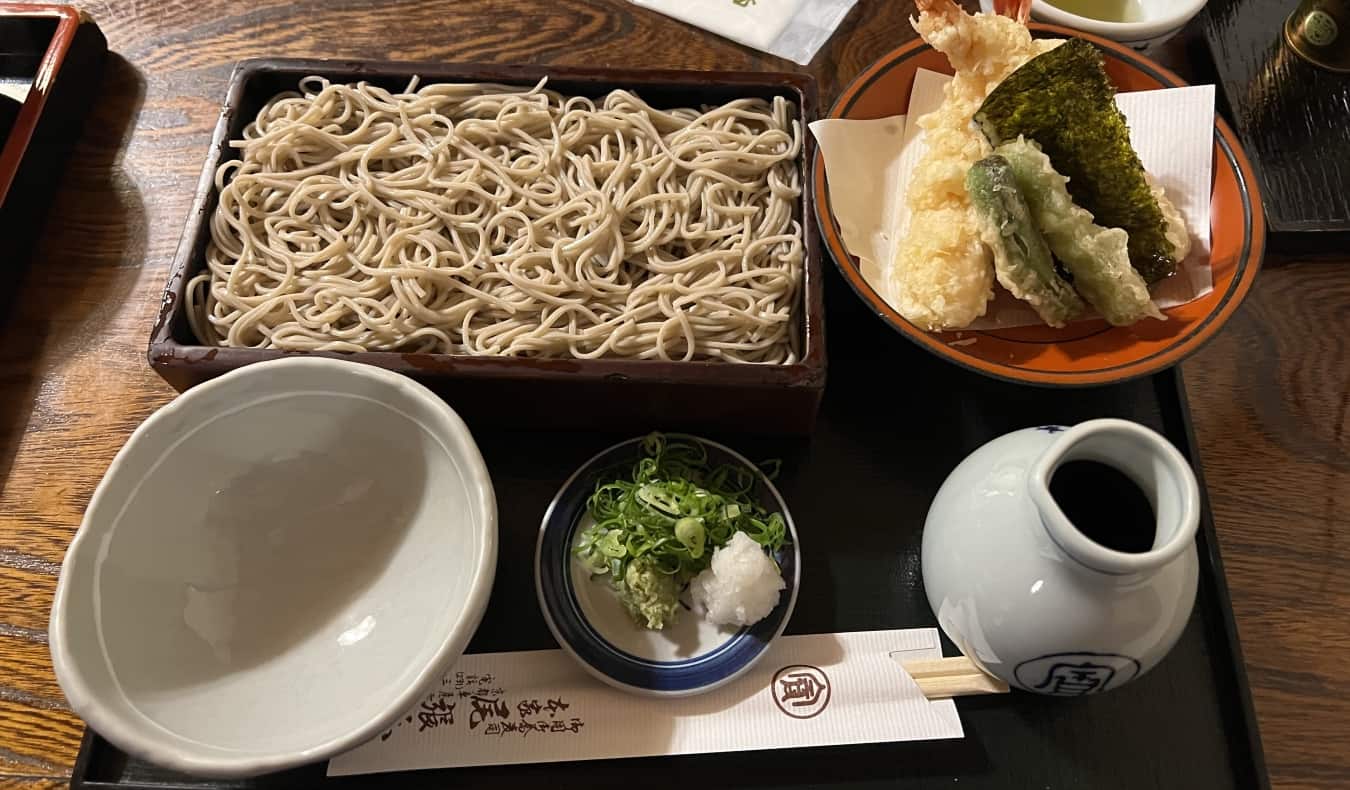
As long as I didn’t feed my sushi addiction, I found I could eat for less than 2,000 JPY per day. Some typical prices were:
- Sushi lunch sets (sushi, soup, salad): 1,600+ JPY
- Traditional Japanese set lunches: 1,500+ JPY
- Sushi trains: 125–625 JPY per piece
- Western dishes (sandwiches, burgers, pizza, etc): 1,200-1,500 JPY
- Fast food: 800 JPY
- Ramen: 1,200 JPY
- Tempura dishes: 480-1,100 JPY
There’s an array of cheap food options in the country so you don’t really need to spend much money on food (unless you want to splash out). You can save money on food in Japan by doing the following:
- Eat at “100-yen” shops – There are many 100-yen shops (the Japanese equivalent to dollar stores) in Japan, where groceries, water, toiletries, household items, and more are simply 100 JPY. I did all my shopping at these stores. Their names vary by region, so ask your hotel/hostel reception where the nearest 100-yen shop is located.
- Use sushi trains – Sushi in Japan is delicious at all levels. While I had a few fancy meals, you can’t beat the sushi trains for value. At 125-625 JPY per plate, I could stuff my face for less than 1,500 JPY most of the time. I usually just ate at sushi trains.
- Eat at 7-11 – 7-11, Family Mart, and other convenience stores have a lot of pre-set meals for under 500 JPY that make for cheap lunches. Additionally, supermarkets have many set meals at similar prices. I noticed this was a popular option for many Japanese people.
- Cook your food – Hostels (as well as many Airbnbs) have kitchens, where you can cook and cut your food expenses.
- Buy food before grocery stores close – After 8pm, many supermarkets discount their fresh food, as they have to get rid of it. You can save up to 50% on almost all ready-made meals. It’s a great cheap dinner.
- Avoid fresh fruit – The one rumor about Japan that turned out to be true was that fresh fruit and vegetables were expensive. Outside of shopping for an apple or banana at the market, I generally avoided fresh fruits and vegetables. They were too expensive.
- Eat curry, ramen, and donburi – I essentially lived off these three foods during my three weeks in Japan (on my first trip). Curry bowls and donburi (bowls of meat and rice) are the best ways to eat cheap and filling meals in Japan.
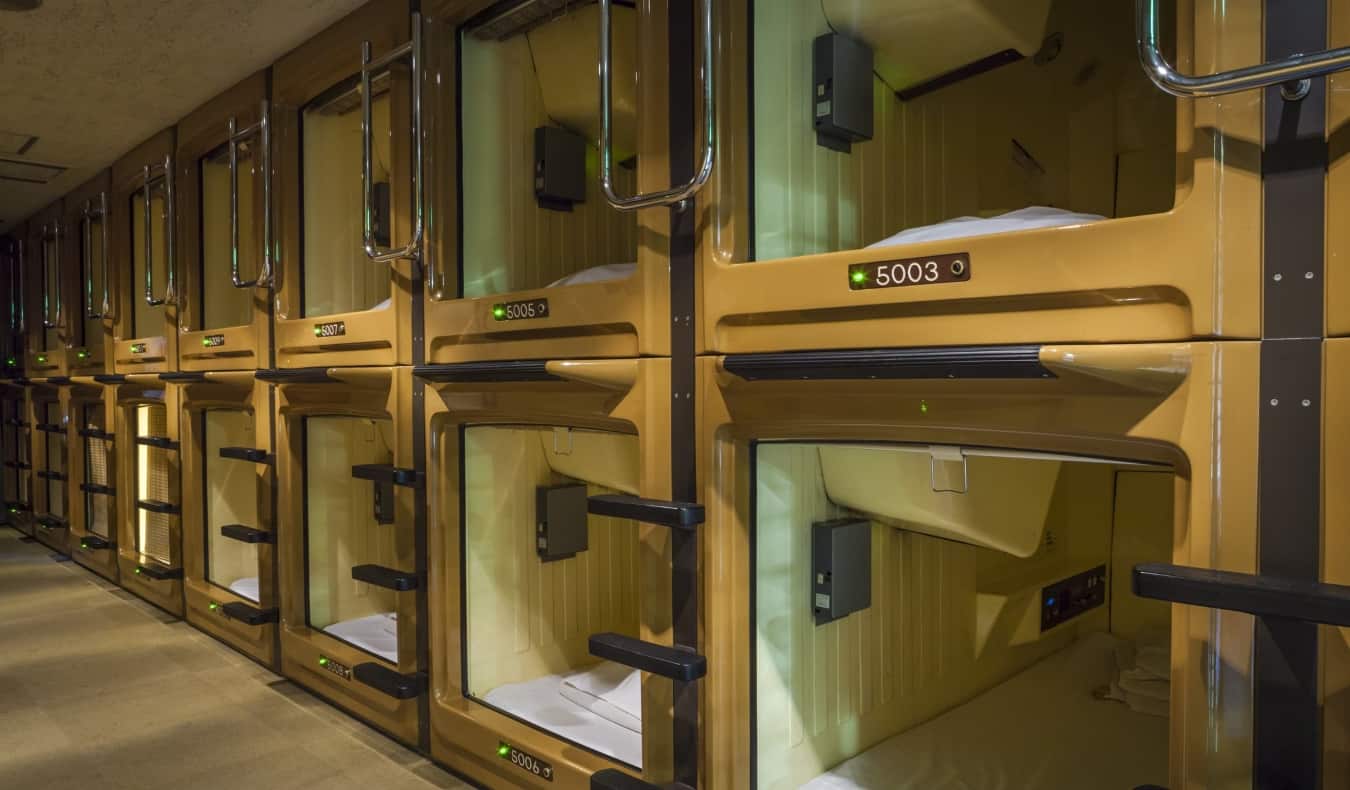
Hostel dorms typically cost 2,500-4,500 JPY per night and hotel rooms start at 6,000-10,000 JPY for a double room at a budget hotel. Capsule hotels cost between 3,000-5,500 JPY for a tiny pod that’s essentially just a bed. It’s not fancy, but it’s a unique (and very Japanese) experience.
Here are some ways to save on accommodation:
- Work for your room – Many hostels in Japan often let you stay for free if you clean for a few hours a day. Use a site like Worldpackers to find opportunities before you arrive.
- Stay with a local – Hospitality exchanges are not as widespread in Japan as elsewhere in the world, but there is a small, active Couchsurfing community here. A lot of expats enjoy hosting because it lets them get back in touch with other westerners so don’t hesitate to reach out to them as well. Just make sure you send a request ahead of time to increase your odds of success (especially in popular cities like Kyoto and Tokyo).
- Use credit card points – It’s times like these that points and miles come in handy. With the large sign-up bonuses that many hotel cards offer, you can get up to a week’s free accommodation! Here’s a list of my favorite travel credit cards!
- Capsule hotels – A step up from hostels and a step down from hotels, capsule hotels (pictured above) are tiny capsules you sleep in. You share bathrooms and common areas, and your capsule has a light, outlet, and sometimes a small television. They are frequently used by businessmen who work late. These capsules are usually around 3,000-5,500 JPY per night.
- Airbnb – Airbnb is a budget-friendly option if you’re traveling with a larger group. Airbnb in Japan is heavily regulated, meaning that prices are high (as there are less Airbnbs), and there are a few caveats for your stay. First, only hosts who have registered with the government can list accommodation. Second, you’ll need to send a copy of your passport to your host before arriving or let them copy your passport when you check in. That said, it’s an affordable choice for anyone traveling as a group/family. If you’re traveling on your own, a hostel dorm, capsule hotel, or even a budget hotel room are all cheaper.
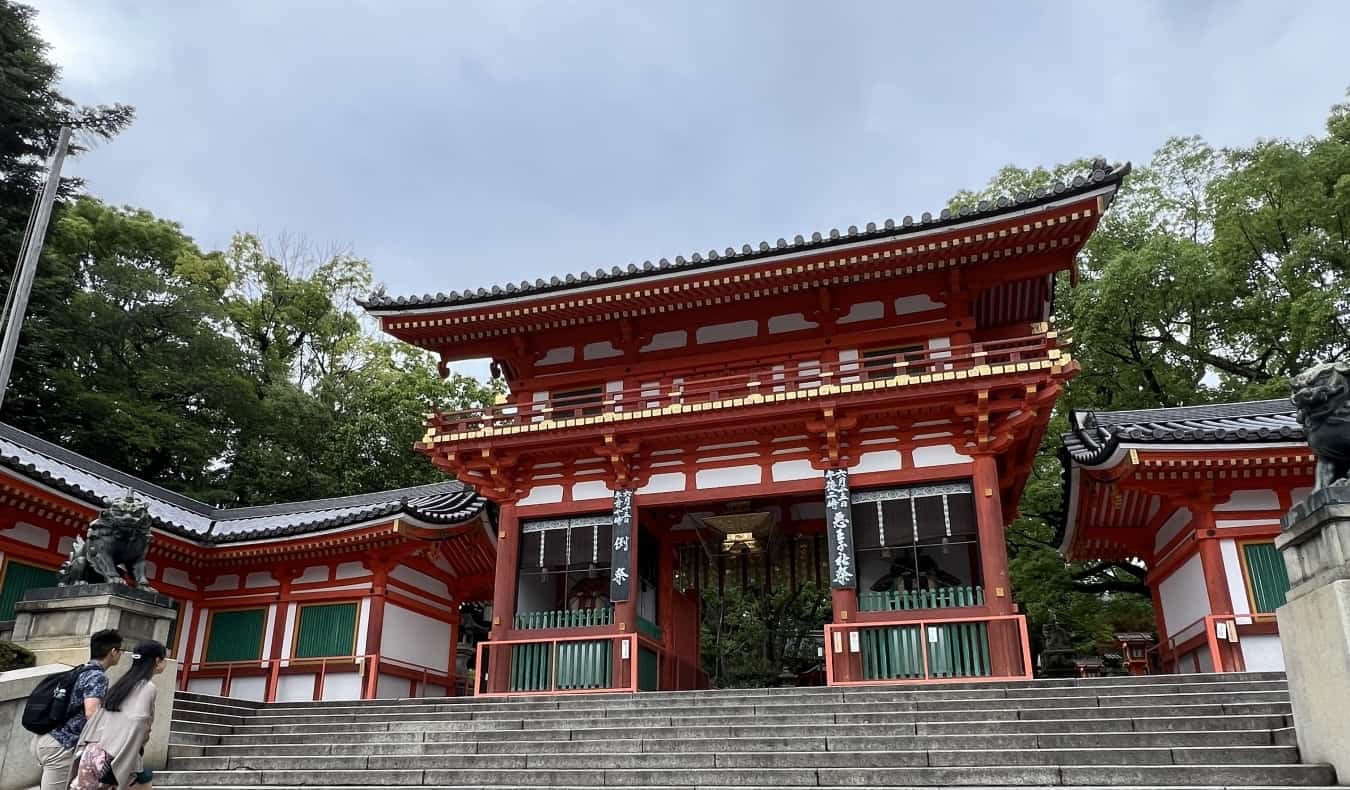
Overall, I found these passes to be the best way to save money on temples, museums, and other attractions. Additionally, there are many free gardens, temples, and parks! I hardly spent any money on attractions while I was in Japan.
If you do want to visit paid attractions or do tours (like walking tours), Get Your Guide is the best place to book tickets and tours.

Traveling around Japan can be affordable if you know what to do and keep an eye on your costs. You can save money in Japan by living like a local.
If you’re staying in a hostel, buying a rail pass , eating relatively cheap food, and visiting a few attractions, budget around 10,000-16,000 JPY per day.
However, by utilizing the tips above, I think you can travel Japan for 7,000-10,000 JPY per day. Japan shouldn’t cost you more than that per day if you don’t splurge. This would mean more bus travel, a (very) limited amount of sushi, cooking most meals, free attractions, and the occasional night Couchsurfing (or other free accommodation).
I saw lots of travelers in Japan traveling on the cheap. They did it, and it’s possible — but you’ll never feed your sushi addiction if you travel this way.
To me, budget travel is value travel. Japan is never going to be as cheap as traveling through Southeast Asia , but Japan has plenty of ways to visit on a budget. Japan will never cost $20 USD per day, but it also doesn’t need to cost hundreds either.
Whenever people go to Japan and come back, they always say, “It wasn’t as expensive as I thought.” I hope this article taught you that! Stick to the discount transit, local food, and local accommodation, and you’ll keep your costs low.
Book Your Trip to Japan: Logistical Tips and Tricks
Book Your Flight Use Skyscanner to find a cheap flight. They are my favorite search engine because they search websites and airlines around the globe so you always know no stone is left unturned!
Book Your Accommodation You can book your hostel with Hostelworld as they have the biggest inventory and best deals. If you want to stay somewhere other than a hostel, use Booking.com as they consistently return the cheapest rates for guesthouses and cheap hotels.
Don’t Forget Travel Insurance Travel insurance will protect you against illness, injury, theft, and cancellations. It’s comprehensive protection in case anything goes wrong. I never go on a trip without it as I’ve had to use it many times in the past. My favorite companies that offer the best service and value are:
- Safety Wing (best for everyone)
- Insure My Trip (for those over 70)
- Medjet (for additional evacuation coverage)
Looking for the Best Companies to Save Money With? Check out my resource page for the best companies to use when you travel. I list all the ones I use to save money when I’m on the road. They will save you money when you travel too.
Be sure to check out the Japan Rail Pass if you’ll be traveling around the country. It comes in 7-, 14-, and 21-day passes and can save you a ton of money!
Want More Information on Japan? Be sure to visit our robust destination guide on Japan for even more planning tips!
Hi, I’m Nomadic Matt, the New York Times best-selling author of How to Travel the World on $50 a Day and Ten Years a Nomad, as well as the founder of this website! And I’m here to help you save money on your next trip.
Got a comment on this article? Join the conversation on Facebook , Instagram , or Twitter and share your thoughts!
Disclosure: Please note that some of the links above may be affiliate links, and at no additional cost to you, I earn a commission if you make a purchase. I recommend only products and companies I use and the income goes to keeping the site community supported and ad free.
Related Posts

GET YOUR FREE TRAVEL STARTER KIT
Enter your email and get planning cheatsheets including a step by step checklist, packing list, tips cheat sheet, and more so you can plan like a pro!

Travel Budget
This page is meant to give you a rough idea of the cost of individual travel in Japan by introducing some sample budgets. Note that accommodation rates can increase during peak seasons in popular destinations which is not reflected by the numbers below. View also our pages about budget travel , package tours and suggested itineraries to see the sample budgets applied to specific itineraries.
Sample daily budgets
The numbers below do not include the cost for transportation and heightened accommodation rates during peak seasons. Click here for the current yen exchange rates.
Accommodation
Below are typical rates for accommodation outside the peak seasons . Rates can increase considerably during the peak seasons! Check our accommodation page for more information on different accommodation types and corresponding price ranges.
Low budget: 3,000 - 5,000 yen per night and person Dormitories and hostels , found in most cities of Japan, typically charge below 5000 yen per night and person. Furthermore, booking services like Hostelworld offer great deals.
Medium budget: 6,000 - 12,000 yen per single room and night 8,000 - 15,000 yen per double room and night At this level, you will find rooms in business hotels , minshuku and inexpensive, no-frills ryokan . Some tour packages (for individual travelers) include accommodation at quality Western-style hotels at this price level.
High budget: over 12,000 yen per single room and night over 15,000 yen per double room and night Starting around 12,000 yen per person, you can get rooms in better business hotels and inexpensive Western-style hotels. A stay at a ryokan with two meals included typically costs between 15,000 and 30,000 yen per person and night. For a room in a 4 or 5 star Western-style hotel, you typically pay from 25,000 to 50,000 yen per room and night.
Low budget: 500 yen per day At this level, you will have to live from convenience store food (bread, rice balls, etc.) and fast food restaurants like McDonald's or Mister Donut which offer inexpensive breakfasts.
Medium budget: 500 - 1000 yen per day Many coffee shops and some restaurants in shopping areas and around train stations offer breakfast sets for around 500 to 1000 yen.
High budget: above 1000 yen per day Hotel breakfasts and breakfast buffets will usually cost you more than 1000 yen. Breakfast buffets in first-class hotels typically cost at least 3000 yen.
Low budget: 500 - 800 yen per day Inexpensive lunch boxes are available in convenience stores and stands in railway stations and business districts. Various fast food restaurants , specializing in noodles, curry, domburi or hamburger, also offer relatively filling meals for 800 yen or less.
Medium budget: 800 - 1500 yen per day At this level you will have an even larger range of inexpensive restaurants such as the above mentioned fast food places, plus restaurants which offer lunch set specials for around 1000 yen.
High budget: above 1500 yen per day A lunch at better restaurants costs typically between 1500 and 3000 yen.
Low budget: 500 - 1000 yen per day Convenience stores sell various, inexpensive ready-to-eat meals. Other options are again cheap fast food restaurants .
Medium budget: 1000 - 2500 yen per day Conventional restaurants are generally more expensive in the evening than during lunch time, as there are no lunch specials. At this level, you will be able to enjoy a nice dinner at a wide range of fast food and conventional restaurants, including the restaurants found in department stores where meals typically cost between 1000 and 2500 yen, not including alcoholic drinks.
High budget: above 2500 yen per day With 3000 yen per person you will be able to have a good dinner at a wide range of restaurants . Calculate 5000 yen upwards per person for a dinner at upper class restaurants specializing in sushi , French cuisine, sukiyaki, kaiseki ryori, steaks, etc.
Sightseeing
Low budget: 0 - 500 yen per day Japan offers many free attractions. Most shrines and some temples do not charge admission fees. A few museums charge no admission on one day of the week or month.
Medium budget: 500 - 2000 yen per day Admission to famous temples costs between 300 and 1000 yen. Most museums and castles charge about 500-1500 yen per person.
High budget: above 2000 yen per day Some museums and attractions (usually outstanding ones or tourist traps) charge between 1,500 and 3,000 yen per person. Admission to large theme parks typically cost around 5,000-10,000 yen per day.
Transportation
Low budget: Highway buses , the Japan Bus Pass and the Seishun 18 Kippu (only available during certain times of the year) are among the cheapest ways of traveling in Japan.
All budgets: Travelers of all budgets should consider purchasing a rail pass . Over long distances, domestic flights are often more economical, if you take advantage of the various discount offers .
Questions? Ask in our forum .


Costs & Budgets
T he cost of travel in Japan may not be as expensive as you think. Travelers are often surprised by how reasonable the prices are for sightseeing, food, and shopping .
Of course, you can find expensive items, such as a prized honeydew melon or a box of beautiful strawberries for 10,000 yen! But these prices are exceptional and do not reflect the average costs.
Average Cost of Travel in Japan
Kabuki-cho – Shinjuku, Japan
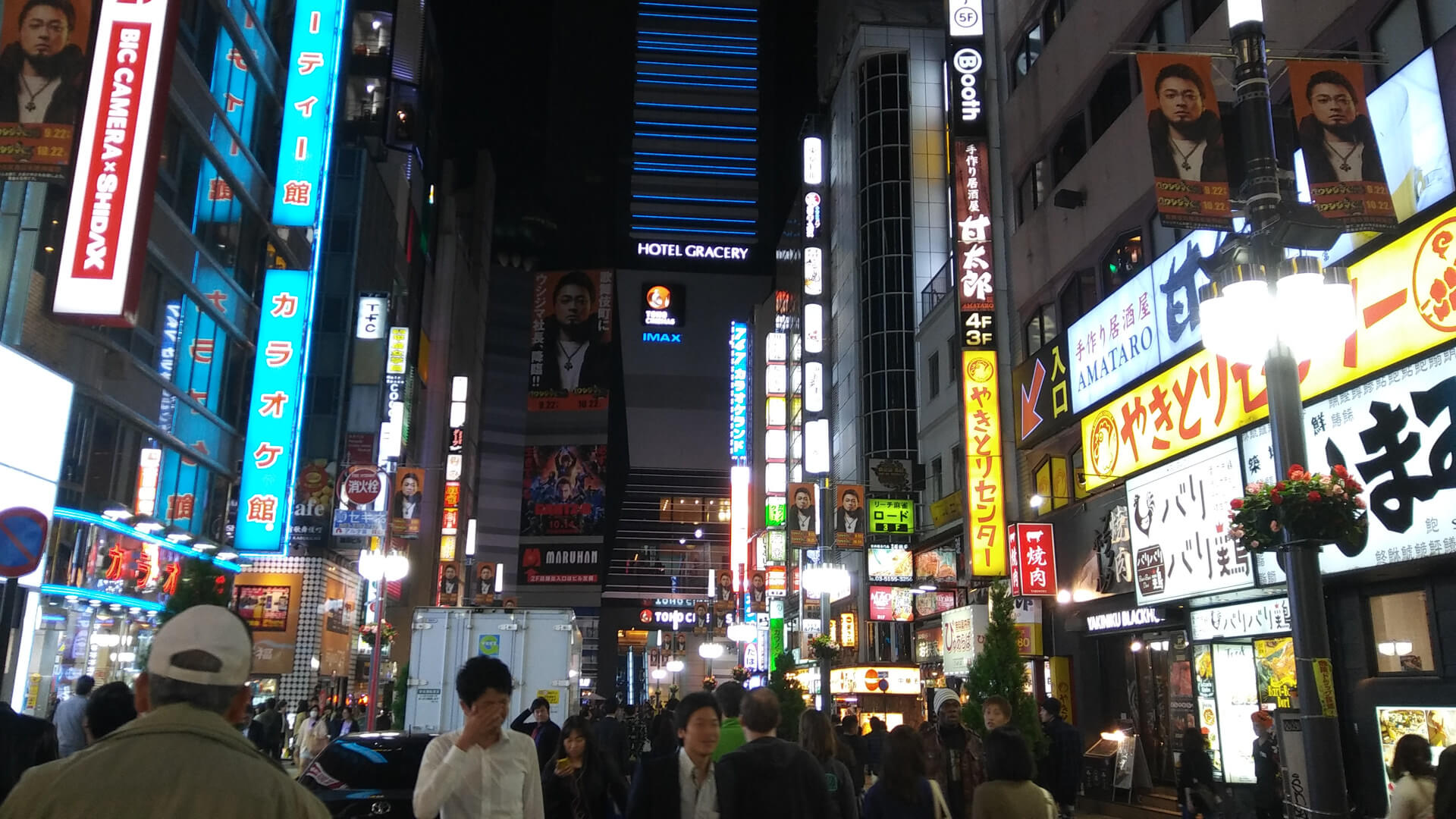
Breakdown of Costs
It is best to budget around $3,500 USD for a one-week trip to Japan for two people, not including airfare. It is possible to spend a little less or a lot more, depending on your preferences.
Yakitori Restaurant – Hamamatsu, Japan

There are so many options for good food at reasonable prices in Japan. For two people, plan on a daily budget of around 2,000 yen for breakfast, 2,000 yen for lunch, and 6,000 yen for dinner.
McDonald’s – Harajuku, Japan
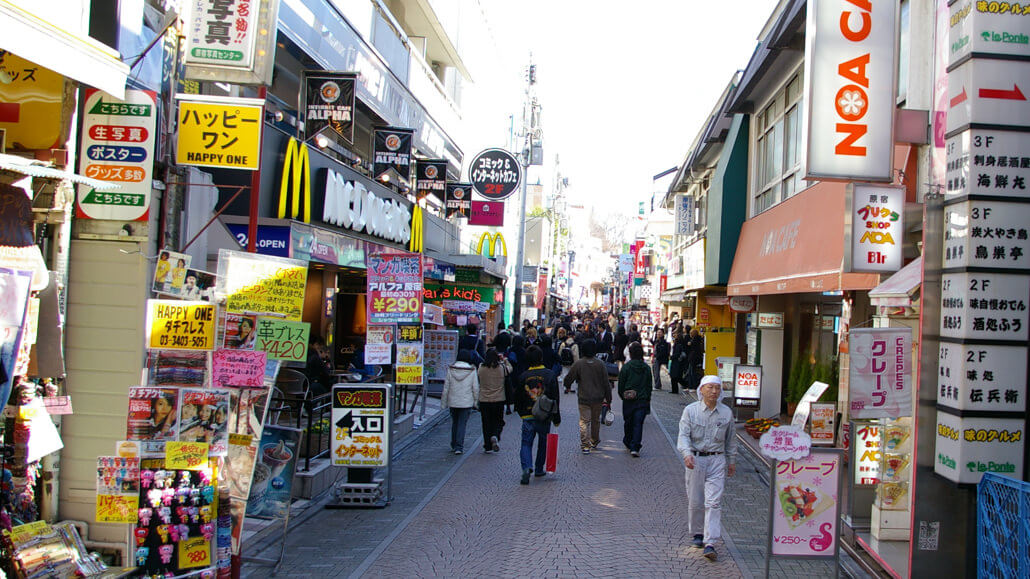
Breakfast or morning sets are available at most cafes for around 500-700 yen. A morning set usually includes toast, an egg or fruit, salad, and coffee or tea. There is also a McDonald’s on every corner if you want something familiar. Breakfast sets at McDonald’s include a hash brown and coffee for around 500 yen.
Japanese Udon Noodles
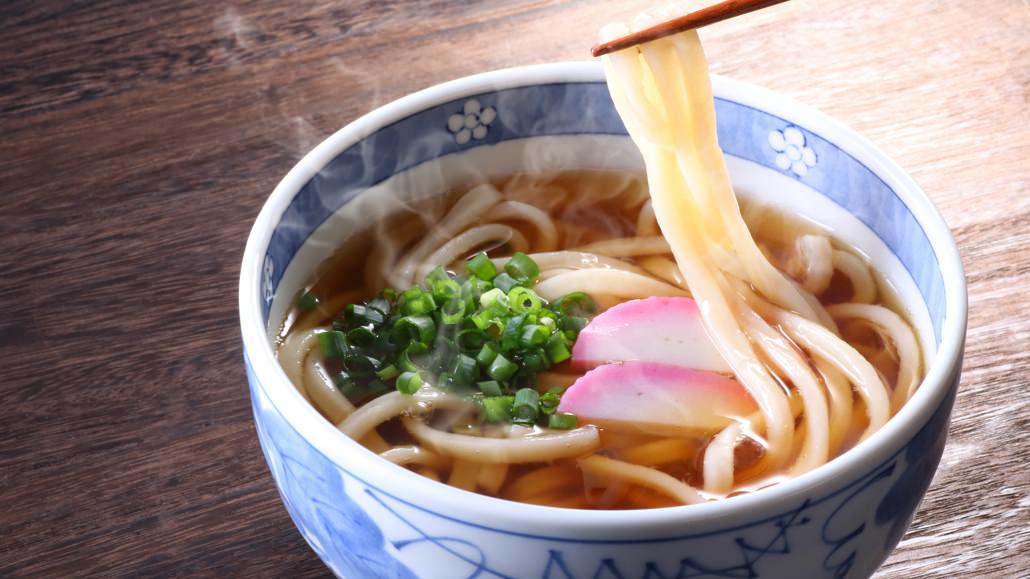
For lunch, you can choose from udon, soba, ramen, curry, sushi, onigiri, fast food such as Mos Burger, or a bento box for less than 1,000 yen per person. A teishoku set lunch from a Japanese restaurant ranges from 1,200-1,500 yen per person.
Dinner at a Japanese restaurant, such as an Izakaya (Japanese bar and grill) or Okonomiyaki restaurant, is usually around 6,000 yen for two people (including drinks). You can find great restaurants near train stations and inside department stores.
Toyoko Inn Business Hotel – Japan
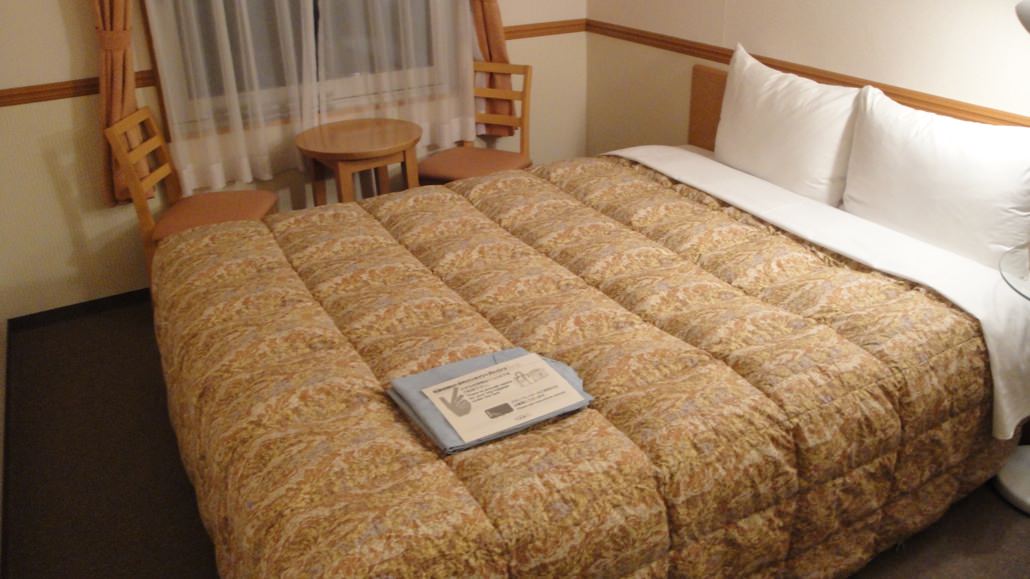
Photo by Tzuhsun Hsu / CC BY-SA
Accommodation
When traveling with two people, the cheapest accommodation is a business hotel. Business hotels are conveniently located near popular train stations, have modern amenities, and are clean. Expect to spend around $100 per night for two people at a business hotel.
Capsule Hotel – Osaka, Japan
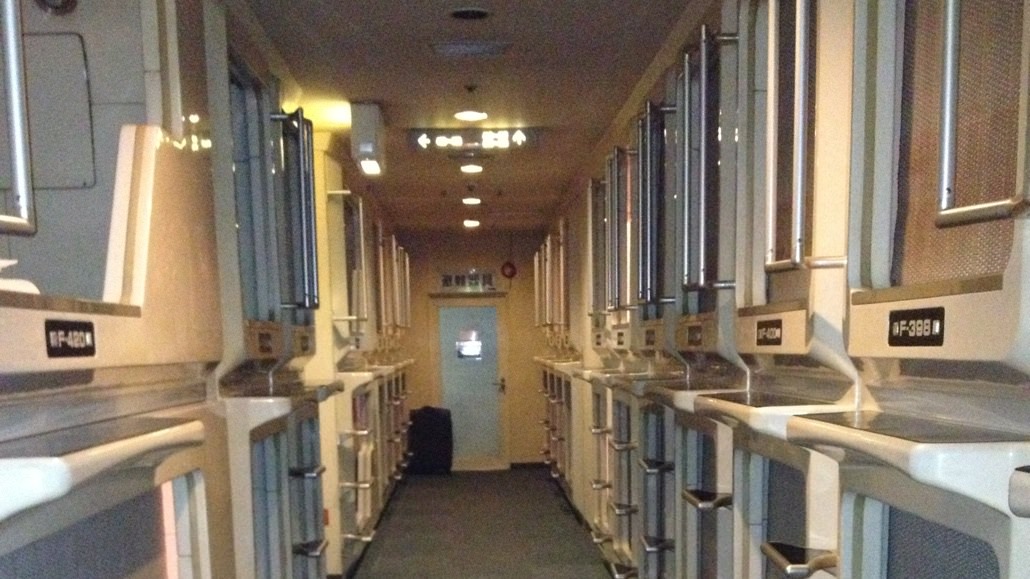
Single travelers looking to lower their budget may want to try hostels or capsule hotels, which run about 3,500 yen per night.
Hilton Executive Lounge – Nagoya, Japan

Luxury hotels, such as the Hilton or Marriott, and Ryokan (Japanese inns) typically charge per person and not per room. A stay at these types of hotels will increase the cost of travel in Japan. One night can range from 20,000-50,000 yen per person per night.
Recommended Hotels
See our recommendations for hotels in Tokyo and hotels in Kyoto .
Shinkansen Passing Mt. Fuji

Transportation
The best deal for travelers doing a lot of travel in Japan is the Rail Pass . The 7-Day Pass is around $400 per person and offers unlimited access on JR trains and Shinkansen .
Subway – Tokyo, Japan
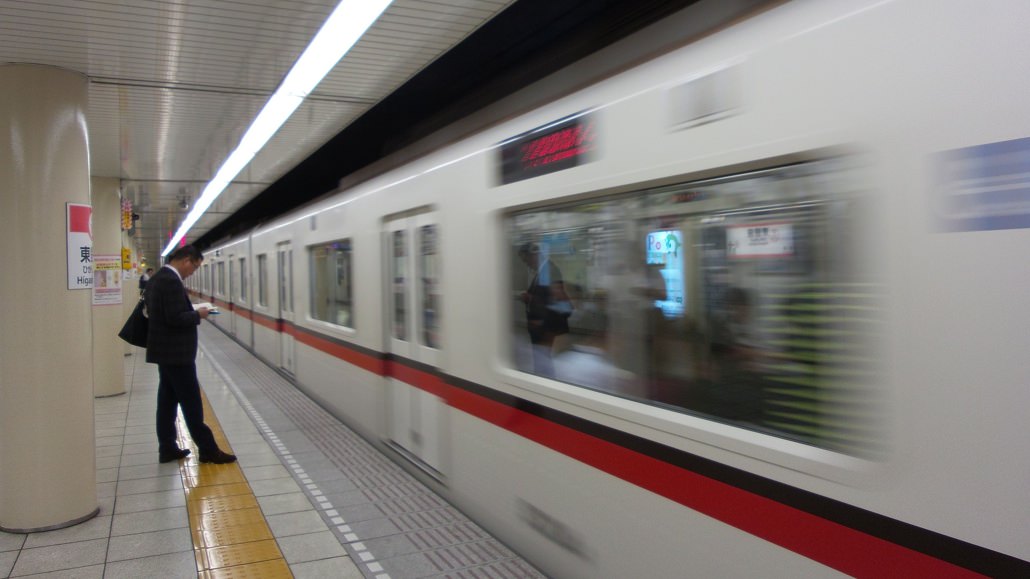
If you’re going to do a lot of travel by subway in local areas, it is best to purchase a day pass or IC card . Day Passes offer unlimited rides and are usually less than 1,000 yen.
Taxi – Shinjuku, Japan

Taxis can get expensive, so it is best to stick to the trains and subways when possible. A short ride in a taxi typically costs around 1,000 yen.
Kiyomizu Temple – Kyoto, Japan
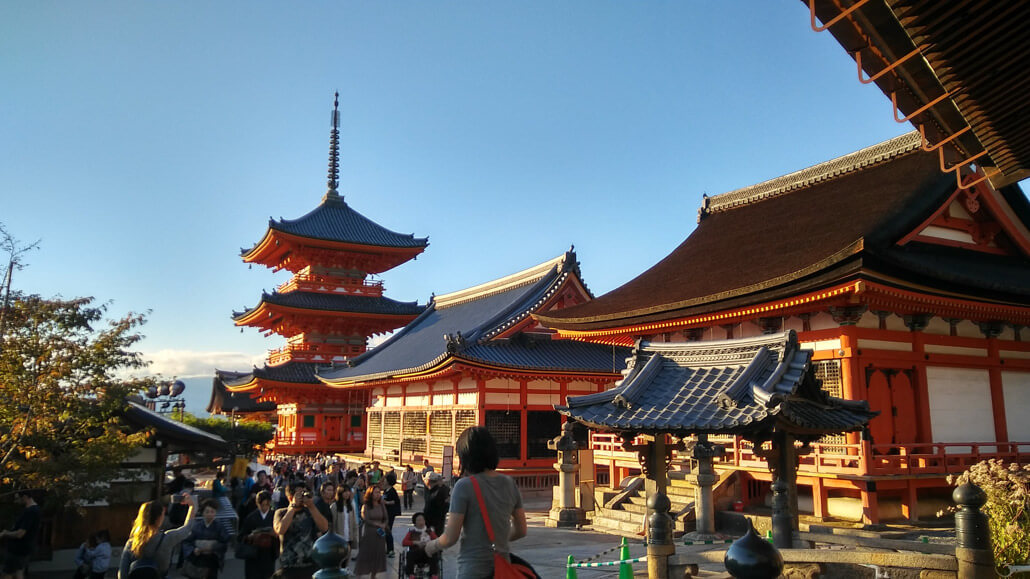
Sightseeing
Sightseeing is not so expensive. You can enter many temples and shrines for free. Generally, admission to notable temples, shrines, and castles is around 500 yen. Museums can cost around 1,000-2,000 yen.
Karaoke at Big Echo – Japan
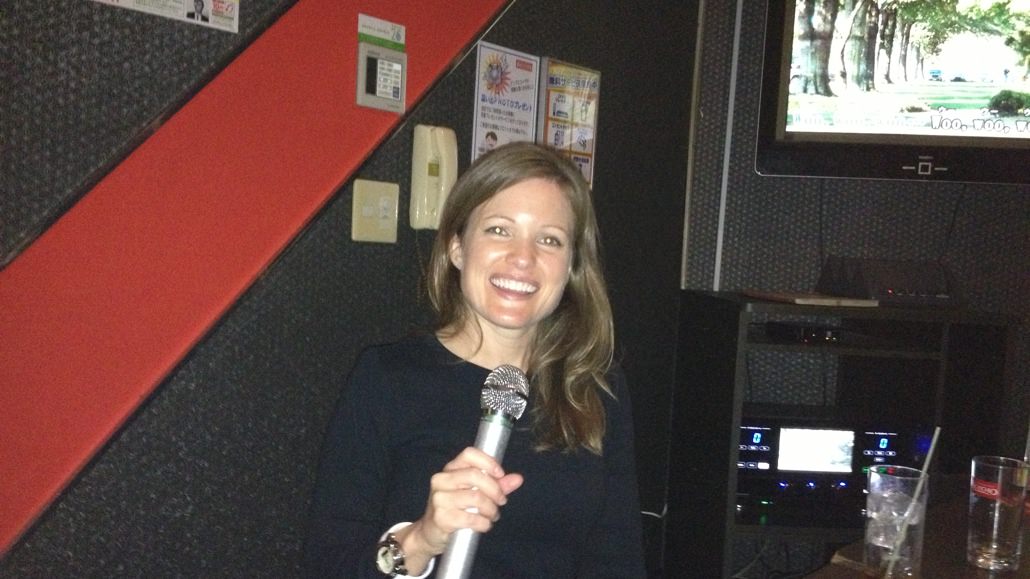
Entertainment
It’s good to budget a little extra for a couple of fun nights of karaoke , movies, or clubs. The price of karaoke depends on the venue, but is generally 2,000-3,000 yen for one hour for two people. A new movie at the cinema is 2,000 yen per person. And clubs can vary from 2,000-3,000 yen for admission.
Souvenir Shops – Asakusa, Tokyo
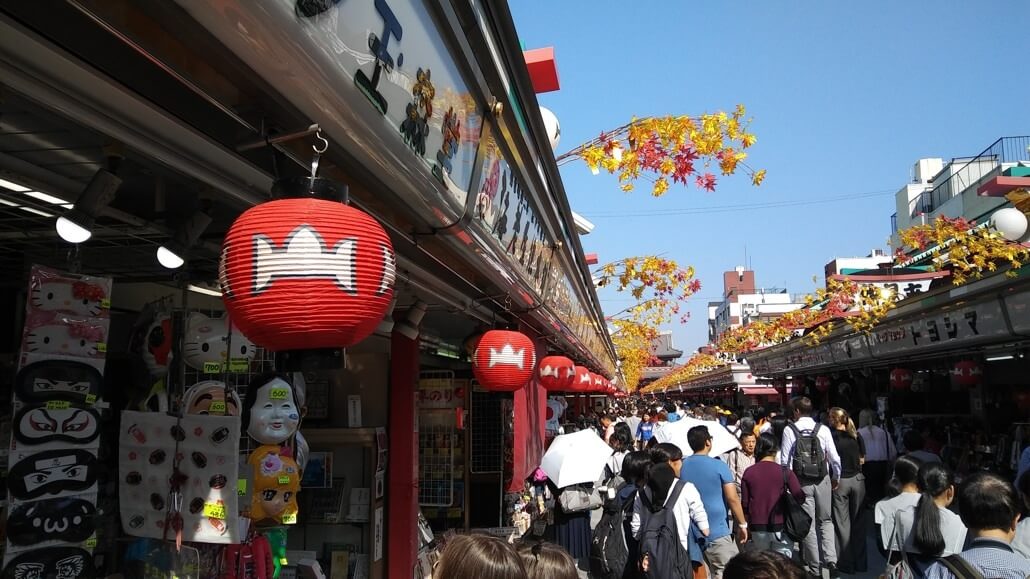
Whether it’s electronics, clothing, or souvenirs, you’re going to want to budget money for shopping. 100 yen shops are a great place to find Japanese goods, such as chopsticks and sake sets. For more expensive items, tourists can enjoy tax-free shopping at major department and electronics stores (consumption tax is 10%).
Izakaya Restaurant – Hamamatsu, Japan
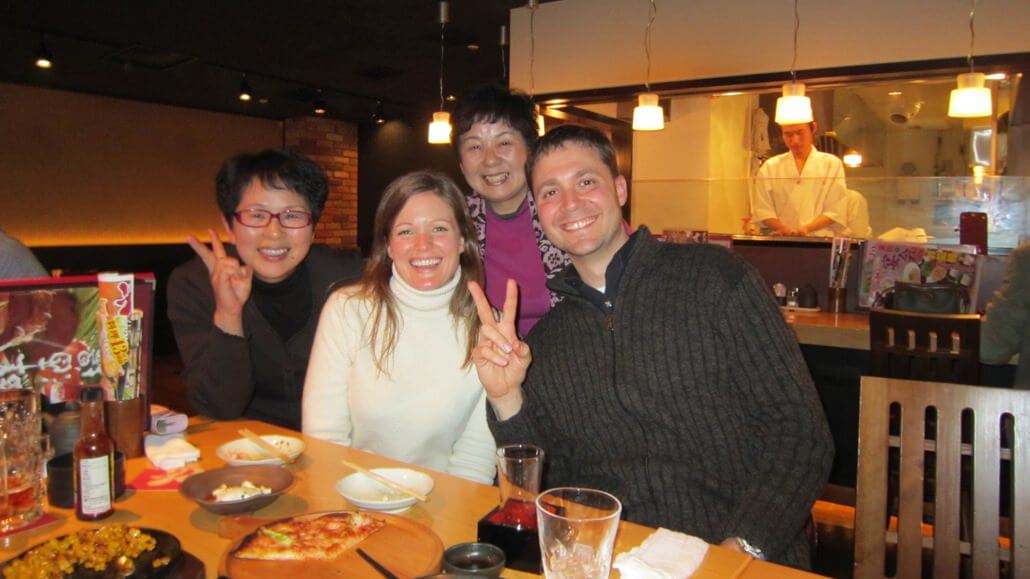
There is no tipping in Japan. This includes the server at a five-star restaurant, taxi driver, delivery man, or bartender. If you leave money, they will usually just give it back to you. At some high-end establishments, a service charge is added to your bill, so no tip is expected.
Update: We’ve recently started using the WISE card for transferring funds into foreign currency. It’s a convenient and safe way to exchange, withdraw, and spend money while traveling.
You can use your WISE card anywhere MasterCard is accepted, and you can withdraw money from ATMs with minimal fees. You can read more about it in our Wise Card article .
Read More →
Ready for the Trip of a Lifetime?
Experience Japanese culture, travel like a local and get to know the real Japan on one of our Small Group Tours .
More Travel Tips You Might Like
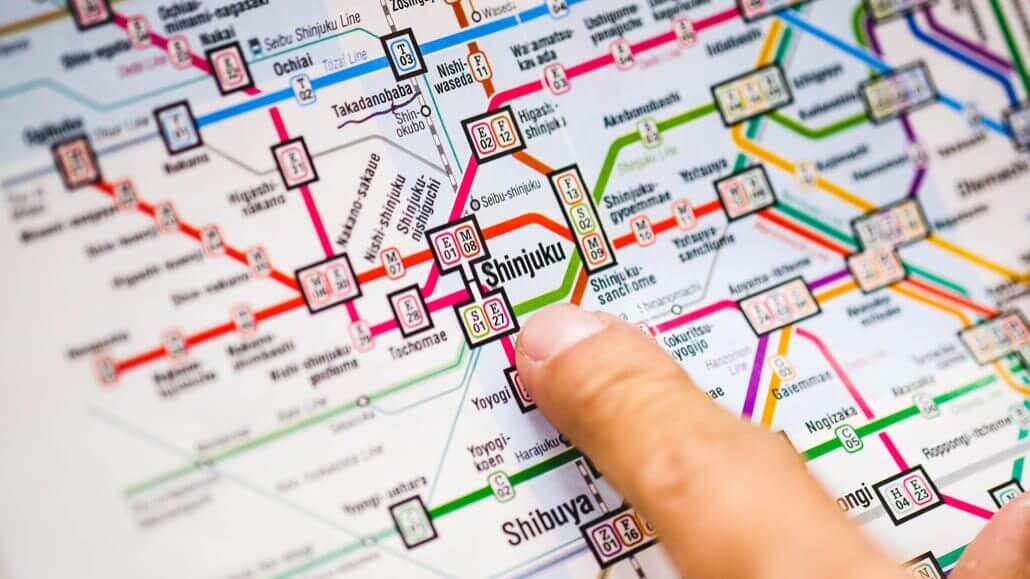
Useful Apps
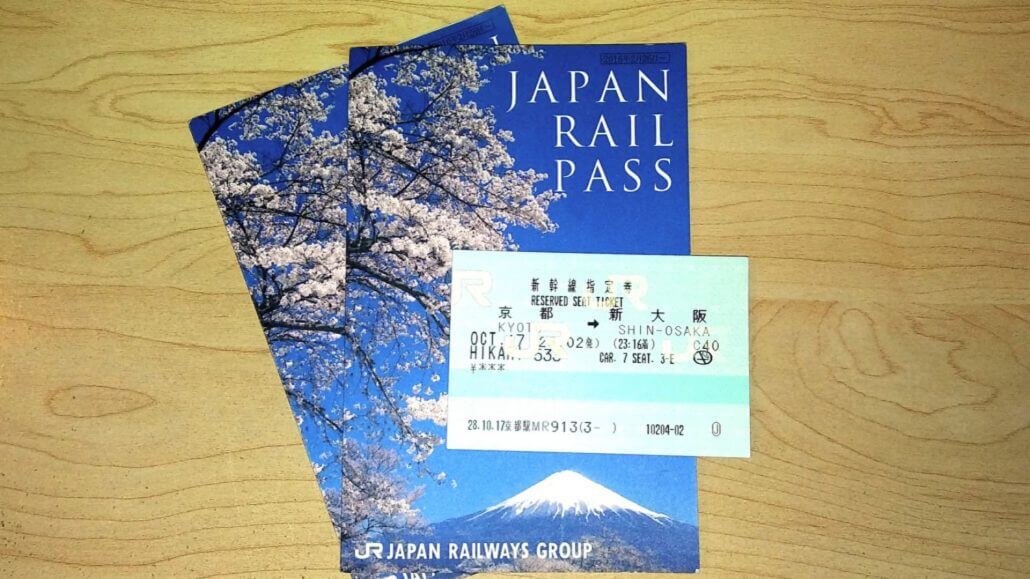
Japan Rail Pass
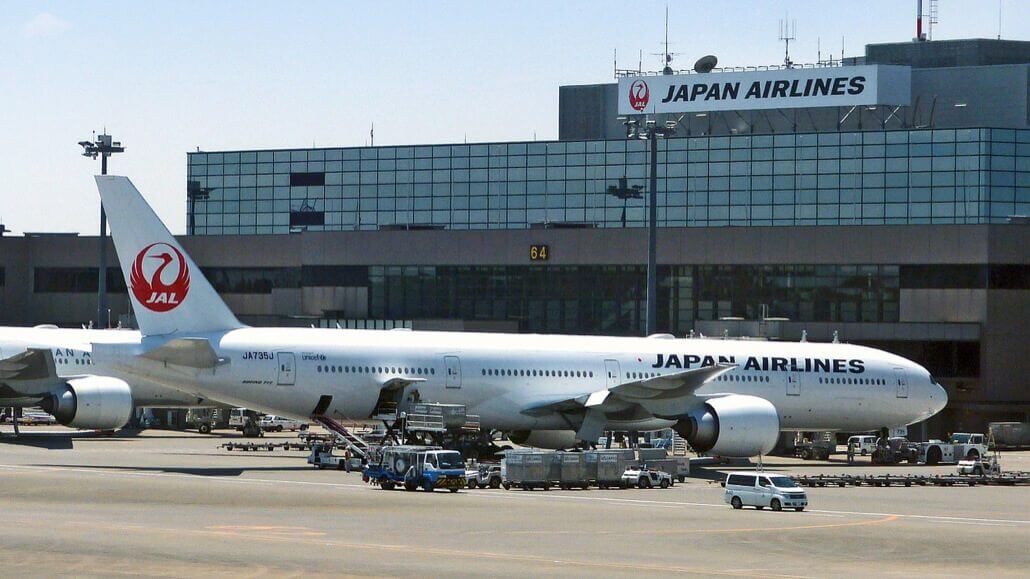
Share this article
- Share on Facebook
- Share on Twitter
- Share on WhatsApp
- Share on Pinterest
- Share on Tumblr
- Share on Reddit
- Share by Mail
Disclaimer: There are affiliate links in this article. This means that if you make a purchase after clicking on these links, we may receive a small commission at no extra cost to you. We have no association with the companies or the products reviewed. These are our own opinions of top travel products.
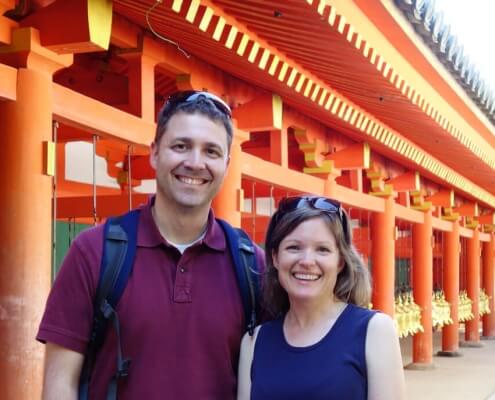
Becki and Shawn Japan Travel Specialists
Hi, we’re Becki and Shawn! We love Japan and are truly passionate about Japan and Japan travel.
We’ve lived, worked, and traveled in Japan for 20+ years, so we know where to go, what to see, and how to get there. Join us in Japan for an adventure of a lifetime!
Accreditations

- Japan Tours
- Destinations
- Experiences
- Travel Tips
Reviews & Recommendations
This site uses cookies. By continuing to browse the site, you are agreeing to our use of cookies.
Cookie and Privacy Settings
We may request cookies to be set on your device. We use cookies to let us know when you visit our websites, how you interact with us, to enrich your user experience, and to customize your relationship with our website.
Click on the different category headings to find out more. You can also change some of your preferences. Note that blocking some types of cookies may impact your experience on our websites and the services we are able to offer.
These cookies are strictly necessary to provide you with services available through our website and to use some of its features.
Because these cookies are strictly necessary to deliver the website, refuseing them will have impact how our site functions. You always can block or delete cookies by changing your browser settings and force blocking all cookies on this website. But this will always prompt you to accept/refuse cookies when revisiting our site.
We fully respect if you want to refuse cookies but to avoid asking you again and again kindly allow us to store a cookie for that. You are free to opt out any time or opt in for other cookies to get a better experience. If you refuse cookies we will remove all set cookies in our domain.
We provide you with a list of stored cookies on your computer in our domain so you can check what we stored. Due to security reasons we are not able to show or modify cookies from other domains. You can check these in your browser security settings.
We also use different external services like Google Webfonts, Google Maps, and external Video providers. Since these providers may collect personal data like your IP address we allow you to block them here. Please be aware that this might heavily reduce the functionality and appearance of our site. Changes will take effect once you reload the page.
Google Webfont Settings:
Google Map Settings:
Google reCaptcha Settings:
Vimeo and Youtube video embeds:
You can read about our cookies and privacy settings in detail on our Privacy Policy Page.
Travel Japan Like a Pro
" * " indicates required fields
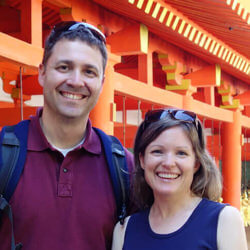

Japan Cost of Travel and Detailed Budget Breakdown
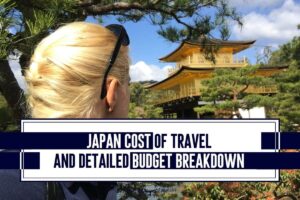
Disclosure: This Japan cost of travel article may contain affiliate links. If you click it and buy something you like, I’ll earn a small commission at no extra cost to you. With it, you will help me buy treats for my dog and parrot, build the time machine, and travel back in time to see dinosaurs and interview stone crafters on Easter Island. Thank you! Read more in Disclaimer .
Is travel to Japan expensive? How much will a trip to Japan cost? What should be my Japan travel budget? Japan was not one of the top spots on my bucket list . It was there but not a priority destination. How come I landed in Japan ? The first reason was that my coworker couldn’t stop talking about it, since he just got back. The second reason was that I got to guide a tour on Molucca islands in Indonesia, and flights were cheaper from Japan. Third, it was a new country to celebrate my birthday . So, I went to Japan in April , during cherry blossom season.
🍫 If you have been wondering “What is something that (almost) everyone loves but Anja doesn’t?”, you will find the answer hidden in the blog.

I didn’t really know how to figure out a budget for Japan trip . What cost per day would be in Japan? I had a fair idea, that this trip will be more on the expensive side, especially because of the time I was visiting Japan. I was in Japan In April. During Sakura and golden week. At the best and most expensive time to visit Japan . So, I was only hoping that 17 days in Japan will not be too extreme! Below you will find my detailed Japan travel budget breakdown . This will give you a brief idea of how much it costs to travel to Japan for a solo traveler. It will also give you an idea of the cost per person in a day in Japan. I spent 17 days/16 nights in cities around Japan . From Tokyo to Kyoto, visited Hiroshima and rural places like Shirakawa-go. I have done a lot of must-do activities, visited UNESCO sites and went on tours to make my Japan trip truly memorable. Here is how much money you can expect to spend in Japan as a solo (female) traveler .
and ALSO READ: • JAPAN COST OF TRAVEL AND DETAILED BUDGET BREAKDOWN • VANUATU COST OF TRAVEL AND DETAILED BUDGET BREAKDOWN • ZANZIBAR COST OF TRAVEL AND DETAILED BUDGET BREAKDOWN
for general JAPAN TRAVEL TIPS: • GET OVER JET LAG WITH THESE 19 EASY-TO-FOLLOW TIPS • ULTIMATE TRAVELER SAFETY GUIDE: WHAT TO DO DURING AN EARTHQUAKE for JAPAN TIPS: • Ultimate List of 23 Best Apps for Travel to Japan • JAPAN COST OF TRAVEL AND DETAILED BUDGET BREAKDOWN • HOW TO SPEND SEVENTEEN DAYS IN JAPAN: FIRST TIME ITINERARY • 73+ Essential Japanese Travel Phrases for Tourists Visiting Japan & Free cheat sheet for best TOURS IN JAPAN: • TOP 5 RAMEN TOURS IN TOKYO TO UNLOCK YOUR TASTEBUDS • 10 STUNNING JAPAN CHERRY BLOSSOM TOURS THAT YOU WILL ABSOLUTELY LOVE for INSTAGRAM CAPTIONS about JAPAN: • 55 BEST KYOTO CAPTIONS FOR INSTAGRAM – GOLDEN AND KAWAII • 55 BEST TOKYO CAPTIONS FOR INSTAGRAM – KAWAII AND CUTE • 73 Best Ramen Captions for Instagram – Delicious Like Broth • 87 Simplistic Cherry Blossom Captions for Sakura – Sweet and Dreamy • 135 Best Japan Captions for Instagram – Puns, Quotes, Riddles & Jokes
Table of Contents
Don’t have time to read now? Pin it for later!

Japan travel budget breakdown
This Japan budget breakdown is based on my experience and the cost of trip to Japan in April 2019 . You can spend a lot less or a lot more. The total amount will be based on the activities you choose to participate in, length of stay in Japan, food choices, the number of people traveling, and currency exchange rates . Japan is known to be expensive but is also one of the destinations, suitable for everyone. There are times that are more favorable for visiting Japan. So, expect higher prices in peak season . Proper planning, using public transportation, and booking hotel rooms in advance will help you save money and lower your daily expenses. If you live in Australia or New Zealand, you can find affordable flight deals to Tokyo or Kyoto . The prices stated were the exact amounts at the time of my writing. They might change in the future. Please note, that this post is intended for the purpose of trip planning and to give you an approximate value of how much to budget for your Japan trip. To give you an idea of Japan daily travel expenses. To be on the safer side, as always, budget more. The exchange rate at the time of my Japan trip: 1 AUD = 77 – 79 JPY (Japanese yen)
ALSO READ: • HOW TO SPEND SEVENTEEN DAYS IN JAPAN: FIRST TIME ITINERARY

1. Cost of flight to Japan
The cost of a flight to Japan can be different for anyone. The price of the flight ticket to Japan depends on a lot of factors. For starters, which part of the world are you flying to Japan? What time of the year are you visiting Japan? The airline you are flying with, the luggage you are bringing, and how far in advance you book your flight. The price of my flight to Japan will be included for reference. So, there will be a clearer overall cost of my 17-day trip to Japan . At the end of this post, there will be a total Japan cost breakdown with and without flight tickets . I was flying to Japan from Cairns, Australia. The price for my return flight, with JetStar, was AU$745 (Australian dollars) . It was a good deal in my case, since, I wasn’t flexible with dates. Plus, I was traveling to Japan during Sakura, or Cherry blossom season, which is the most popular time to travel to Japan , thus higher prices.

I booked my flights in February, so two months before my travel. Was searching for flight fares using Google flights . Then I book it through Iwantthatflight which found me an even better deal. If you are based in Australia, I’m sure you already know this. But if you are not, and are traveling to locations around Australia (including Japan, Bali, and Hawaii), make sure to sign up for JetStar and check the Iwantthatflight regularly. There you can find amazing deals for flights to Japan (round trip for as little as AU$ 360), Bali, New Zealand and Hawaii. How amazing is that!? My cost of flight to Japan came to AU$745.

2. Cost of accommodation in Japan
When planning my trip to Japan, and searching for places to stay, I figured out that there are various types of accommodation in Japan. Thus I tried to stay in as many different ones as I could. And it was totally worth it! I stayed in 9h Narita capsule hotel , spend many nights in hostels , a couple of nights in guest houses , stayed in a former Kimono shop , slept on a tatami floor, in a private hostel room, female only hostel, and splurged in a ryokan . As you can see, most of my accommodations in Japan were not the cheapest options available. If you don’t care as much about where you sleep, and your priority is to save on accommodation, then search for hostel rooms. Their dorm rooms are really affordable. They also have female and male dorms only. My most expensive accommodation was a stay in ryokan in Yudanaka .

2.1. Cost of accommodation in Narita and Tokyo
I spent my first night in Japan in 9h Narita capsule hotel . I felt like a tiny bee in those capsules. If you are afraid that they are claustrophobic, I can tell you that they are not. I was surprised at how spacious they were. I paid AU$70/¥6,080 for one night stay . On my other two Nights in Tokyo, I was staying in hostels. The first night was in a female-only hostel in Ueno (centurion) . I loved the pleasant atmosphere. And the location was perfect. The price for a single pod in a dormitory was AU$29/¥2,486 for one night . No meals were included in the price. My last night in Tokyo was in a lovely Mustard hotel in Shibuya district. I loved the closeness to Shibuya. Plus I was able to walk to all the close by neighborhoods. Including a cute hedgehog cafe . The accommodation has a restaurant/bar serving delicious breakfast. I paid AU$48/¥4,200 for a one-night stay . My total cost for accommodation in Narita and Tokyo came to 147 AUD/¥12,766 .
2.2. Cost of accommodation in Lake Kawaguchiko
In Lake Kawaguchiko I stayed in Travelers Hostel for two nights. The reason was purely to increase my chances and see Mt. Fuji and cherry blossom in nice weather. It turned out, that staying in a 6-bed mixed dormitory room, for more than one night was a good decision. The room, where I stayed, was spacious and heated. They have a nice kitchen and the staff speaks English. Location is great. Halfway from the train station to the lake. My total cost for accommodation in Lake Kawaguchiko came to AU$88/¥7,680 .
2.3. Cost of accommodation in Kyoto
In Kyoto, I stayed in the same travelers hostel chain as in Lake Kawaguchiko. Location was great, within walking distance to Kyoto train station, Tokyo tower, temples, and Gion. My 4-bed mixed dormitory room felt kind of small and crowded with 4 people in it. Maybe that was just because the room in Lake Kawaguchiko was huge. They have a nice and well-equipped kitchen. There was a nice restaurant/bar attached to the hostel. My total cost for accommodation in Kyoto came to AU$160/¥13,930 .
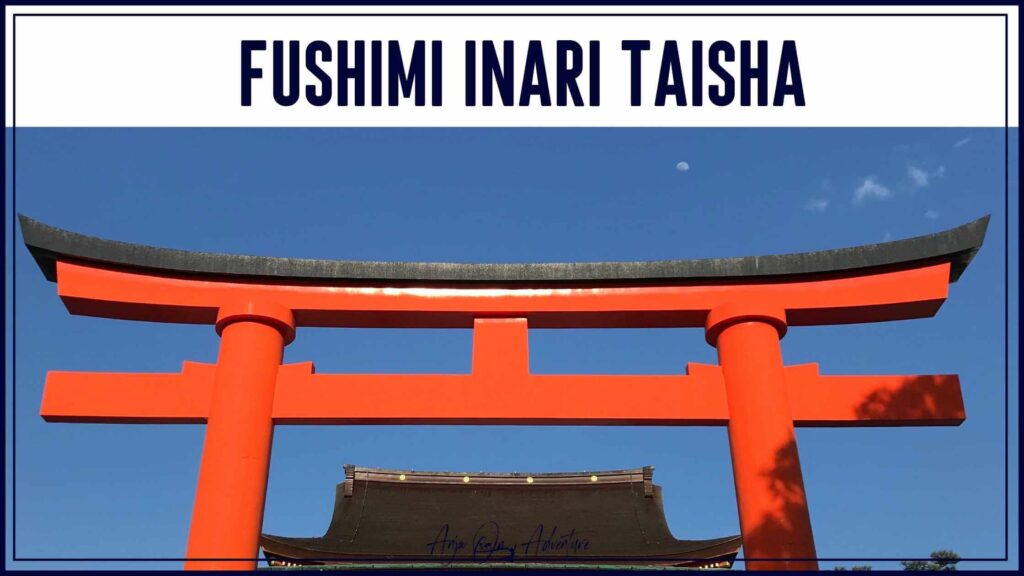
2.4. Cost of accommodation in Miyajima
I was staying in a lovely guest house in Miyajima . This Japanese-style accommodation was very peaceful and has a small garden. They also have an onsen. I was staying in a single futon Japanese-Style mixed dormitory. It was a very memorable experience. The owner is really kind and the place is full of items related to Japan. From origami books, history books, calligraphy writings, books, and stuffed toys … It was a perfect, almost zen-like stay. My total cost for accommodation in Miyajima came to AU$46/¥4,000 .
2.5. Cost of accommodation in Kanazawa
I spent two nights in Kanazawa, where I stayed in one of the coolest guest houses ever. It is a very small Japanese-style building, that was once a kimono shop . The owners are the friendliest and kindest people that you will ever meet. Guaranteed! Hosts prepare themed evenings to bring Japanese culture closer to tourists. When I was there, we went shopping and then learned how to make miso soup and gyoza. And the next day we were learning to write kanji and fold origami. Staying here will be a life experience! It has an amazing location and is within walking distance to Oumicho Market . My total cost for accommodation in Kanazawa came to AU$75/¥6,500 .
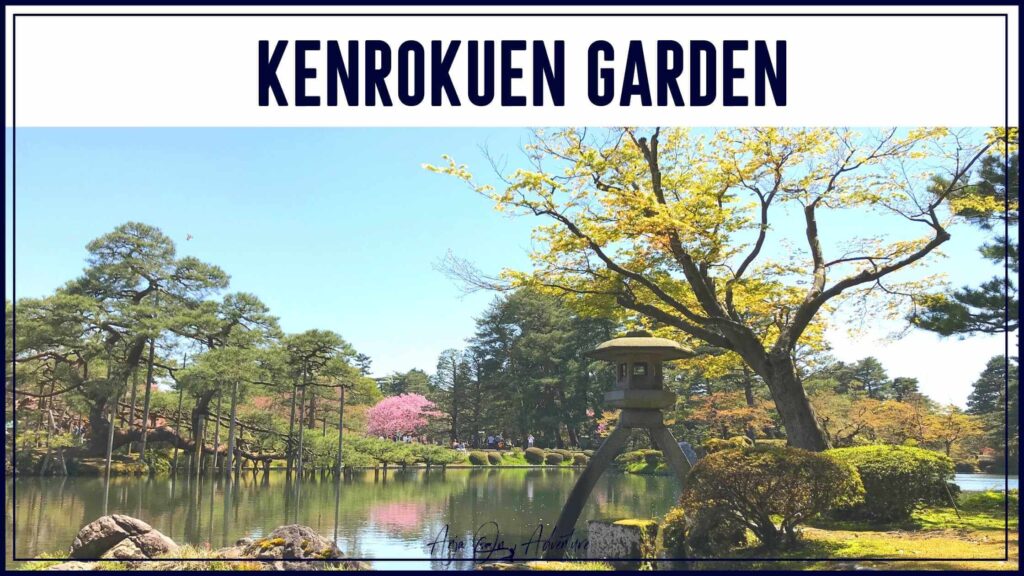
2.6. Cost of accommodation in Takayama
Based on my previous experiences with K’s Houses in Lake Kawaguchiko and Kyoto, I decided to stay K’s House Takayama as well. They have a great central location . I booked a small double room with a private bathroom. I needed my own room and my own bathroom. Here you can also book double rooms and family rooms. Just like other K’s House’s they follow Japanese style and design . They offer free Wifi, coffee and tea and have rental bikes available. My total cost for accommodation in Takayama came to AU$56/¥4,900 .
2.7. Cost of accommodation in Matsumoto
Having my batteries recharged in a single room stay, plus knowing that I will have my own very room the next night, I booked a room in BackPackers in Matsumoto . I opted in for another single futon bed stay in a mixed dormitory room. I figured, once in Japan … sleep on a futon bed, you have bed at home. This is a lovely hostel in an old house with a small garden. It is a short walk away from the JR station and bus terminal. Matsumoto castle is a bit more than 10 minute walk away. My total cost for accommodation in Matsumoto came to AU$46/¥4,000 .

2.8. Cost of accommodation in Yudanaka
This accommodation was a birthday treat. It is a small traditional Japanese ryokan , with spacious and clean rooms. I had a small Japanese-style room , where I had a futon bed, slippers, and a robe. They also had a private onsen . My room was bigger than some of the hostel ones I stayed in before. I also ordered a kaiseki (not included in the room rate). Kaiseki is a multi-course Japanese dinner where I was treated to delicacies from fish, seafood, and meat varieties. I forgot the number of dishes, but they were all delicious and I had no idea what I was eating (maybe for the best). If you have an option, go and stay here! They treat you like royalty.
My total cost for accommodation in Yudanaka came to AU$80/¥6,950 . My total cost for accommodation in Japan came to AU$698/¥60,726 (16 nights) or an average of AU$46,5/¥3795 per night.
Don’t forget to save those for later!

3. Cost of transport in Japan
For the whole duration of my travel in Japan, I was using Japanese public transport . It is fast, reliable and always (like always!) on time. As is everything else in Japan. If you miss your train or bus, the truth is, it will be your fault. Most of my travel was done using fast Japanese trains . Buying a Japan Rail Pass (or JR Pass) will most probably be your biggest expense. It is important that you order one BEFORE coming to Japan. They are not selling them IN Japan. I ordered my 7 day Japan Rail pass a month before my trip and I picked it up in Tokyo. Trains are the best way to explore Japan, and buying this JR Pass will save you a lot of money. Calculating which JR Pass to buy does require a bit of advance planning. I used Jorudan and Hyperdia to plan my route.
ALSO READ: • ULTIMATE LIST OF 23 BEST APPS FOR TRAVEL TO JAPAN

I was in Japan for 16 days but only bought a 7-day JR pass for AU$365.11/¥29,650. That was the best option for me. Some parts of my trip were also made with buses and trains not covered by JR Pass. Doing some math, it turned out that by using the Japan Rail Pass I saved ¥2000 or AU$26. Other than JR Pass, I used Narita Express to Tokyo and back. It is included in JR Pass, but mine was not activated at that time yet. It was AU$51.84/¥4,000 one way. From Tokyo to Lake Kawaguchiko I traveled by bus and paid AU$25/¥1,950. There I spent AU$7.7/¥600 for a return train ticket from Lake Kawaguchiko to Churieto Pagoda (not in JR Pass). To get to Shizuoka train station, where I activated my Japan Rail pass, I paid AU$36/¥2,800 for a 2-hour long bus ride. In Kyoto, I only used buses on the day when going to Kinkakuji and Arashiyama bamboo forest. The combined price for all the transport in Kyoto was AU$12,5/¥960 (tickets were from AU$3/¥240 to AU$6/¥460 for a single ride). To get to Nara, Osaka and Fushimi Inari I used trains included in Japan Rail Pass.

From Kanazawa to Takayama I traveled by bus. In the price of the bus ticket, AU$47/¥3,600, there was also a stopover at the UNESCO Historic Villages of Shirakawa-go . The fare for a bus ride from Takayama to Matsumoto was AU$45/¥3,500. The train ride from Matsumoto to Nagano was AU$14.6/¥1,140. To get to Yudanaka and visit Snow Monkey Park , I took a train from Nagano to Yudanaka is AU$16.5/¥1290. Japan Rail Pass is not valid on this route. I got picked up by my Onsen owners, but on my way back, I paid AU$4/¥310 for a bus ride from Snow Monkey Park to the station, and once more AU$16.5/¥1290 for a train ride back to Nagano. You can also buy 2- day Snow Monkey pass, which includes 2 days of unlimited use of Nagaden limited Express, local train/bus and entrance fee to Snow Monkey Park. Meaning, you save around 200 yen on the round trip.

My Japan Rail Pass was no longer valid, so I had to buy a train ticket from Nagano to Tokyo. It was AU$102/¥7990 for a smooth one-and-a-half-hour train journey. In Tokyo, I was walking and using the metro. I paid AU$2.7/¥210 for a single ride. My Japan transportation costs broke down: • 7-day JR Pass: AU$365/¥29,650 • Narita Express (twice): AU$104/¥8,000 • Transport to, from and around Lake Kawaguchiko: AU$69/¥5,350 • Transport in Kyoto: AU$12.5/¥960 • Buses from Kanazawa to Takayama and to Matsumoto: AU$92/¥7,100 • Train from Matsumoto to Nagano: AU$14.6/¥1,140 • Return train ticket from Nagano to Yudanaka and one bus ride: AU$37/¥2890 • Train from Nagano to Tokyo: AU$102/¥7,990 • Use of the metro in Tokyo: AU$13.6/¥1,050 Japan transportation costs by mode of transport: • Bus travel: AU$168/¥13,120 • Train travel NOT included in JR Pass: AU$54/¥4,230 • Train travel that is covered by JR Pass: JRP AU$ 365.11/¥29,650 & AU$219/¥17,130 = AU$600/¥46780 My total cost of transportation in Japan came to AU$822/ ¥ 64,130 for 17 days in Japan or an average of AU$49 /¥3772 per day. If I include flights to and from Japan, the total cost of all the transportation would come to AU$1567.
**At the time of my travel (prices and exchange rates), buying a 14-day JR Pass would be slightly more expensive for me. Doing it like this I spent ¥4,470/AU$78 less than the cost of the 14-day JR Pass. That one would expire two days before the end of my trip. Plus, I would still have to pay for all the buses, one way to the airport, and local trains.
Just in case, you know. Pin those for later!

4. Cost of food and drinks in Japan
I will just say it. You will not be in Japan long enough, to try all the Japanese foods there are to try. It is delicious ! And different almost in every region you visit. There is ramen and sushi, and okonomiyaki and kaiseki. Then there is tempura and sashimi and soba and udon noodles. They have Hida and Kobe beef. And bento boxes and colorful street food, and unusual desserts. In Japan, I ate a lot! I can not name all the food that I have tried. And in many cases, I had no idea what I was eating. And that is ok! (Maybe even better) The price of the food is really affordable unless you visit Michelin-star restaurants. And they serve good, quality food , even in supermarkets. I was eating a lot of ramen ! I love it! The price varied from 600-900 yen (AU$7.7-11.6) for a bowl of ramen. For okonomiyaki I paid between 400-700 yen (AU$4-7) per piece. The price of takoyaki or octopus balls was from 300-500 yen (AU$3.8-6.5) for 6 pieces.
ALSO READ: • TOP 5 RAMEN TOURS IN TOKYO TO UNLOCK YOUR TASTEBUDS IN 2023

It doesn’t hurt to mention, that I splurged on food a couple of times. Once in Takayama, where I paid AU$88/¥6800 for a Hida beef stake dinner . It was delicious. The second time was for my birthday dinner at a guest house Yasuragi in Yudanaka. There I had a kaiseki or a traditional multi-course Japanese dinner. Dinner had around 9 or 10 courses and was worth AU$62/¥4,800. I was struggling to finish all of them. Now, this may surprise you but I’m not a fan of rice. That is why I only ate sushi twice , when in Japan. Once in Kanazawa and once in Tokyo Tsukiji’s market. In Kanazawa I paid AU$30/¥2340 for sushi (AU$15.5/¥1200) and tempura (AU$14.8/¥1140). In Tokyo fish market I paid ¥2500 (AU$32.5) for a very fresh and tasty sushi prepared in front of my eyes.
ALSO READ: • 73 BEST RAMEN CAPTIONS FOR INSTAGRAM – DELICIOUS LIKE BROTH

From desserts, even though I’m not a fan, I just couldn’t resist trying at least a few. I was really impressed by Pablo’s cheesecake (AU$2.5/¥200) per piece. I also tried dango (3 colorful balls on a stick) for AU$4.5/¥350) per stick, and I was not impressed. I also tried Momiji manjū (AU$1.1/¥90), a traditional desert in Hiroshima and gold leaf ice cream in Kanazawa (AU$10.4/¥800). For breakfast, I was buying stuff in 7-eleven or other local supermarkets. Once I almost bought cat food (the packaging looked nice, there was no cat on it and I couldn’t understand a thing). Luckily the person at the register knew English and stopped me. Phew! My total cost of food and drinks in Japan came to AU$432/¥33,260 for 16 days or AU$27/¥2079 per day.

5. Cost of tours, activities and entrance fees in JAPAN
I had a huge FOMO in Japan. If there was a temple, a shrine, or a castle … I went and see it. City tours, food tours … I was signing up for all of it. My goal was to experience and learn as much as possible. Some of my chosen activities were really touristic, but they were so much fun! This was all possible, because tours, activities and entrance fees are very wallet-friendly . I never felt tour prices were too high. And entrance fees felt more like small donations. Activities were well worth it and I actually regret not doing more of them . One of them was to rent a Kimono . Below you will find a list of things I did with their prices.
ALSO READ: • 10 STUNNING JAPAN CHERRY BLOSSOM TOURS THAT YOU WILL ABSOLUTELY LOVE

🍫 “What is something that (almost) everyone loves but Anja doesn’t?” It is chocolate.
• ACTIVITIES AND ENTRANCE FEES IN KYOTO Kinkakuji Temple or Golden Pavilion entrance fee: AU$5.2/¥400 Arashiyama Monkey park entrance fee: AU$7/¥550 Kiyomizu-dera temple entrance fee: AU$5.2/¥400 Night Walk in Gion: Kyoto’s Geisha District : AU$18 • NARA & OSAKA Todaiji temple entrance fee: AU$6.5/¥500 Osaka: Shinsekai Food Tour : AU$137 • HIMEJI Himeji castle entrance fee: AU$13/¥1000 • HIROSHIMA & MIYAJIMA Hiroshima castle entrance fee: AU$4.8/¥370 Hiroshima Peace Memorial entrance fee: AU$2.5/¥200 Itsukushima Shrine entrance fee: AU$3.9/¥300
ALSO READ: • 55 BEST KYOTO CAPTIONS FOR INSTAGRAM – GOLDEN AND KAWAII

• KANAZAWA Kanazawa castle entrance fee: AU$4/¥310 Kenroku-en gardens entrance fee: AU$4/¥310 Nomura Family Samurai House entrance fee: AU$7/¥550 • TAKAYAMA Hida Folk Village (including bus to/from Takayama): AU$13/¥1000 Matsumoto castle entrance fee: AU$9/¥700 Snow Monkey Park entrance fee: AU$10.4/¥800 • TOKYO Hedgehog cafe entrance fee: AU$19.5/¥1500 TeamLab Borderless entrance fee : AU$48/¥3700 (¥3200 entrance + ¥500 for tea room) My total cost of tours, activities, and entrance fees in Japan came to AU$318. This amount includes two tours I purchased online through GetYourGuide and the amount I spent in Japan. This averaged on AU$20/¥1540 per day.
ALSO READ: • 55 BEST TOKYO CAPTIONS FOR INSTAGRAM – KAWAII AND CUTE
Pinning is winning and sharing is caring!

6. Cost of souvenirs in JAPAN
Japan is one of those countries, you just can not leave without buying a souvenir . Or two. Or three. Or more in my case. I always buy souvenirs, but I do try to bring back home the ones that will be useful. Not just another item that will end up catching dust. Most of the time I buy the same types of souvenirs, small flag, playing cards, magnets, postcards, and stamps. For magnets, I paid from AU$4.8/¥380 to AU$5.7/¥450. For a collector Tokyo 2020 stamp set I paid AU$14.8/¥1160.
ALSO READ: • 135 BEST JAPAN CAPTIONS FOR INSTAGRAM – PUNS, QUOTES, RIDDLES & JOKES
I just couldn’t leave Japan with two chopstick sets , which were AU$20.7/¥1620. And I also bought a really nice bottle of Roku Gin (which has more alcohol than the one you buy overseas) for AU$41/¥3200. I still have the bottle and use it for homemade liquors. Don’t tell anyone! After a couple of days in Japan, I was introduced to Goshuin . Goshuin is a shrine or temple stamp, that you collect in your goshuin book goshuincho . Each temple has its own design, usually consisting of a red stamp and black calligraphy letters. The book opens like an accordion. I paid AU$6.4/¥500 for Goshuincho, and then from AU$3.8-6.4/¥300-500 for every Goshuin. My total cost for souvenirs in Japan came to AU$134/¥10340.

7. Cost of miscellaneous items for Japan trip
What I included in the miscellaneous items are the cost of travel insurance and pocket wifi . Here I also include luggage storage , plus the expenses that don’t fit in any other category. Like cost Shiseido face products, Skechers sneakers, laundry (AU$2.6/¥200) and crackers for deers in Nara (AU$2/¥150 per packet).
7.1. Cost of pocket Wi-Fi in Japan
Being so unfamiliar with the country, I didn’t want to rely on public WiFi when in Japan. That is why I ordered pocket WiFi before coming to the land of the rising sun. And it was an amazing decision. Ordering one is easy and practical. They deliver it to your first accommodation and when you leave Japan you simply mail it back. And they already provide an envelope with the return address. To get things straight, there is WiFi in Japan . They have it in hostels and public spaces. But, sometimes the connection is not the best and it is not always free. For me, having a connection all the time was extremely beneficial. Like, when I was in a restaurant and couldn’t read/understand the menu. Or when I was wandering around and wanted to know when the next train leaves or opening hours. Pocket WiFi amazing because you can use all the best apps for travel to Japan anytime and anywhere. My total cost for pocket WiFi in Japan came to AU$100,61/¥7762 .

7.2. Cost of luggage storage in Japan
My Japan itinerary was fast-paced. I was changing accommodation almost daily. Which meant, I couldn’t just leave my luggage at the place where I was staying. Luckily, Japanese people are thinking of everything and they have convenient luggage boxes all around the country. You will find them at train stations , in front of attractions, in shopping centers , and other places. I was leaving my backpack in them quite a few times. In Himeji, Nagano, Hiroshima and Shirakawa-Go. They make your sightseeing much easier. You can check the availability of those luggage lockers using one of the essential Japan travel apps , Ecbo Cloak . It will tell you the nearest location and you can also reserve your locker for when you arrive. They usually cost AU$6.5/¥500.
My total cost for luggage storage in Japan came to AU$26/¥2,000 .

7.3. Cost of travel insurance for Japan
Travel insurance is a thing that I never think twice when buying. I also don’t look at the price, but always opt-in for the highest package . I want to be sure that if anything happens, I will be taken care of and won’t put any burden on my closest family with extra costs and expenses. You should do the same. Buy travel insurance wherever you go . Even when traveling to Japan. Not only will it be a challenge to navigate without knowing the language, when you are healthy. You don’t want to know what it would look like doing it in pain. You just never know what could happen, so it is better to be safe than sorry. Seriously, you just never know.
I usually buy travel insurance with a Slovenian company . It covers the whole world and I get the package with the cover for a combined value of 1 million Euros. It is valid for one (1) year for travels up to 90 days. So the more you travel, the better ‘value’ for the price. Slovenian travel insurance might not be for everyone. So, if you are looking for affordable global travel medical insurance, have a look at Safety Wings . Digital nomads are really fond of it, since it covers people from all over the world, while outside their home country. For travelers, Safety Wings insurance is a great option, since it allows you to buy it even when you are already abroad . No excuses! My total cost for travel insurance came to 113,55 EUR/182 AUD .* *I used the full travel insurance price in the calculation. MY total cost of miscellaneous items in Japan came to AU$398.
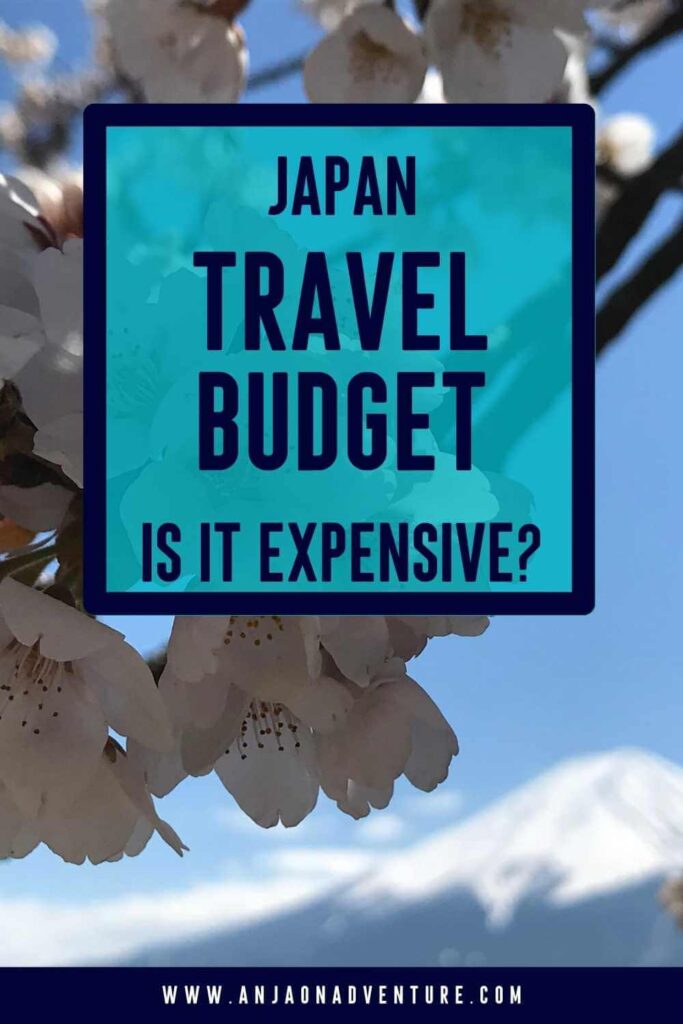
8. My total travel expenses for 17 days/16 nights in Japan
Here is my total Japan budget breakdown , that will hopefully give you a rough idea on how much you should expect to spend when traveling in Japan. Japan trip expenses breakdown: • Flight ticket: AU$745 • Accommodation: AU$698 or AU$46,5 per day • Transportation: AU$822 or AU$49 per day • Food: AU$432 or AU$27 per day • Activities and tours: AU$318 or AU$20 per day • Souvenirs: AU$134 • Miscellaneous: AU$398 Total amount spent with flight ticket in 17 days: AU$3547 (US$2367) Total amount spent without flight ticket in 17 days: AU$2802 (US$1869) Average daily amount spent without flights: AU$165 (US$110) per day .

Japan cost of travel, in a nutshell
Is Japan expensive? Yes, Japan is considered to be an expensive country. But I was pleasantly surprised, that it can also be a very affordable country to visit . If you plan your trip to Japan ahead, you will find out that you don’t have to break the bank to enjoy your time here. I spent 17 days in Japan and on average spent AU$165 (US$110) per day . Not bad for one of the most expensive countries to visit! My average daily amount was almost a standard norm , which ranges from $50 – $100 per day per traveler. When I travel budget for a trip, I always plan on spending around $100 per day . That is because I don’t want to stay in the cheapest hostels and don’t want to eat street food all the time. Which adds up. Plus I do treat myself once in a while. That being said, I spend almost the same amount per day (US$105) when traveling in Mexico. Which is considered to be way more affordable than Japan.

Can you travel in Japan for cheaper? Absolutely! You can save if you stay in cheaper accommodation options in Japan. I tried different ones and paid for a single room a couple of times. If you travel with someone else, those costs will reduce. You can also save a ton if you don’t splurge on fancy meals. Plus, plan your transfer in detail, so you know which option to go for. How expensive a Japan trip will also depend on the time of the year and the exchange rate. I visited Japan during Cherry blossom season or Sakura . Which is the top season to visit Japan . Which means prices are higher. And the exchange rate was 1 AUD = 77 – 79 JPY (Japanese yen). In 2019 I spent around ¥215.700. That was equivalent to AU$2800 in April 2019 and ‘only’ close to AU$2450 in April 2023. I hope you found my Japan travel budget breakdown helpful. I am happy to answer any further questions you may have in the comments below. Safe travels and Shine on, Anja

Skipped to the good part? Here is the gist
Japan is known for being an expensive country but traveling to Japan doesn’t have to break the bank. I traveled to Japan during cherry blossom season. Which is the best time to visit Japan. Thus, also the most expensive time for a visit. I spent 16 full days there and surprisingly found out that Japan is way more affordable than I thought it would be. On average, my average daily amount spent was AU$165 (US$110) per day. The two biggest expenses were accommodation and transport. But I found that food and tours are very reasonably priced and budget friendly.
Is Japan expensive to travel to?
Yes, but it can be budget-friendly. Japan is considered to be one of the most expensive countries to travel to. But a trip to Japan can be budget-friendly. I spent 17 days in Japan and my average daily spent was a reasonable AU$165 (US$110) per day. My two biggest expenses were accommodation and transport. And I found that food and tours are very fair priced. For a more detailed Japan cost breakdown, check out my Japan travel expenses blog post.
How much does a 17-day trip in Japan cost?
In 2019 I spent around ¥215.700 for 17 days in Japan. That was equivalent to AU$2800 or US$1960 in April 2019. The same amount of Japanese yen would be equivalent to AU$2450 or US$1645 in April 2023. As you can see, the exchange rate can be a big factor when calculating travel expenses. My two biggest expenses were accommodation and transport. And I found that food and tours are very fair priced. For a more detailed Japan cost breakdown, check out my Japan travel expenses blog post.
How much should I plan to spend per day in Japan?
10,000 – 15,000 Japanese yen. You should plan to spend around 10,000 – 15,000 Japanese yen per day. Plan on spending around ¥3795 for accommodation, ¥3772 for local transportation (or less with JR Pass), around ¥2079 for food per day, and around ¥1540 for tours and entrance fees. For a more detailed Japan cost breakdown, check out my Japan travel expenses blog post.
Is 100 USD a day enough for Japan travel?
Yes. Having US$100 prepared for each day on your Japan trip, and with proper budgeting, this amount will most definitely be enough. In April 2019 I spent ¥12690 per day. This amount was equivalent to AU$165 (US$110) per day. Because of the changes in the exchange rate, that amount would be AU$144 (US$97) in April 2023. For a more detailed Japan cost breakdown, check out my Japan travel expenses blog post.
How much do I need to tip in Japan?
There is no need to tip in Japan. Tipping in Japan is considered rude and even offensive. It is not expected. The price you see on the menu is the end price you pay, and still get an outstanding service included in the price. For a more detailed Japan cost breakdown, check out my Japan travel expenses blog post.
How much should I plan to spend on food per day in Japan?
2,000 – 5,000 Japanese yen. Prices of food will vary depending on what you are planning to eat in Japan. You can expect to pay 400 yen for street food or 600 yen for a bowl of ramen. Sushi is more expensive and starts from 1200 yen. The average amount most people spend per food is ¥3,672. I spent ¥2079 per day. For a more detailed Japan cost breakdown, check out my Japan travel expenses blog post.
How much should I plan to spend on activities per day in Japan?
500 – 2500 Japanese yen. Prices of tours, activities, and entrance fees are reasonably priced. They are usually from 300 – 700 yen. Some entrance fees are more expensive, like UNESCO Himeji Castle with an entrance fee of 1000 yen. The average amount most people spend per food is ¥2,000. I spent ¥1540 per day on tours and entrance fees… For a more detailed Japan cost breakdown, check out my Japan travel expenses blog post.
Is Japan Rail Pass worth it?
Yes, in most cases. Make sure to use JR calculator and plan your route before ordering one. Compare prices of the train fares and if they are covered by JR Pass. Public transport, Metros and buses are not included in the pass. Keep in mind, that you can activate your Rail Pass on any day when in Japan. For itinerary ideas, check out my 17 days in Japan itinerary and Japan travel expenses blog post.
Are trains expensive in Japan?
Yes, but don’t let that stop you! Traveling by train in Japan is expensive. But if you are coming to Japan as a tourist, you can order Japan Rail Pass, which will in most cases be the cheapest and most affordable option. Buying a 7-day Japan Rail Pass will cover the cost of a return trip from Tokyo to Hiroshima. However, it does not cover metro, subway and some regional trains. For a more detailed Japan cost breakdown, check out my Japan travel expenses blog post.
✈ Travel like a PRO
Are you ready to travel like a PRO? Save time and money with these travel tips and resources . I personally use these companies to save time and money. They do the work by providing a list of options, prices, and reviews from actual guests, for anywhere I am traveling worldwide. ✈️ FLIGHTS: I use Skyscanner in combination with Google Flights to find amazing flight fares (try the Explore feature). I book directly with an airline or pair it with Iwantthatflight for the best deals. 🏨 ACCOMMODATION: Booking.com is my favorite site for finding great hotel deals. They return the best rates and reviews are from actual guests! 🚘 RENTAL CARS: Discover Cars are my go-to, when planning an epic road trip. 🗽 TOURS & ACTIVITIES: I like to wander around on my own, but when I want to explore with a group, skip the line with an entrance ticket, I book it with GetYourGuide or Viator . ❤️🩹 TRAVEL INSURANCE: I never, under any circumstances travel without insurance. In most cases, I use yearly global travel medical insurance. But, if you don’t have that and some impromptu travel plans occur, use SafetyWing . With them, you can buy travel insurance even when you are already abroad. Better be safe, than sorry! 📲 ONLINE SAFETY: NordVPN keeps your devices’ browsing safe and malware-free. Stream shows from around the world, access social media in countries where they are blocked and buy cheap flights by changing your virtual location. 🛜 STAY CONNECTED WITH eSIM: Ditch the plastic SIM cards and waiting in lines at the airport! Airalo eSIMs allow you to connect as soon as you land at your destination. They have eSIMs for over 190+ countries worldwide.
✔ You May Also Like
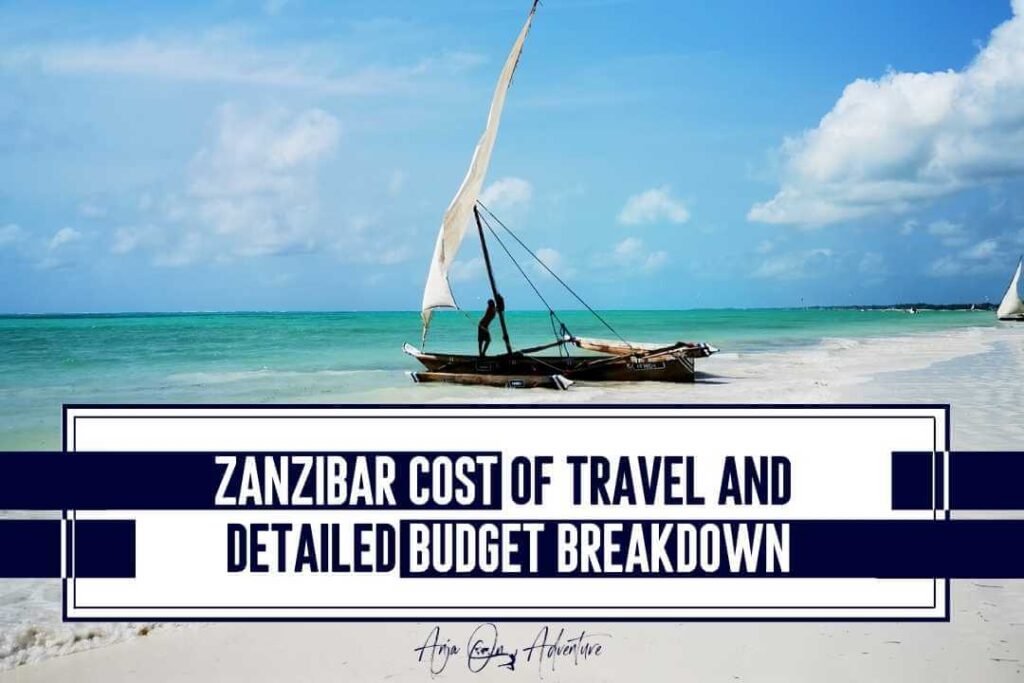
ZANZIBAR COST OF TRAVEL AND DETAILED BUDGET BREAKDOWN

135 BEST JAPAN CAPTIONS FOR INSTAGRAM – PUNS, QUOTES, RIDDLES & JOKES

HOW TO SPEND SEVENTEEN DAYS IN JAPAN: FIRST TIME ITINERARY
❥ About Anja On Adventure

Anja On Adventure is a travel blog, a collection of insider tips and information on destinations, that I visited as a solo female traveler, tour guide, teacher, yacht stewardess, and Survivor challenge tester. Anja, is a thirty-something adventure-seeking, sun chasing, beach hopping, gin-loving, tropics enthusiast with a creative mind and sarcastic spirit, who loves coconut and mango but doesn’t like chocolate and sweets. I am passionate about all things travel, maps, and puzzles. Click here to learn more About me .
About the author: Anja
4 thoughts on “Japan Cost of Travel and Detailed Budget Breakdown”
Thank you for this super detailed post . Will definitely be referencing this when I finally plan my trip to Japan
Thank you so much! Let me know if you need any more details and help.
Super detailed and helpful post. Planning a similar trip in the future and budgeting will be a biggie on the trip.
Thank you! Hope it will help, but let me know if you will have any further questions.
Leave a Comment Cancel reply
Save my name, email, and website in this browser for the next time I comment.

Japan Travel Budget: How Much Does It Cost To Travel Japan?
By: Author Lotte
Posted on Last updated: December 28, 2022
Categories Japan

Have you always dreamed about visiting Japan but are you worried about the costs? I spent two months in Japan and can say from personal experience: you can travel around Japan on a budget!
Yes, compared to Southeast Asia , Japan is an expensive country. But with some research and careful planning, it's possible to find great deals and travel on a budget in Japan.
In this post, you will find a full Japan budget breakdown and clever budget-saving tips in order to make the most of your money in the country of the rising sun. Let's get started !
Japan travel budget
Disclosure: Some links in this post are affiliate links. If you make a purchase through one of these links, we may earn a small commission (at no extra cost to you!). We're very grateful when you use our links to make a purchase:-).
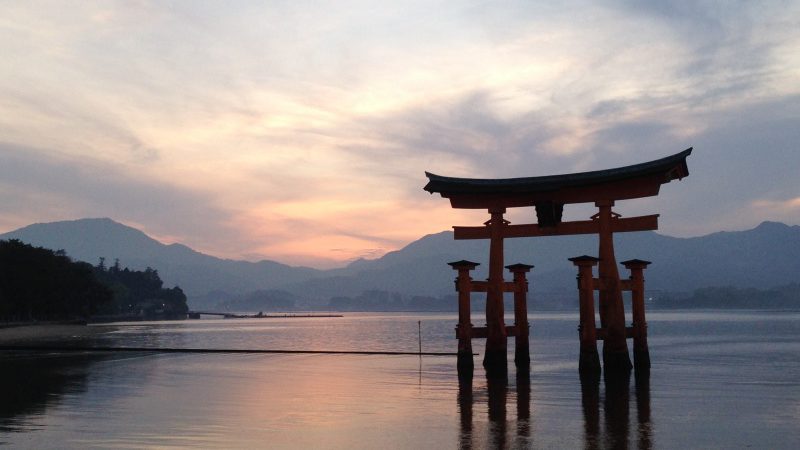
How to travel Japan on a budget
In the infographic below you can find a detailed budget breakdown of our Japan trip costs to give you a quick overview of how much you can expect to spend during your trip to Japan.
Of course, the amount you'll spend depends on your style of travel, the length of your trip, and the type of accommodation you choose.
Generally speaking, you can travel around Japan on a budget of $60-$120 per day (per person). As you can see in the infographic, our Japan daily budget was ¥13.418 (€107/$122) as a couple.
Read the post for detailed information about the costs of a trip to Japan, exactly how much we spent on accommodation, food, transport, and activities, and practical tips on how to travel to Japan on a budget.

Japan budget travel: important facts and figures
I traveled around Japan with my husband , and all expenses mentioned are for the two of us together.
I quote prices in Japanese Yen (¥) as well as Euros ( € ) and US Dollars ( $ ). When we were in Japan, €1 was around 125JPY and $1 was around 110JPY , you can find the current exchange rates here .
I spent almost a full month in Japan, 29 days to be exact. In total, we spent ¥389.122 (€3103/$3538) , which comes down to an average of ¥13.418 (€107/$122) a day for us as a couple. This includes all our Japan travel costs (see note below car section).
It does not include our airplane tickets from the Netherlands to Japan and back home.
My trip started and ended in Tokyo .
We spent 10 days on Hokkaido (the northernmost island of Japan) and the other 19 days on Honshu .

How to save money when planning a trip to Japan
When planning your Japan trip, it's important to plan carefully, look for discounts, and be flexible with your itinerary to make the most of your travel budget for Japan.
Avoid high season (travel during the low season instead)
Start by researching the best time of year to visit Japan as flight costs, hotel prices, and car rental fees vary throughout the year. Japan actually has two peak seasons:
- Sakura or hanami (cherry blossom season) : early March until mid-May
- Koyo (autumn leaves season) : early October until late November
While these are generally the best times to visit Japan, accommodation prices are at their highest.
So if you have the option to be flexible with your travel dates and able to travel during the low season (winter and summer), this is a great way to save money on your Japan trip.
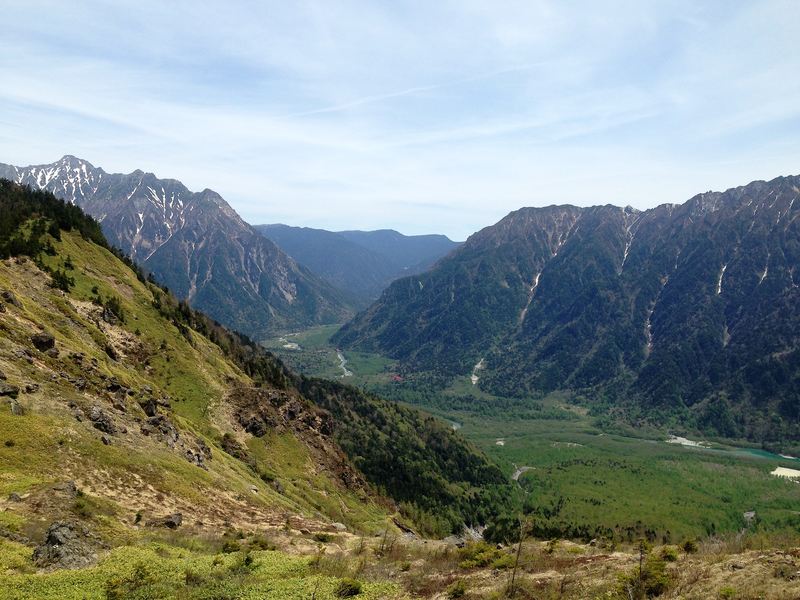
Save money on flights
You can save a lot of money by searching for cheap flights to Japan on websites like Kiwi.com . Try different travel dates and see how this affects the price of your flight.
Generally speaking, the cheapest days to fly are Tuesday, Wednesday, and Saturday. Airlines often offer discounted fares on these days, so it's worth checking the booking sites and comparing prices on different days of the week.
You’ll get a better deal by booking your flight in advance. For domestic flights 1-3 months before your trip is ideal.
For international flights, it’s best to book 2-8 months in advance. Tickets to Tokyo (Narita International Airport and Tokyo Haneda International Airport) and Osaka (Kansai International Airport) are usually the cheapest options, but keep an eye open for tickets to Fukuoka Airport as well.
Lastly, you may be able to find cheaper flights if you're willing to be flexible with your departure and arrival times.
Sure, it’s not ideal to arrive in the middle of the night, but if it saves you hundreds of dollars it’s worth losing one night of good sleep.
✈️ Click here to find a great deal on a flight

Book your accommodation in advance
Once you've got your flights booked, it’s time to research budget accommodation.
Not to worry, there are lots of budget options available in Japan, from a cozy private room with traditional tatami mats to clean to futuristic capsule hotels and sleeping pods.
I always use Agoda and Booking to find the best value-for-money accommodation for our trips. I recommend checking both platforms before you book to make sure you get a good deal on hotel rooms.
Please note that Agoda includes taxes in their price whereas Booking doesn't always include this. Make sure to check this before finalizing your booking.
Also, if you want to avoid hefty ATM fees or there's a strict limit on how much cash you can withdraw per transaction, it can be better to book with Agoda as you can often pay online with your credit card (thereby reducing your need for cash).
Cost to travel Japan: average daily expenses
Now that you know some great ways to save money in the planning phase of your Japan trip, it's time for a deep dive into our Japan travel expenses. Our Japan travel costs are divided into four categories:
- Accommodation cost: 23% of our average daily costs
- Transportation costs: 39% of our average daily costs
- Food & miscellaneous costs: 34% of our average daily costs
- Activity costs: 4% of our average daily costs
1. Accommodation costs in Japan

I'll be the first to admit that finding budget hotels in Japan can be a bit tricky as the general price level in Japan is just a lot higher than in countries in Southeast Asia or Taiwan .
That being said, there are some great options available. For example, APA Hotels, Super Hotel, and Hotel Mets are budget hotel chains in Japan that offer reasonable prices for quality accommodation.
Business hotels are also a good budget option if you're looking for an economical no-frills double room. Wing International Hotels, Smile Hotels, and the Toyoko Inn are some of the most well-known names.
How much did we spend on accommodation in Japan?
In total we spent ¥92.178 (€740/$832) on accommodation, averaging ¥3179 (€25/$29) per day . The accommodation costs are split into three categories:
- Sleeping in our car (at a free parking lot)
- Hotels and apartments
Where to stay in Japan on a budget?
Here is a list of all the places we stayed during our travels around Japan.
* Read more about our stay at Cando Hotel Shimbashi here .
** Unfortunately the accommodation we stayed at in Furano during our Hokkaido trip is no longer available. While we didn't personally stay at the Shin Furano Prince hotel we did visit their spa twice during our time in Furano.
*** Several other accommodations we stayed at are no longer available (stupid C**vid ?) . I’ve done my utmost to find suitable alternatives that I'd be happy to book myself.
Note: Prices for the hotels, campgrounds, and guesthouses depend on the time of year and how far in advance you book. Click ‘book here’ to see the latest prices on Booking and book ahead to get the best deal.
#1. Japan budget tip: stay at campsites
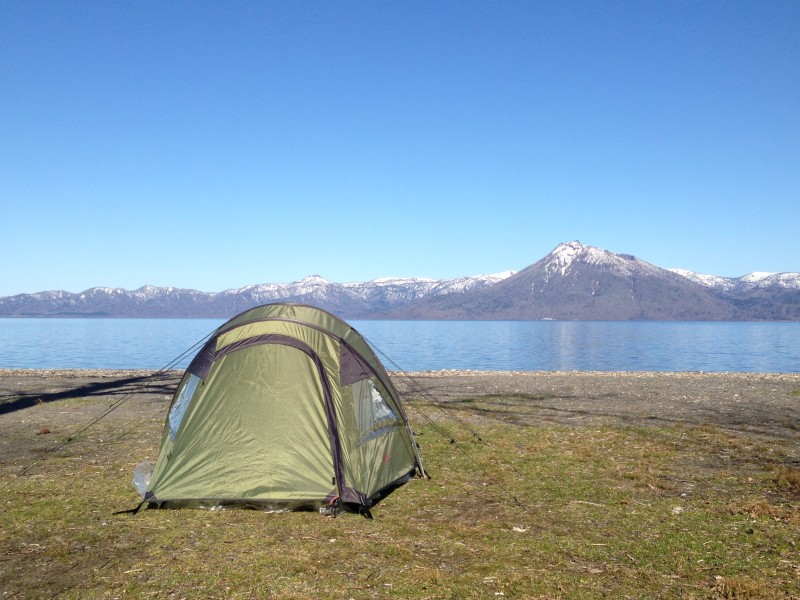
Camping in Japan is a great way to save money on accommodation. Yes, you'll have to bring camping gear but campgrounds are so much cheaper than hotels!
On Hokkaido for example, we stayed at 2 campsites and paid only between €7-13 ($8-14) per night. We also went camping on Miyajima Island and in Kamikochi (in the Japanese Alps) which saved a ton of money.
You can find more information about the accommodation and campgrounds we stayed at in our Japan itinerary .
#2. Japan budget tip: sleep in your car

I went to Japan in April/May and during that time it can still be very cold in Hokkaido. In fact, there were several nights when the temperature dipped below 0 degrees Celsius.
That's why we slept in our car for 4 nights. Which is totally acceptable in Japan! One night we found ourselves in an almost full parking lot with lots of Japanese people spending the night.
The crowd varied from a businessman who slept in his sports car to camper vans complete with their own generator and TV-reception antennae.
While this may not be the most comfortable or luxurious option, it's again a great way to cut your Japan accommodation costs.
We only did this during our first trip to Japan, when we were budget travelers and backpacking around Japan as a couple.
During our second Japan trip, we traveled as a family (with our 15-month-old son) and only stayed at hotels.
#3. Japan budget tip: book hotels in advance

We booked almost all our hotels a few months before our trip to Japan via Booking . Booking ahead and keeping an eye out for deals really helps to find affordable hotels in Japan.
For our trip, accommodation prices varied between ¥3300 (€24/$25) and ¥15000 (€110/$120) . That's a lot more than hotels in Southeast Asia but it's still cheaper than hotel prices in New Zealand .
2. Transportation costs in Japan
Let’s take a closer look at public transportation in Japan. First and foremost: public transportation in Japan is super efficient, well-managed, and very punctual.
There's no such thing as major delays in Japan (except when there's been an earthquake that severely damaged the train tracks).
There are many ways to travel around the country, such as trains, buses, taxis, and the MRT in big cities.
How much did we spend on transportation in Japan?
In total we spent ¥150.332 (€1202/$1367) on transportation, averaging ¥5185 (€42/$47) per day. Transportation costs are split into 4 categories:
- Regional flights
- JR Rail pass (regional)
Other transportation
Cheap flights in japan.
There are several budget airlines in Japan (Jetstar, Peach, and Vanilla), we flew with Jetstar from Tokyo to New Chitose Airport on Hokkaido and from Hokkaido to Kansai airport, near Osaka , for 21.625JPY (€173/$197).
Car rental fees in Japan

If you're interested in reading more about renting a car and driving on Hokkaido, be sure to read this post as well.
My car was provided by ToCoo . They were so kind as to provide me with a free rental car for my 10 day trip around Hokkaido. Even though the rental fee for my car was covered by ToCoo, there were other costs to pay which you can find in my Hokkaido post .
For us, the total costs of renting a car for 10 days were ¥42.527 , which comes down to ¥4253 (€34/$39) per day ( add the daily rental fee of the car you would like to rent and you have your total car rental cost ).
If this seems expensive, keep in mind that a car gives you the option to go camping in a tent and to sleep in your car. As mentioned above, this will save you a lot of money on accommodation!
Get a Japan Rail Pass

Upon arriving in Osaka , we bought a JR Kansai Hiroshima Area Pass which was valid for 5 consecutive days and at that time was ¥14.000 (€112/$127) per person.
This was the best JR pass for our trip because it covered all the places we wanted to see in this area.
If you plan on covering long distances in Japan within a short period of time, I highly recommend buying the Japan Rail Pass .
This pass gives you unlimited travel on all JR trains (including the famous shinkansen , aka bullet train), JR buses, and several other lines. You can choose a pass valid for 7, 14, or 21 consecutive days.
While the Japan Rail Pass offers great value for money it may not always be the most economical option for your trip. It's worth calculating the costs of your itinerary to Japan with and without the rail pass to see which option is best for you.
You can use Hyperdia to check the costs of your intended Japan itinerary and decide whether or not the JR Pass is worth the money for your trip.
Local trains are much cheaper than the shinkansen, but they're also a lot slower. So it's a bit of a trade-off between how much time and how much money you have available for your trip to Japan.
Important note: regional rail passes can be bought at most of the larger train stations, but the countrywide JR Rail Pass can only be purchased outside of Japan . If you're interested in getting a JR Rail Pass for your trip, be sure to buy one before you arrive in Japan. If a regional pass is a better option, you can wait until you've arrived. Although getting a regional JR Pass online can still be a better option, as we had to wait in line for quite a long time when purchasing our JR Kansai Hiroshima Area Pass in Osaka.

We used a lot of other transport, such as the bus around the Japanese Alps ( Kanazawa to Shirakawago ) and the metro in Tokyo. Total costs for all other transportation was ¥58.180JPY (€465/$529).
3. Cost of food in Japan

Japan is famous for its delicious cuisine! Sushi, ramen, tempura, and yakitori are some of the most popular dishes.
For a taste of traditional Japanese cuisine, try Washoku, a selection of small dishes including steamed rice, miso soup, and pickles.
If you're looking for something more modern, you can find a wide variety of international and fusion cuisine throughout Japan. Regardless, Japan is sure to have something to satisfy your taste buds!
Good news: the food in Japan is not only really tasty, but it’s also very affordable compared to eating out in Canada , Australia , and New Zealand !
That is if you eat local food at local restaurants. Eating Western Food always triples the price of dinner when traveling in Asia.
When it comes to food, stick to Japanese cuisine, browse the fresh food section in convenience stores (meals are heavily discounted at the end of the day) and take advantage of lunch specials and early bird specials that many restaurants offer.

How much did we spend on food and drinks in Japan?
In total we spent ¥130.751 (€1044/$1189) on food and some miscellaneous costs, averaging ¥4510 (€36/$41) per day.
I will say that it’s definitely possible to spend less on food, but I wanted to try out as many dishes as possible. Even so, we rarely spent more than ¥1000 on a dish.
Miscellaneous costs in Japan
Miscellaneous is comprised of small expenses like laundry, coin lockers for our luggage and towel rental, etc.
4. Cost of activities in Japan

When you’re in Japan, make sure to take advantage of all the free activities the country has to offer, like exploring temples, historic cities, National Parks, and manicured Japanese gardens.
Doing so will help you make the most of your vacation while still sticking to your budget.
When planning your Japan trip, it's also worth looking into tour companies that offer (discounted) activities that can help you save money while still getting the best experience.
Klook is the largest tour operator in Southeast Asia, but Get Your Guide has been working really hard on growing their SEA offers as well so be sure to check out those websites as well when you're planning your Japan activities.
Some of the most worthwhile tours and activities in Japan are:
- Admire the view from the Tokyo Sky Tree : visit the tallest structure in Japan and enjoy views of sprawling Tokyo City from the observation decks. Check availability .
- Visit the teamLab Planets TOKYO : explore the immersive exhibits within teamLab Planets TOKYO, a must-see attraction on any visit to Tokyo. Discover digital art installations made of lights, sounds, and different materials to delight all five senses. Check availability .
- Take a day trip to Mount Fuji : explore the Kawaguchi Lakeiscover Mount Fuji, one of the world’s most famous mountains and a UNESCO World Heritage Site. Check availability .
- Take part in a traditional tea ceremony in Kyoto : experience the true art of tea drinking by taking part in this tea ceremony at Jotokuji temple. Learn about the ancient ritual of tea drinking, and its social significance to Japanese culture and sample various different teas. Check availability .
- Take a tour around Hiroshima and Miyajima : learn about Hiroshima’s dark history and prosperous present at sites like the Peace Park and A-Bomb Dome. Travel to nearby Miyajima Island, a naturally and culturally beautiful spot with its own fascinating history. Check availability .

How much did we spend on activities in Japan?
We spent ¥15.834 (€116/$145) on paid activities, which comes down to an average of ¥546 JPY (€4/$5) per day.
We did a lot of sightseeing in the major cities ( Tokyo , Kyoto , Hiroshima , and Nara) and a lot of hiking in the mountains ( Koyasan , Hokkaido , and Kamikochi).
Travel insurance costs
I didn't include the cost of travel insurance in our Japan budget breakdown because we use our travel insurance for all our trips, not just for our Japan itinerary.
However, that doesn't take away the fact that making sure you have proper travel insurance is super important .
It helps protect you and your belongings in the event of a mishap during your travels. Furthermore, it provides coverage for medical expenses, trip cancellation, lost or stolen items, and more.
Also, having good travel insurance will provide you peace of mind, knowing that if something goes wrong, you have a safety net in place.
With so much to consider when planning a trip, having the right travel insurance can help ensure a smooth and enjoyable journey without stressing out about things that can go wrong.
Plan your Japan trip like a pro with these tools: ✅ Get a Japan Railpass to save lots of time and money. ✅ Rent a car for your Japan road trip via Rentalcars.com . ✅ Stay connected with Airalo Japan offer . ✅ Plan your journey with the Japan Lonely Planet . ✅ Find the best hotel deals on Booking.com . ✅ Join the best tours in Japan via Klook . ✅ Travel safely and get reliable travel insurance from Safety Wing .
Our Japan expenses: in conclusion
I hope my budget breakdown gives some insight into the travel budget needed for Japan. While Japan might not be the cheapest country, it has so much to offer …
Within just one month I went from hiking in the snow on Hokkaido to climbing to the top of Mount Misen while it was 30 degrees Celsius at Miyajima island.
I scaled a volcano, camped on the shore of the most gorgeous lake, walked under the vermilion Shinto gates in Kyoto, and gawked at the neon galore in Tokyo’s Akihabara.
I loved my month in Japan and I'm sure you will too, it's worth every ¥!
Read my other posts about Japan for more Japan travel inspiration!
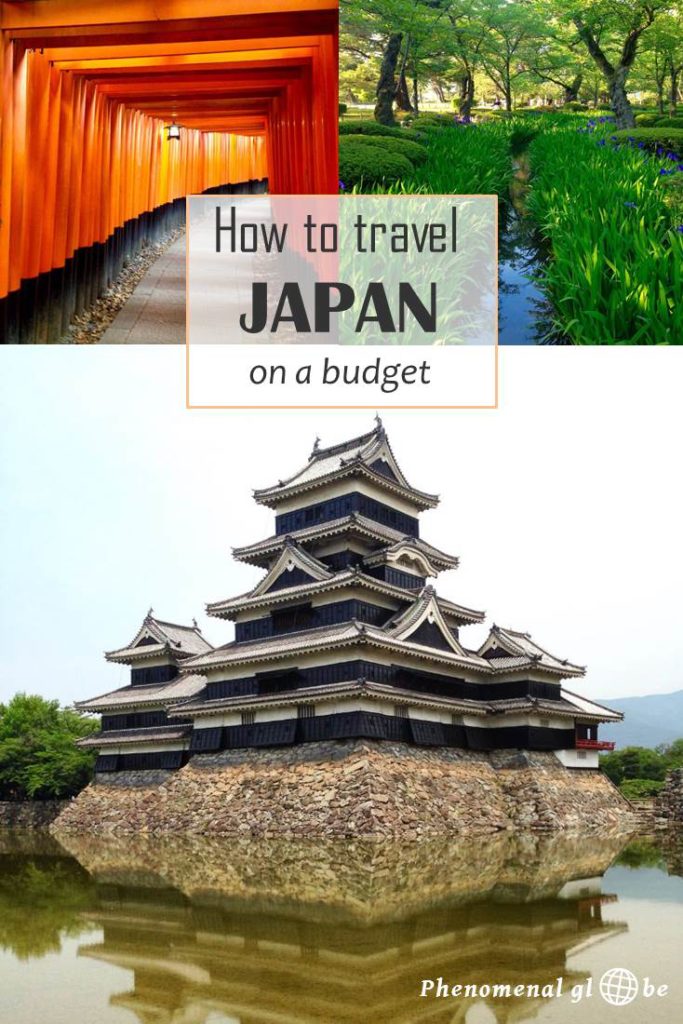
This post was updated in July 2021.
Laura Velasquez
Thursday 11th of October 2018
Thank you for all that information, is very useful. I have a question: I will be going by myself but I don't have a driver license. Do you think is possible to move entirely by public transport? Thank you,
Saturday 13th of October 2018
Thank you for reading:-) To answer your question, yes, it's very possible to travel entirely by public transport. The most 'difficult' place to navigate without a car is Hokkaido but there are trains and buses there as well so you shouldn't have any issues. We also just traveled by public transport on Honshu and it was very easy to do so. Have a great trip!
Sunday 7th of October 2018
Interesting reading your blog! I'm arriving in Manila October 26, the day before my birthday. Then on 27 planning on arriving in Tokyo so looking at cost effective accommodation for myself. Could you recommend anything?
Thanks for reading:-) Congrats on your birthday! We stayed at a lovely Airbnb in Tokyo, you can find the place here: https://www.airbnb.nl/rooms/8933904. If you have never stayed with Airbnb before you can get a discount with this link: https://www.airbnb.nl/c/leschbach?currency=EUR. Enjoy your trip!
Sunday 5th of August 2018
Hi Lotte, Just read through all your posts on Hokkaido, as hubby and I are heading over there for 2 weeks in October. You are a treasure trove of useful info, so already a BIG thanx! We want to start with Daisetsuzan Nat.Park and I was wondering about three things: 1. Is it too far to drive on the first day after we pick up the rental car from the New Chitose airport? 2. How many nights of accomodation to book to have a nice hiking time around the park? 3. Which base to choose: Sounkyo, Tokachi-dake or Adahidake Onsen? Any advice? Best wishes from sunny Poland! Gosia
Thursday 9th of August 2018
Hello Gosia,
Thank you for reading my blog and very exciting you'll be visiting Hokkaido in October! I'm not sure about the weather in that month but I think it can already be rather cold and perhaps there will be snow on the mountains, so be prepared and bring warm clothes! About your questions:
1. That depends on the time you land. If you arrive in the morning it could be done, but you would have to drive on the toll highways and may end up driving until darkness (I'm not sure what time it gets dark in October, be sure to check that before your trip;-) 2. We only did 1 short hike because there was still a lot of snow on the mountain and all the hiking trails were still closed. It's very possible there is snow on the trails in October so I find it a little bit difficult to answer this question... If you arrive late in the evening I would stay 2 nights so you have one full day plus, depending on your next destination, the next morning to go hiking. But again, trails may already be closed... 3. Adahidake Onsen is tiny (basically only hotels), Sounkyo is a bit bigger and has several restaurants so perhaps that would be a better base. I haven't been to Tokachi-dake so I don't know if that would be a suitable place to base yourself, sorry!
I hope this helps! Enjoy your trip and feel free to ask any other questions you may have:-) Lotte
Friday 9th of March 2018
Hello! Is ¥60,000 sufficient for 5 days daily budget for 1 person excluding the airfare and accommodation? Thanks!
Saturday 10th of March 2018
Hey Berna, well it always depends on your travel style. Do you plan to buy a rail-pass? Will you join a tours? How much do you plan to spend on food (Wagyu beef everyday may be delicious but will leave a serious dent in your budget;-). In general I would say ¥60,000 should definitely be enough, but it depends on your plans. Enjoy your trip! Lotte
Saturday 3rd of March 2018
Thanks for the info. Be heading to Tokyo today and looking forward to it. Gonna read some other posts of you as well!
Hi Evelyn, you are most welcome, have a great time in Tokyo!
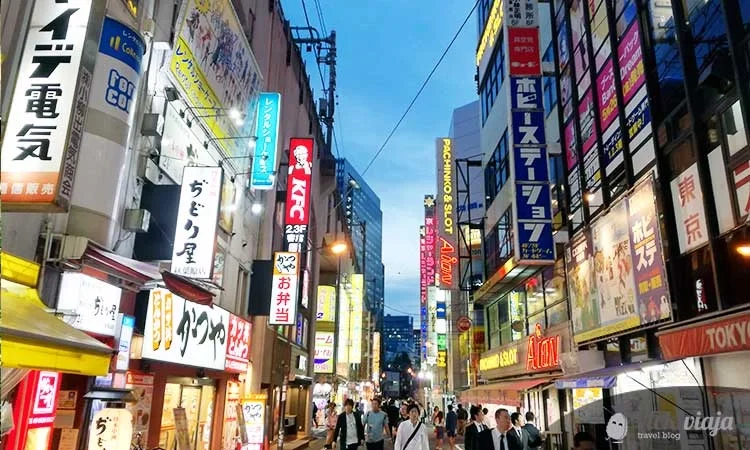
Home » Topics » Budget Travel » 1 Month Japan Cost – How to travel Japan on a Budget for under $ 1,200
1 Month Japan Cost – How to travel Japan on a Budget for under $ 1,200
Anyone who has ever been to Japan knows that traveling in Japan is anything but cheap. So often, I have heard from people that they’d love to visit Japan but just don’t think it’s affordable for them to go. Those who book a standard travel tour in an agency easily pay € 2,000 – € 3,000 for two weeks in the country.
I have often heard from traveling friends and acquaintances something along the lines of “ Japan is my absolute dream, but I just can’t afford a trip to Japan “. But how much does a trip to Japan really cost ?
The truth is, traveling to Japan on a Budget is actually not that difficult if you keep a few simple things in mind. In order to show you how easy it is, we want to share our 1 month Japan cost with you in this article. (Yes, we kept a precise account!)
Honestly, we really didn’t miss out on anything during our trip to Japan. We went to restaurants, had a beer in the evening, and admired all kinds of attractions. Here, I want to show you how you can do the same without breaking the bank.

What to find out in this post
- 1 Average travel costs in Japan per day
- 2 Travel Cost Calculator for Japan
- 3 Our Japan Travel Cost (27 Days)
- 4 Average Japan Cost per Day (27 Days)
- 5 Our Daily Japan Budget per Day per City
- 6 Japan Prices – What costs what
- 7 How to Travel Japan on a Budget
- 8 Money and Currency in Japan
- 9.1 Save money when flying to Japan
- 9.2 JR Pass
- 9.3 Day Passes
- 9.5 Hitchhiking
- 10.1 Convenience Stores
- 10.2 Affordable Restaurants
- 10.3 Avoid fresh fruit
- 10.4 Cooking
- 12.1 Temple Pass
- 13.1 Booking in advance
- 13.2 Capsule Hotels and Dorms
- 13.3 Couchsurfing
- 14.1 Alcohol
- 14.2 Sim Card
- 15.1 Well-planned is half-saved
- 15.2 About the AuthorVicki
Average travel costs in Japan per day
Travel cost calculator for japan.
The average traveler in Japan spends about € 130 ($ 138) per day . If you are a backpacker or on a small budget, you usually spend € 60 ($ 64) per day . Those traveling in more luxury will pay around € 320 ($ 340) per day .
We even managed to stay under 40 € ($ 47) per day on our trip. Later in this article, I will tell you step by step how we did it.
Our Japan Travel Cost (27 Days)
Total: 995.22 €/ $ 1.103.37 per Person
Author’s note: Of course, all listed expenses were made in the local currency (yen). The Japan prices are listed in Euros and USD only for better understanding. Any discrepancies are caused by rounding.
All costs are per person.
Average Japan Cost per Day (27 Days)
Our daily japan budget per day per city, japan prices – what costs what.
- Budget accommodation (Private double room for 2): approx. $ 60 – 120 (50 – 100 €) per night
- Budget accommodation bed in a hostel: from $ 19 (16 €) per night
- Lunch cheap restaurant (menu): from $ 6 (5 €)
- Lunch: Sushi Menu: ca. $ 12 (11 €)
- Dinner at a cheap restaurant: approx. $ 7 – 12 (6 – 10 €)
- Dinner for 2 in a good restaurant: about $ 45 – 60 (40 – 50 €)
- Dinner for 2 in an upscale restaurant: approx. $ 120 – 360 (100 – 300 €)
- 1.5 liters of water in the supermarket: approx. $ 1.20 (1 €)
- Bottle of wine in the convenience store: approx. $ 4 – 5 (3.5 – 5 €).
- 0.5 l bottle of local beer in the restaurant: approx. $ 4 – 4 (3.50 – 5 €)
- 0.5 l bottle of local beer in the supermarket: approx. $ 3 (2.50 €).
- A bowl of ramen: $ 7 – 12 (6 – 10 €)
How to Travel Japan on a Budget
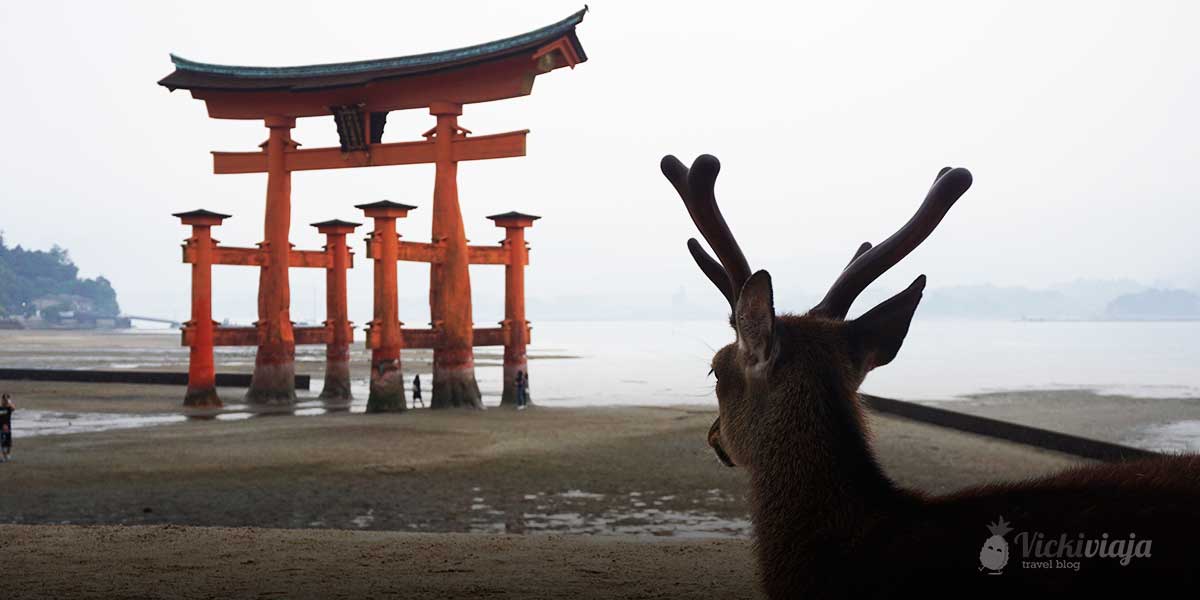
Ugh. That was a lot of numbers. Now you surely want to know how we managed to spend so little money. Here is a small summary.
Money and Currency in Japan
In Japan, you pay with the so-called Yen (¥). One Dollar is currently equivalent to about 150 Yen. Depending on where you exchange your money, you will get a similar or worse exchange rate. It is usually advisable to exchange only a small amount at first and to change your money on-site (e.g., at the airport). Be sure to check the exchange rate.
It may be worthwhile to compare the exchange rate locally before deciding on a place to exchange. First of all, only exchange as much money as you actually spend. This way, you will avoid losing too much money by exchanging currencies.
Also, when choosing a credit card, make sure that there are no or very low withdrawal fees when you withdraw money from abroad. You may also be charged exchange fees if you pay with your credit card in a foreign currency. Before you leave, get advice on which credit card is best for your trip.
Japan Transport on a Budget
Transport costs make up about 42 % of our whole costs in Japan. Quite a lot, right? It can be very difficult to keep your transportation costs as low as possible because they are just incredibly expensive in Japan. Here are a few tips on how you can still save a few Bucks transportation costs.
Save money when flying to Japan
In general, you should expect the average cost of your Japan flight to be around $ 800 for a round-trip flight to Japan from the US and $ 700 from (Central) Europe.
For our flight to Japan, we paid just under € 250 per person (outbound only). Since travel is usually a big part of your travel costs, it is especially important to hope for a good price when booking. Although there is always a little bit of luck involved in finding a good flight, there are also some tricks that can help you save money.
Since I specialized in airline management in my studies, I know a few tricks of the airlines and can always find the best flight. In my low-cost flight guide, I pass on some of the most important tips to you. If you don’t feel like reading the whole guide, here is a short version:
- Start comparing airfares a few weeks (preferably several months) before departure.
- Always delete cookies or search from an incognito window
- The more flexible you are, the better chance you have of finding good flights.
- Compare different days, airports, and flight times
- Direct flights are usually more expensive
- Use flight comparison sites like Skyscanner to find the best flights
- Set a price alert to notify you when prices change
Most travelers in Japan choose the JR Pass to get from A to B in Japan. With this pass, you can use all means of transportation from JR free of charge for the selected days.
Make sure to check beforehand which routes are covered by JR. In Tokyo, in particular, many routes are covered by other companies and therefore have to be paid for additionally. The best is to plan your Japan itinerary ahead of time to see whether the JR pass is worth it or not .
More information on the JR Pass can be found here .
Within big cities like Tokyo, Osaka, or Kyoto, it is worth buying a day or metro pass. Especially if you want to see a lot in a short time and travel a lot by public transport, buying a Metropass usually pays off.
Examples are the Icoca Card (for Osaka and Kyoto) or the Tokyo Metro Pass .
Even if you have a JR Pass, public transportation within the cities is not always included. Especially in Tokyo, many routes are covered by other companies, and therefore you have to pay extra. Here, a Suica-Card is a good idea, with which you can pay for all train companies. Simply load money at the machine in each metro station, and off you go. This saves a lot of time because you don’t have to buy a new ticket every time. You can purchase the Suica card at Tokyo Station.
Buses in Japan are often the cheaper alternative to expensive train rides. Many routes are covered by buses, and the buses are mostly of very good quality. Almost all buses have a toilet on board, and there are stops at service stations every 2 hours.
Willer Bus Pass
In addition to the JR Pass for trains, foreigners can also buy a Willer Bus Pass before arriving. The principle is similar. You can choose a certain number of days on which you can use the Willer buses. Here the days are calculated based on the trips you take. That means days do not have to be contiguous.
Although we first decided on the Willer Bus Pass, we canceled it on-site because we had to cancel a planned day tour due to the bad weather and found that a route we wanted to take was not covered by our pass. Therefore, it was ultimately cheaper for us to book our buses separately. But it all depends on your chosen route.
Hitchhiking

Another option to save real money is hitchhiking. Japan is considered one of the safest countries in the world, and the people of Japan are incredibly friendly. If you have enough time, you should definitely try it.
We hitchhiked almost 400 km during our trip to Japan, and it was a great experience. If we had had more time, we would definitely have hitchhiked further distances.

It actually sounds quite obvious, doesn’t it? The more you walk by yourself, the fewer transport costs you have to pay. You can save a lot of money, especially in cities. During our time in Tokyo and Osaka, we walked around 20 km every day. If the next destination is only 3 metro stations away, it can be very worthwhile to simply choose to walk.
Japan Food on a Budget

First of all, eating in Japan is not nearly as expensive as many blogs say. We were pleasantly surprised, as we had set our budget for around € 5 per meal per person. There are many ways to save a lot of money on food while traveling in Japan.
Convenience Stores
It’s hard to walk around Japan’s cities without passing by a 7/11 and Co. (and this can be taken literally). Many affordable dishes are offered here.
For breakfast, there are different types of pastries and sandwiches. You can even find fruit (Unfortunately, fruit in Japan seems to be priceless. Only bananas fit in our budget. and watermelons for € 20 apiece are not uncommon)
For lunch and dinner, you can find all kinds of dishes here. Simply slide it into the microwave when paying, and you’re done. – Backpacker Heaven.
Affordable Restaurants
If you’ve had enough of convenience stores and microwaves, you can also eat at one of the many affordable restaurant chains. You can usually find the prices displayed outside. Many restaurants display plastic dishes in the shop windows so that you know what you are ordering. But many also have English menu cards.
You can find dishes starting at about $ 6/5 €. There are usually a lot of people in suits looking for a quick lunch during their lunch break. The quality and freshness of the dishes differ from restaurant to restaurant but generally correspond to our Western standards.
Avoid fresh fruit
I love fruits and fresh vegetables. However, I recommend you give them a wide berth in Japan. Except for a banana or an occasional apple, we did not dare to eat the fruit in Japan. Unfortunately, the prejudice that fruit is hardly affordable in Japan is true. Watermelons for 20 € are not uncommon here. And other fruits and vegetables can also tear a big hole in your budget.
If you have booked accommodation with access to a kitchen, it may be worth making use of it. Don’t worry, you don’t have to miss out on the delicious Japanese food . But if you already replace just one meal in a restaurant with a homemade meal, you can really save money.
Of course, you can use local ingredients and be inspired by the selection of Japanese supermarkets. If you choose Couchsurfing as we did, your host will be happy to have a delicious meal cooked by you.
Staying hydrated while traveling is important. Saving money for water in Japan is very easy, though. The magic word is tap water. The tap water throughout the country is very clean and has drinking water quality. So just fill up the bottle before leaving the house, and you’re done. Since drinking water in Japan is not exactly cheap, tap water is a real alternative that saves you a lot of money.
Entrance & Activities

Saving money is probably the most difficult thing when it comes to admission costs. Many attractions offer student or group discounts. In the Edo Museum, we even received a couple-discount. Otherwise, you can only check blogs you trust (maybe this one? *blink blink*) to see if the attraction is really worth the entrance fee. (Because a few times it was clearly not). Another option is to check the attractions you might want to see and see what other travelers are saying.
Temple Pass
There is another way to save on entrance fees and activities in some places in Japan: tourist passes. With the purchase of such a tourist pass, you get free access to the attractions included in the pass. This way, you can save a lot of money compared to buying individual tickets.
Such passes are, therefore, especially worthwhile in places where you want to see several sights, such as the Osaka Amazing Pass .
Japan Accommodation on a Budget
Booking in advance.
We Germans are known for planning everything in advance and being super organized. My way of traveling is usually completely different. I like to travel spontaneously and decide on the spot where to go, where to sleep, and how long I stay.
In Japan, it was a bit different. Already two months before departure, we set up a (worst case) budget (approx. 1,200 €) and collected information about all the places we wanted to visit during our trip to Japan. We compared prices for various types of transport, accommodation, and activities and summarized everything in an Excel table.
Before we started, we had a detailed plan with all our routes, accommodations, and prices. So we weren’t as flexible anymore, but we were able to save a lot of money. And somehow, it is nice to travel and to know exactly what to expect in the next place.
We almost exclusively use Booking.com to book accommodation. It is super easy to use, and thanks to the many reviews, you usually know what to expect. You can find accommodation for all types of Budgets.
Check accommodation in Japan on Booking.com
Capsule Hotels and Dorms
It doesn’t always have to be such “extreme” possibilities as Couchsurfing (see next point). In Japan, you can save money by choosing a classic dormitory in a hostel instead of a private (single) room. Since you share your room with other travelers, you usually pay only a fraction of what you would pay for a private room.
Such a bed in a dormitory also gives you the great opportunity to get in touch with other travelers from all over the world. Especially for solo travelers, this is usually a great advantage.
Another option – and a real experience in Japan – is the so-called capsule hotels. Maybe you’ve seen such a capsule on TV or social media. As the name suggests, instead of renting a whole room, you rent a small capsule to sleep in. The concept is similar to that of a dorm room. However, the capsule usually offers you a bit more privacy than a conventional single bed. This is because you are shielded from the other guests by walls.
Couchsurfing

It’s time to Couchsurf. Couchsurfing is not quite as popular here as it is at home in Europe. But you can find Couchsurfers in many cities. Whereas in Europe, there are more younger people using the platform, in Japan, there are also older Couchsurfers or even whole families.
We had a little bit of everything. We slept in student apartments on the floor or with families in our own room, lived for four days in the unique Couchsurfing house in Kyoto (an entire house just for Couchsurfers – such a fun experience), and even had an entire flat for us in Hiroshima.
So if you look at the average price of our accommodations per night and consider that we spent 21 nights with Couchsurfers and friends, you can calculate that we might have saved about € 706.02 for accommodations.
But please don’t see Couchsurfing just as a way of saving money. Every day, I get requests from people who are only just looking for free accommodation and don’t even take the time to read my profile.
Couchsurfing offers much more than the opportunity to meet new people from other cultures, exchange ideas with them, and learn from them. Couchsurfing gave us the opportunity to get a much deeper insight into Japanese culture and to get to know different areas. (Student life, family life, life as an expat living in Japan, etc.) It was an incredible experience that you cannot book in any travel agency. And I can only recommend this to everyone.
Update: Unfortunately, Couchsurfing in the post-pandemic world is not as easy to use as it used to be. In the meantime, the site has evolved into a platform that you have to pay to use. Accordingly, there are far fewer people Couchsurfing. It may still be worthwhile to see if there are still interested hosts in Japan.
Random Expenses in Japan
Alcohol in Japan is much more expensive than we know in Europe. So if you want to go out for a drink, expect to spend a little more.
It becomes cheaper if you buy a bottle of sake or beer in the supermarket and have a drink with your hosts or in the park. But if you follow all the tips and tricks to save money during your trip to Japan, you can treat yourself to a drink or two with a clear conscience. 😉 (Sake and Japanese plum wine (mixed with mineral water) should definitely be tried)
Anyone who is traveling naturally wants to stay mobile. But it is already clear at the airport that a SIM card and mobile internet are not for free. Of course, it is practically always available, no matter where you are. But is it really necessary to buy a sim card in Japan?
Our tip: In our experience, a Japanese SIM card is not necessary. Almost every convenience store offers free wifi for up to two hours a day. You can also find wifi in most accommodations, in many metro stations, and in enough restaurants and cafes. So there is always a way to google something, check WhatsApp or similar in about five minutes. The easiest way to connect to free wifi is the Japan Connected-free Wi-Fi app .
If you want to have a GPS map to get your bearings, just try maps.me. This app works similarly to Google Maps but is completely offline. Super practical. And on this trip, this app saved us several times from getting lost.
We didn’t buy a SIM card and didn’t miss it. But if you don’t want to rely on public wifi, I recommend using pocket wifi during your trip to Japan (e.g., this one ).
More One Month in Japan Budget tips
Your travel time
Like most tourist places, there is a high and low season in Japan. If you travel in the high season, you have to expect higher prices. Especially during the cherry blossom season ( Sakura ) in spring, you will pay a lot more for accommodation and activities than in other seasons.
The same is true for a visit during the Christmas season as well as the ski holiday season. Since it gets very hot in Japan in the summer, surprisingly, the months of July and August are considered more affordable.
Well-planned is half-saved
If you really want to save money, you should plan a good bit before your trip. Accommodations and flights are usually cheaper if you book them in advance. The Japan Rail Pass is also cheaper if you book it before you arrive in the country.
In addition, you have more time in advance to compare the prices of different providers and generally the different offers in the country.

Interested in Japan?

About the Author Vicki
Hi, we are Vicki & Eduardo, an international travel couple on a mission to help you save money for priceless travel experience. Follow us through the miracles of this world and you will be rewarded with a bunch of practical travel tips.
17 thoughts on 1 Month Japan Cost – How to travel Japan on a Budget for under $ 1,200
Oh this is super useful! Japan is a definite bucket list destination for me and if I can do it on a budget, even better!
Japan is just wonderful. The people are so kind there. I’m sure you will love it.
I love these kind of posts!! Budget travel is something I need to work on and this post was so helpful thanks!! 🙂 Saving it for when I go to Japan!
I’m always happy if I can help people saving money for traveling 🙂
I am dreaming about Japan butt pff way too much expensive!! It worths the effort though ?
It doesn’t have to be that expensive as you can see 😉
I’ve always wanted to visit Japan but have always been put off by the cost – this had been really helpful in opening my eyes, it certainly looks achievable with a bit of planning! Thanks for sharing.
Thank you. I hope you can go. It’s such an amazing country
I love your post, I love how you have broken the expenses down, by destination as well. Really helpful for a budget traveller like me. My theory is the more you budget the longer you can travel. Thanks for sharing
I totally agree. If I wasn’t on a tight budget all the time I would be back home already. 🙂
This is so funny that I’m reading this because I just told someone yesterday that I don’t want to visit Japan because it’s too expensive ?. These are awesome tips and I’m definitely saving this post for if/when I go. So good to know about the buses because I know trains are insanely expensive there! Thanks for all of the info!
Awesome post… Definitely helpful.
I’m looking to spend 4 days in Akihabara Tokyo this year, And I was wandering if it’s possible for me to go for $1200 counting the flight?? $1500 is the max that I can spend.
I live in Houston Texas USA
I just checked and yes, it is totally possible to go for $1200. For example, if you’d go from the 16th April to the 20th April, there are flights for $722 round trip from Houston to Tokyo. To find it, just scroll up to the section on this posts and click on the Momondo-Link under the Text. (or I guess this link will work as well: http://www.awin1.com/awclick.php?gid=309328&mid=7198&awinaffid=450159&linkid=627845&clickref= ) The average spendings from us per day (with breakfast at 7-11, and cheap lunch & dinner) are $33,64 per day, which is $134,56 for 4 days. The accommodation, in general, is $40,06 per night (thus $160,42 for 4 days), but you might be able to find something even cheaper or maybe a little more expensive here: http://www.booking.com/searchresults.en.html?district=2040&aid=1341044&no_rooms=1&group_adults=1
In Total that would be $1016,08.
So, you even have some money left for different things to do or souvenirs. 😉 I hope this helps you! Please let me know!
Hey Vicki! Did you apply for Couchsurfing in advance also? Im travelling Japan for 1 month, 20 days on Okinawa and 10 days from kagoshima -> Tokyo. We booked all of our stay in Okinawa, and Tokyo, but nothing else.. Love your post, It’s very helpfull! Best regards, Sofie
thank you so much for your comment! Yes, we applied around 1 month beforehand, because Japanese are usually pretty organized and like to know whether someone is coming in advance. 🙂 We didn’t have time to see Okinawa during our stay in Japan, but I’ve heard it’s super beautiful. Enjoy!
Hi! Thank you for this post, it was very useful, we are now in Cambodia and then in a few weeks going to Japan so I’m a bit afraid of the expenses since here is so cheap! My name is also Vicky, my husband is german and we meet also through couchsurfing in Barcelona six years ago haha what are the odds?!? 🙂
That’s truly crazy how much we have in common! Would love to meet you guys one day 😀 We did it exactly the other way around. We went to Japan first and afterwards to Cambodia, so we didn’t get used to cheap prices before going to Japan haha
Comments are closed.
- Media & Industry
- Meetings & Events
- Select Language 简体中文 繁體中文(香港) 繁體中文(臺灣) India (English) Bahasa Indonesia 한국어 ภาษาไทย Tiếng Việt Singapore (English) Philippines (English) Malaysia (English) Australia/New Zealand (English) Français Deutsch Italiano Español United Kingdom (English) Nordic countries(English) Canada (English) Canada (Français) United States (English) Mexico (español) Português العربية Japan(日本語) Global (English)
- India (English)
- Bahasa Indonesia
- Singapore (English)
- Philippines (English)
- Malaysia (English)
- Australia/New Zealand (English)
- United Kingdom (English)
- Nordic countries(English)
- Canada (English)
- Canada (Français)
- United States (English)
- Mexico (español)
- Global (English)
- Fujiyoshida
- Shimonoseki
- Ishigaki Island
- Miyako Island
- Kerama Island
- Tokyo Island
- Koka & Shigaraki
- Hida Takayama
- Ginza, Nihonbashi
- Beppu & Yufuin (Onsen)
- Ginzan Onsen
- Nagasaki Islands

- Kumano Kodo
- Shikoku Karst
- Amami Oshima
- Hachimantai
- Omihachiman
- Aizuwakamatsu

- Diving in Japan
- Skiing in Japan
- Seasonal Flowers in Japan
- Sustainable Outdoors
- Off the Beaten Track in Japan
- Scenic Spots
- World Heritage
- Home Stays & Farm Stays

- Japanese Gardens
- Japanese Crafts
- Temple Stays
- Heritage Stays
- Festivals and Events
- Theater in Japan
- Japanese Tea Ceremony
- Cultural Experiences in Japan
- Culture in Japan

- Local Cuisine Eastern Japan
- Local Cuisine Western Japan
- Local Street Food
- Japan's Local Ekiben
- Japanese Whisky
- Vegetarian and Vegan Guide
- Sushi in Japan Guide
- Japanese Sake Breweries

- Art Museums
- Architecture
- Performing Arts
- Art Festivals
- Japanese Anime and Comics
- Japanese Ceramics
- Local Crafts

- Scenic Night Views
- Natural Wonders
- Theme Parks
- Samurai & Ninja
- Iconic Architecture

- Wellness Travel in Japan
- Japanese Ryokan Guide
- A Guide to Stargazing in Japan
- Relaxation in Japan
- Forest Bathing (Shinrin-yoku)

- Experiences in Japan
- Enjoy my Japan
- National Parks
- Japan's Local Treasures
- Japan Heritage
- Snow Like No Other
- Wonder Around Japan

- Visa Information
- Getting to Japan
- Airport Access
- COVID-19: Practical Information for Traveling to Japan
- Anime Tourism
- Countryside Stays
- Accessible Tourism
- Hokkaido Great Outdoors
- Scenic World Heritage in Tohoku
- Shikoku’s Nature and Traditions
- Southern Kyushu by Rail

- Traveling by Rail
- How to Travel by Train and Bus
- JR Rail Passes
- Scenic Railways
- Renting a Car
- Sustainable Travel in Japan
- Travel Brochures
- Useful Apps
- Online Reservation Sites
- Eco-friendly Accommodation
- Luxury Accommodations
- Traveling With a Disability
- Hands-free Travel
- How to Book a Certified Tour Guide
- Volunteer Guides
- Tourist Information Center

- Japanese Manners
- Spring in Japan
- Summer in Japan
- Autumn in Japan
- Winter in Japan
- Cherry Blossom Forecast
- Autumn Leaves Forecast

- Japan Visitor Hotline
- Travel Insurance in Japan
- Japan Safe Travel Information
- Accessibility in Japan
- Vegetarian Guide
- Muslim Travelers
- Safety Tips

- JAPAN Monthly Web Magazine
- Arts & Cultures
- Nature & Outdoor
- Festivals & Events
- Insider Blog
- Things to do
- Local Guides
- Food & drink
- Traditional
- Hokuriku Shinetsu

My Favorites
${v.desc | trunc(25)}
Planning a Trip to Japan?
Share your travel photos with us by hashtagging your images with #visitjapanjp
GUIDE How to travel by train and bus in Japan
- Stories & Guides
- How to travel by train and bus in Japan
When traveling throughout Japan, most visitors use public transport, such as trains, the shinkansen (bullet train), and buses.
The convenience of trains in japan.
In major cities, trains come every few minutes, while a little more planning is required in rural areas as services can be more limited. Japan's trains are known for always being on schedule, making it easy to plan your trips down to the minute.
You can save time traveling with a prepaid rechargeable transportation card. While different railway companies issue different cards, you can use most of them across various services and cities throughout Japan. Suica and PASMO are some of the most commonly used IC Cards in the Kanto area. Among other cards used, there is ICOCA and TOICA, depending on the area. However, depending on the IC card, you may only be able to use it in certain areas and with certain forms of transportation.
Getting a card is simple. All you have to do is purchase it from a ticket machine or counter that you will be able to find at most train stations. The deposit fee for most cards is 500 yen, and you can get your money back if you return the card to the ticket counter at the end of your stay. You can also purchase Welcome Suica, a deposit-free card for tourists at certain places in the Kanto area, which is valid for up to 28 days.
You can add money to your card at almost all train stations in Japan at the automatic ticket machines. You just need to insert your card into the machine, follow the instructions, select and insert the desired amount of money you'd like to add, and your card will come back out charged and ready to go. Another option is to get a mobile IC card (PASMO or Suica) on your smartphone and charge it using your phone's wallet. However, be aware that they may not work on all smartphones.
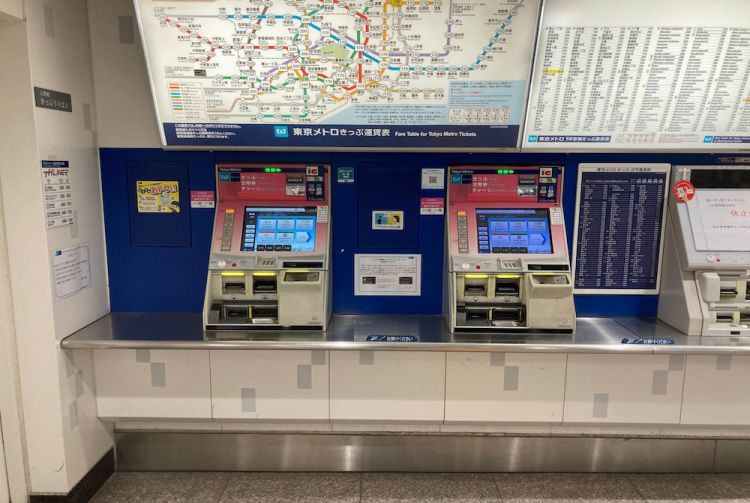
Some areas of Japan do not accept IC cards, as well as certain forms of transport, such as highway buses. Keep an eye out for the IC logo to see if you can use your card or not. A bonus of IC cards is that you can also use them to pay for items from many vending machines, stores, and lockers in train stations.
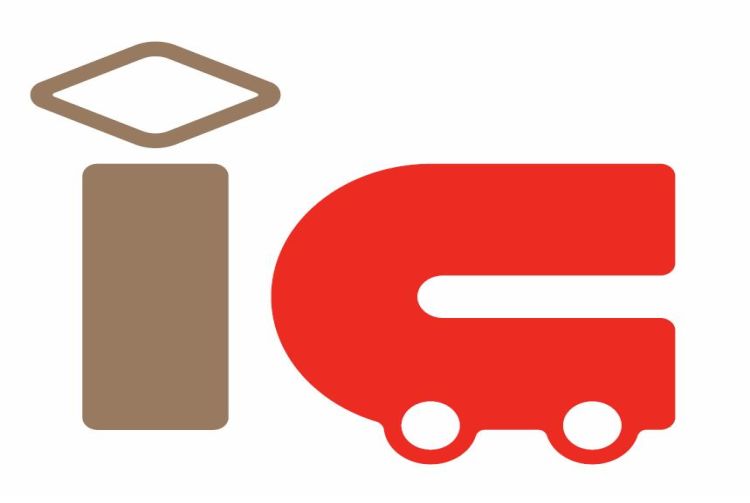
How to buy train tickets
As easy as IC cards are, tickets are also pretty straightforward. Even if you don't have an IC card, you can still buy tickets manually from machines at the station. The fares will differ depending on your destination, so be sure to check the fare chart at the station. Find out where you're going and how much it will cost, and buy a ticket accordingly.
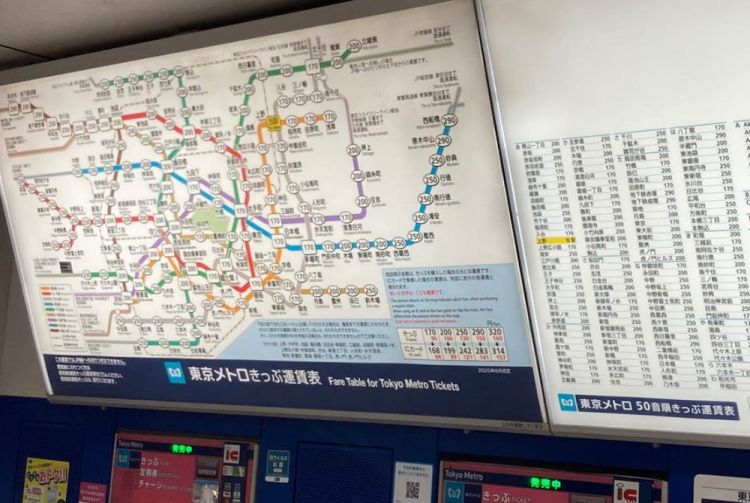
Be sure to look out for ticket deals, as one-day or weekend unlimited ride tickets are available from time to time.
How to take the train
Once you have your IC card or ticket, you'll need to know how to use it.
If you are using an IC card, tap it on the ticket gate to enter, and do the same again when you leave the gate at your destination. There may be the rare occasion when you tap your card and the gate won't open. This is likely because the reader either missed your card or your card funds are insufficient.
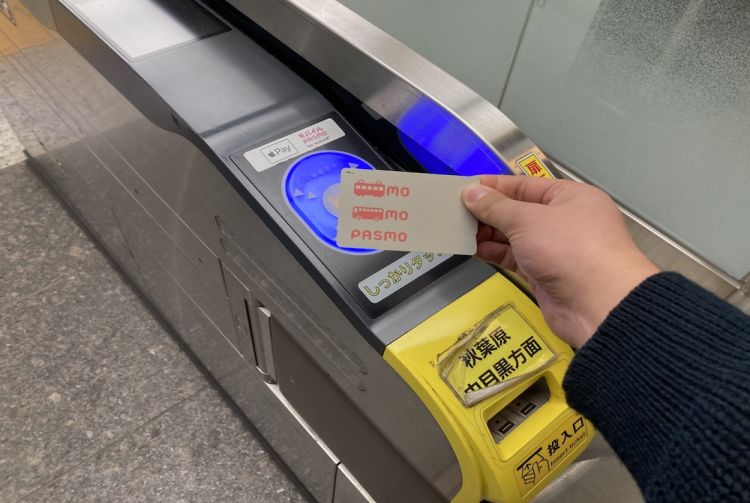
PASMO® Registered in JPO.
With a paper ticket, insert it in the slot at the ticket gate, and it will come out at the other side. Be sure to grab and hold onto it because you'll need to do this again to exit the ticket gate. However, the machine will collect your ticket this time around. You can take your ticket to a fare adjustment machine inside the ticket gate if you need to adjust the fare.
If you have any problems, you can always go to a staffed ticket gate, where an employee will be able to help you with any issues you have.
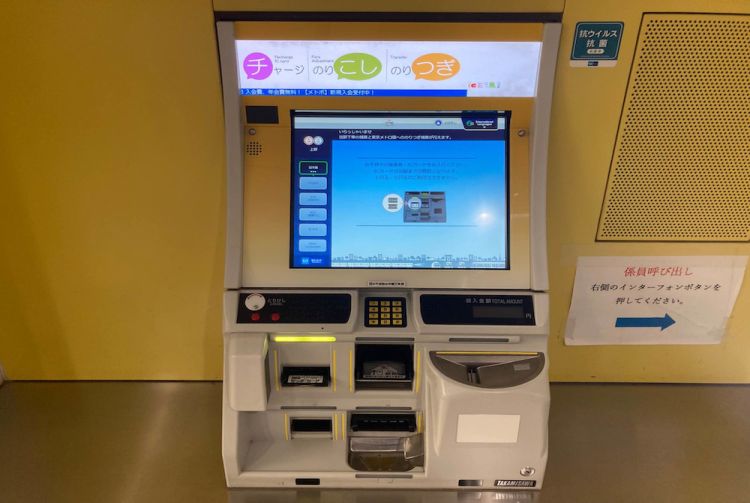
How to take the bus
You can check bus schedules with the apps mentioned above or read the timetable at the bus stops. The timetables show weekdays and weekends/holidays times. They will be written in 24-hour time with the hours on the left and minutes on the right.
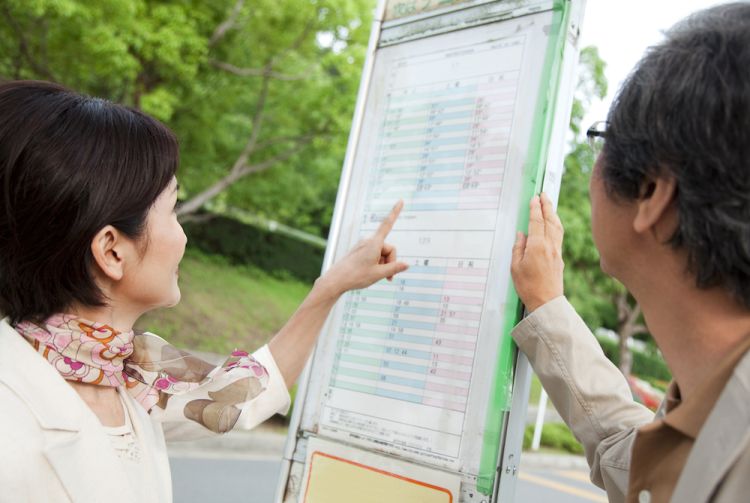
example of a timetable
There are two types of buses in Japan. For one of them, you will enter from the back, and it is a numbered ticket system instead of a flat rate system. You will exit from the front and pay your fare at the front that will differ depending on where you get on and off. On the other type of bus, you will enter from the front and pay a flat rate when you get on.
Not all buses accept IC cards, so be sure to check for the IC symbol at the bus stop or at the entrance of the bus when getting on. If there is no IC symbol, you will need to pay in cash. Luckily, most buses have easy-to-use exchange machines. If you plan on paying in cash, take a numbered ticket from the box when you get on the bus.(if it is a non-flat rate fare system). When you are approaching your stop, check the screen at the front of the bus and find your number along with the corresponding fare. As you get off the bus, put the exact fare in the machine at the front of the bus. If you put in more than your exact fare, you will not get any change back. However, if it is a flat rate system, when you get on at the front of the bus, even if you pay over, you will get change back in most cases.
In the case that you use your IC card, tap it once when you get on the bus, and tap it again when you get off the bus.
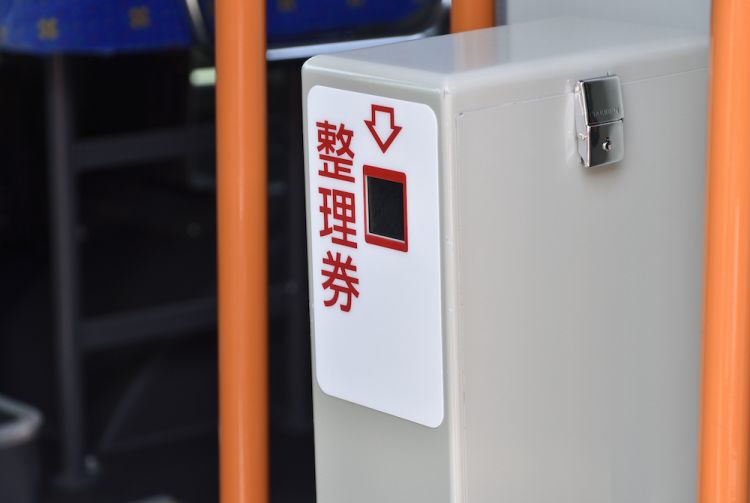
Take a numbered ticket from the box
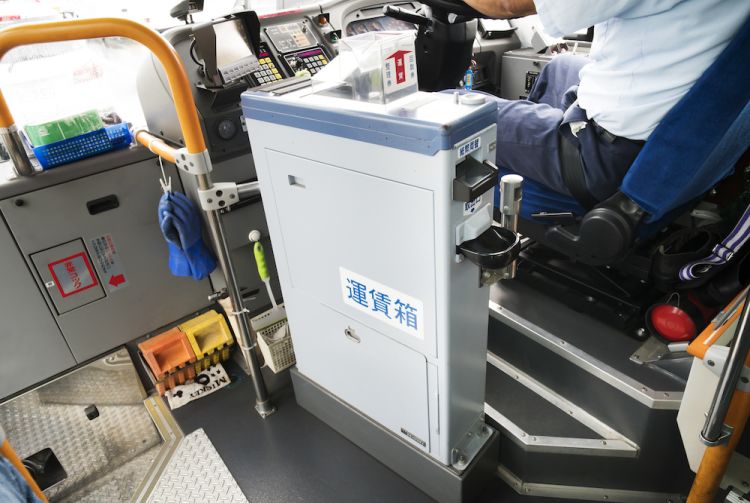
Put the fare in the machine or tap your IC card
Like anywhere in Japan, public transit is a place where you should exercise good manners.
One of the rules you should follow is that, if possible, refrain from talking on the phone while on the train. However, on a long-distance train such as the shinkansen, it is okay to use the corridor between cars for this. Other rules to follow include no smoking or vaping, taking your backpack off and carrying it by hand or putting it on the luggage rack so you don't bump into others, and giving your seat up in the priority seat area.
You'll often see certain cars that are reserved for women only during this morning rush hour.
Therefore, utilizing these manners shows respect in Japanese society and helps everything run more smoothly.
* The information on this page may be subject to change due to COVID-19.
- Story & Guide
Did this information help you?
out of found this information helpful.
Thank you for your feedback.
Recommended for you.
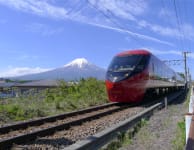
Please Choose Your Language
Browse the JNTO site in one of multiple languages
Japan Rail Pass or Train Tickets: what to choose when traveling in Japan?
- Published on : 31/05/2024
- by : Charley Zaragoza
- Add to favorites
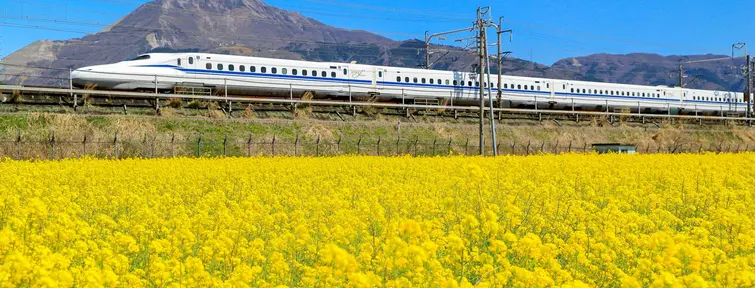
When traveling in Japan, if your itinerary takes you beyond Tokyo, for example into the Kansai (Kyoto & Osaka) region, a primordial question awaits: how to get around Japan and navigate between the cities and sights you have planned to see?
To get around in Japan, one of the best options available is to take the train. In order to board trains in Japan, you can choose between individual tickets and a Japan Rail Pass. Your decision should come down to the nature of your journey and your travel preferences . Both options come with their set of advantages and drawbacks.
If a wide range of train options and local exploration are your priorities, individual tickets might be the way to go.
If you're planning an extensive journey or value flexibility, the Japan Rail Pass offers unmatched convenience and cost-effectiveness.
Japan Rail Pass or Train Tickets: What is Right for You?
Whether you opt for building your own set of train journeys with individual train tickets or the comprehensive benefits of a Japan Rail Pass, we are here to help you ! Choose the option that aligns with your travel goals, and embark on a rail journey through the heart of Japan with confidence and ease!
Advantages of Train Tickets
Craft your dream trip to Japan!
Book just the trains you need!
Book regional passes too!
Ability to plan your itinerary in advance
With individual train tickets, you have the liberty to choose any available train to book , before leaving for Japan. This allows you to plan each leg of your itinerary in advance and start your dream trip with all your travel needs already taken care of ! This is especially useful during peak travel seasons such as Spring (sakura season), the Golden Week, Fall (momiji season), or New Year's. If you book your train directly in Japan at these times, you will most likely face a more restricted list of available options due to sold-out trains . Secure your itinerary by booking your train tickets online!
Cost-effective for short trips and local itineraries
If your travel plans are limited to a specific city or region, or going strictly along the Golden Route (Tokyo, Kyoto, Osaka & Hiroshima) without any day trips or excursions, purchasing individual train tickets may provide more savings than investing in a Japan Rail Pass. Make sure you add up the cost of each journey to make an informed decision!
Complementary with Regional Rail Passes
Even without multiple long-distance trips, train tickets are a great way to explore Japan in-depth, as they can easily get you to and from a specific region , where you can then look into the wide choice of available regional rail passes to travel unlimited on regional trains for a set amount of days. For example, if you are departing from Tokyo and plan on exploring the local treasures of the Kansai region, you can book individual train tickets to get to Kyoto or Osaka, and then take advantage of a 5-day Kansai Wide Area Pass to get around, before getting train tickets back to Tokyo!

Explore Japan by train with our available itineraries!
Here are some of our train itineraries available for online booking, from Tokyo to Fukuoka, as well as Kanazawa, Nagano, Kyoto or Hiroshima!

Train Tickets from Tokyo to Kyoto Train Tickets in Japan
Tokyo › Kyoto
- 06:00 / 21:24
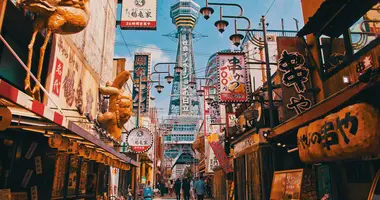
Train Tickets from Tokyo to Osaka Train Tickets in Japan
Tokyo › Osaka

Train Tickets from Tokyo to Hakone (Odawara) Train Tickets in Japan
Tokyo › Hakone
- 06:21 / 22:48
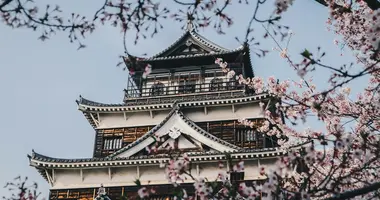
Train Tickets from Kyoto to Hiroshima Train Tickets in Japan
Kyoto › Hiroshima
- 06:55 / 22:44
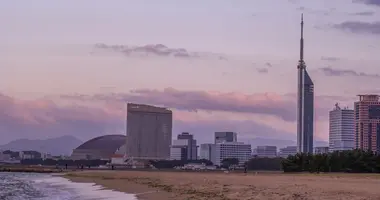
Train Tickets from Osaka to Fukuoka (Hakata) Train Tickets in Japan
Osaka ›
- 06:00 / 21:23

Train Tickets from Tokyo to Kanazawa Train Tickets in Japan
Tokyo › Kanazawa
- 06:16 / 21:04
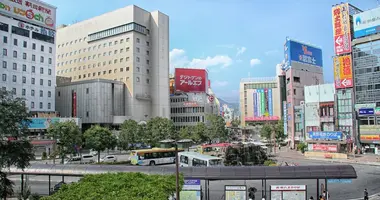
Train Tickets from Tokyo to Nagano Train Tickets in Japan
Tokyo › Nagano
- 06:16 / 22:08
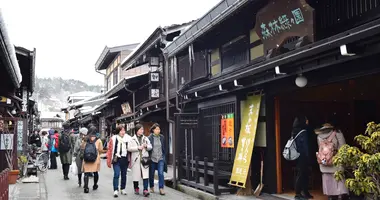
Train Tickets from Tokyo to Takayama Train Tickets in Japan
Tokyo › Takayama
- 06:00 / 18:30
Advantages of the Japan Rail Pass
Making travel rhyme with peace of mind!
The more you travel, the more you save!
Ride any JR train, anytime and anywhere in Japan!
Convenience, Flexibility and Ease of Use
The Japan Rail Pass completely eliminates the hassle of purchasing train tickets for each leg of your journey and having to reserve a seat for each train. It's a one-time purchase that includes all your travel needs, and that will make getting around Japan the smoothest experience. All you have to do is get to the station, hop on a train, get out, and explore ! Whether you have an itinerary set in stone and just want the flexibility of not booking a specific train ahead of time, or if you're more of an easygoing traveler who likes to decide everything at the last minute, the JR Pass offers unrivaled peace of mind .
Cost Savings for Extensive Travel
For those planning an action-packed itinerary across multiple cities and regions, the Japan Rail Pass proves to be cost-effective , often surpassing the value of individual tickets. Be sure to calculate the cost of each leg of your journey (don't forget to account for public transportation lines operated by JR too) and compare with the price of the different available JR Pass durations to see if it's right for you !
Wide Coverage and Transportation Options
With one ticket, you get access to over 20,000km of rail lines as well as some local public transportation options. Indeed, the JR Pass is not only meant to be used for the famous Shinkansen bullet train ! Many local JR lines, such as the JR Yamanote Line looping around Tokyo or the JR Osaka Loop Line, are included in the pass! Some buses are also operated by JR and thus available with the pass, and even some more unusual options such as JR ferries are included.
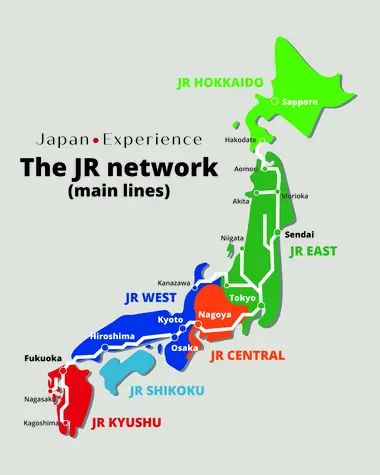
Get around Japan with a Japan Rail Pass!
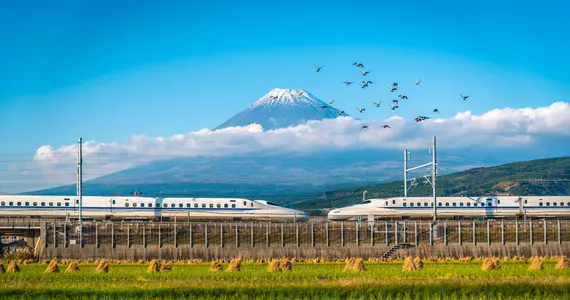
Japan Rail Pass National Discover all Rail Passes in Japan
- Included : Economic and simple, Unlimited travel
Latest Articles
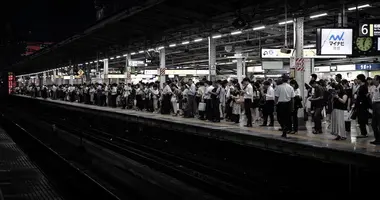
Golden Week Travel Advice
Japan will celebrate Golden Week from April 29 to May 6, 2024 , which comprises four national holidays: Showa Day on April 29, Constitutional Memorial Day on May 3

Midosuji Line Osaka: The key north-south subway route through central Osaka
The Midosuji Line is the oldest and one of the most important subway lines in Osaka, Japan.
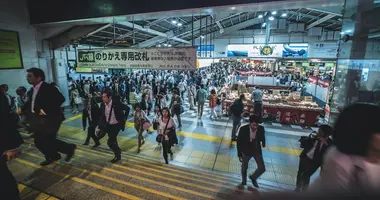
Train symbols in Japan: Understanding the complex naming and numbering schemes
Japan's extensive and efficient train network can be overwhelming for visitors at first glance.
All the themes of the city

Unique Trains in Japan

Japanese Stations

Getting Around Tokyo

Shinkansen Travel Tips

Itineraries for Japan
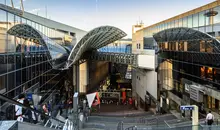
Getting Around Kyoto
Please select your country on the list below:
- Switzerland
- United Kingdom
- Other countries

Mindfully American
9 Extra Beautiful Starbucks Cafes Every Coffee Fan Should Visit
Posted: June 3, 2024 | Last updated: June 3, 2024

Are you a die-hard Starbucks fan? If so, you’re not alone; approximately 60 million people visit Starbucks coffee shops each week, lured by elegant, personalized drinks.
Starbucks’ coffee shop ambiance helps draw customers in, and these nine locations are especially noteworthy for their architecture and design.
Have you been lucky enough to visit any of these gorgeous Starbucks cafes?

1: Chicago Roastery in Illinois
At over 35,000 square feet, the Chicago Roastery is the world’s largest Starbucks Reserve. The fabulous location opened in November 2019 and offers guests an immersive coffee experience, with five floors of coffee bars, a mural paying homage to farmers, gift shops, and a roof deck.

2: Tokyo Roastery in Japan
The Tokyo Roastery is one of 35,000 Starbucks destinations around the globe. The unique location boasts captivating architecture like origami-style ceilings and “symphony pipes” that transport roasted coffee beans from the first floor to the third, where they are used to create flavorful beverages.

3: Seattle Roastery in Washington
Starbucks’ first Reserve Roastery is located in Seattle. The location opened to the public in 2014 and paved the way for six reserves worldwide. The site features a library with over 200 titles about coffee and delivers eight prepping methods for coffee that guests can watch.

4: Kyoto, Japan
Opened in June of 2017, the Starbucks in Kyoto Ninenzaka Yasaka Chaya is situated in a traditional Japanese-style home, offering guests a chance to immerse themselves in Japanese culture. Visitors can enjoy the beautiful lanterns, moss gardens, and lounges, where they must remove their shoes before entering.

5: Paris, France
In the midst of the City of Love, avid coffee sippers will find one of the fanciest Starbucks locations to date. The Boulevard des Capucines building dates back to the 17th century and features dark wooded architecture to compliment the coffee bar. It opened to the public in 2006.

6: Prado Norte, Mexico
This Starbucks in Prado Norte, Mexico City, is a stunning visitor destination. The storefront is inspired by Spanish architecture and features trimmed plants and rich blue murals ahead of its entrance.

7: Grand Turk, Turks and Caicos
Drowned in a pale pink exterior, the Starbucks in Turks and Caicos is reminiscent of the branch’s Pink Drink Refresher and the flamingos on the island. As the only franchise in the country, this Starbucks location provides coffee drinkers with a relaxing, peaceful experience as a respite from the heat.

8: Shanghai Roastery in China
Starbucks Reserve Roastery’s Shanghai location is among the liveliest on the list. Opening in 2017, the domed-shape exterior employs over 400 employees and is set on one of the most luxurious streets in China. Still not convinced? Coffee drinkers can also order nitrogen-infused tea drinks.

9: Seattle, Washington
The Pike Place Market in Washington is home to the first-ever Starbucks. The location opened over five decades ago in 1971 and is near a beautiful downtown Seattle waterfront. What else could you ask for?

From the Top
In the 1980s, New Yorker Howard Schultz visited Pike Place Market, took one sip of their coffee, and instantly knew the shop would see great success. Howard traveled to Italy and returned to Seattle, inspired by Italy’s coffee culture. Not long after, Starbucks expanded to Chicago and Canada.

Media Popularity
Seeing mass success with its expansion, Starbucks gained popularity in the 90s and the 2000s. The franchise serves more than 100 million coffee drinkers across over 70 markets on a daily basis.

Coffee Addiction
According to Reference.com, Starbucks regulars visit the coffee shop an average of six times per month. How do your Starbucks visits stack up to that number?

Seasonal Menus
Just like the seasons, Starbucks drinks change frequently. The coffee shop is known for its limited-time drinks and unique menu options. Some seasonal offerings include the Chocolate Java Mint Frappuccino and White Chocolate Macadamia Cream Cold Brew.

Secret Menu
“The Secret Menu” offers various drinks not listed on Starbucks’ original menu, such as the Twix Frappuccino and the White Chocolate Pink Drink.

Starbucks Lingo
Ordering at Starbucks for the first time can be daunting; there are hundreds of options and unique terminology to learn. Here’s a crash course: a short is eight ounces, a tall is 12 ounces, a grande is 16 ounces, and a venti is 20 ounces.

20 Things You Could Buy in 1960 for the Cost of a Starbucks Coffee
The cost of your morning Starbucks java may seem minimal, but in 1960, those dollars would have gone a long way. These are 20 things that $2.75 could have bought you in 1960.

25 British Foods Americans Are Missing Out On
From traditional meat pies to newer inventions, like Monster Munch, the United Kingdom is full of food-based treasures that Americans are missing out on. These are some foods you shouldn’t miss the next time you’re in England.
More for You
Stephen Hawking once gave a simple answer as to whether there was a God
'Big Bang Theory' Fans Congratulate Kaley Cuoco as She Announces Career Milestone
Ron DeSantis Speaks Out On Donald Trump's Voting Rights
18 Things That Will Happen if 70 Becomes the New Retirement Age in the US
“Crap, I can’t believe I forgot that” - When Larry cared ‘more about a $20 bet than the entire game’
The richest comedian in the world isn't Leno or Letterman, based on data. Here are the top 20.
We Asked Cardiologists Which Foods To Cut Out For Better Heart Health. Here’s What They Said
14 arrested in largest child predator sting in Mooresville police history
“It was the best part I ever got”: The Dark Knight Star Michael Caine Was Furious Over One of His Best Roles That Landed Him an Oscar Nomination
18 Things to Never Do in the Shower
Loyalty at work no longer pays — and it's employers who are to blame
It’s time to bring back the world’s greatest fighter jet – from the 1990s
Ukraine-Russia war – live: Kyiv fires US weapon inside Russia as Zelensky accuses China of ‘sabotage’
Marjorie Taylor Greene Reprimanded by Republican During Hearing
Military ready to turn on loudspeakers near border with N. Korea after suspension of 2018 inter-Korean pact
Using This 4-Word Phrase Instead of 'Thank You' Will Improve Work Relationships and Make You a Better Leader
Brent Spiner: Star Trek Flop With No Way Home Actor as Villain Was “a Message from the fans that they were done with us”
"The only guy in the history of basketball who can play every position" - When Elgin Baylor stated that LeBron James beat Michael Jordan in the GOAT debate
Costco shares huge news on membership fee increases amid rising inflation
Map reveals best places to live in the US if nuclear war breaks out

IMAGES
VIDEO
COMMENTS
Kyoto - Hiroshima: 10,500 Yen ( $70) Hiroshima - Osaka: 10,000 Yen ( $67) So if you were to replicate my Japan route exactly, you would end up spending $381 on rail tickets. It sounds like a lot of money but I do want to stress that the trains in Japan are some of the best in the world.
How much does it cost to travel to Japan? You should plan to spend around $119 (¥18,714) per day on your vacation in Japan. This is the average daily price based on the expenses of other visitors. Past travelers have spent, on average for one day: $29 (¥4,568) on meals ...
The average cost for one person to visit Japan for a week is $1,380-$2,771 ($197-$396 per day) Food, Travel, and Sightseeing: $48 to $99 per day for one person's daily expenses. Flights: $564 to $1,394 for economy. Lodging: $80 to $114 per night for one 2 or 3-star hotel room. or $86 to $105 per night for a 1-bed vacation rental
The pass allows unlimited travel on Japan Rail trains, including shinkansen bullet trains. The basic seven-day JR Pass is 50,000 yen ($320); formerly it was 30,000 yen. The seven-day Green Car Pass is 70,000 yen ($445)—not a bad deal for a week of first-class bullet train rides. ... ($24), to get a sense of how much it will cost to soak up ...
Bus Passes. One way to save on transport costs in Japan is by purchasing a Willer Express Bus Pass. This pass allows you to travel for 3, 5 or 7 days within a period specified by you. Advantages: The days of travel do not need to be consecutive, giving you flexibility in your itinerary.
Asia / Japan /. For a trip to Japan, you should plan for daily costs anywhere between $39 to $240. If there's two of you traveling, your daily expenses could range from $77 to $480. These price ranges are based on the average daily spending of $97 (¥14,848) per person which comes from the travel expenses of other visitors.
Summary Japan Trip Cost Breakdown. Crunching the numbers, in short, my month-long trip to Japan in April 2023 cost around ¥850,000 total for two adults. At today's exchange rates, that's just shy of AUD $8.5k total or AUD $315 per day for two people. However, at the time of writing this article in May 2024, the Yen is at a record decade ...
My two-week trip cost $2,829. I share my travel budget and budgeting tips. Japan is an expensive country that can be visited on a smaller budget. My two-week trip cost $2,829. ... A round-trip flight between the US and Japan that costs under $700 is considered cheap; international flights typically cost over $900. 🏠 Accommodation Cost in ...
In general, a private Japan tour costs US$350-500 per person per day (with 2-4 people), including private car, private guides, local 4-star hotels, tickets for attractions, and full-day itineraries. Thus, the total cost is around US$2,500-3,500 for a week and around US$5,000-7,000 for 2 weeks. Riding a private car offers a more ...
The average cost of a 7-day trip to Japan is $1,659 for a solo traveler. That leaves us at about $237 per day per person. This includes travel expenses, local transportation, food, accommodation, and sightseeing.
Transportation and Tours Price; 7-day Japan Rail Pass (Ordinary) from 50,000 yen: Tokyo Metro 24-hour ticket: 600 yen: Common 1-day ticket for Tokyo Metro & Toei Subway
4. Go camping in the summer months. If you really want to do Japan on the cheap, you can rely on its network of well-maintained campsites in rural or resort areas; prices range from ¥500 to ¥1,000 per person or tent. Note that many sites are only open in the summer. 5. Swap a night in a hotel for an overnight bus ride.
Tokyo to Sapporo flight (one-way): $35 - $85. Tokyo to Osaka flight (one-way): $32 - $97. Tokyo to Okinawa flight (one-way): $75 - $190. Good to know: When comparing flights to trains, be sure to account for the cost of transportation getting to and from the airport, as this can add quite a bit.
Adults and teenagers from 12 years and older. Children From 6 to 11 years old. Small ones 5 years old and under. Plan your travel in Japan with Kanpai and calculate before you go the necessary budget for transportation, accommodation, and the general cost of living.
Estimated calculations from 2024: based on transport, accommodation, and food expenses. All variations include the cost of a 7-day and 21-day Japan Rail Pass (following its recently hiked prices). Japan trip cost for one month. £1,900 / $2,400. Japan trip cost for one week. £550 / $695.
However, by utilizing the tips above, I think you can travel Japan for 7,000-10,000 JPY per day. Japan shouldn't cost you more than that per day if you don't splurge. This would mean more bus travel, a (very) limited amount of sushi, cooking most meals, free attractions, and the occasional night Couchsurfing (or other free accommodation).
Japan travel planning tip: This article breaks down the exact cost of a trip to Japan. Based on our own experiences traveling in Japan, we share the costs associated with each portion of our Japan trip — from transportation to food to accommodation to entertainment.
Admission to large theme parks typically cost around 5,000-10,000 yen per day. Transportation. Low budget: Highway buses, the Japan Bus Pass and the Seishun 18 Kippu (only available during certain times of the year) are among the cheapest ways of traveling in Japan. All budgets: Travelers of all budgets should consider purchasing a rail pass.
2 Weeks in Japan Trip Costs. The estimated total cost for 2 weeks in Japan is $5,530, £4,400 for 2 people. This works out to around $200, £157 per person per day, and it includes flights, accommodation, transportation, food, activities, souvenirs, and other small expenses. This is a for a medium-budget holiday with some luxury dinners, top ...
T he cost of travel in Japan may not be as expensive as you think. Travelers are often surprised by how reasonable the prices are for sightseeing, food, and shopping. Of course, you can find expensive items, such as a prized honeydew melon or a box of beautiful strawberries for 10,000 yen! But these prices are exceptional and do not reflect the ...
Japan travel budget breakdown. This Japan budget breakdown is based on my experience and the cost of trip to Japan in April 2019.You can spend a lot less or a lot more. The total amount will be based on the activities you choose to participate in, length of stay in Japan, food choices, the number of people traveling, and currency exchange rates. Japan is known to be expensive but is also one ...
Generally speaking, you can travel around Japan on a budget of $60-$120 per day (per person). As you can see in the infographic, our Japan daily budget was ¥13.418 (€107/$122) as a couple. Read the post for detailed information about the costs of a trip to Japan, exactly how much we spent on accommodation, food, transport, and activities ...
Travel Cost Calculator for Japan. The average traveler in Japan spends about € 130 ($ 138) per day. If you are a backpacker or on a small budget, you usually spend € 60 ($ 64) per day. Those traveling in more luxury will pay around € 320 ($ 340) per day. We even managed to stay under 40 € ($ 47) per day on our trip.
Find out where you're going and how much it will cost, and buy a ticket accordingly. Be sure to look out for ticket deals, as one-day or weekend unlimited ride tickets are available from time to time. ... Travel Japan (Japan National Tourism Organization) Helpful Links. First-Time Visitors Accessibility Weather in Japan Japan Tours & Activities ...
Cost-effective for short trips and local itineraries. If your travel plans are limited to a specific city or region, or going strictly along the Golden Route (Tokyo, Kyoto, Osaka & Hiroshima) without any day trips or excursions, purchasing individual train tickets may provide more savings than investing in a Japan Rail Pass. Make sure you add up the cost of each journey to make an informed ...
The cost of your morning Starbucks java may seem minimal, but in 1960, those dollars would have gone a long way. These are 20 things that $2.75 could have bought you in 1960. 20 Things You Could ...
Moscow has issued a warning to the US after Joe Biden approved the use of its weapons to strike inside Russia. Meanwhile, Ukraine claims the Russian military has had 1,270 casualties in the past ...
Japan Travel Insurance ... The average cost of senior travel insurance is $420 per trip, based on our analysis of rates for the best travel insurance policies for seniors. Your exact cost for ...
If you're a T-Mobile customer on qualifying plan, you can add an International Pass to get more high-speed data and unlimited voice calling in 215+ countries and destinations. 1-Day (512MB) International Pass: 512MB of high-speed data and unlimited calling, to be used up to 24 hours, for $5. 10 day (5GB) International Pass: 5GB of high-speed ...